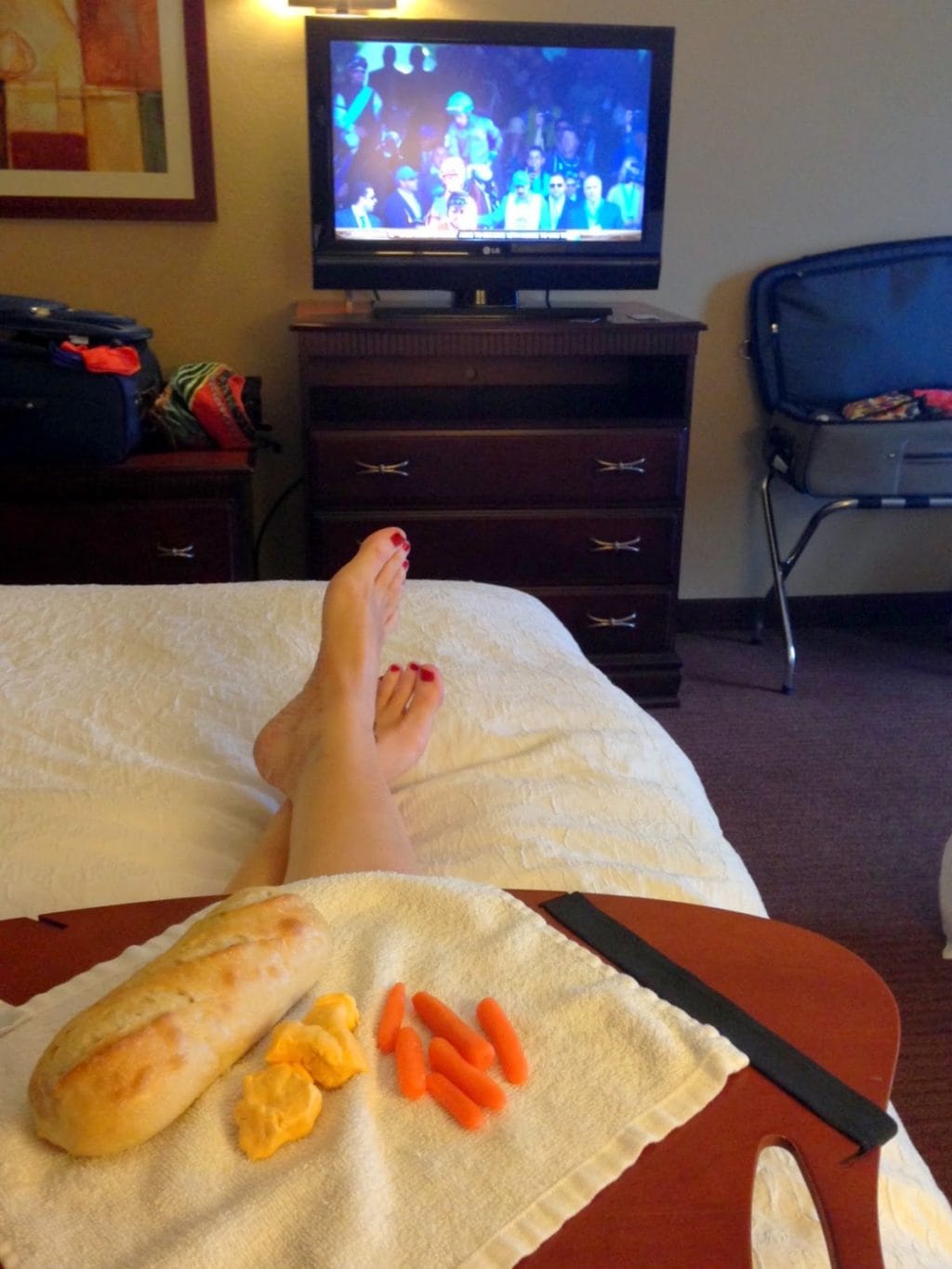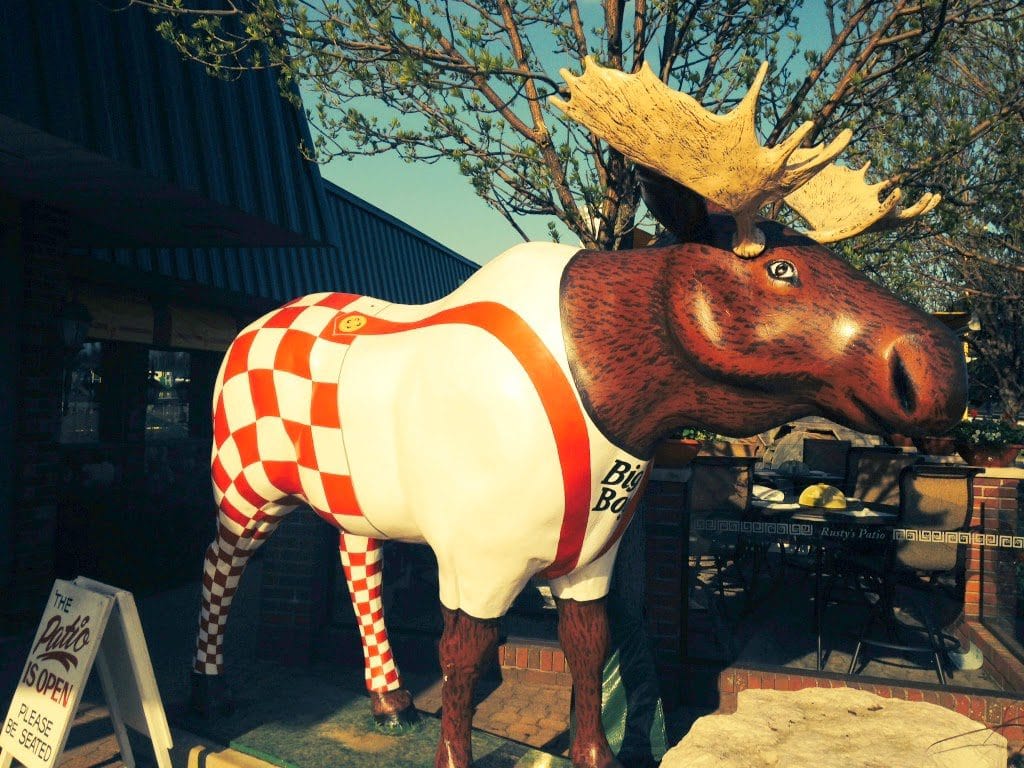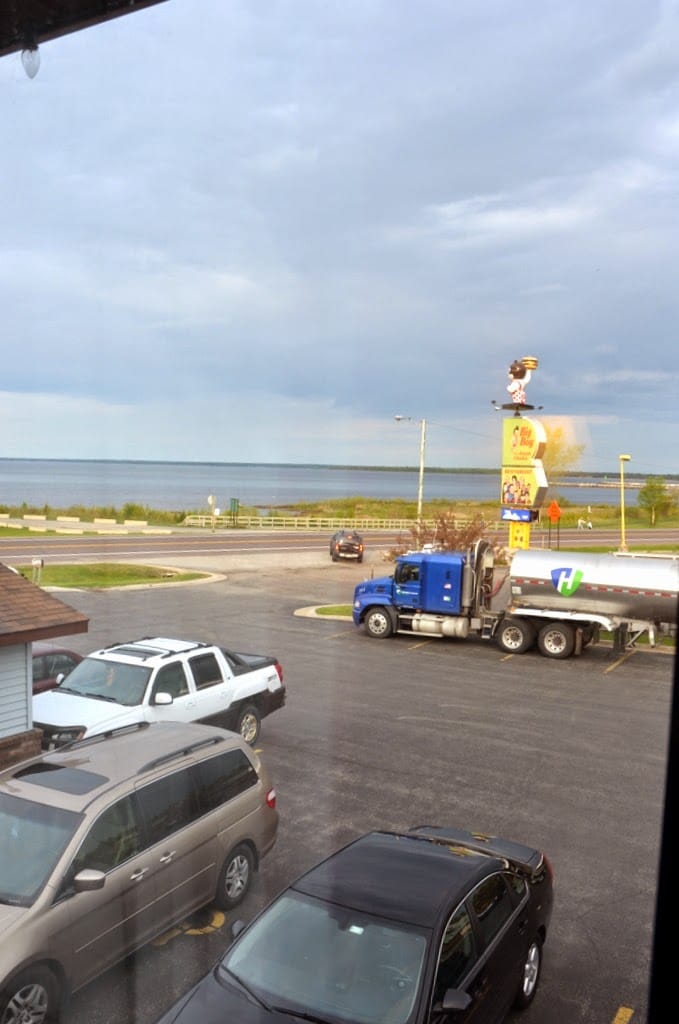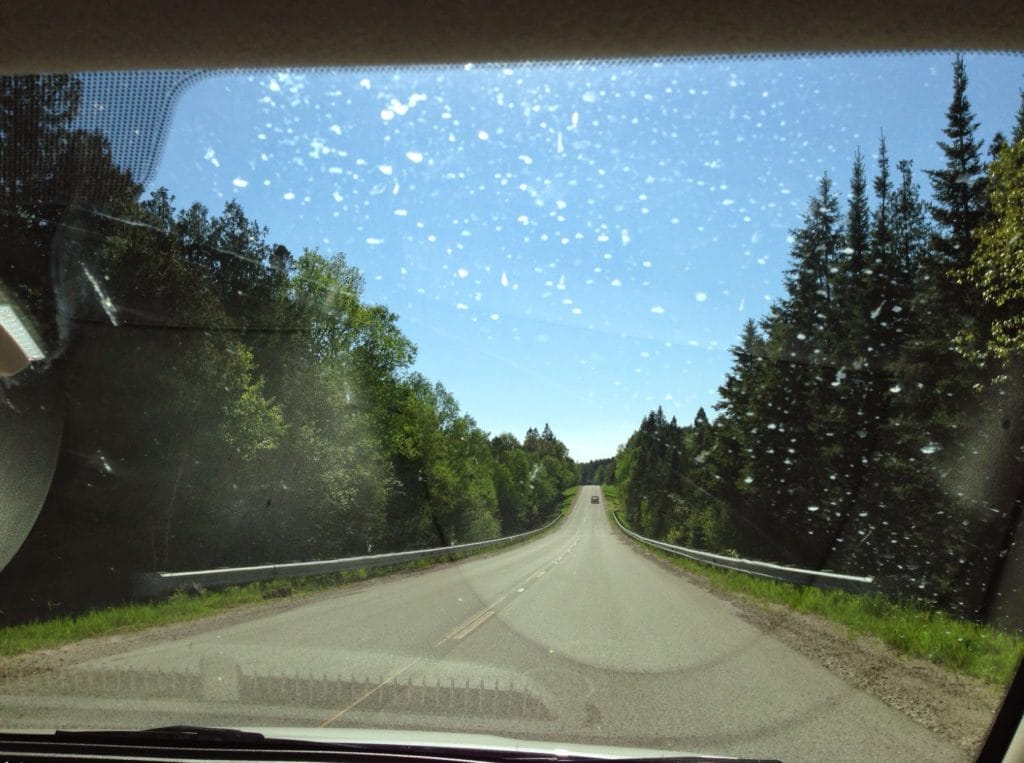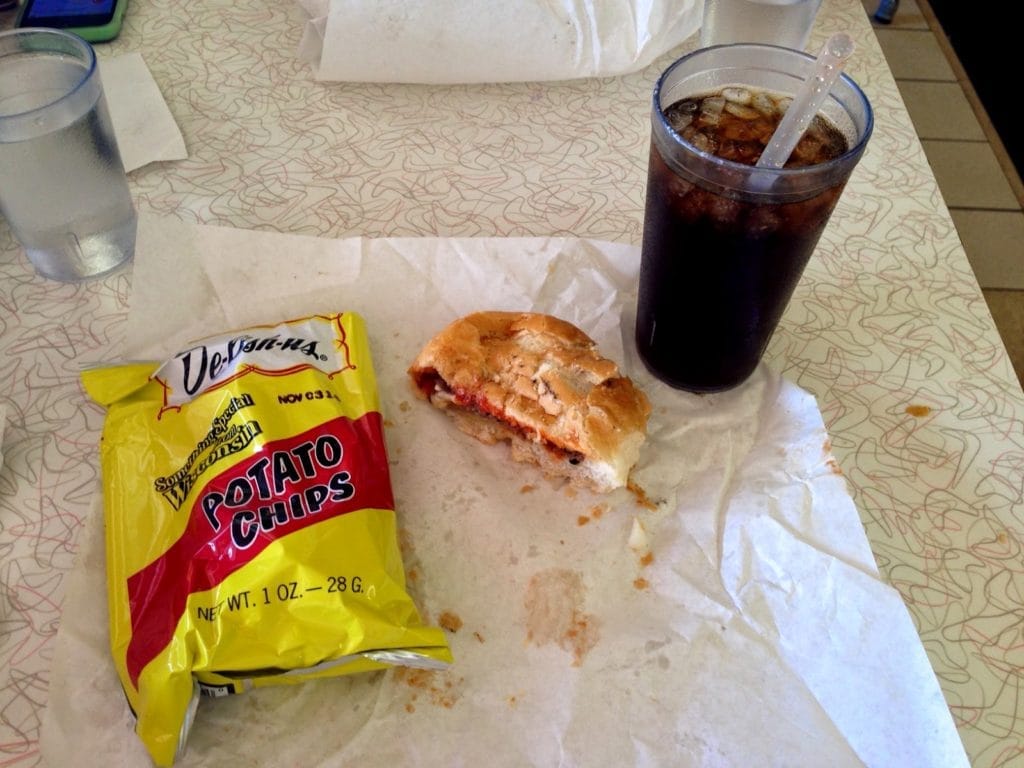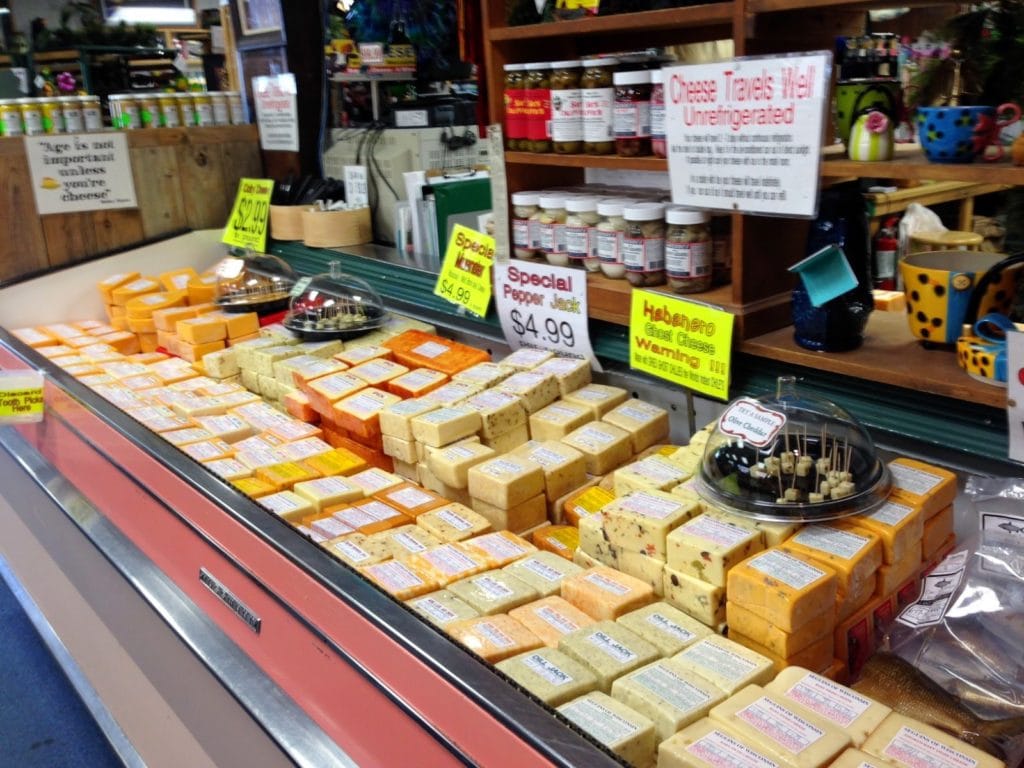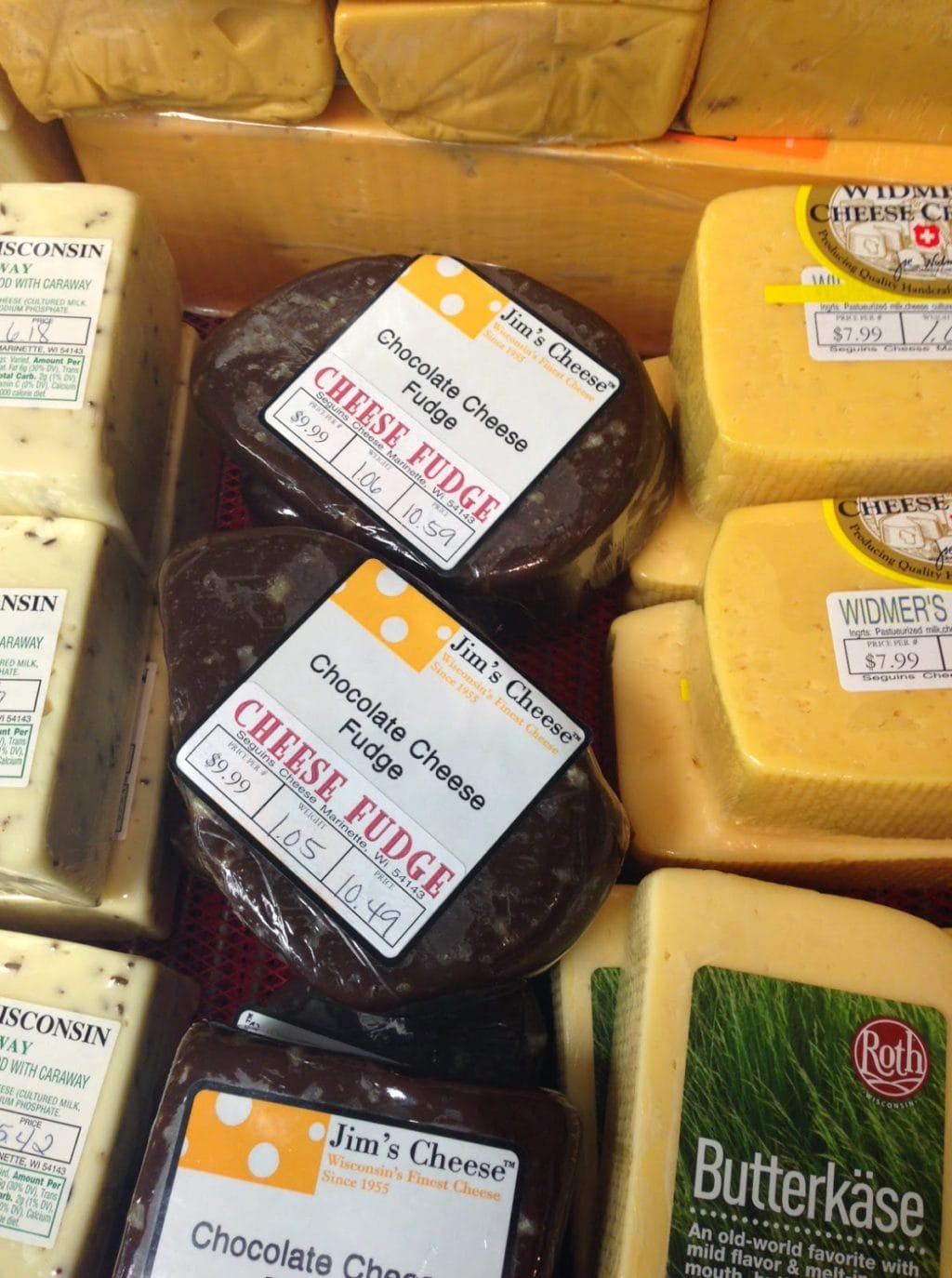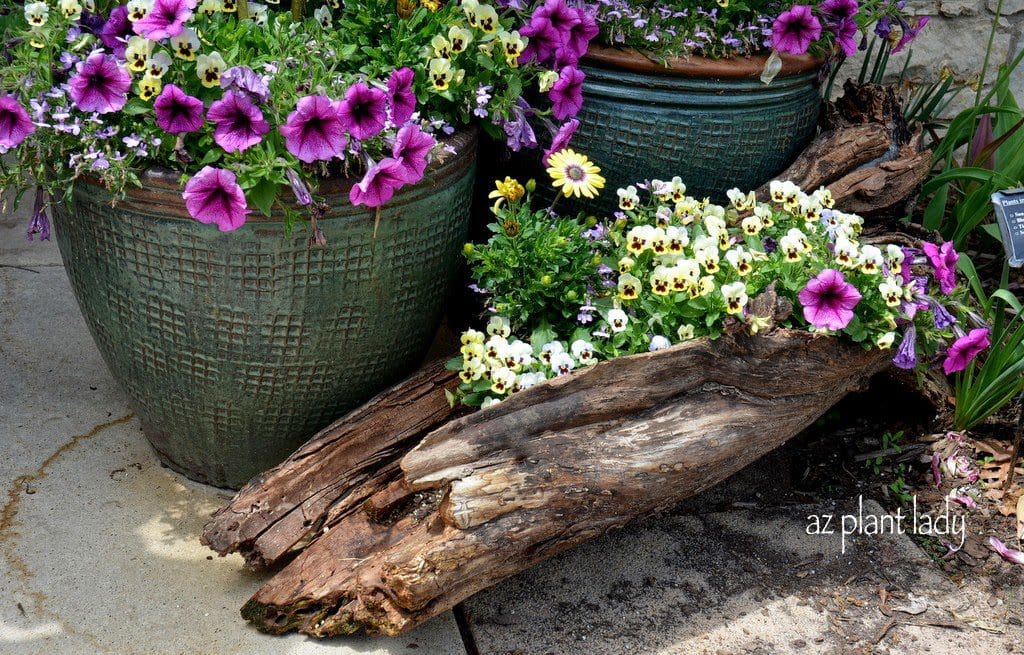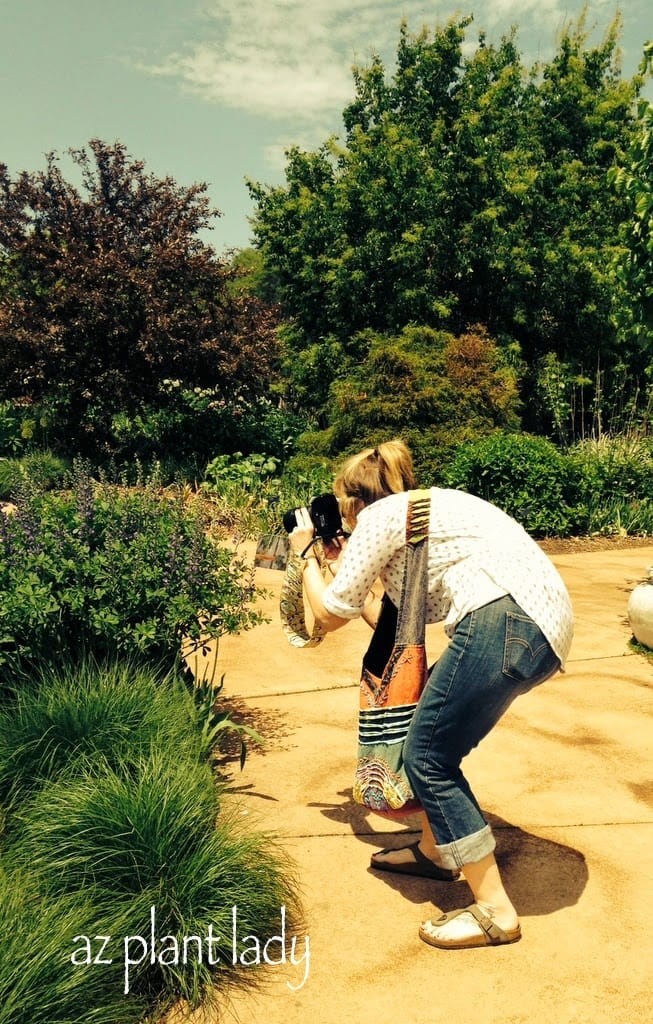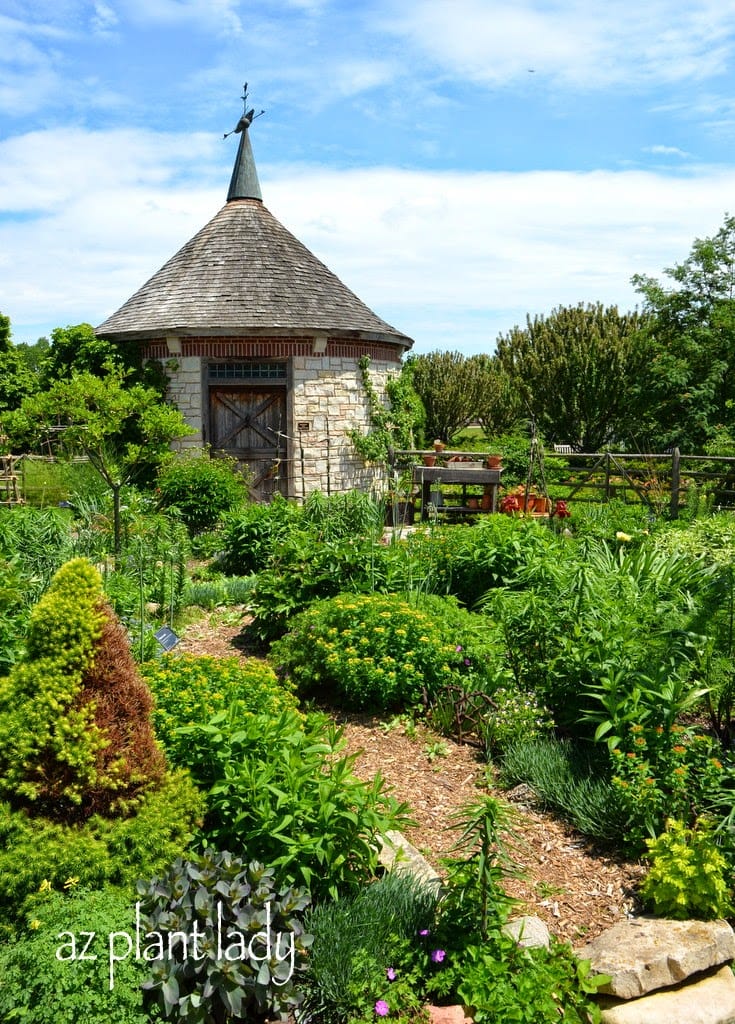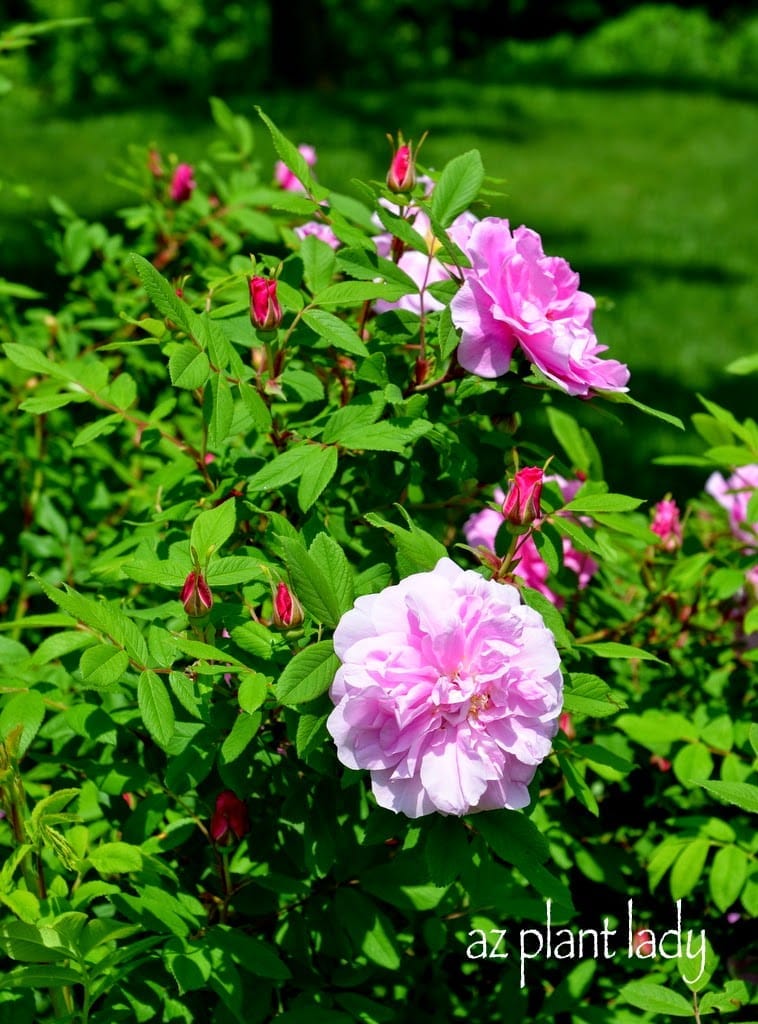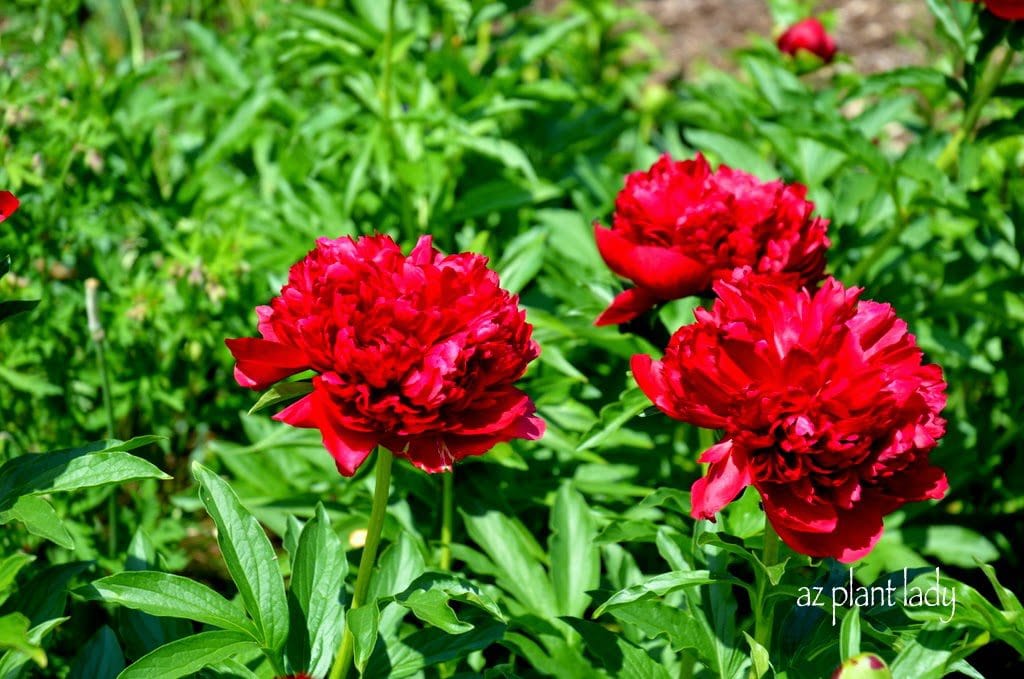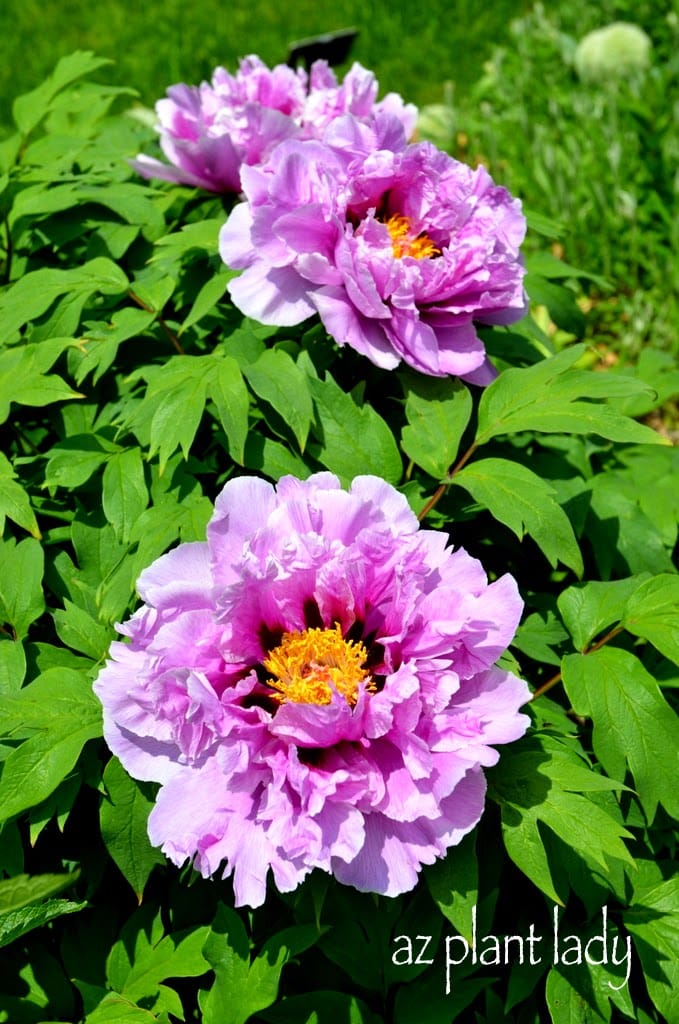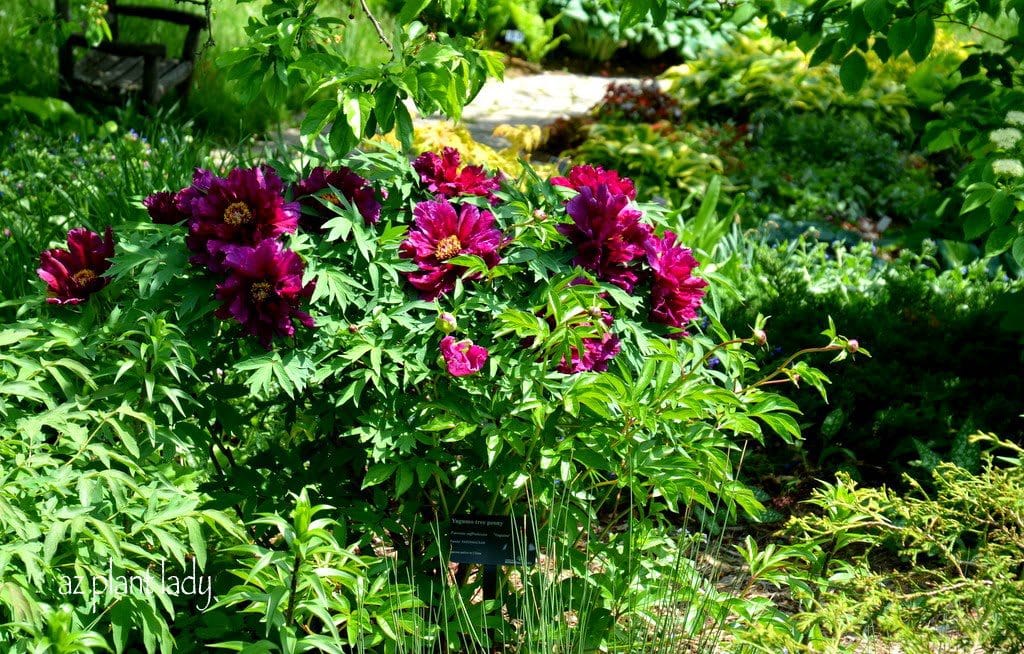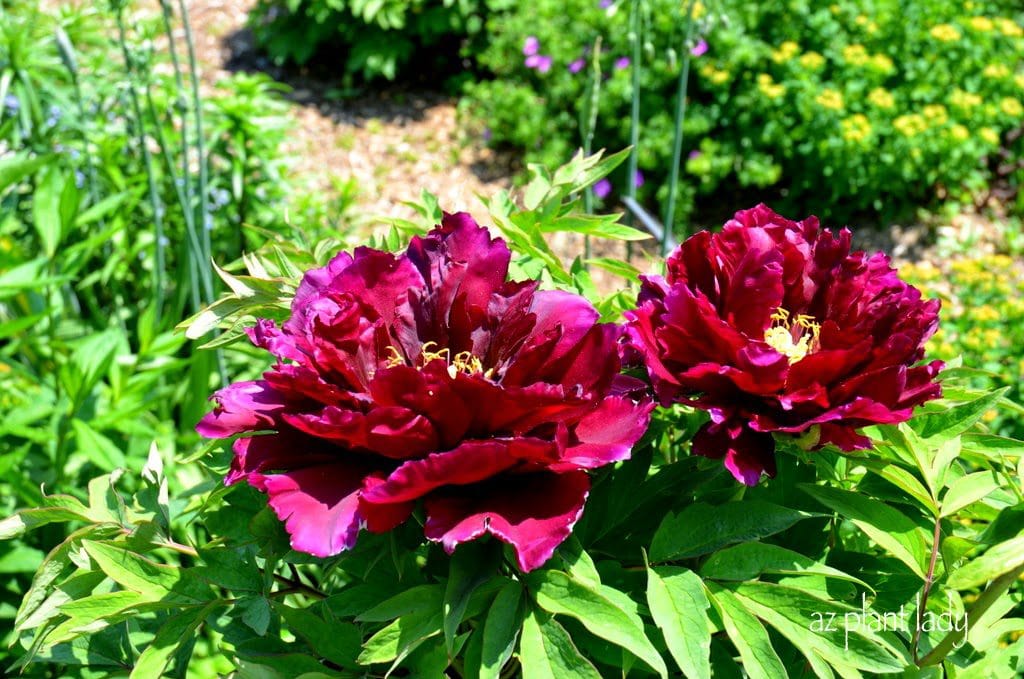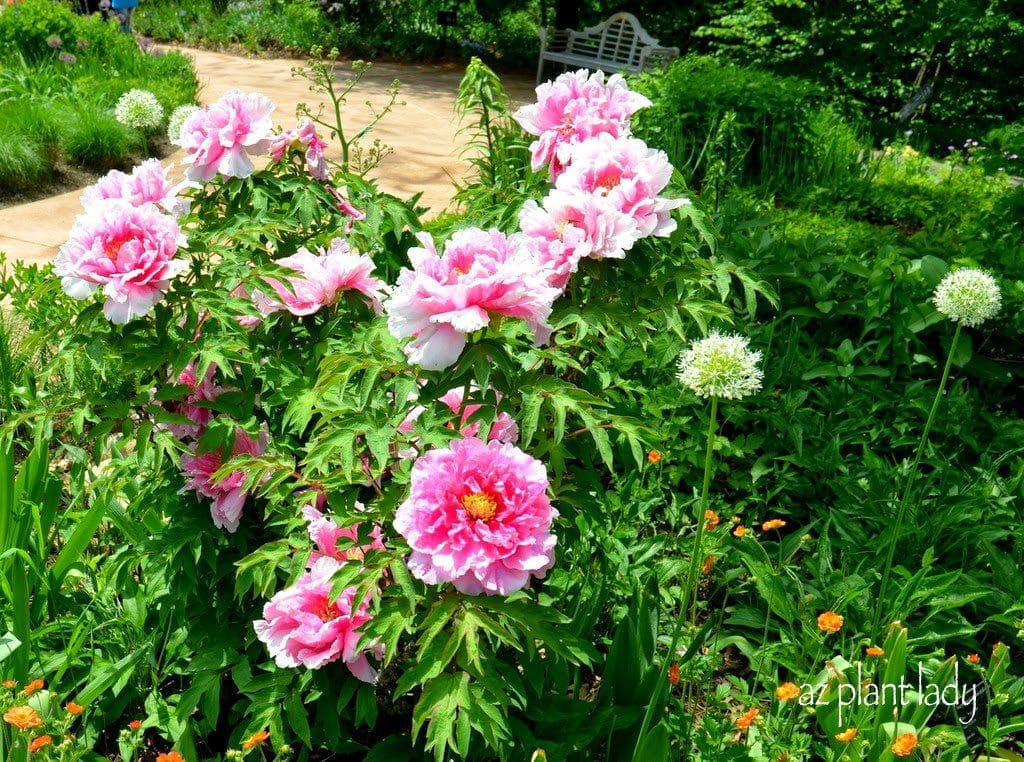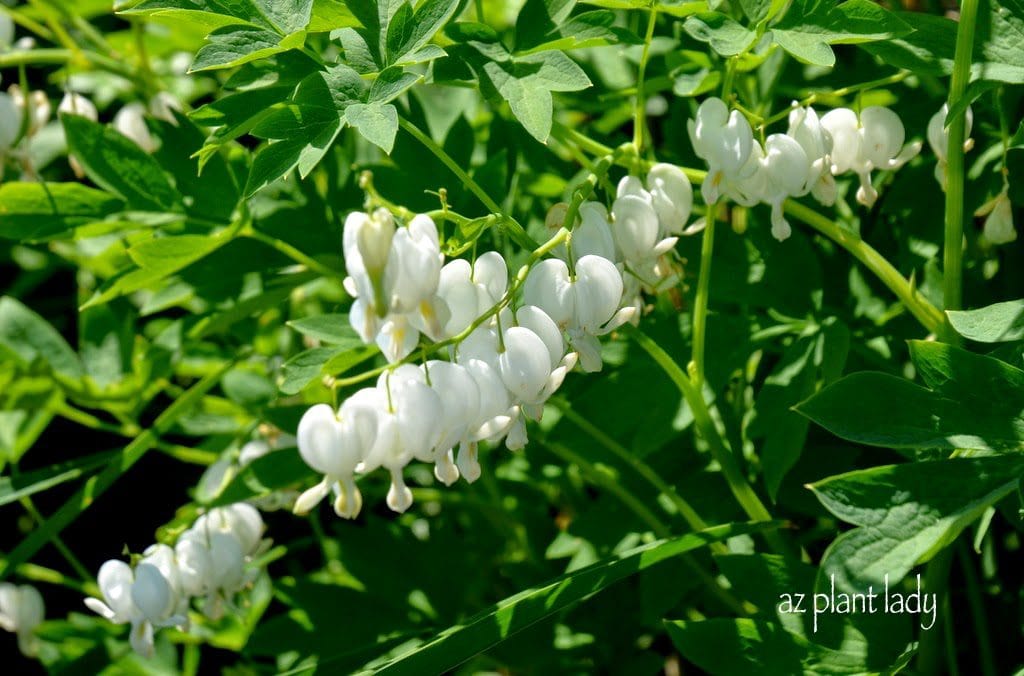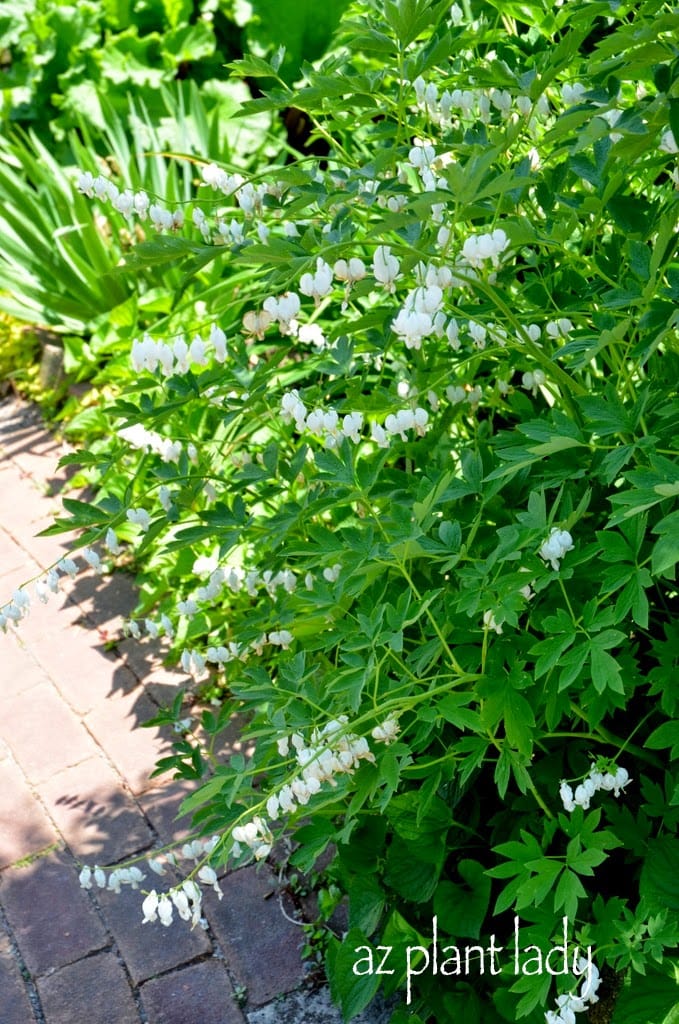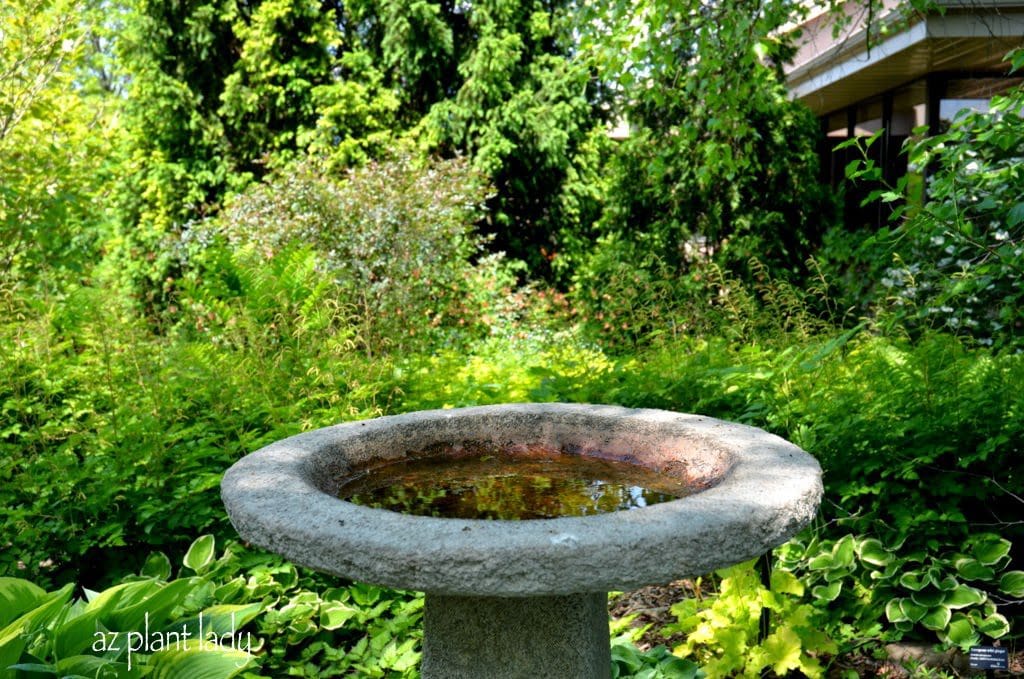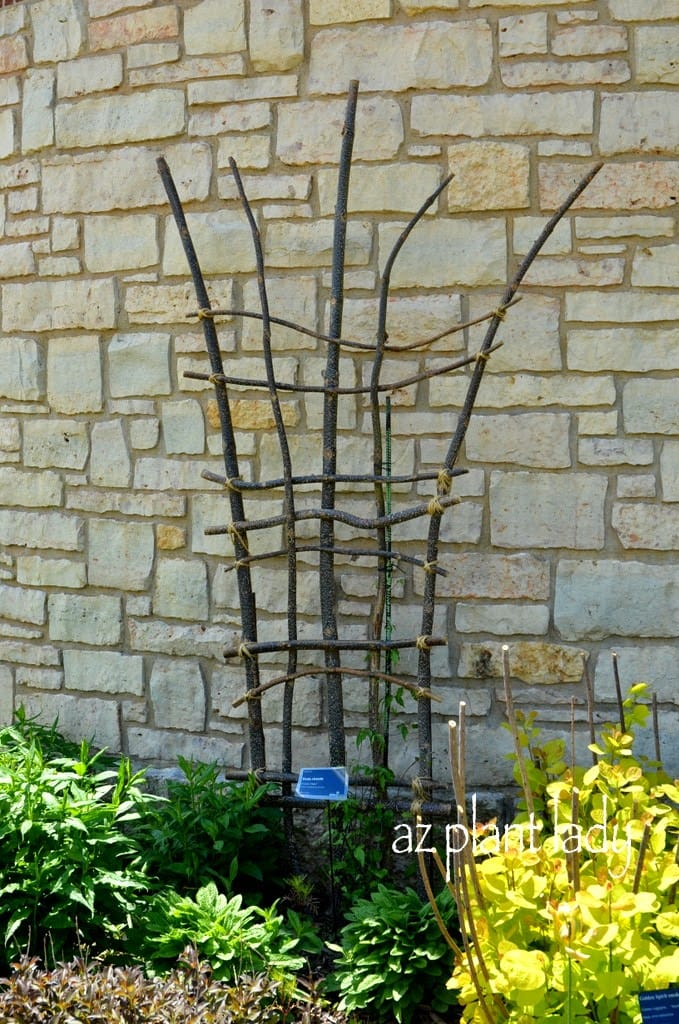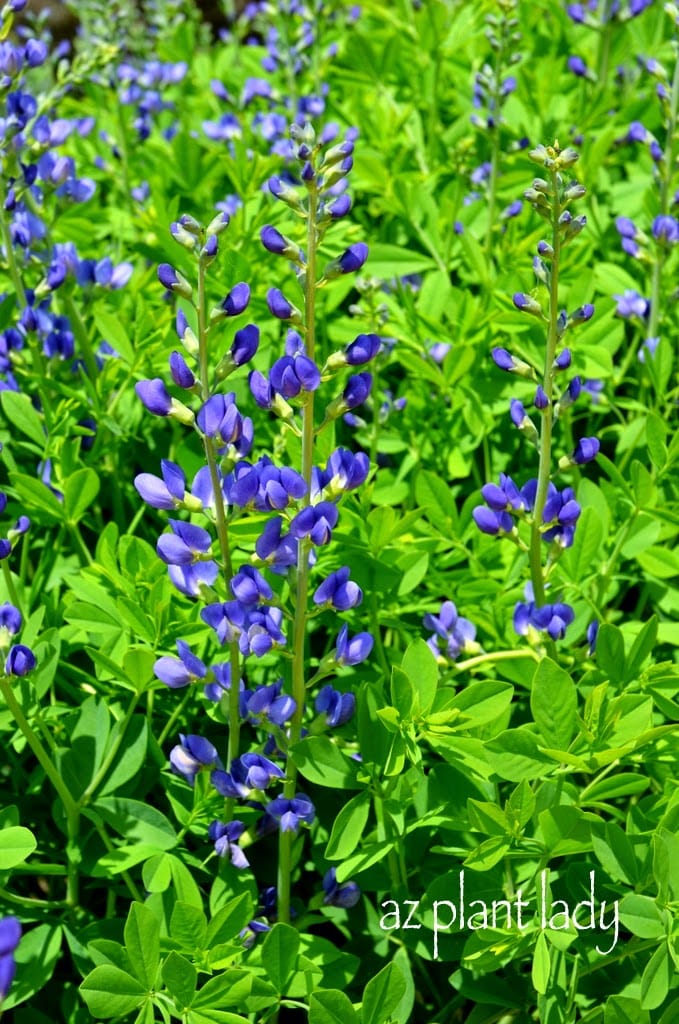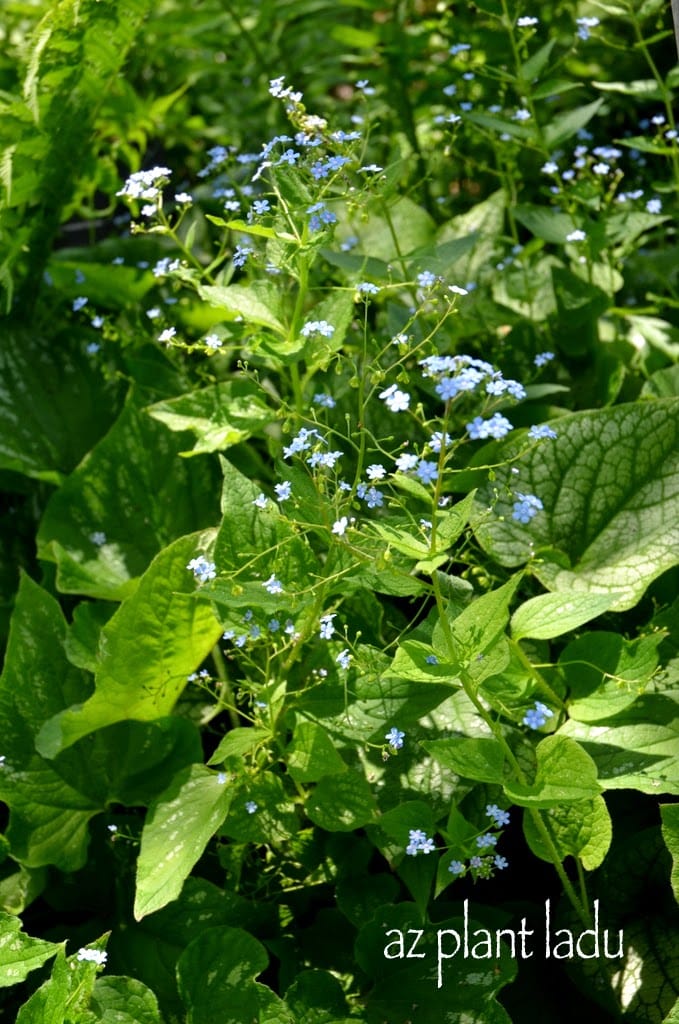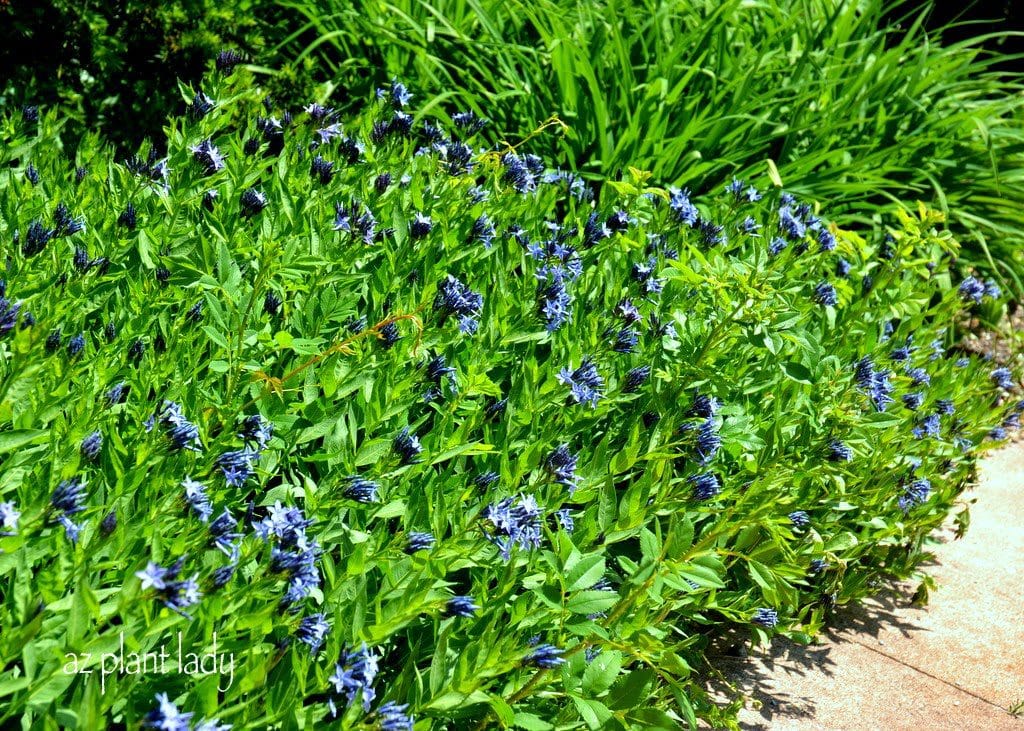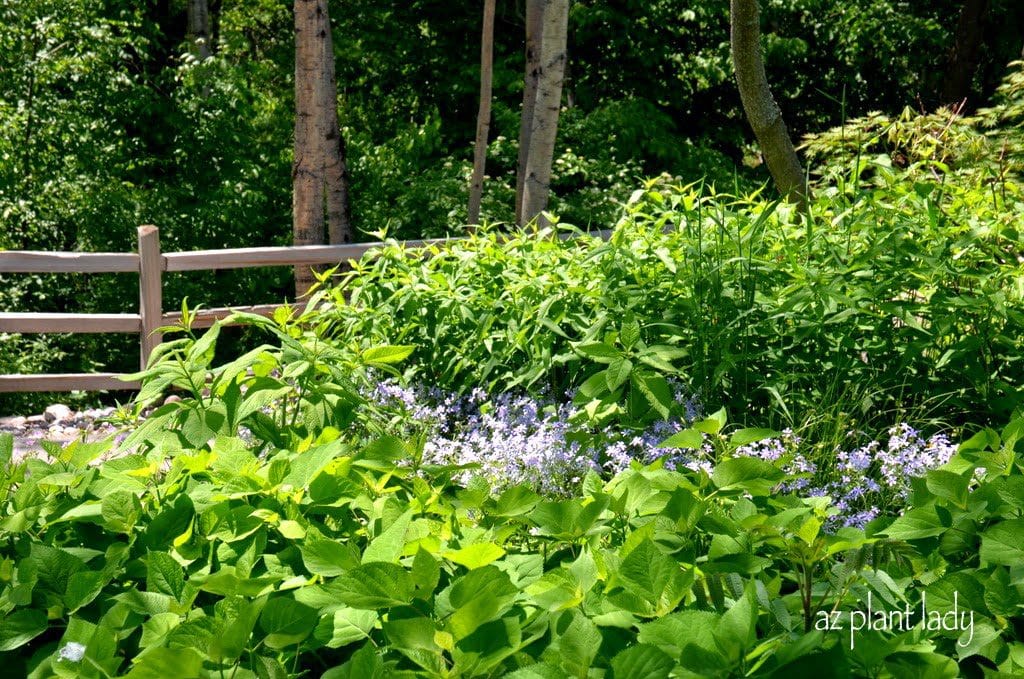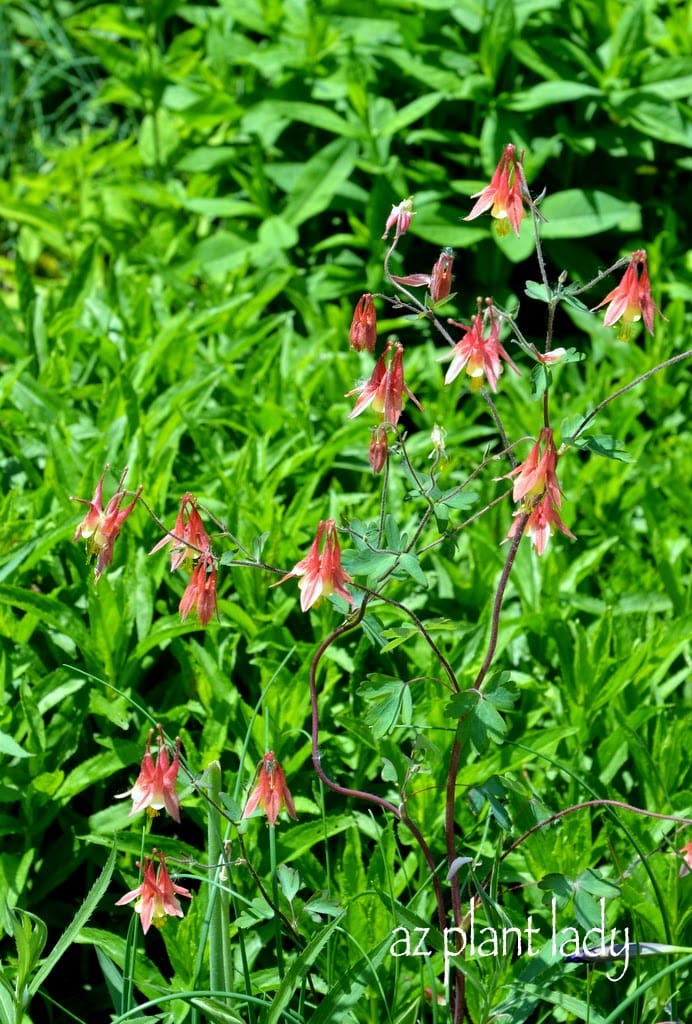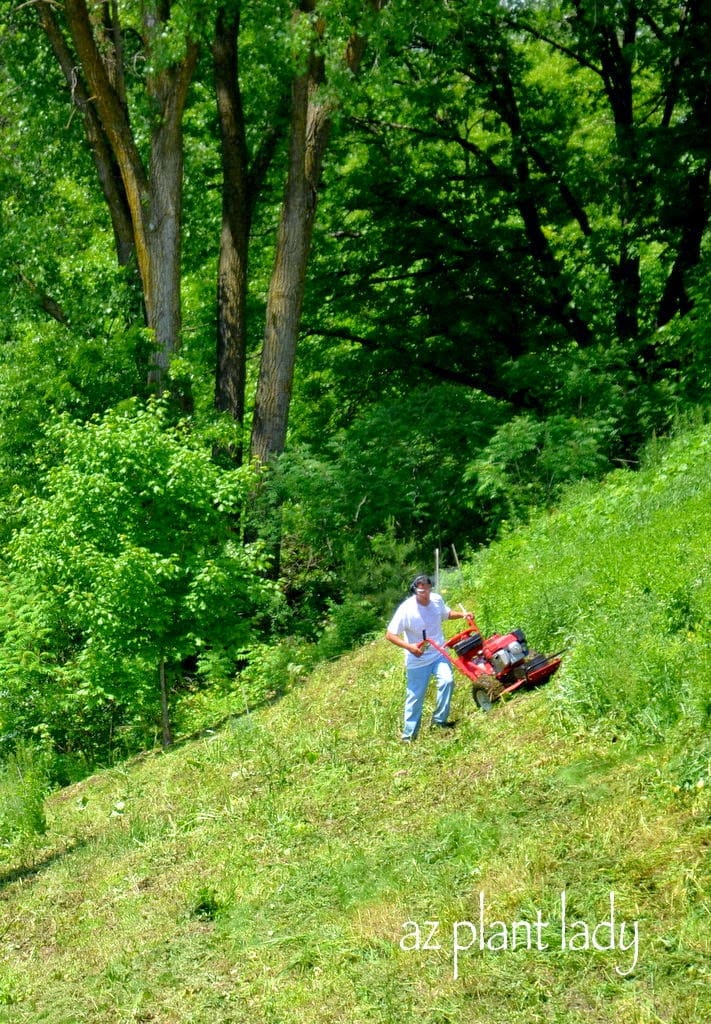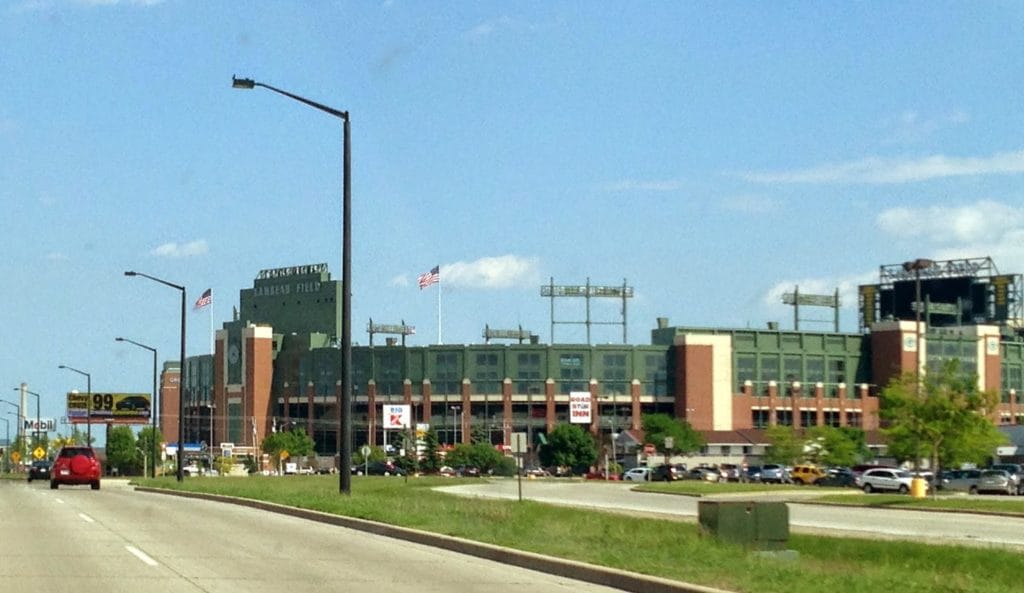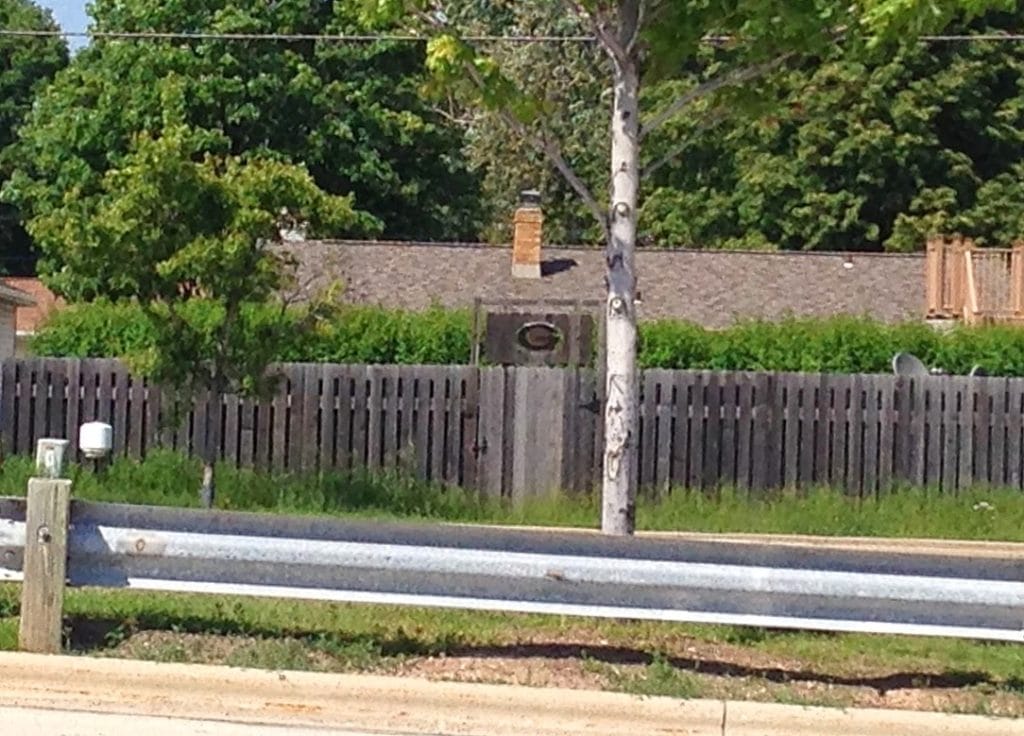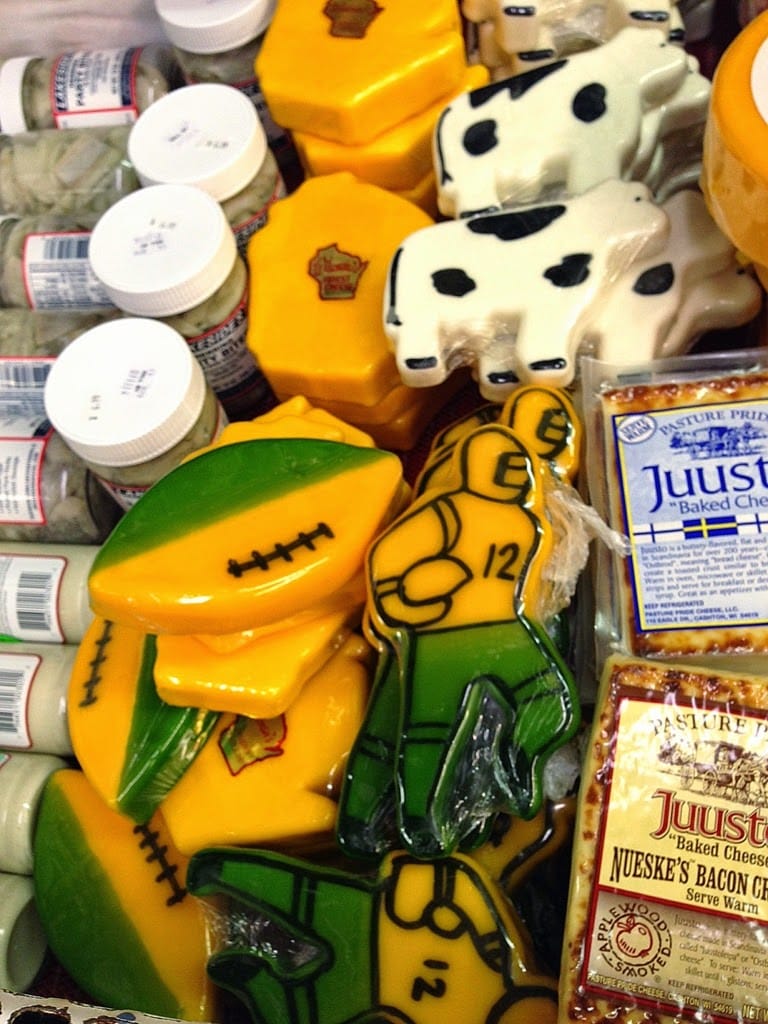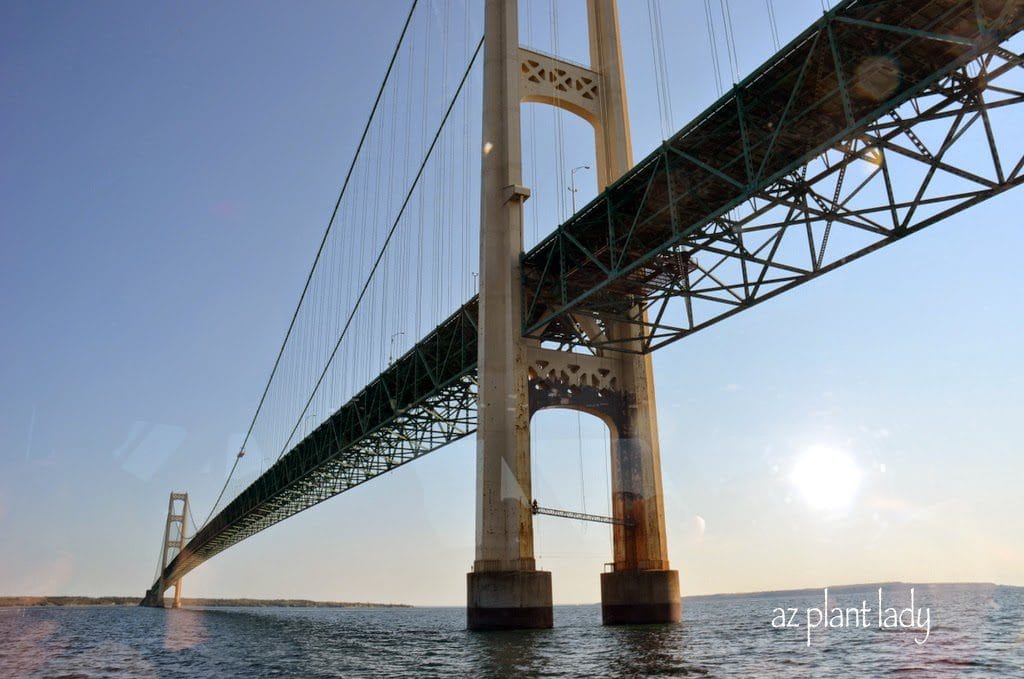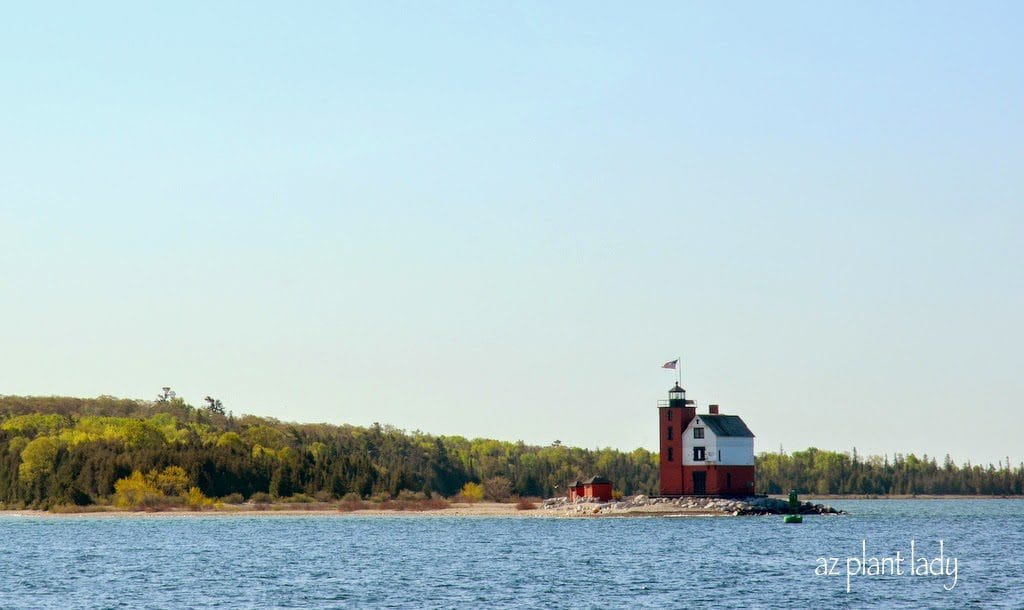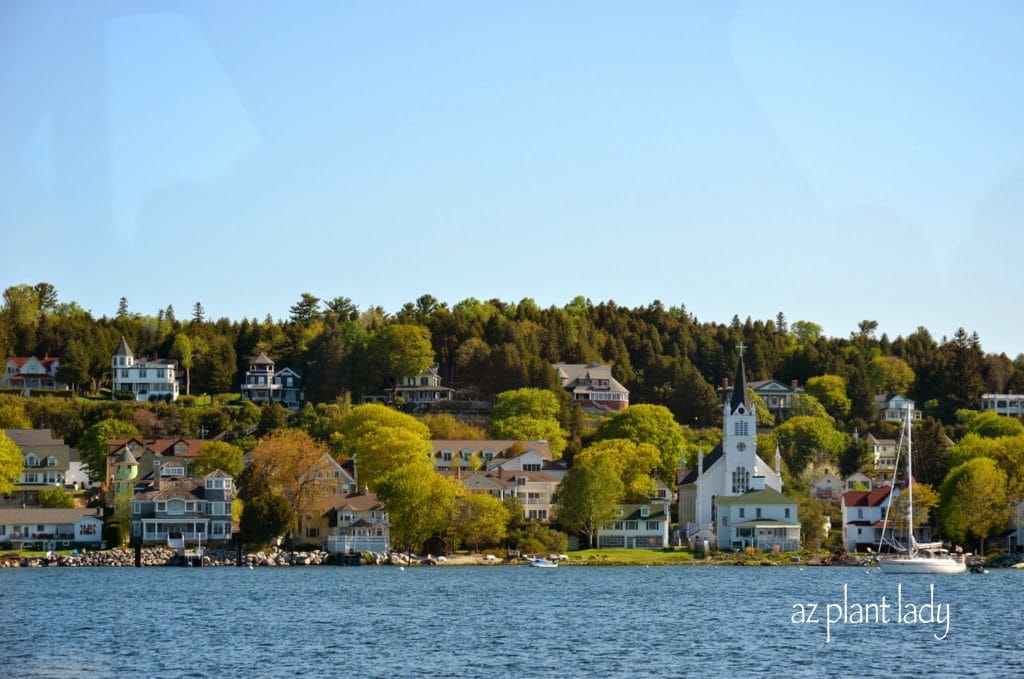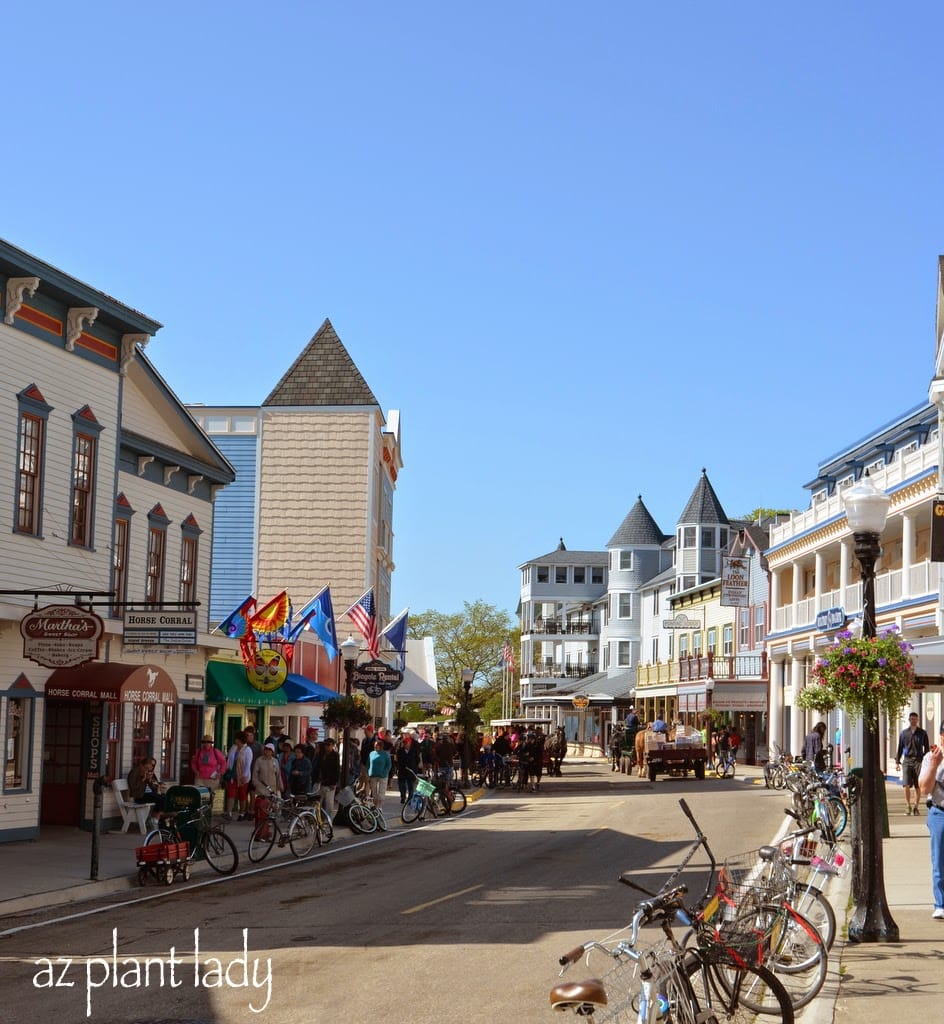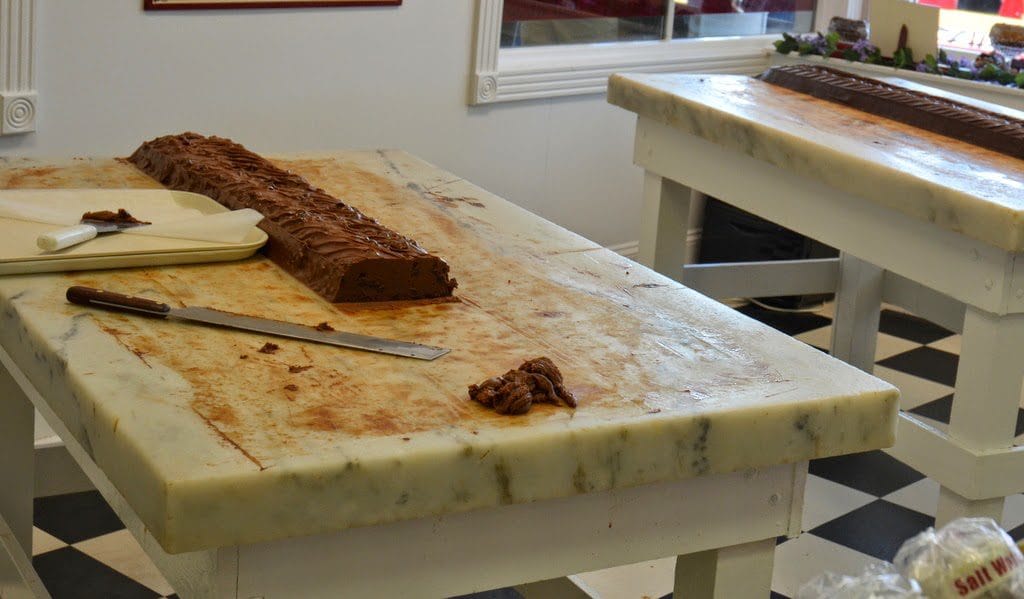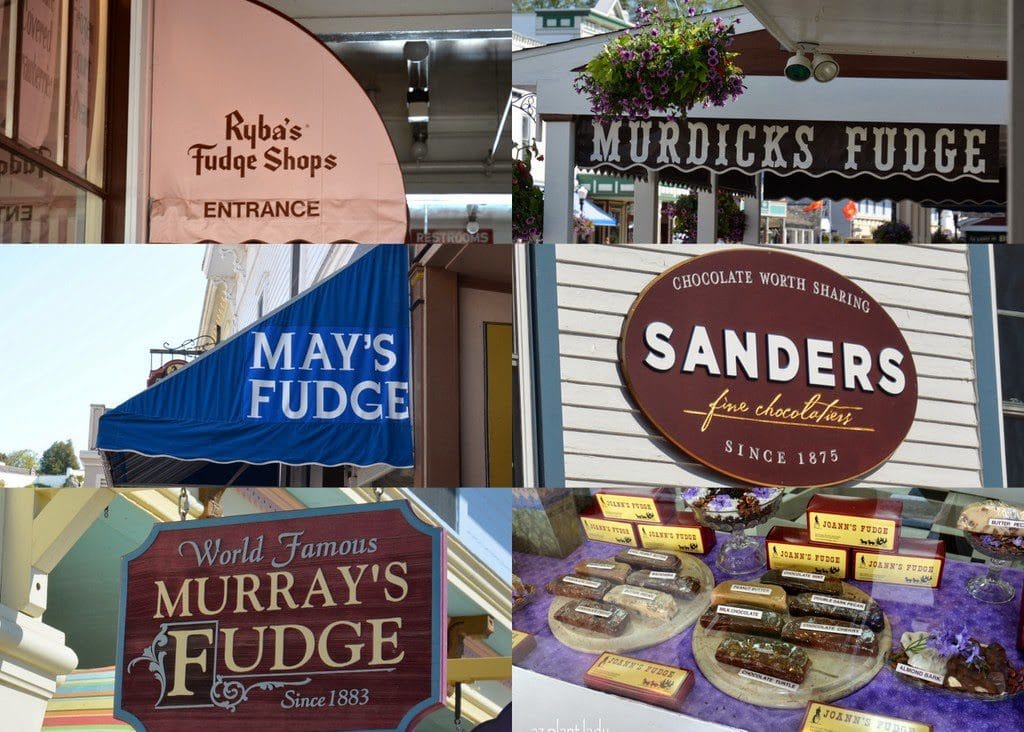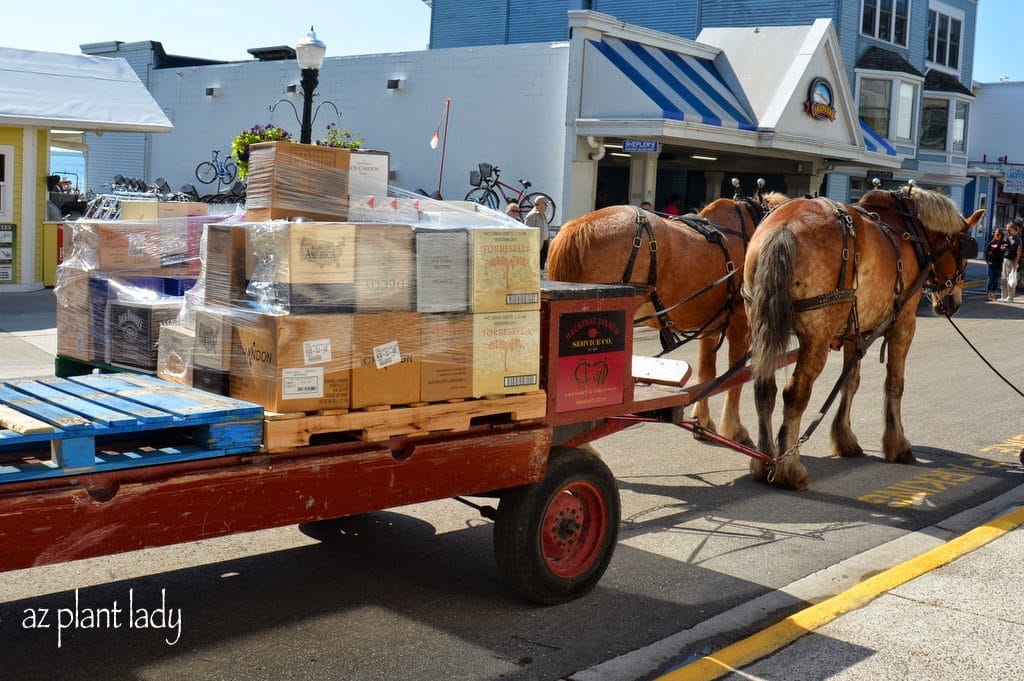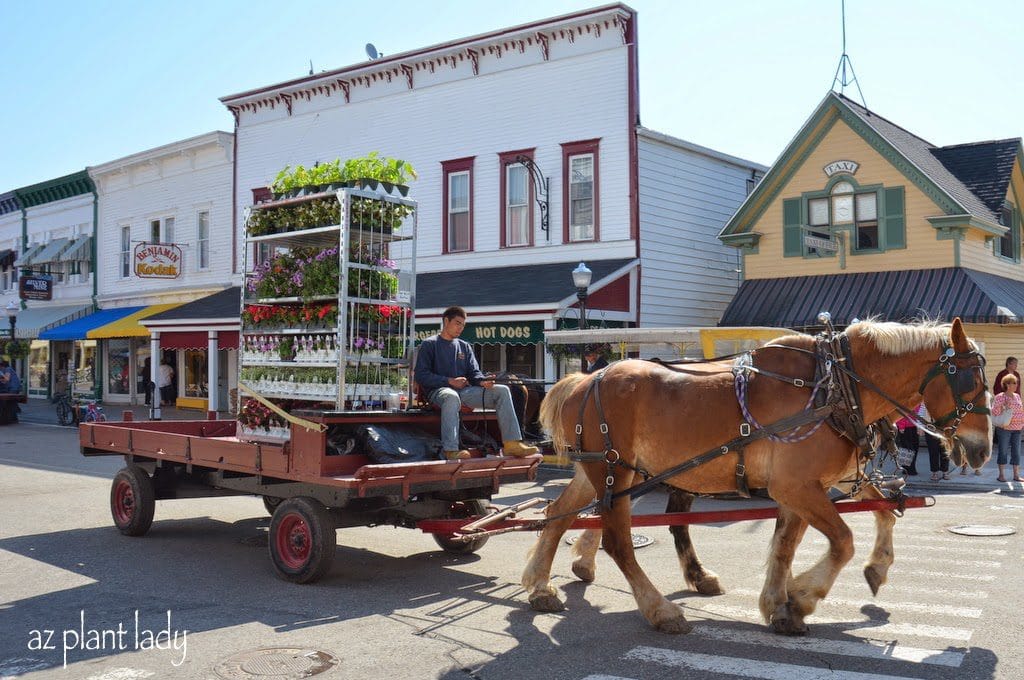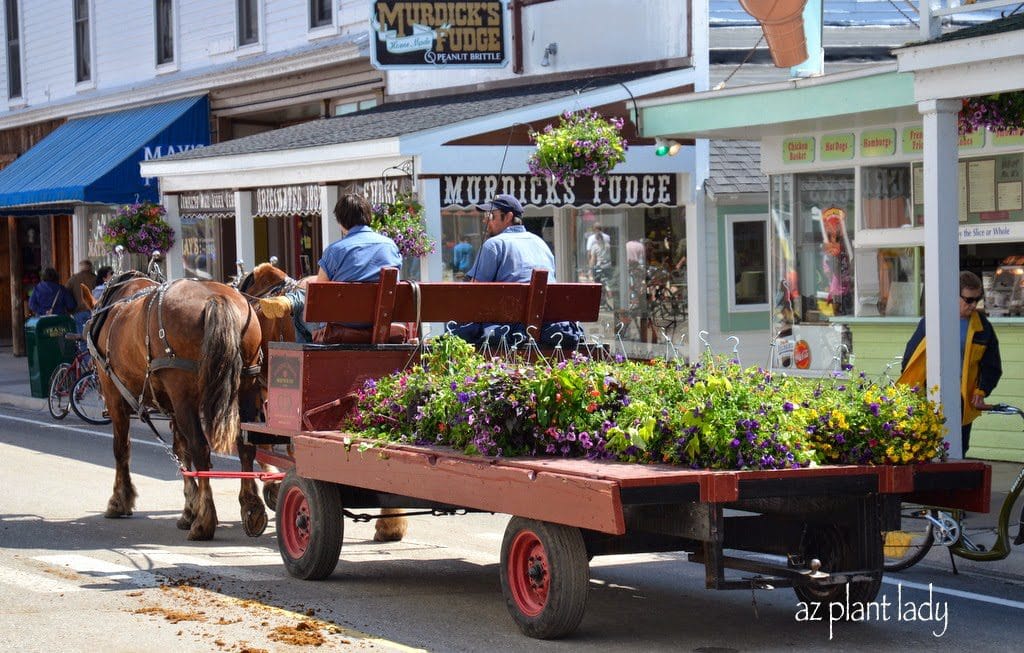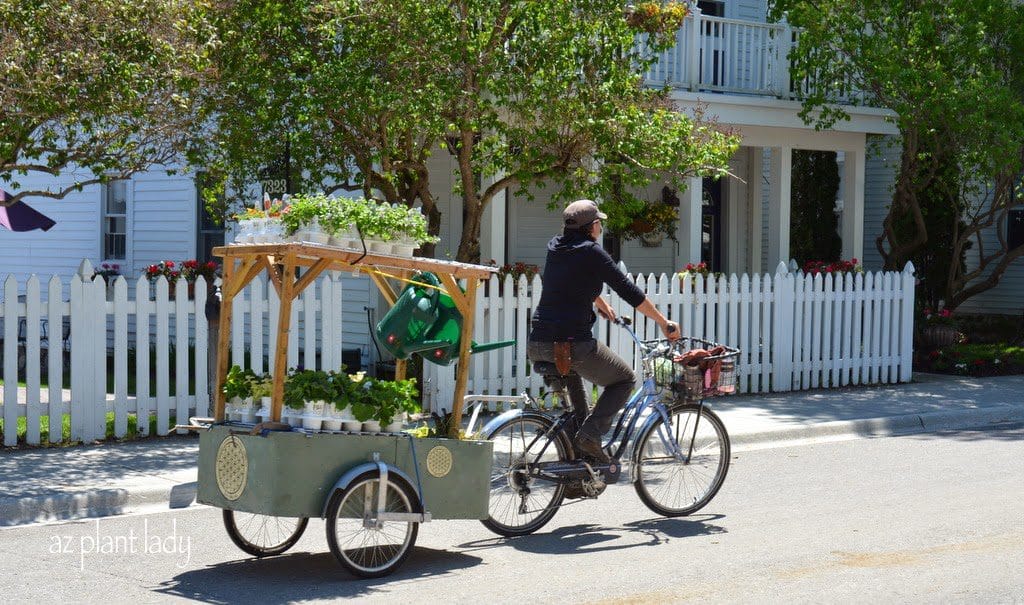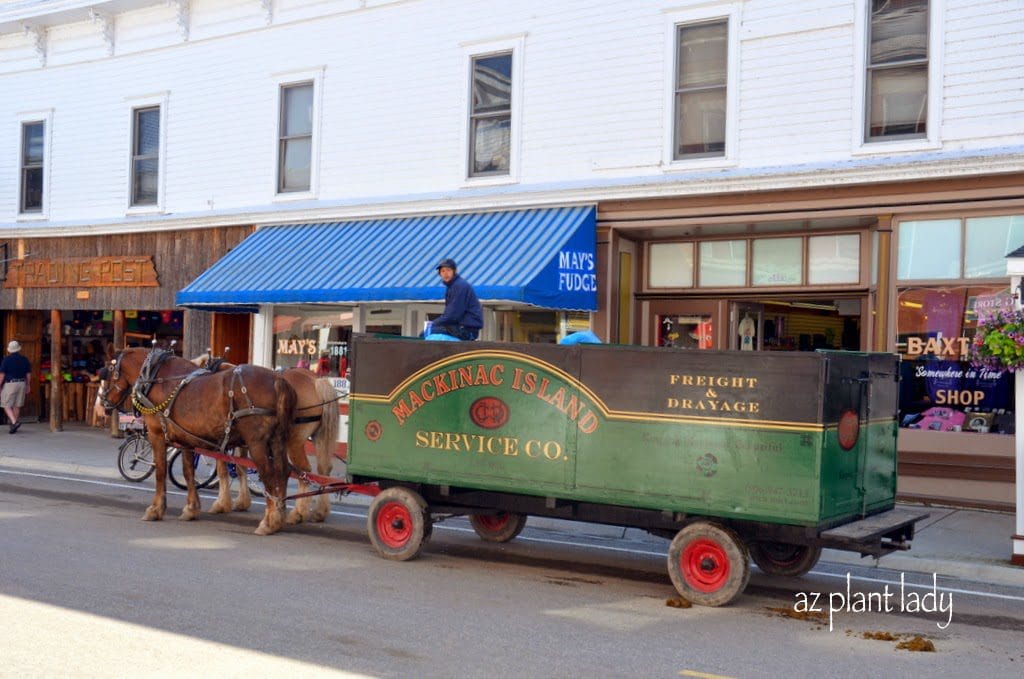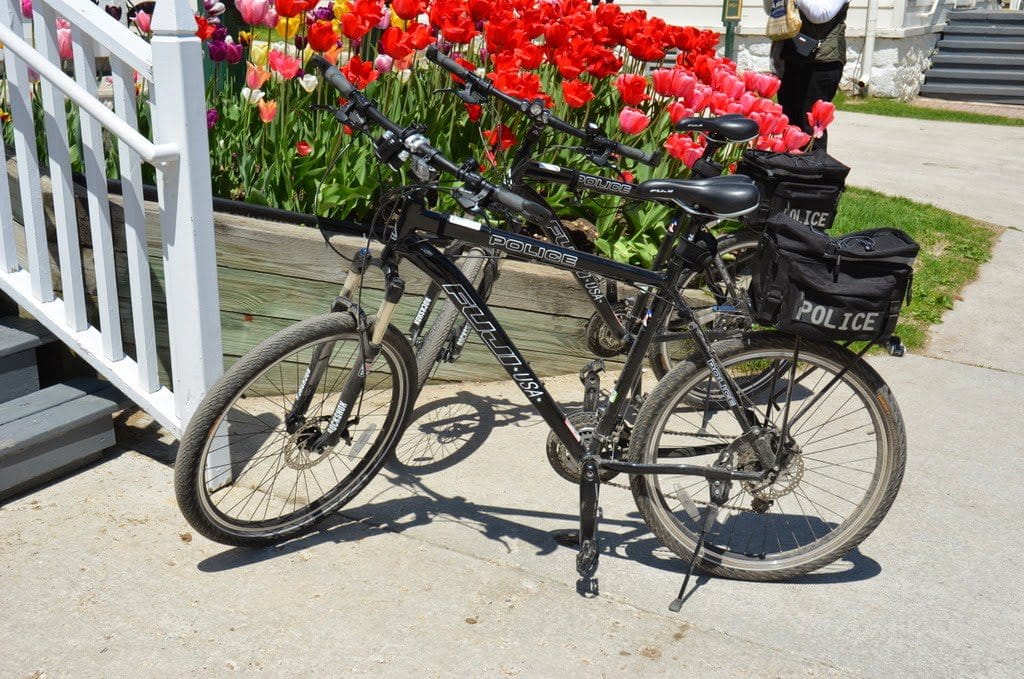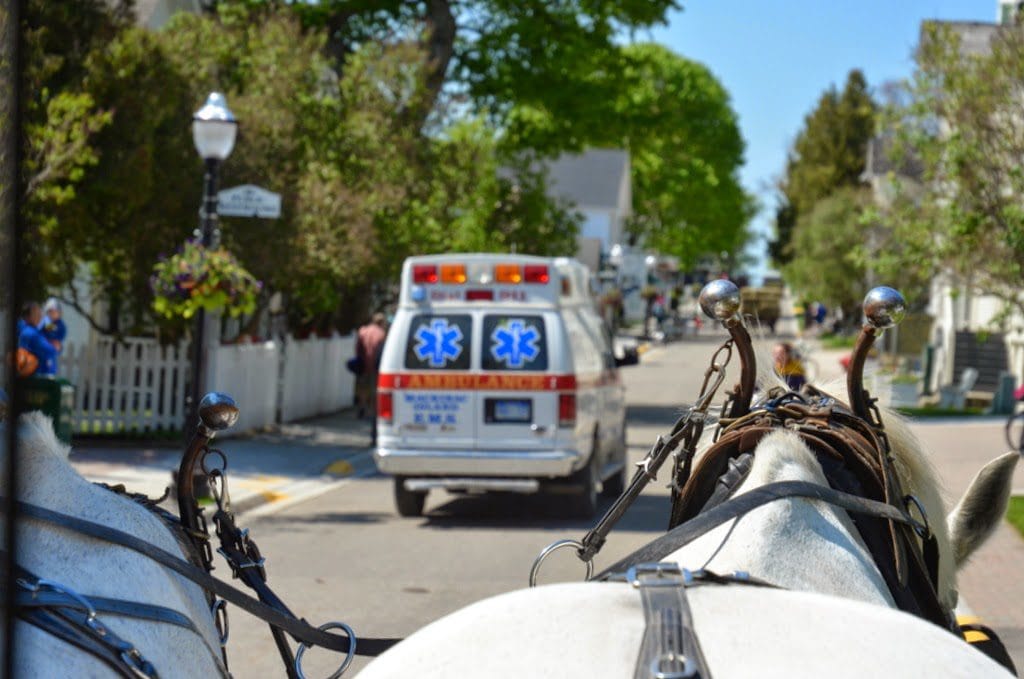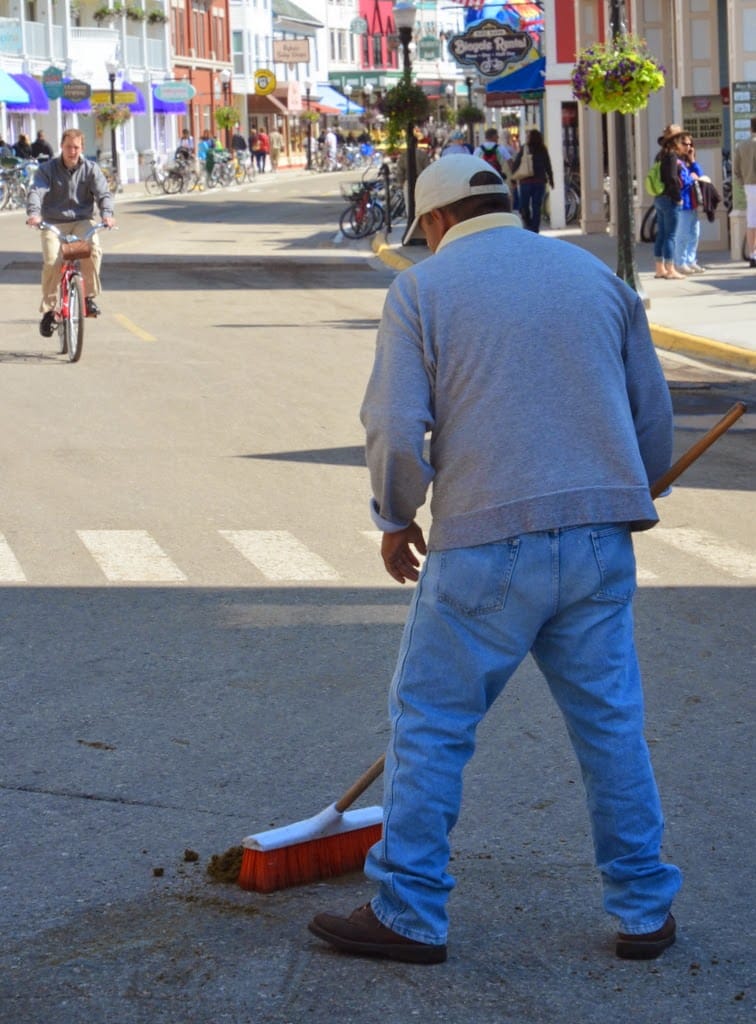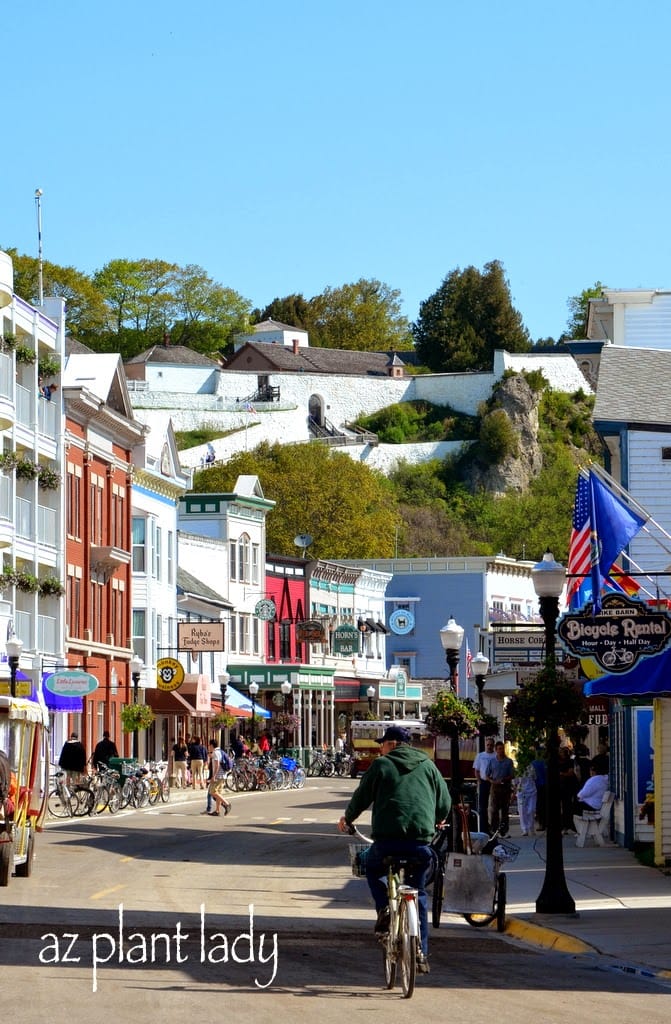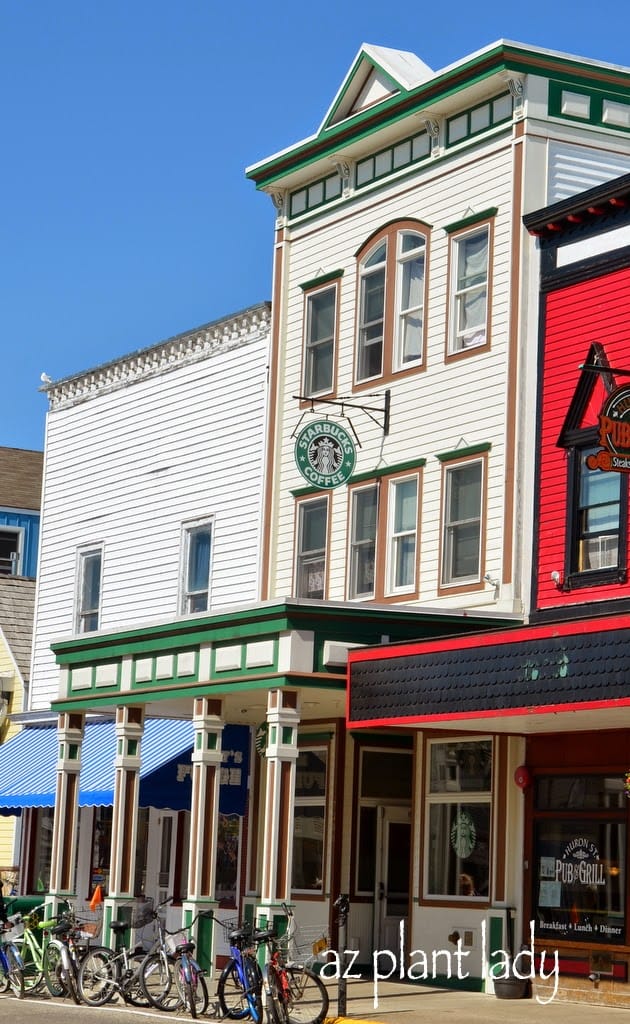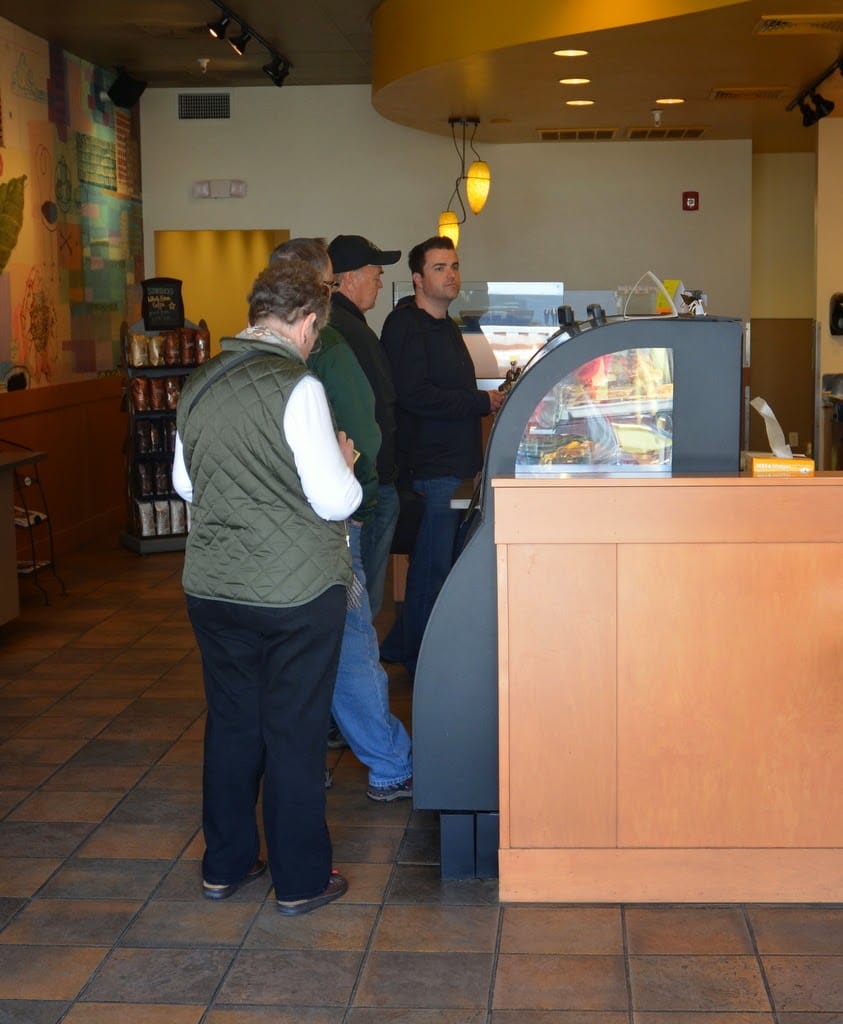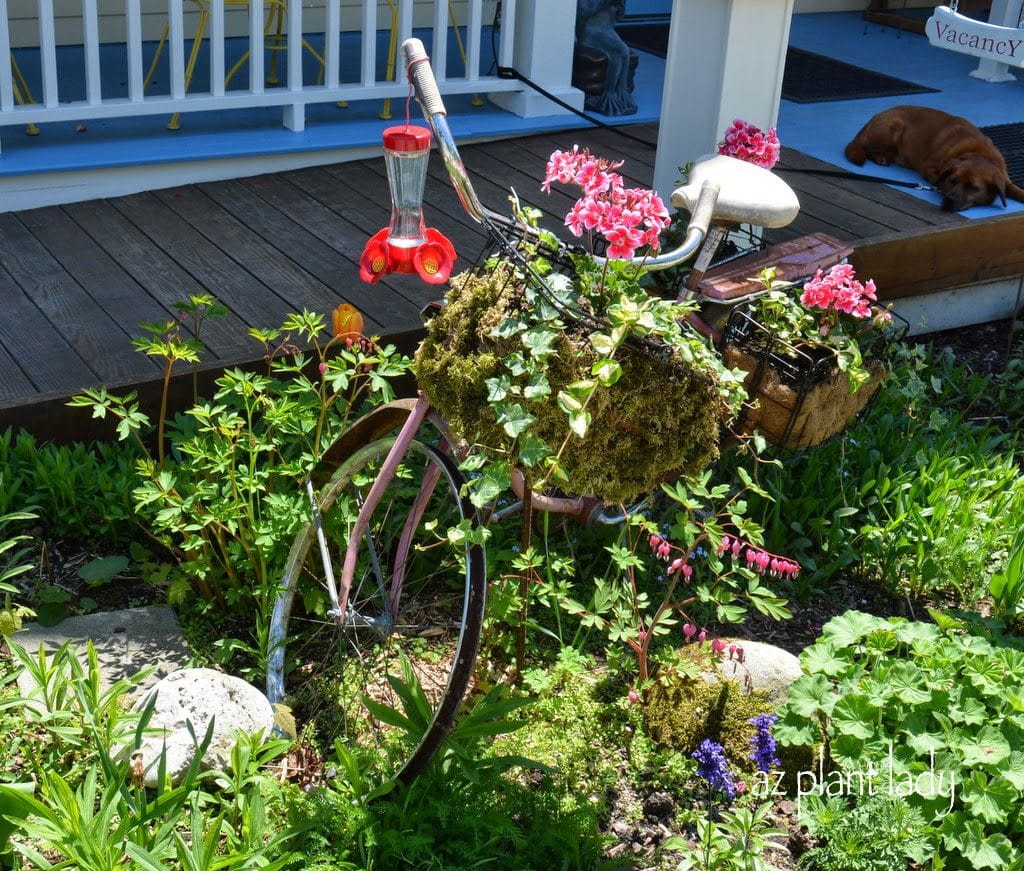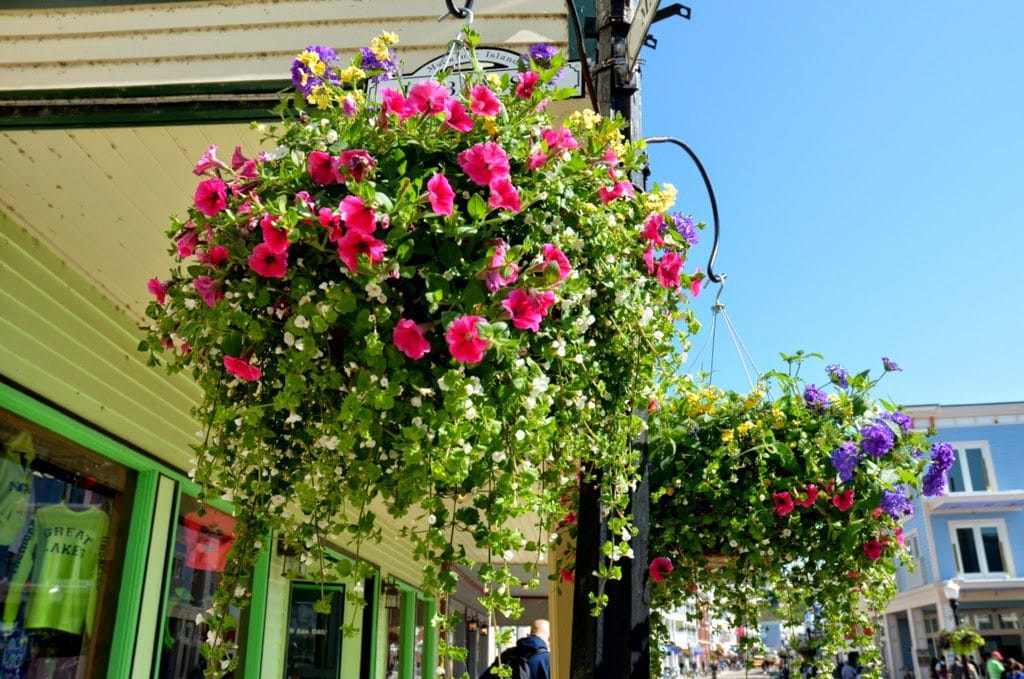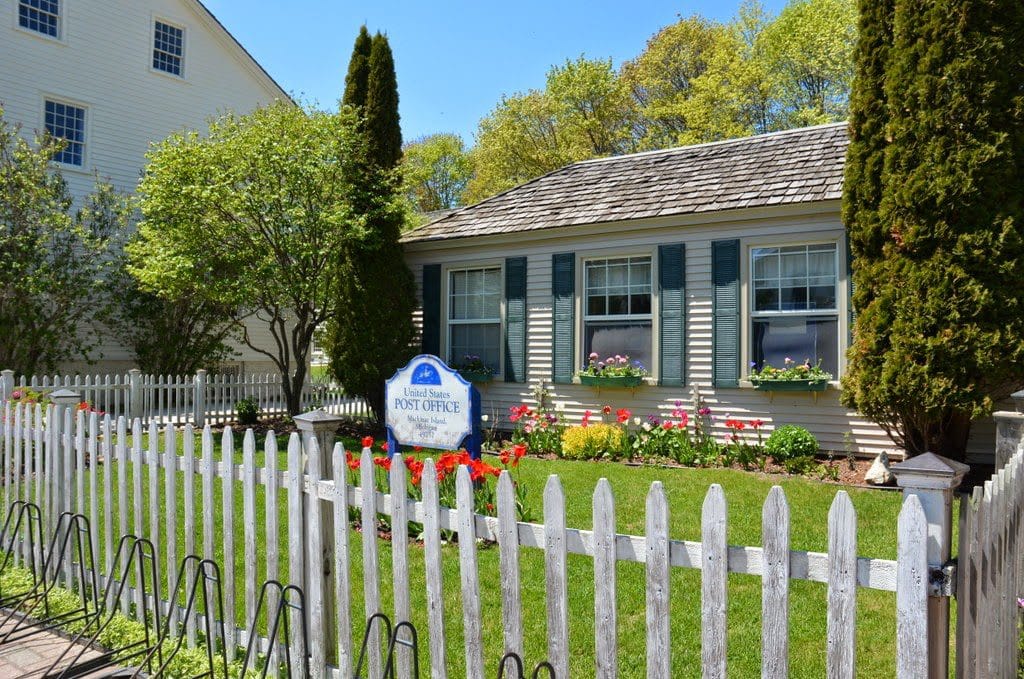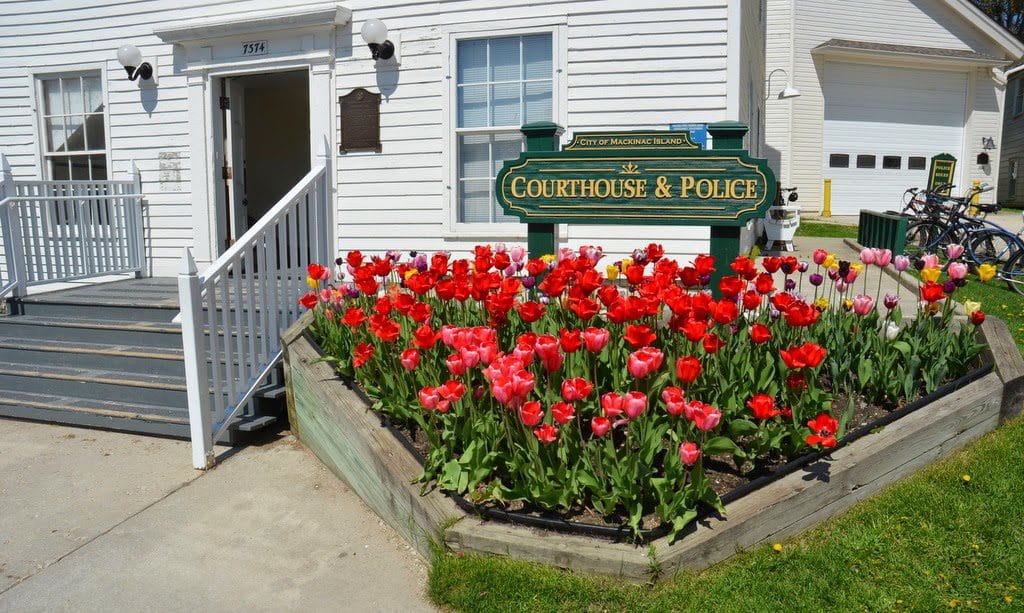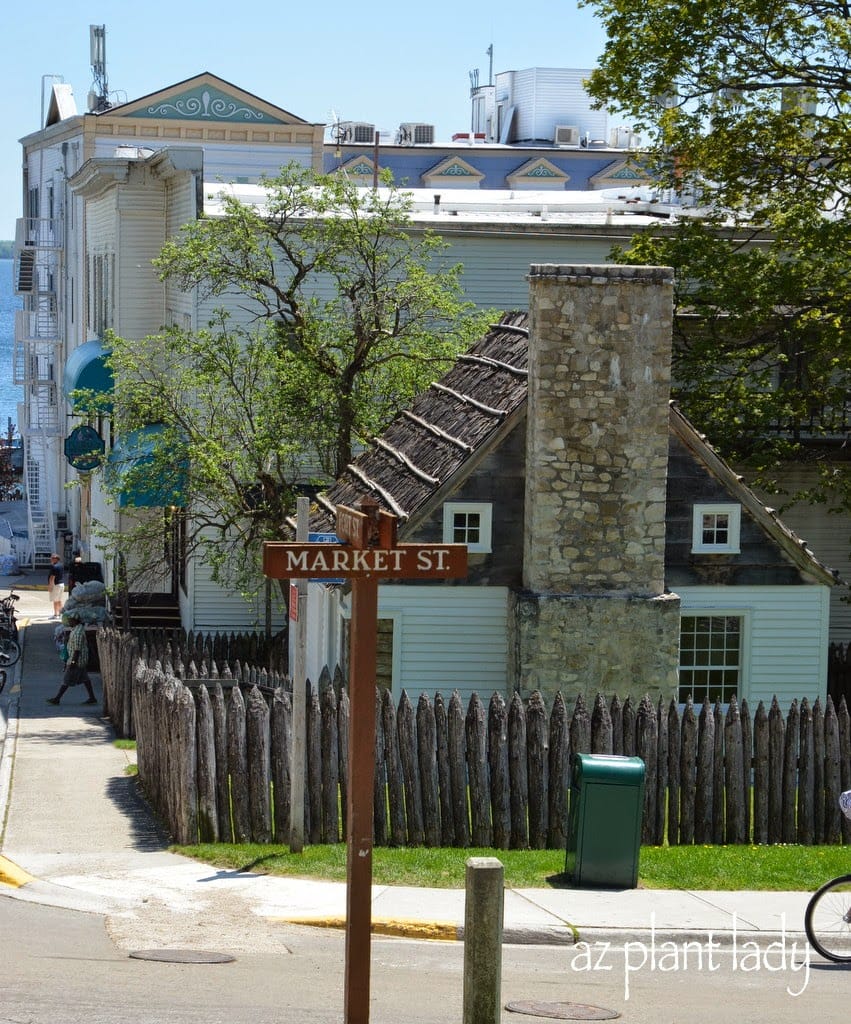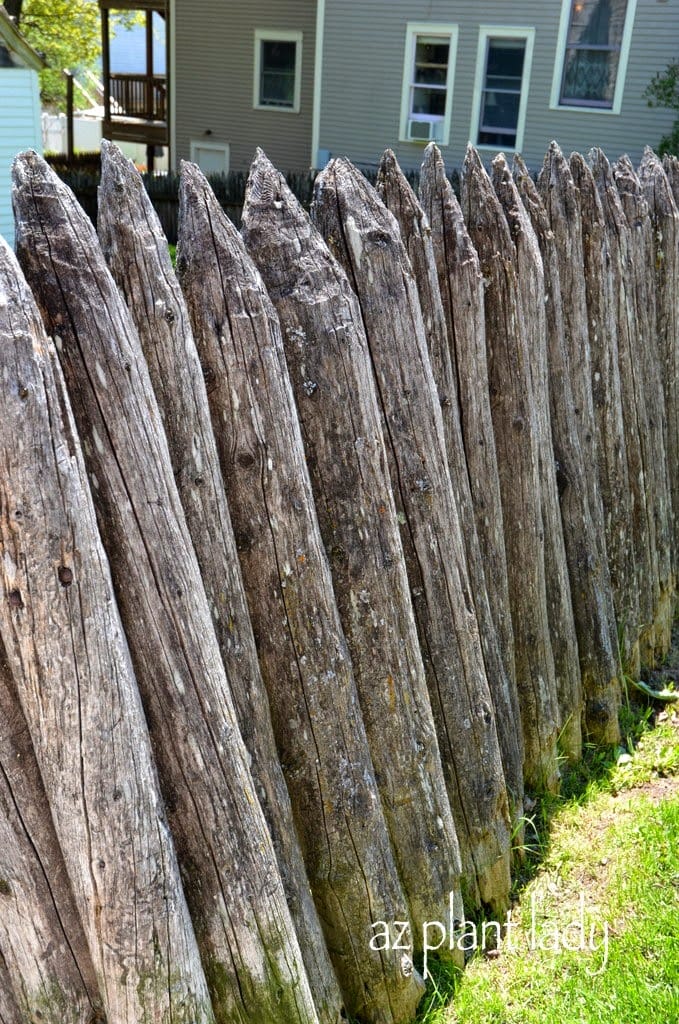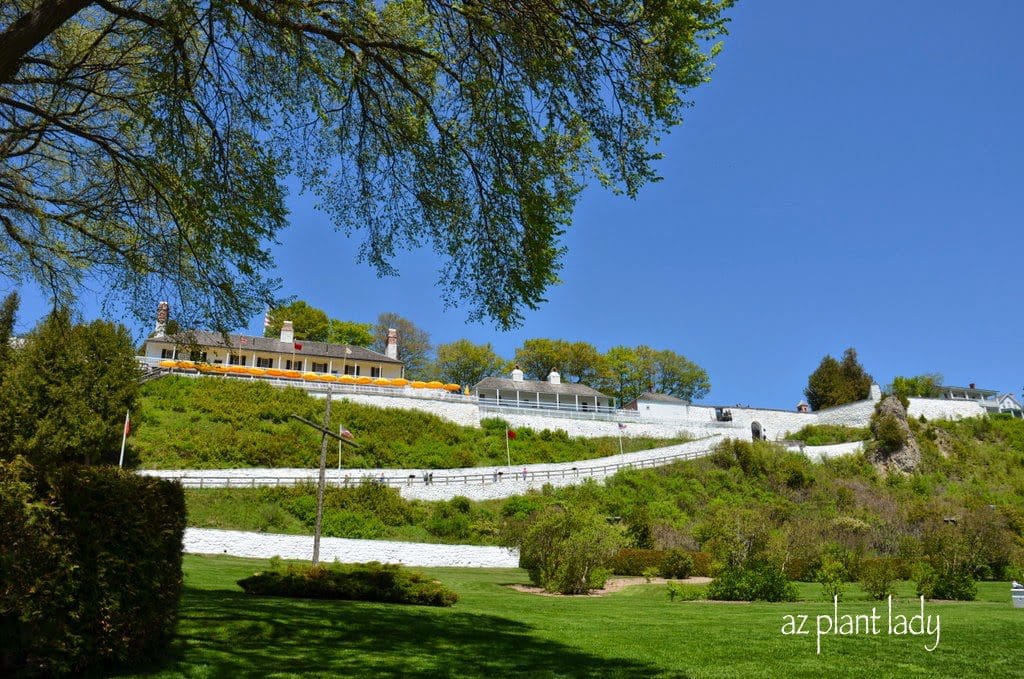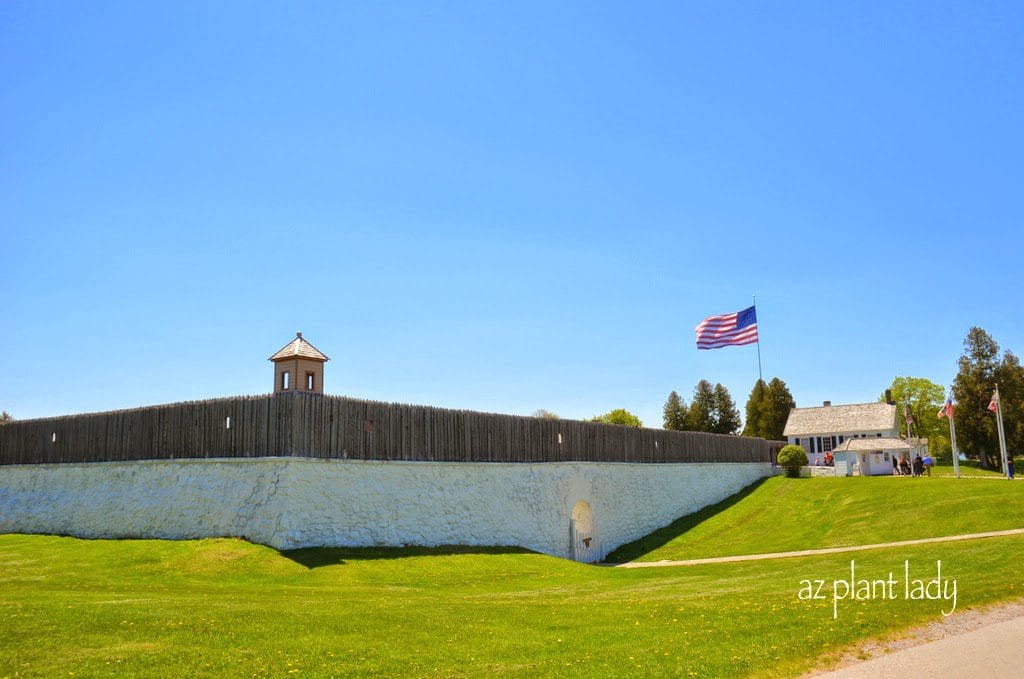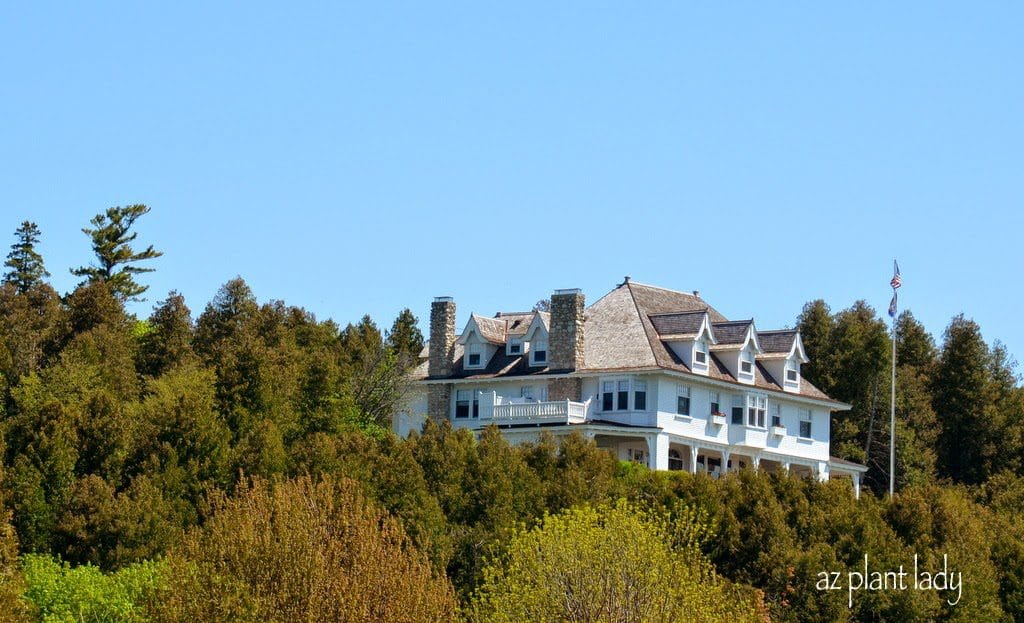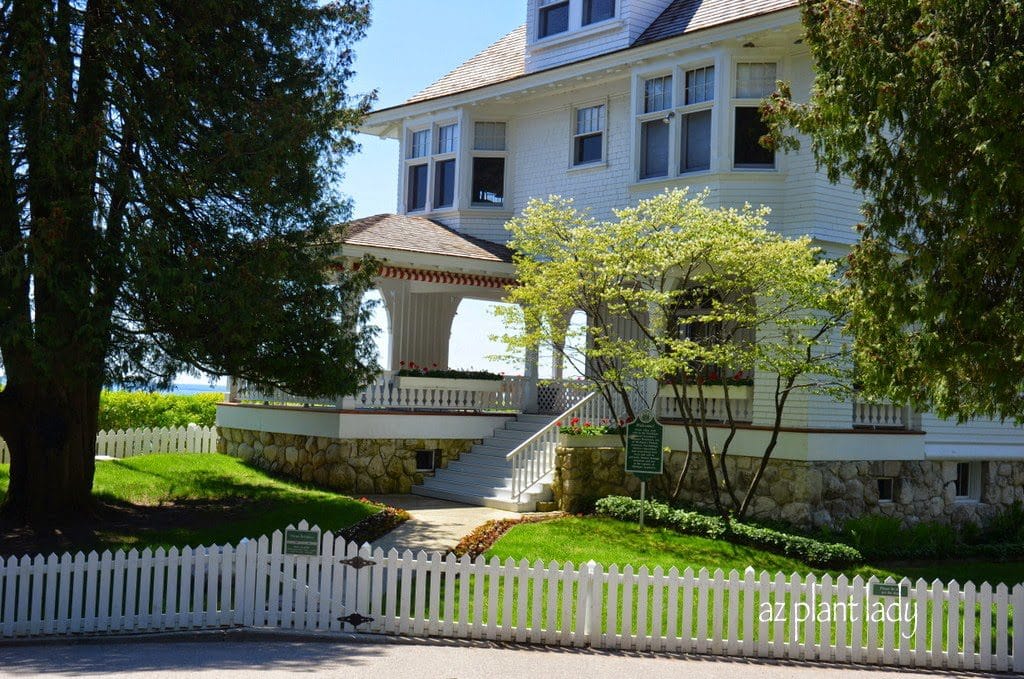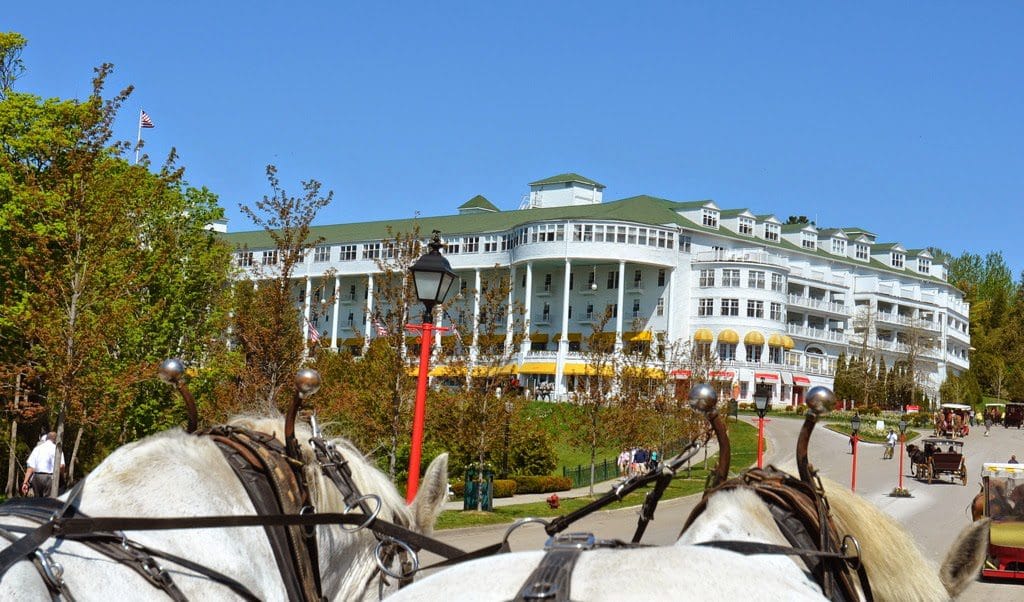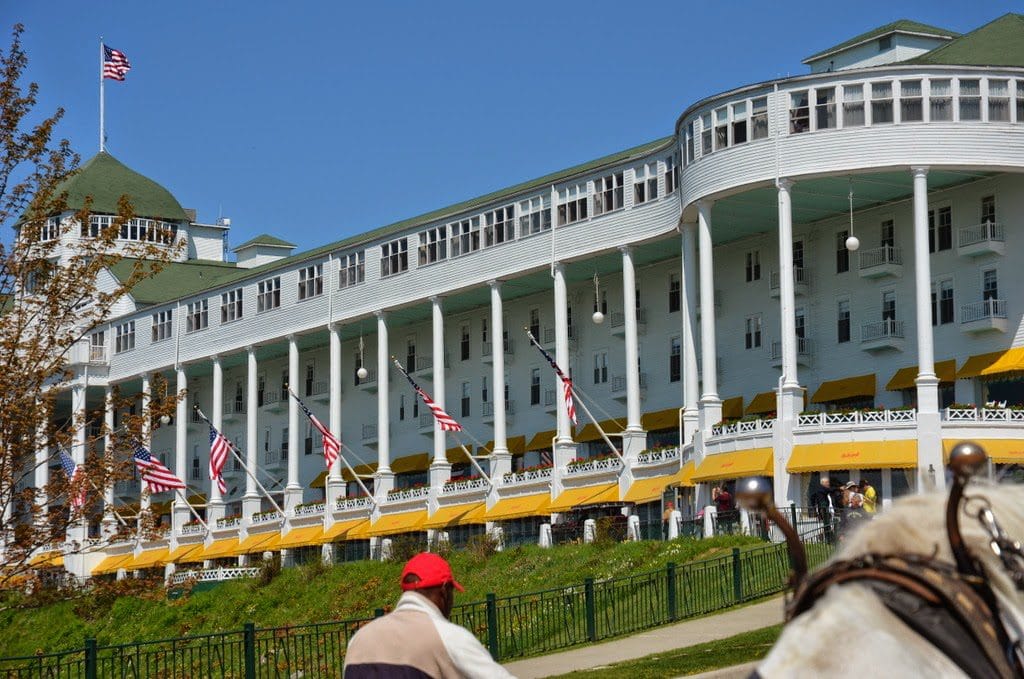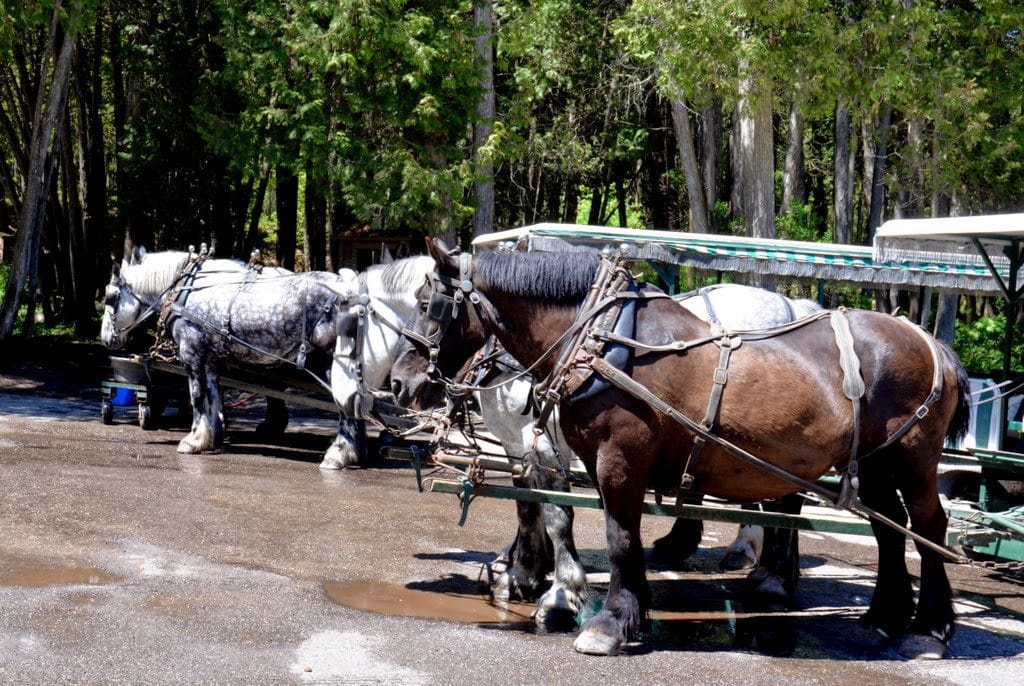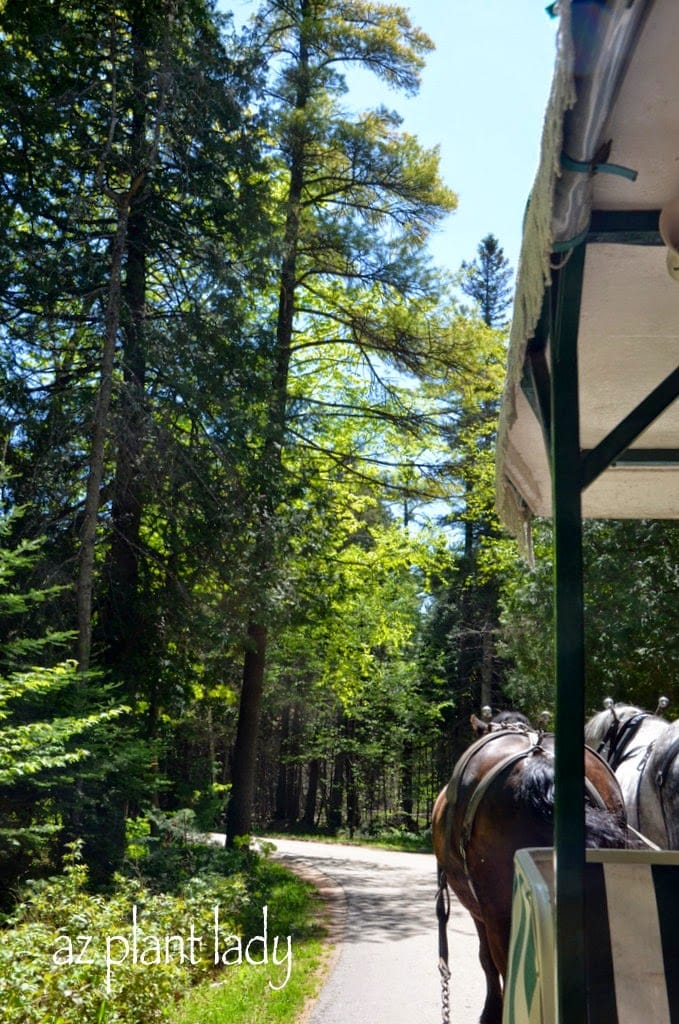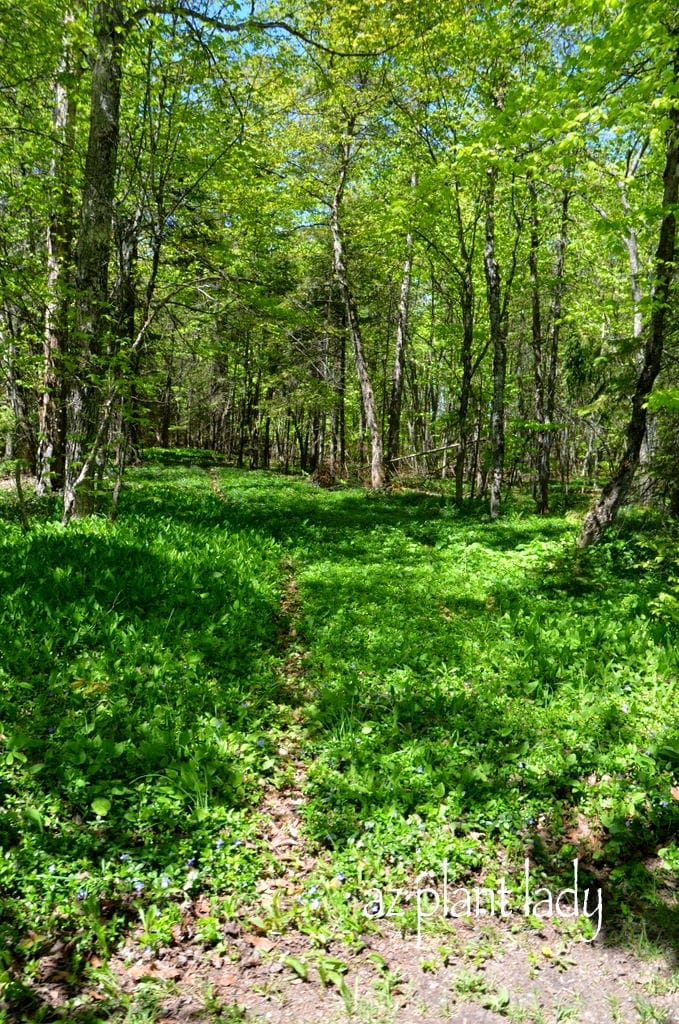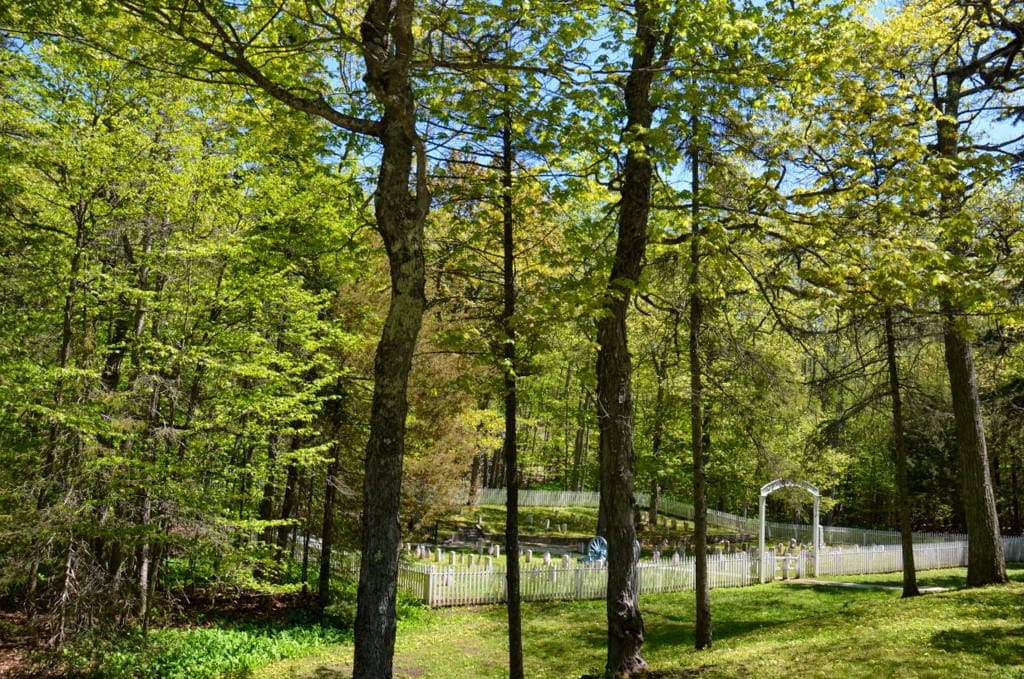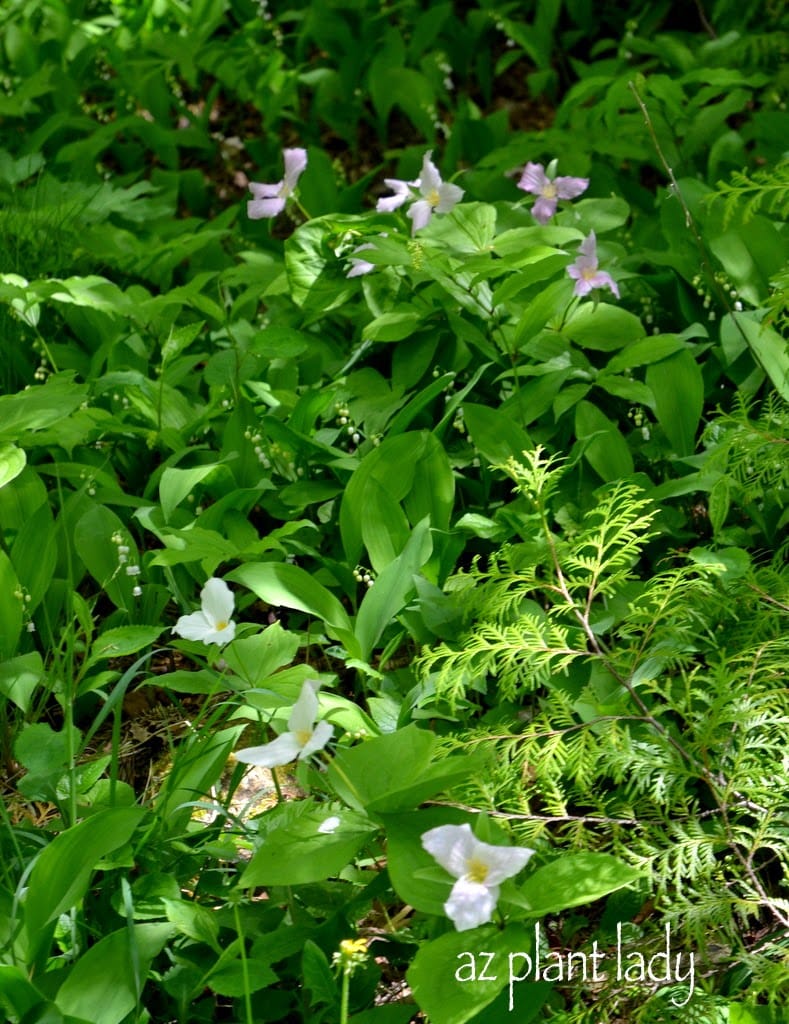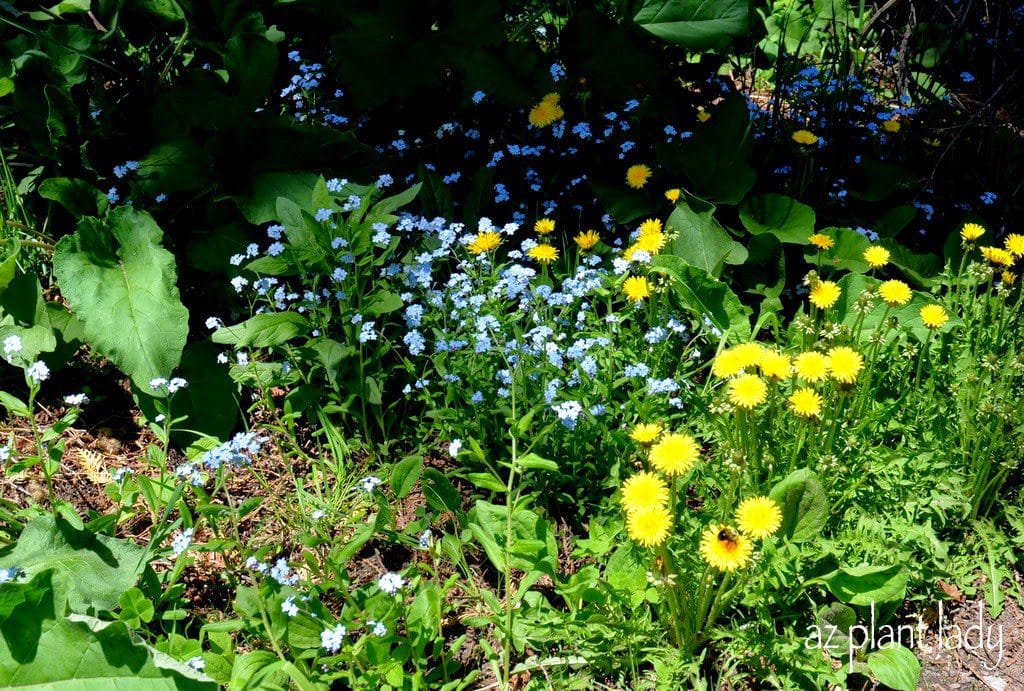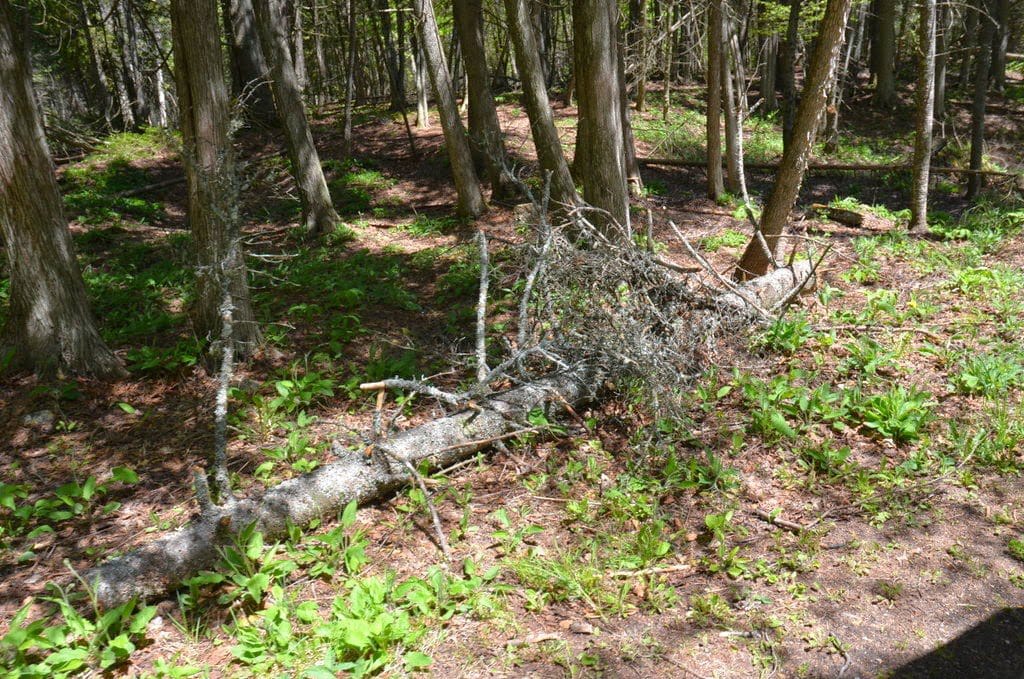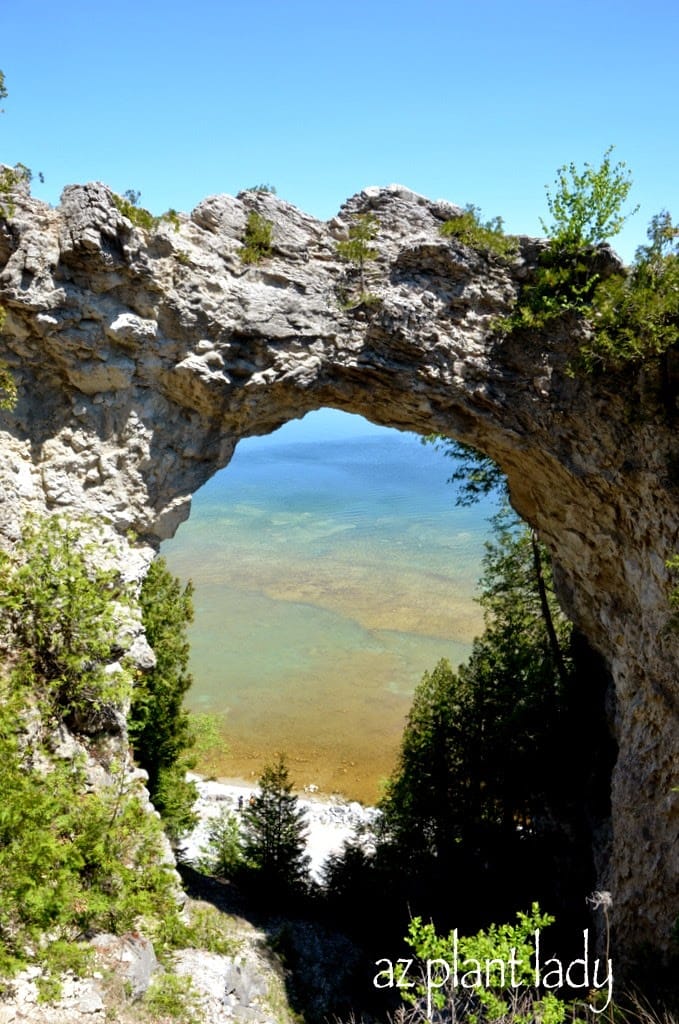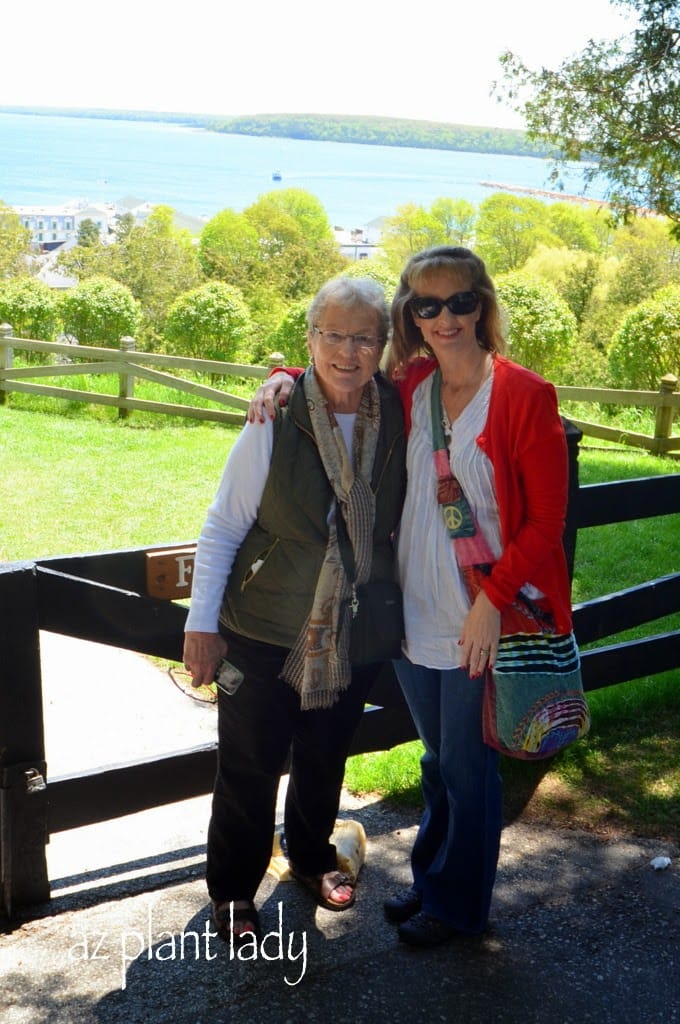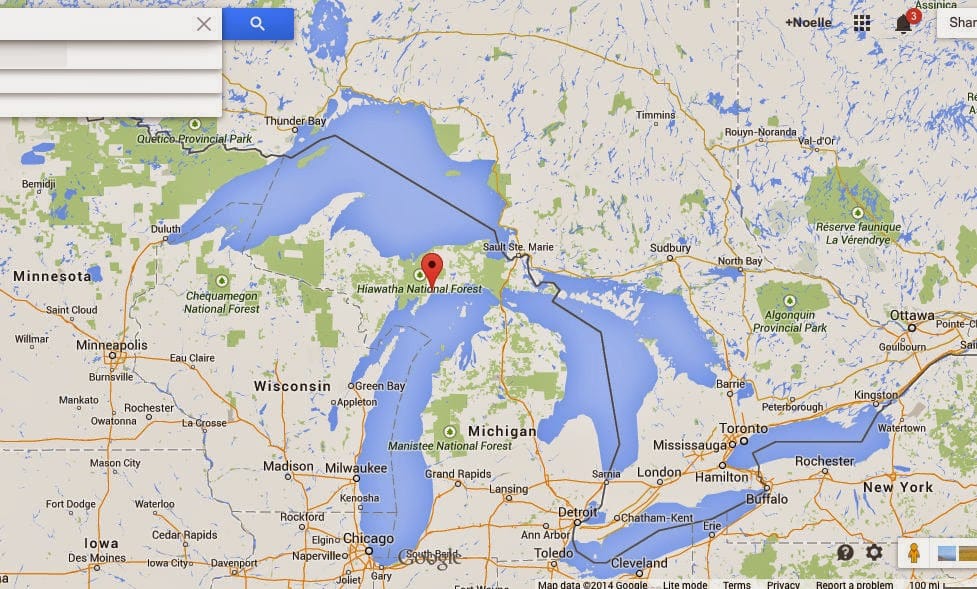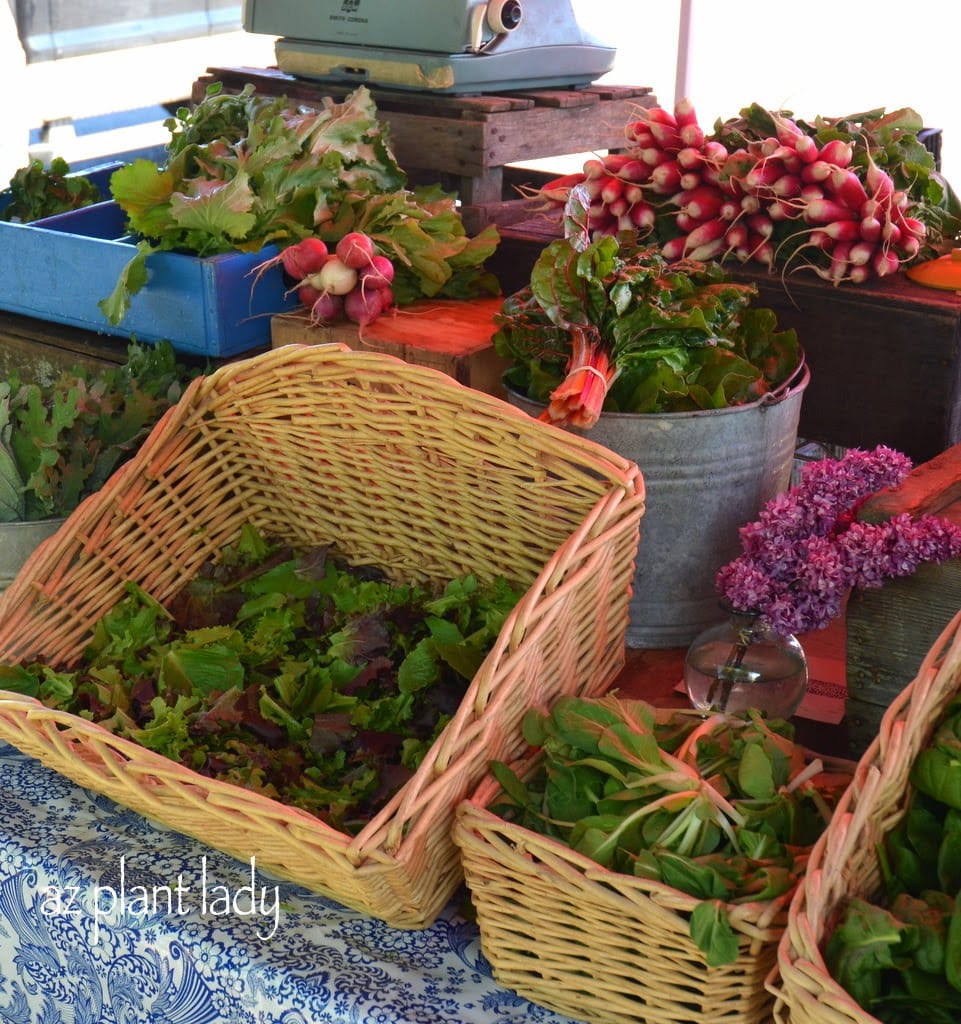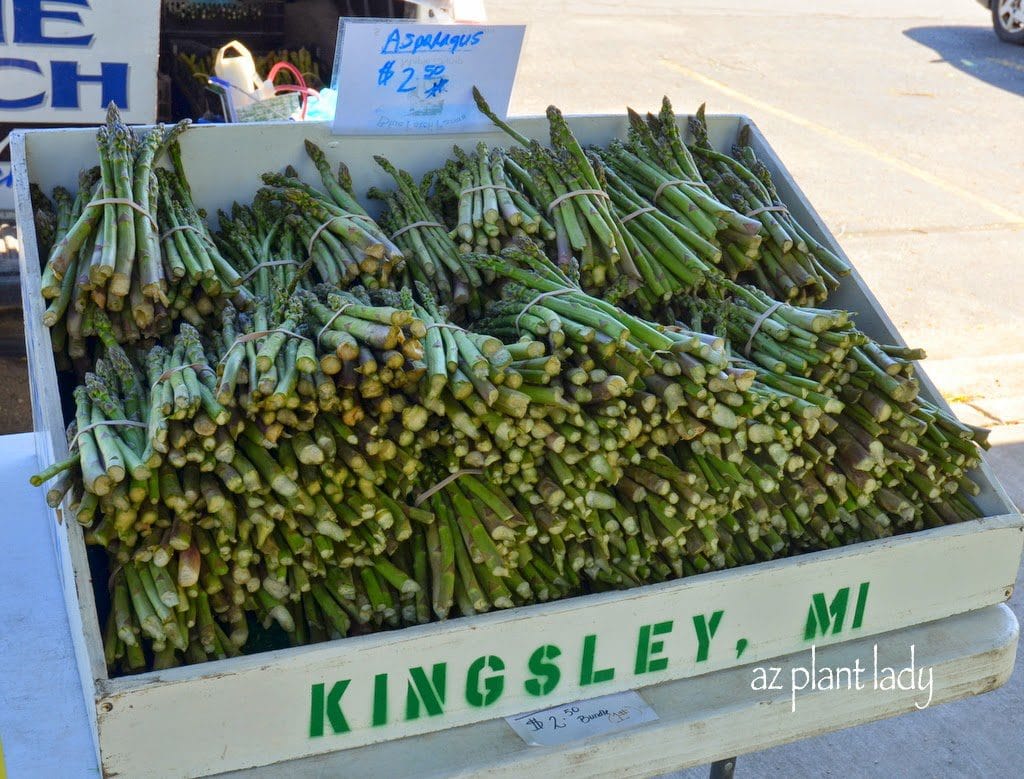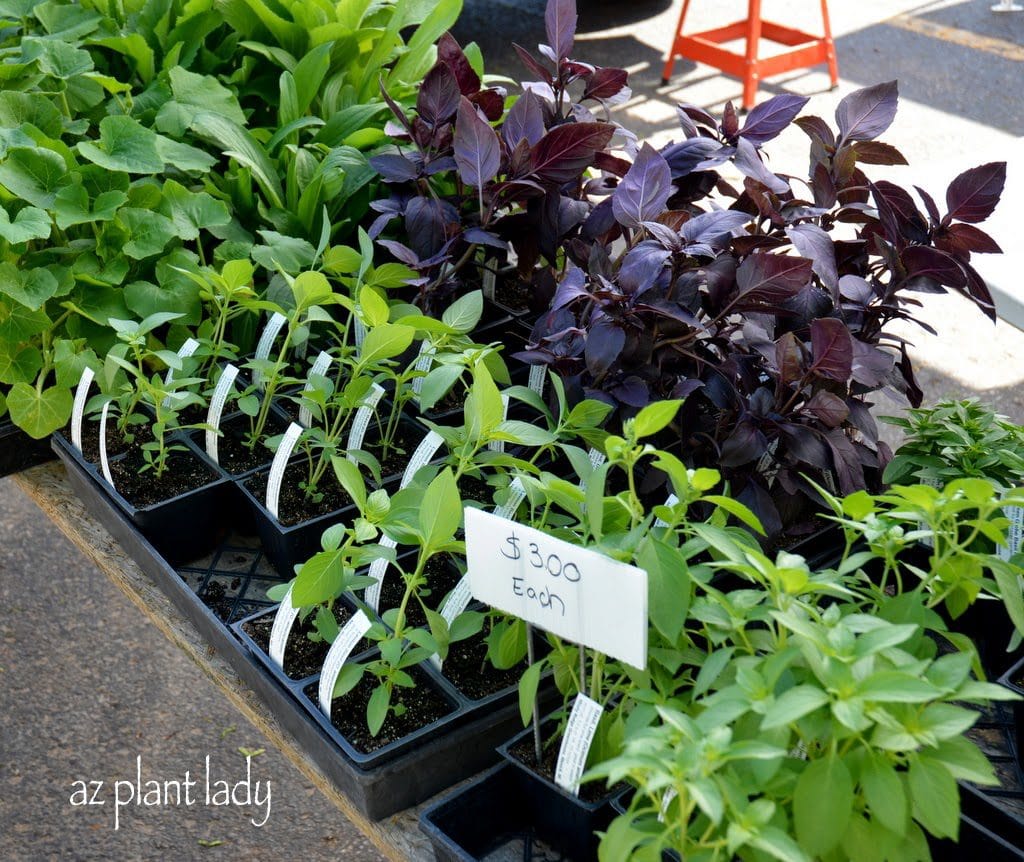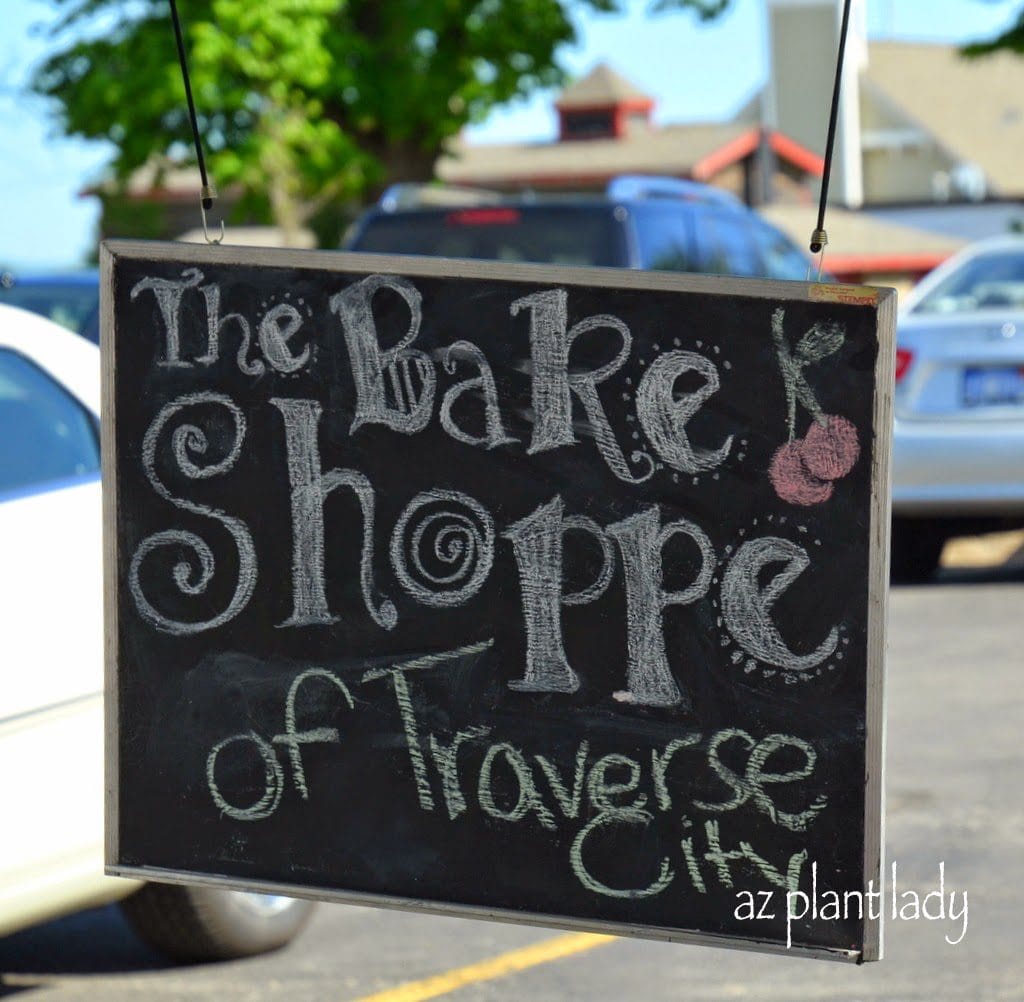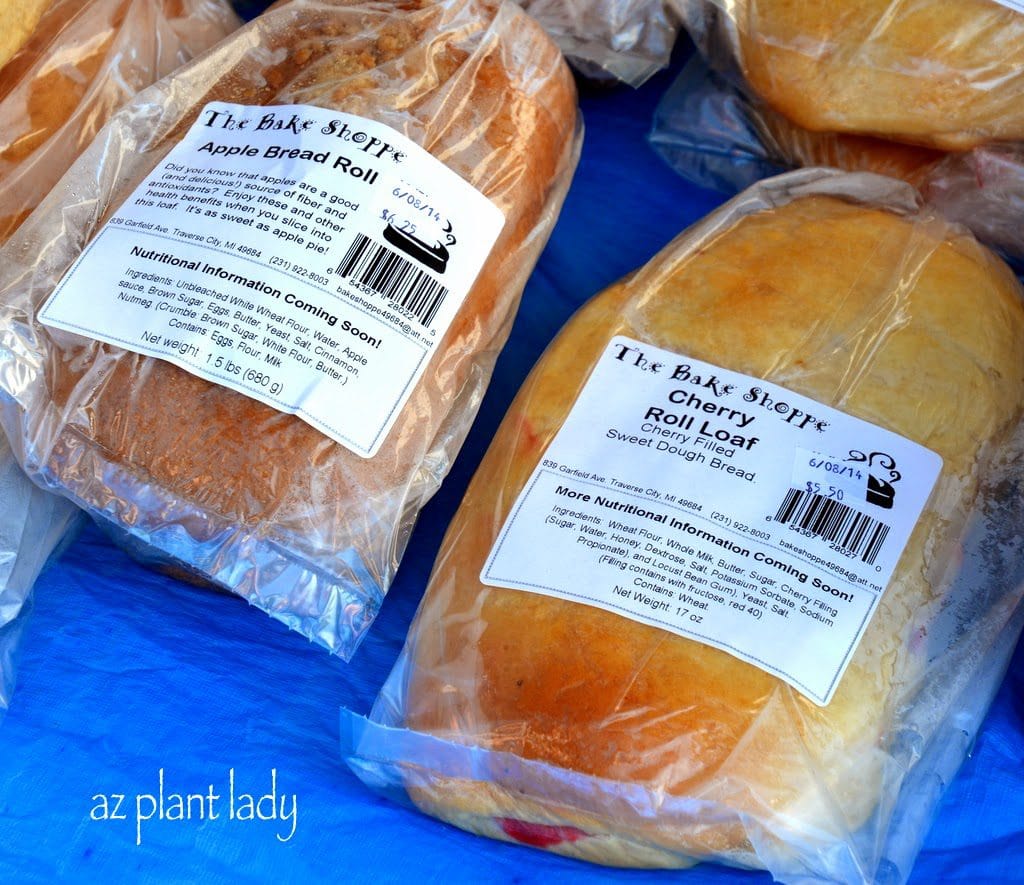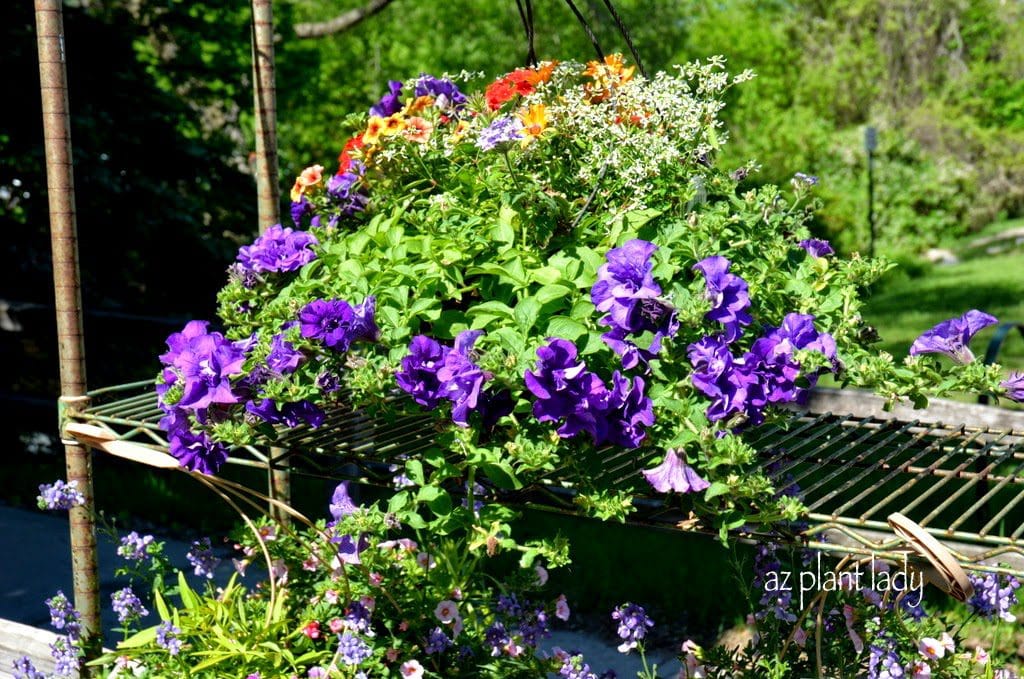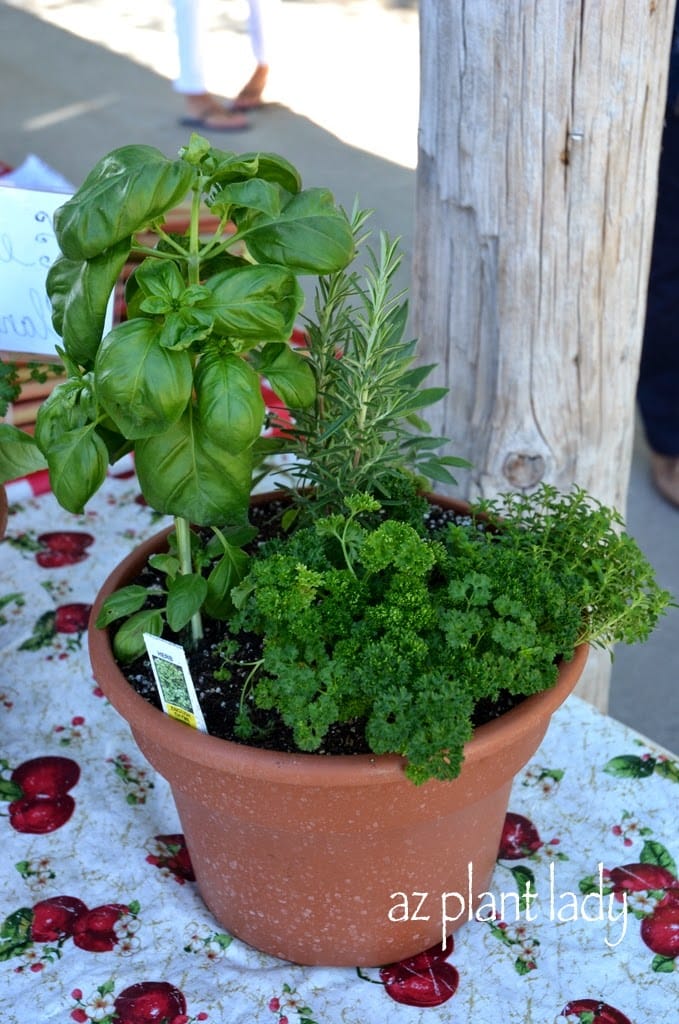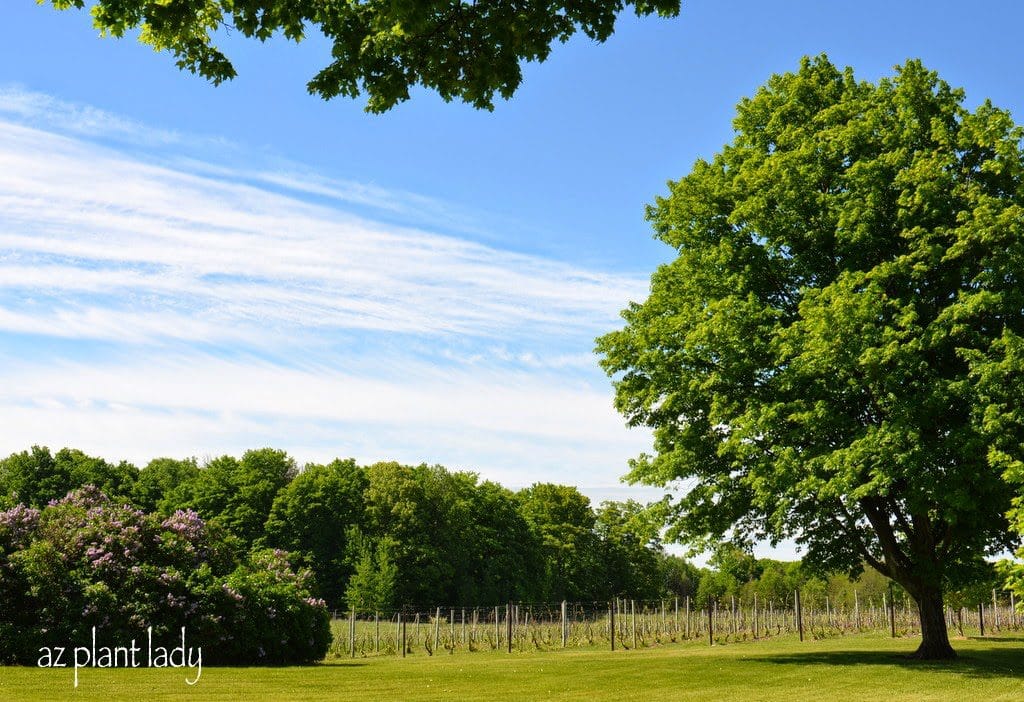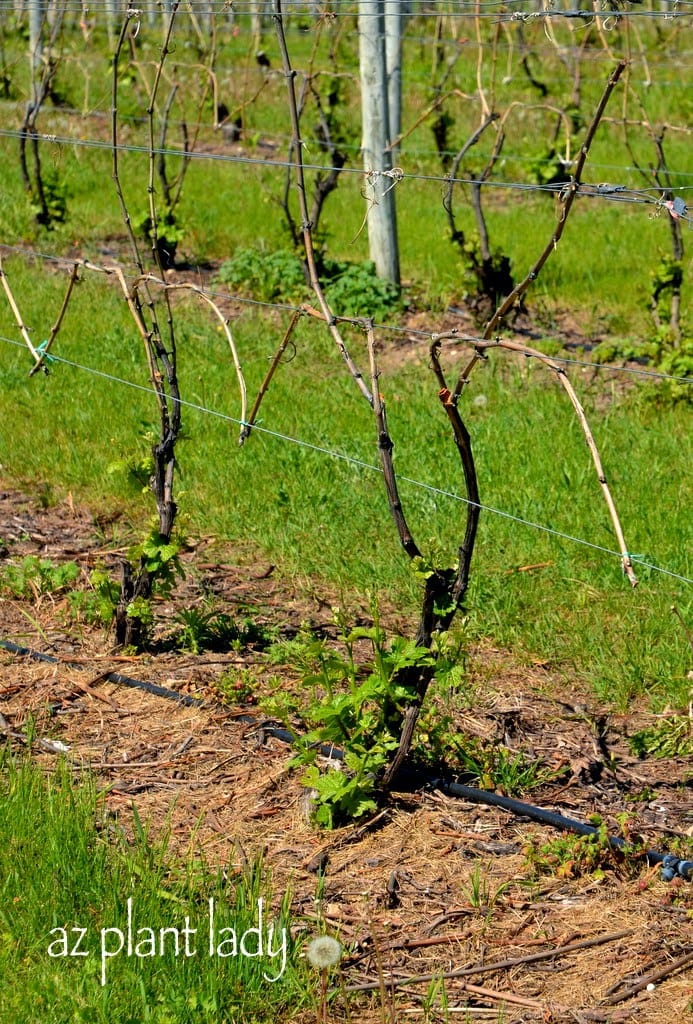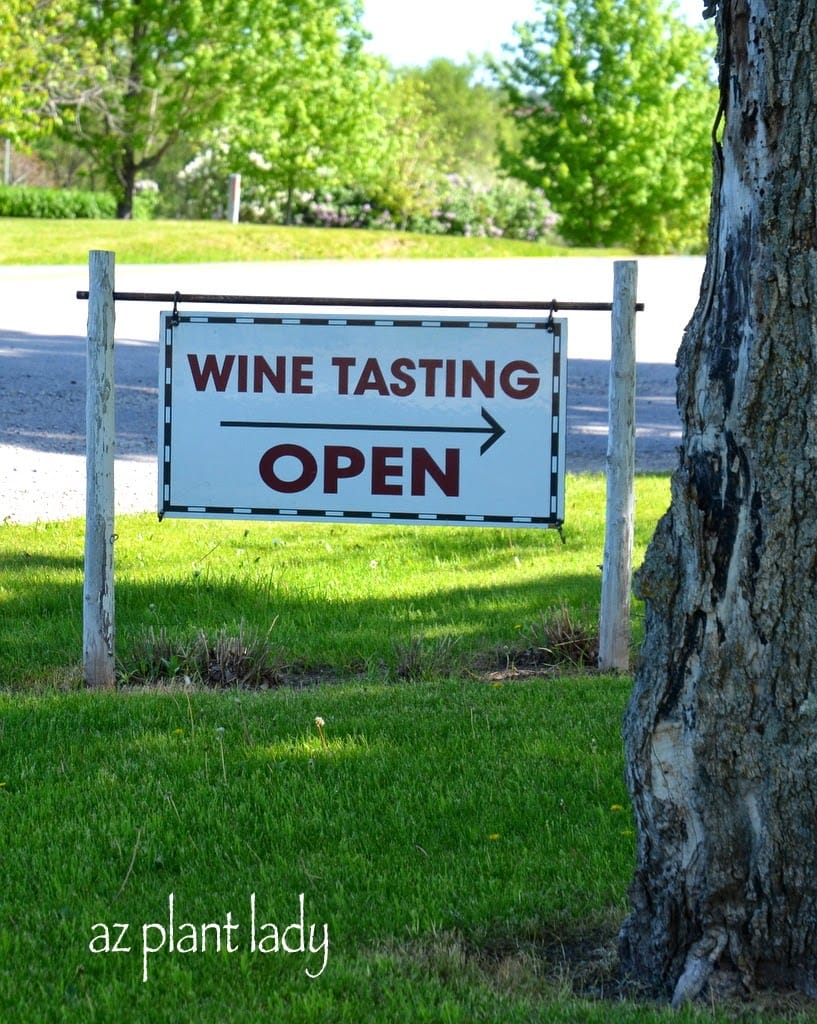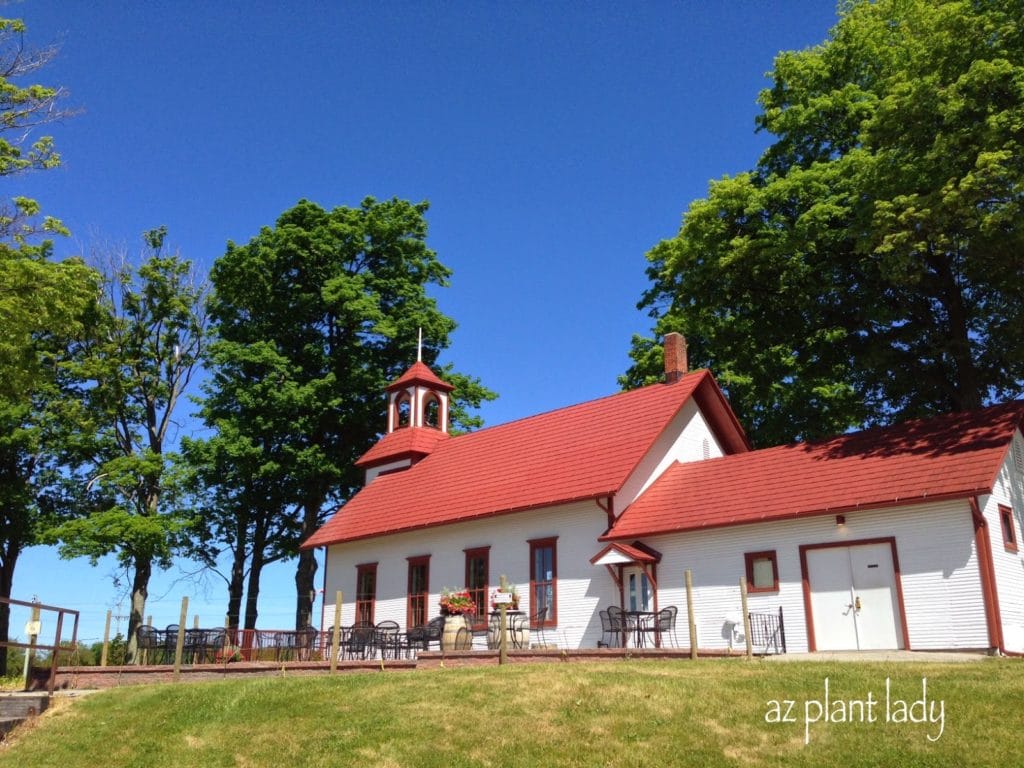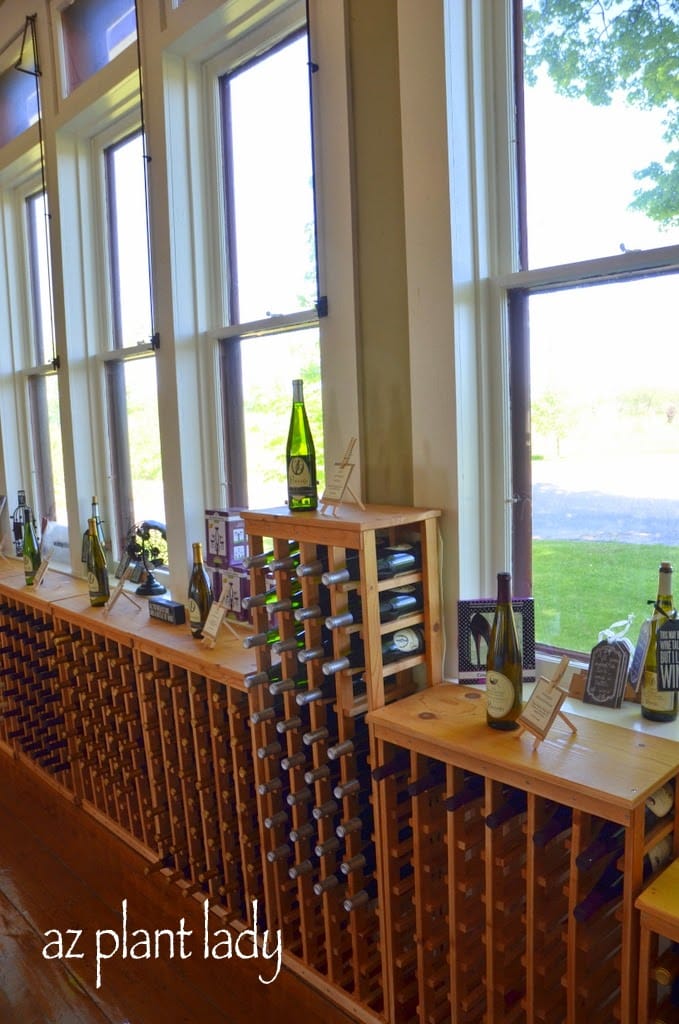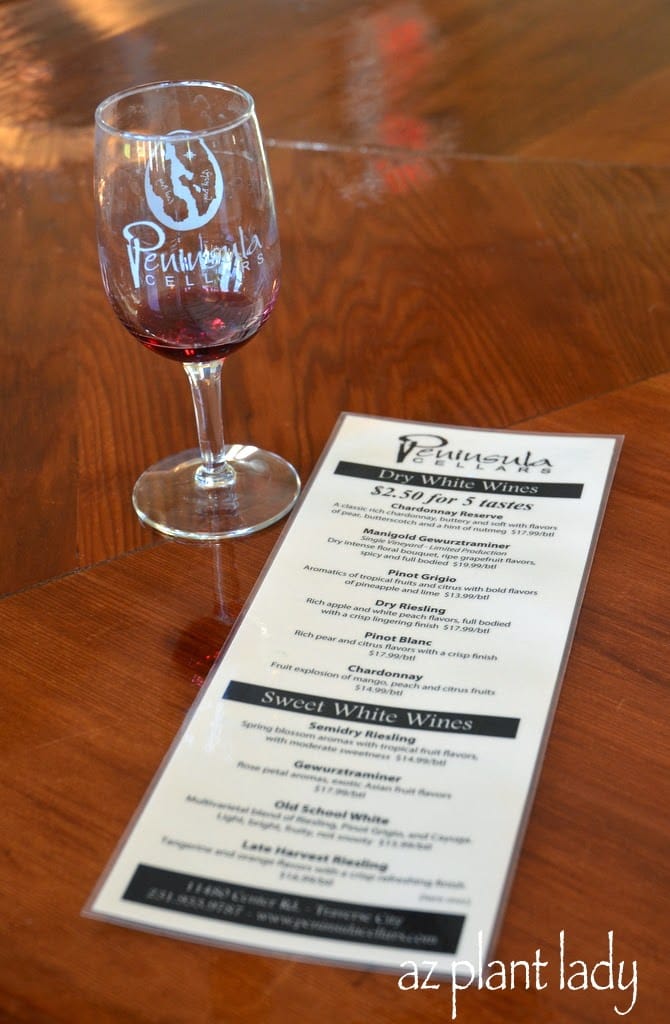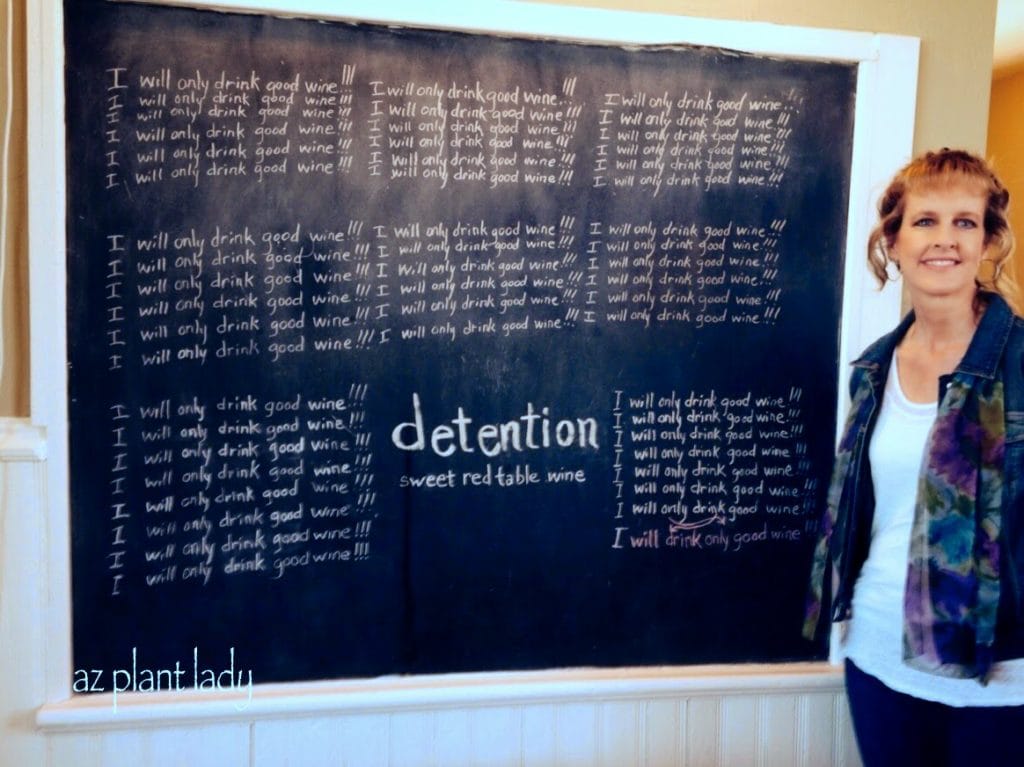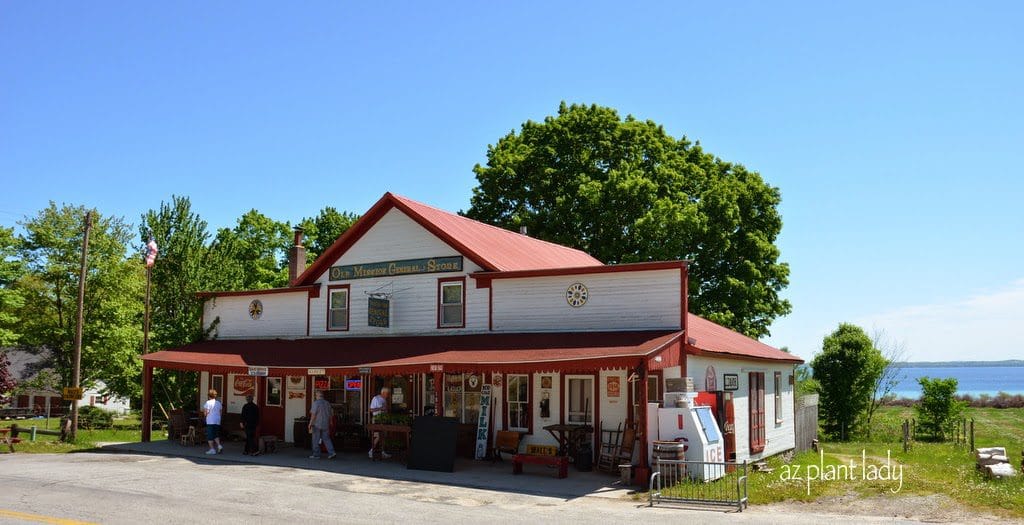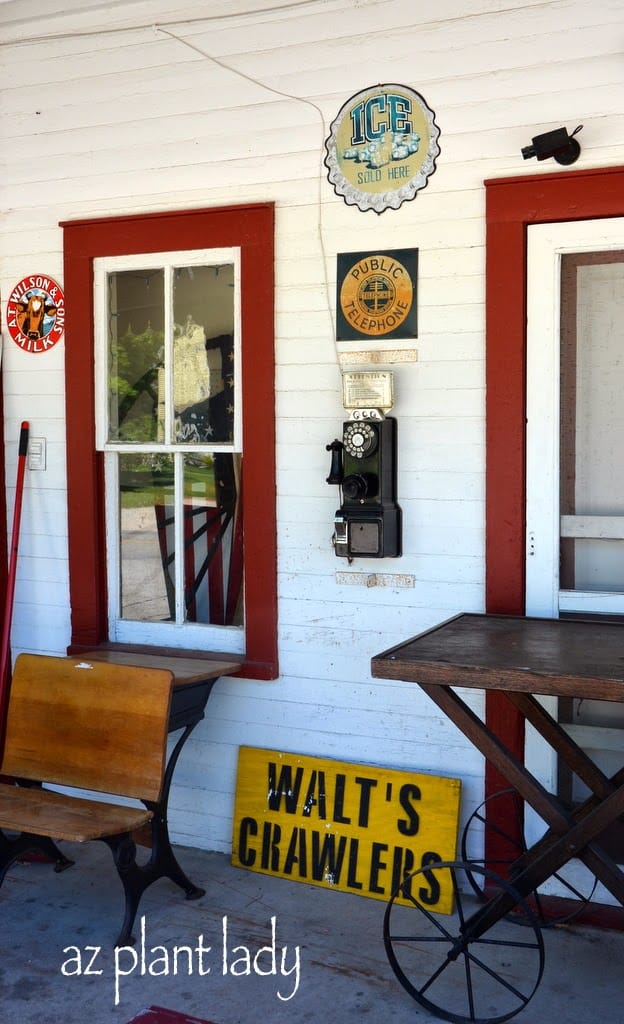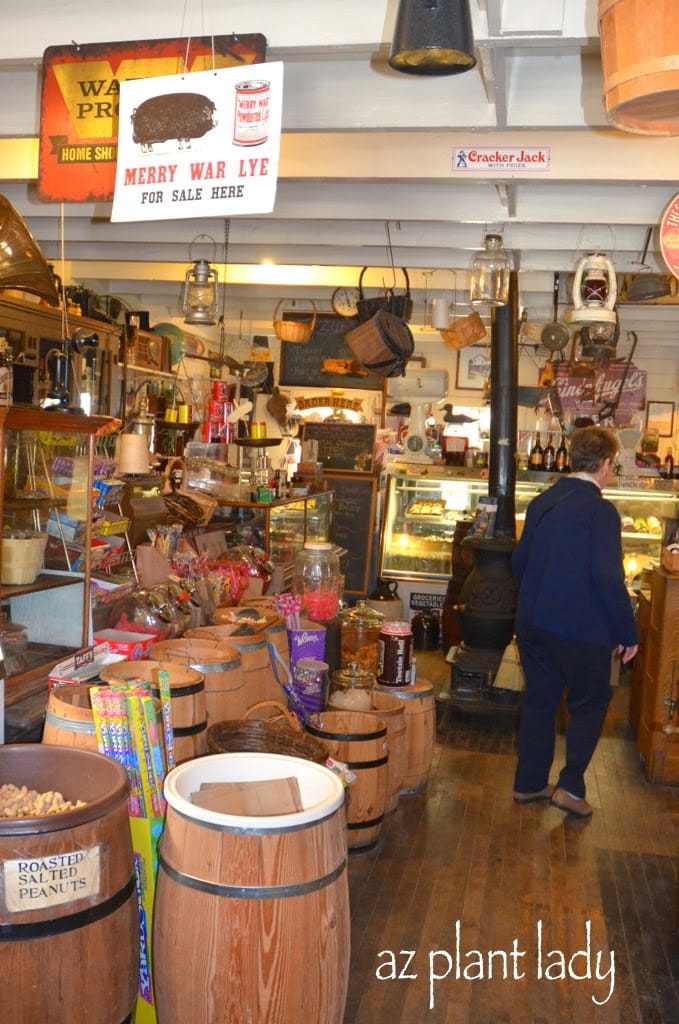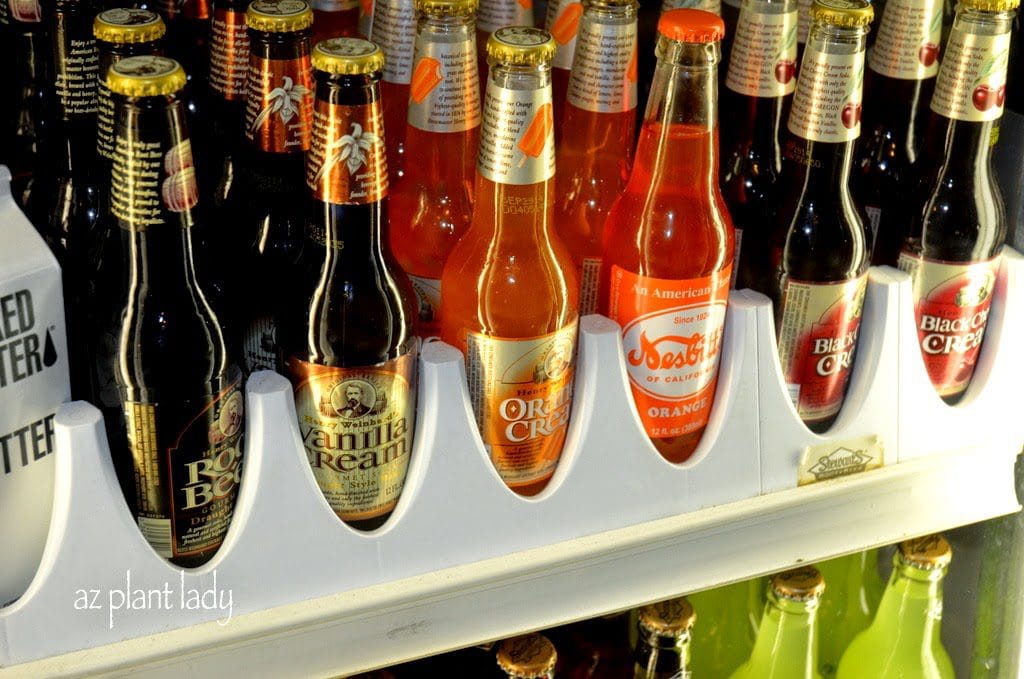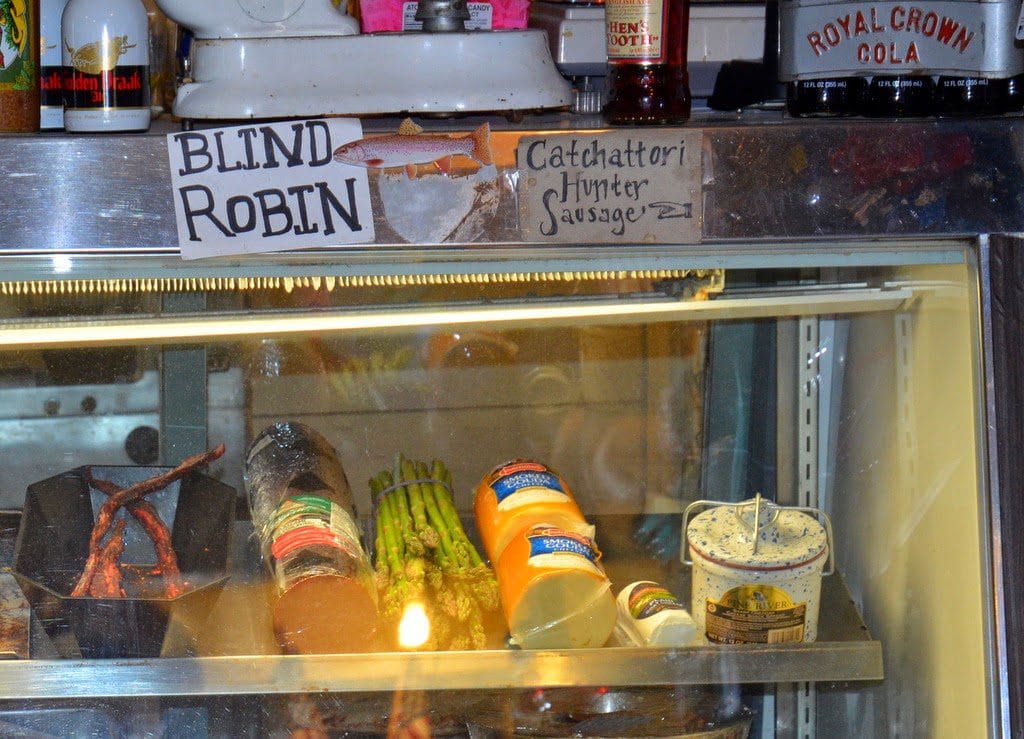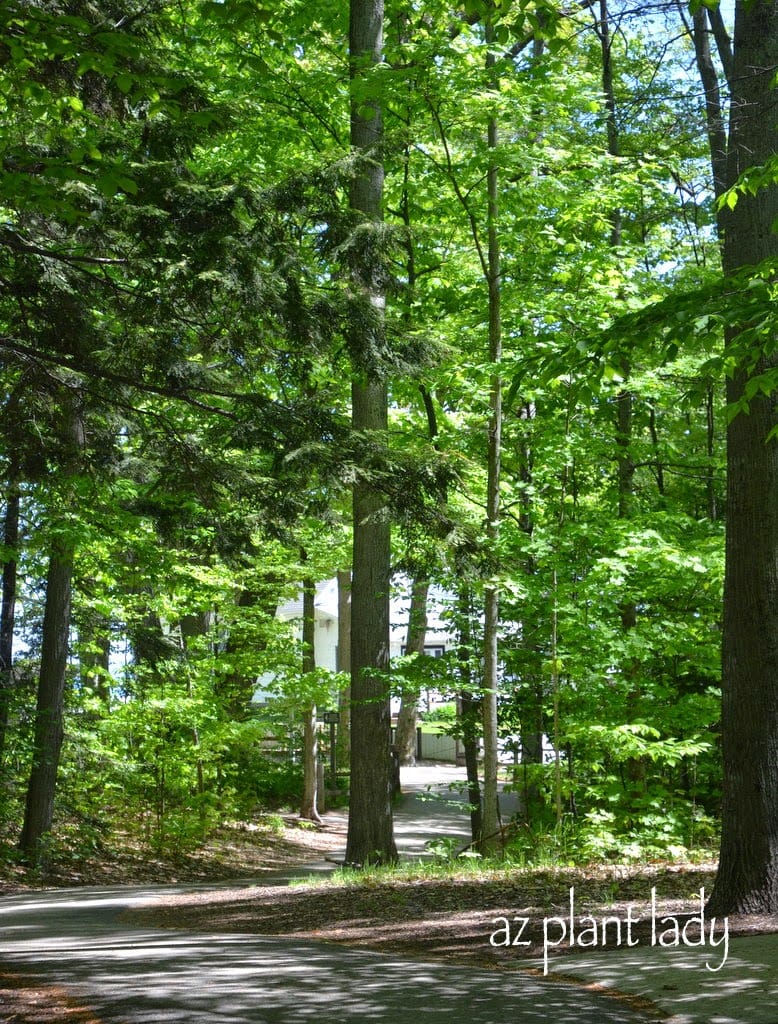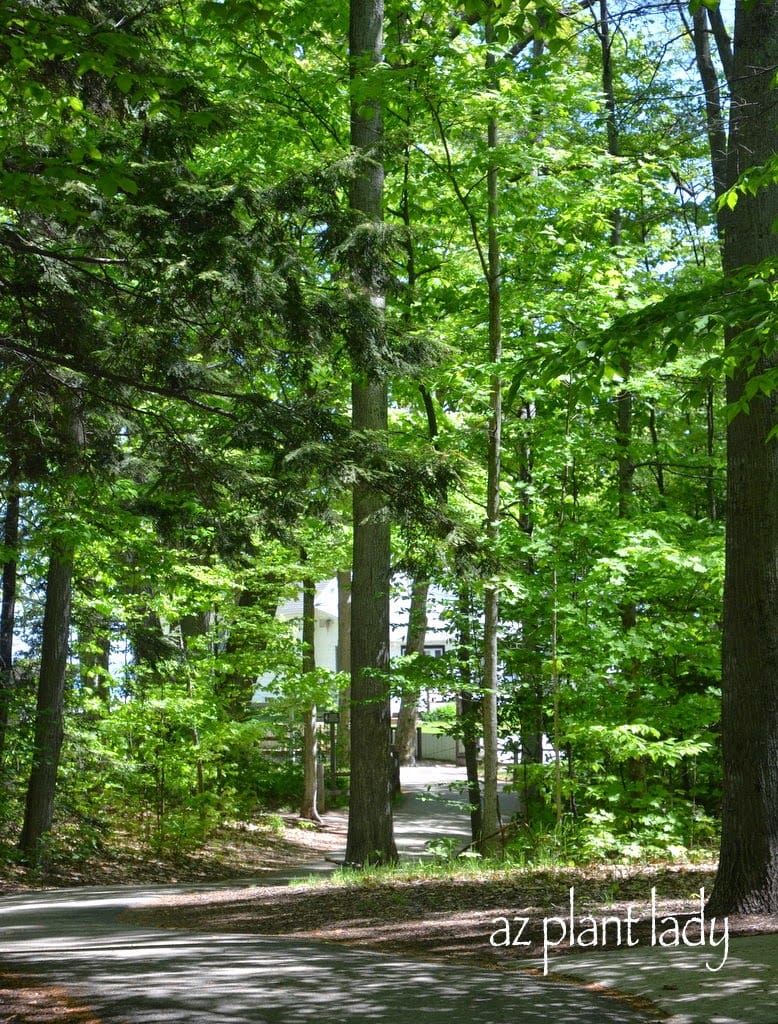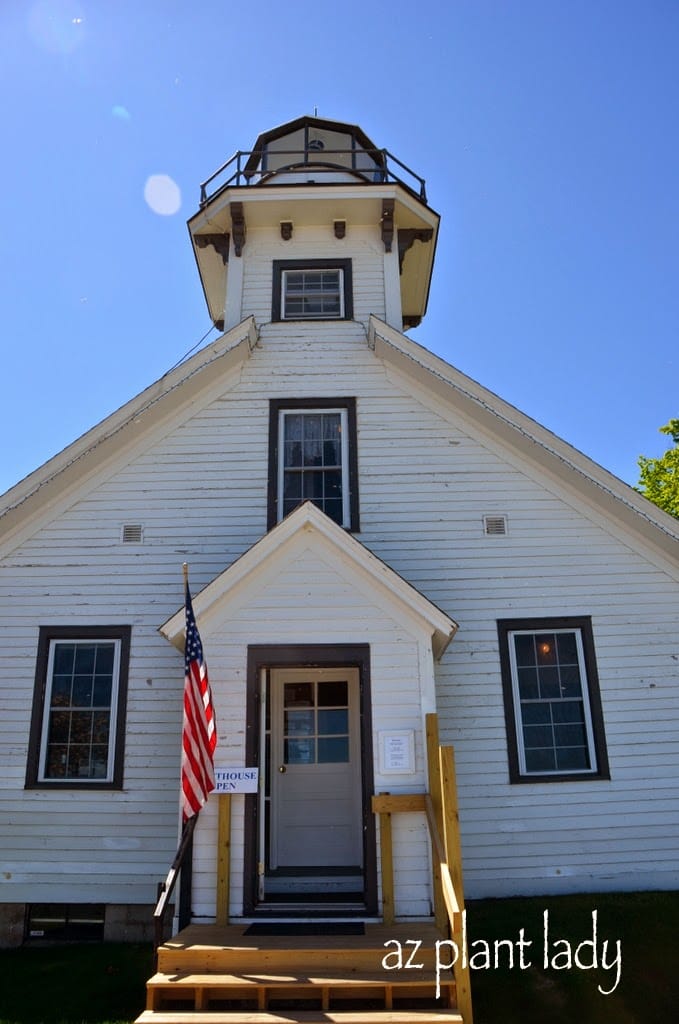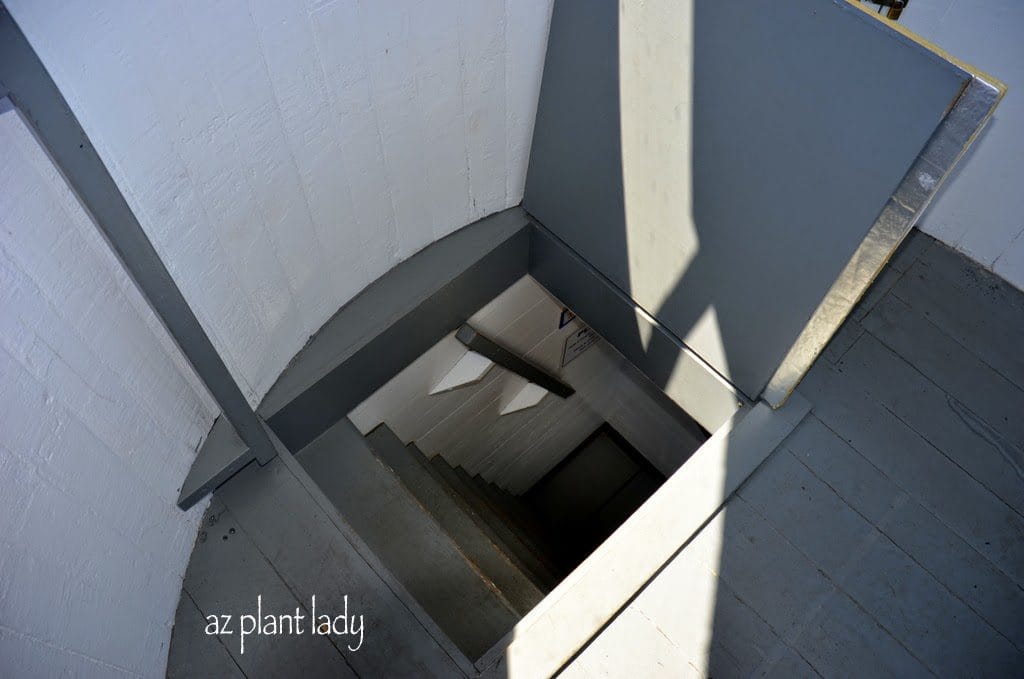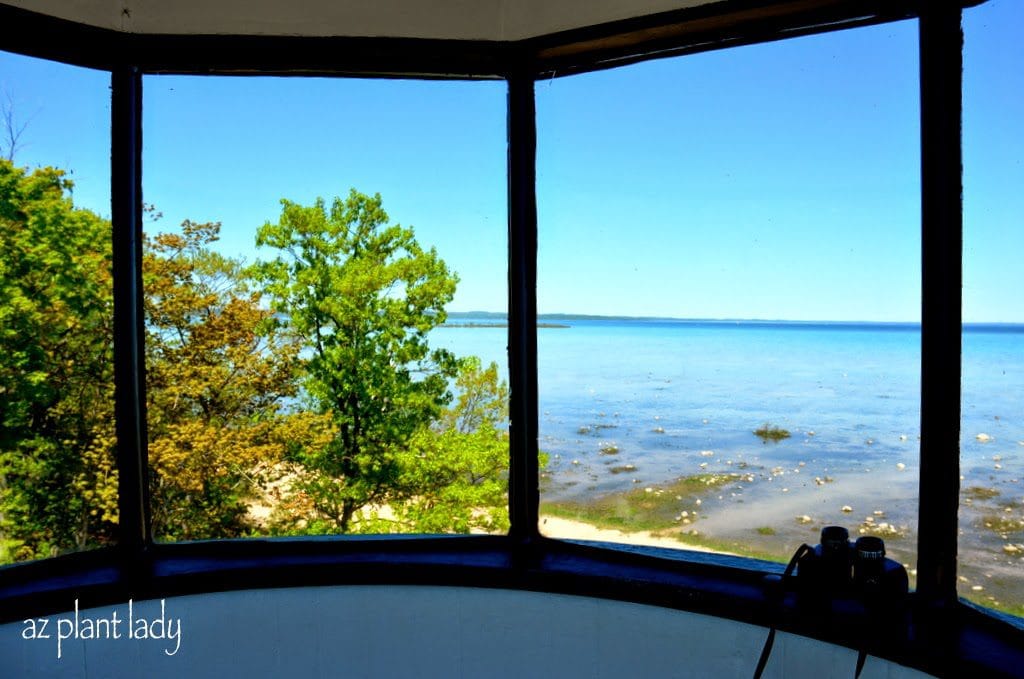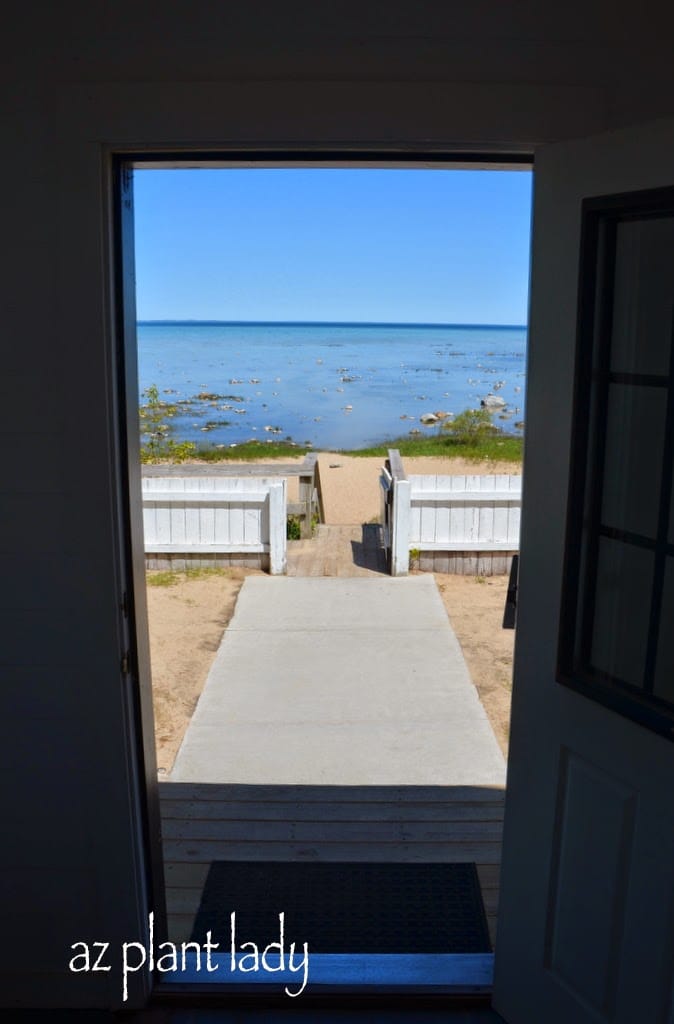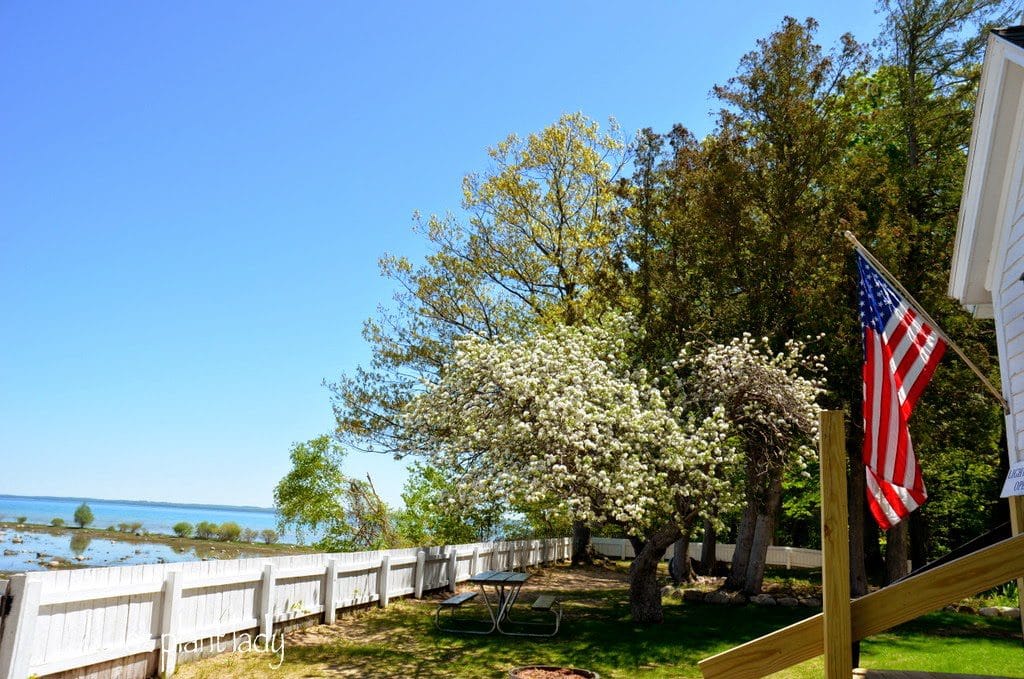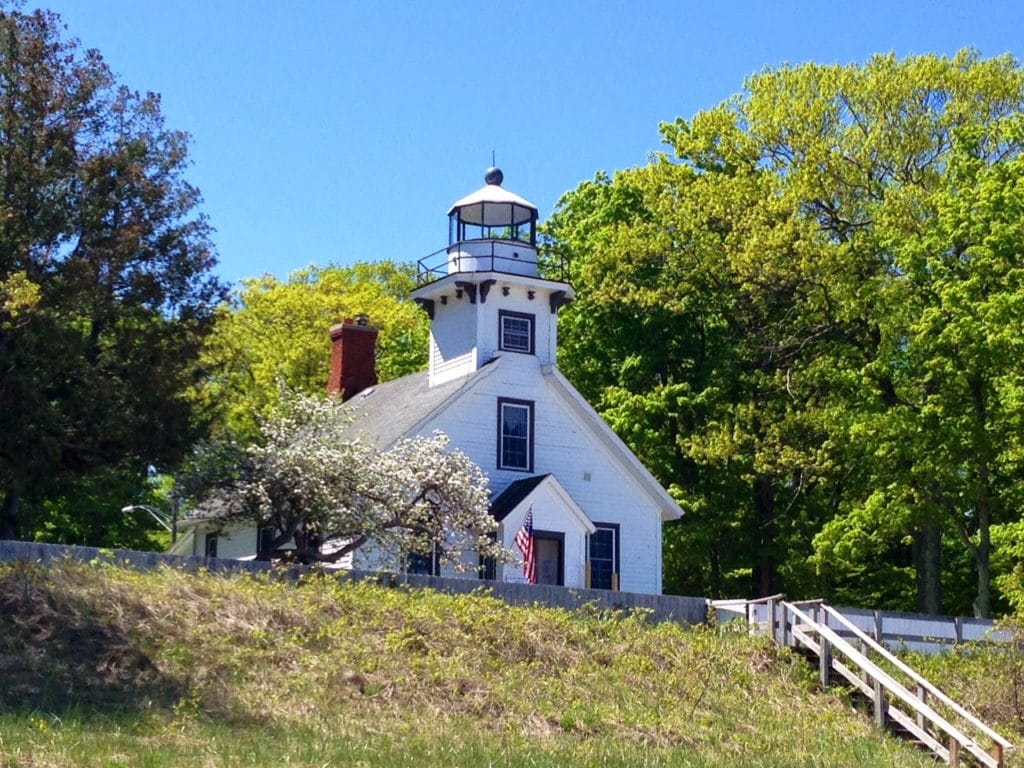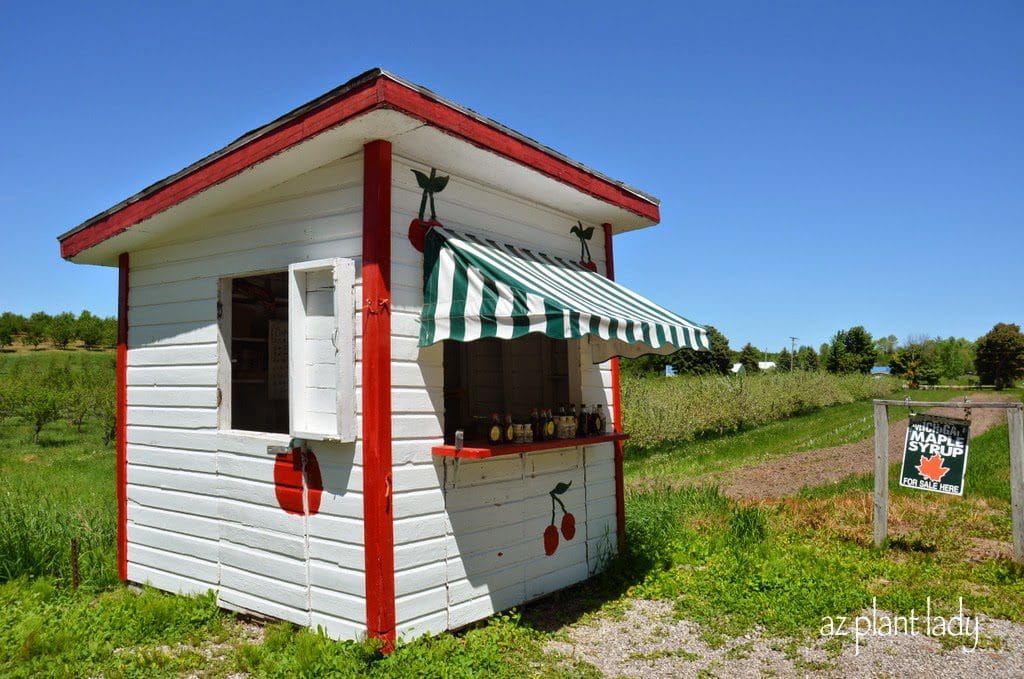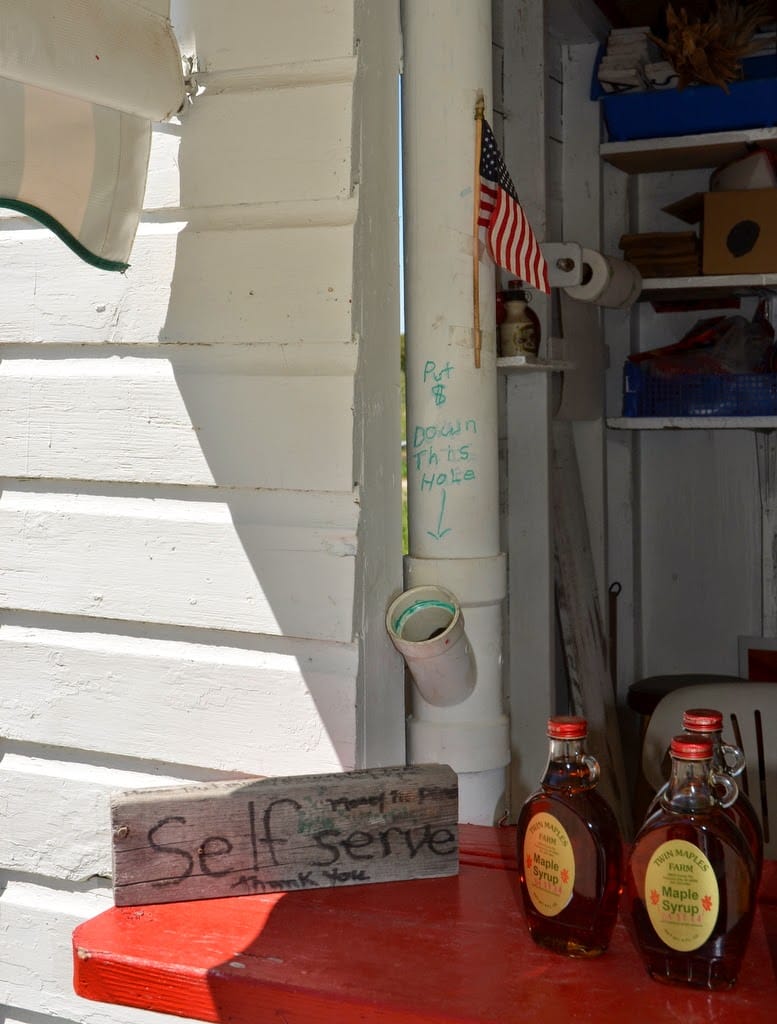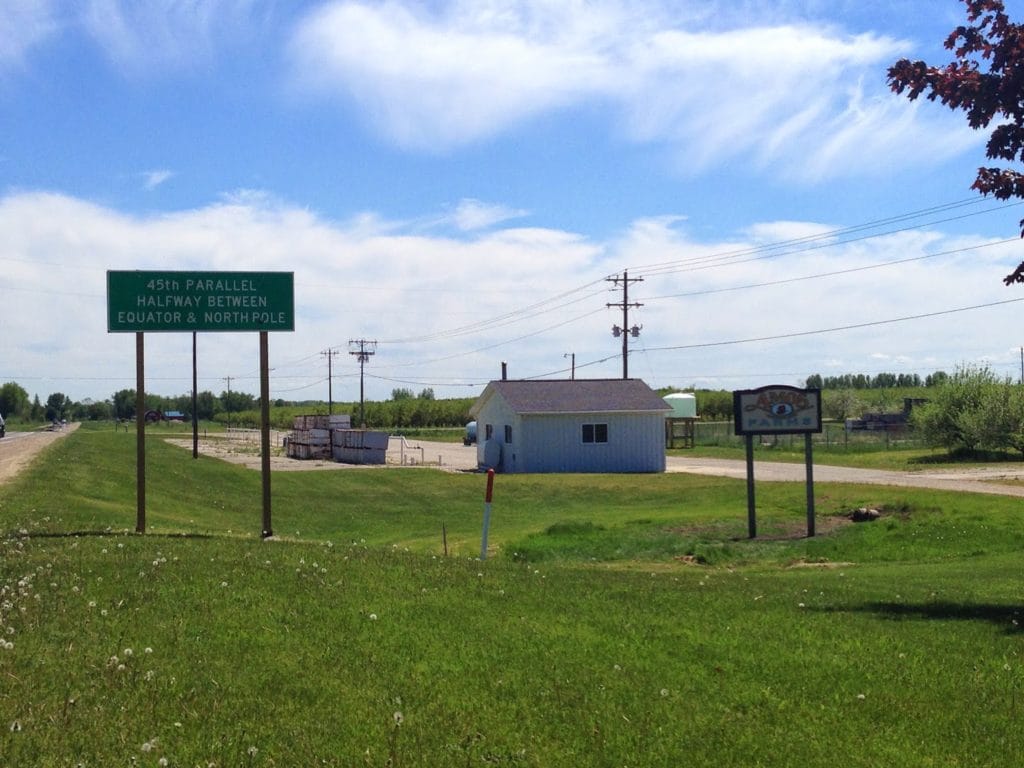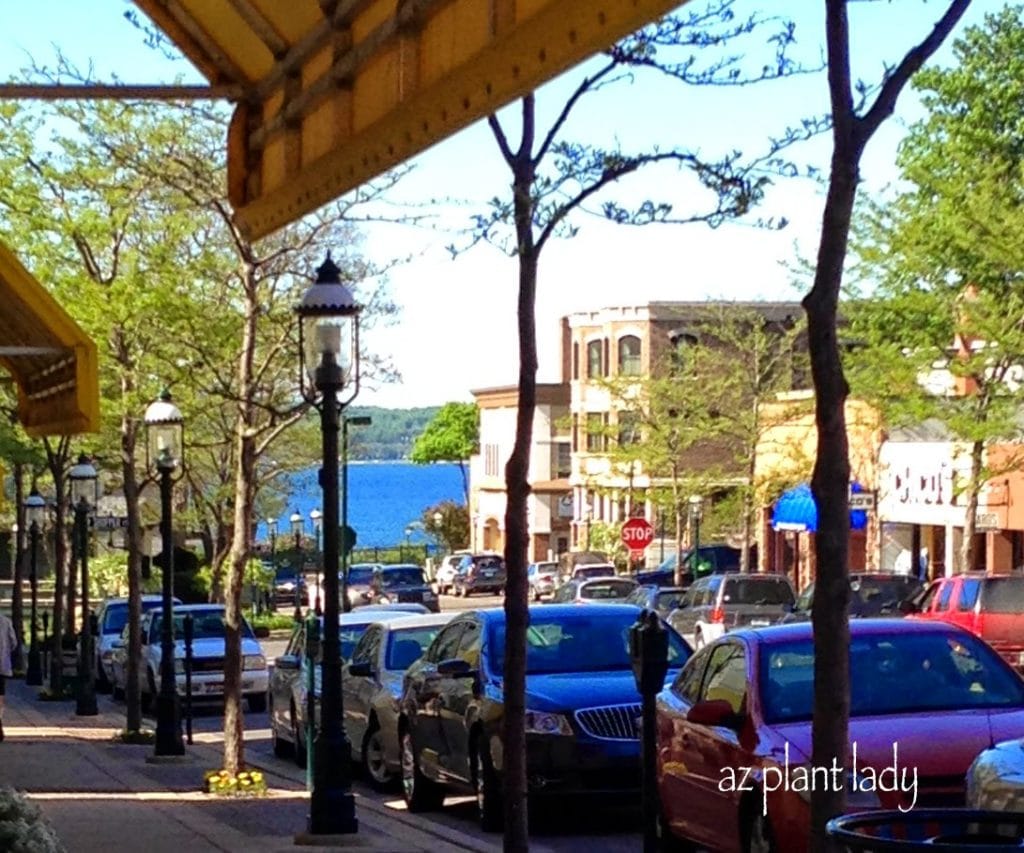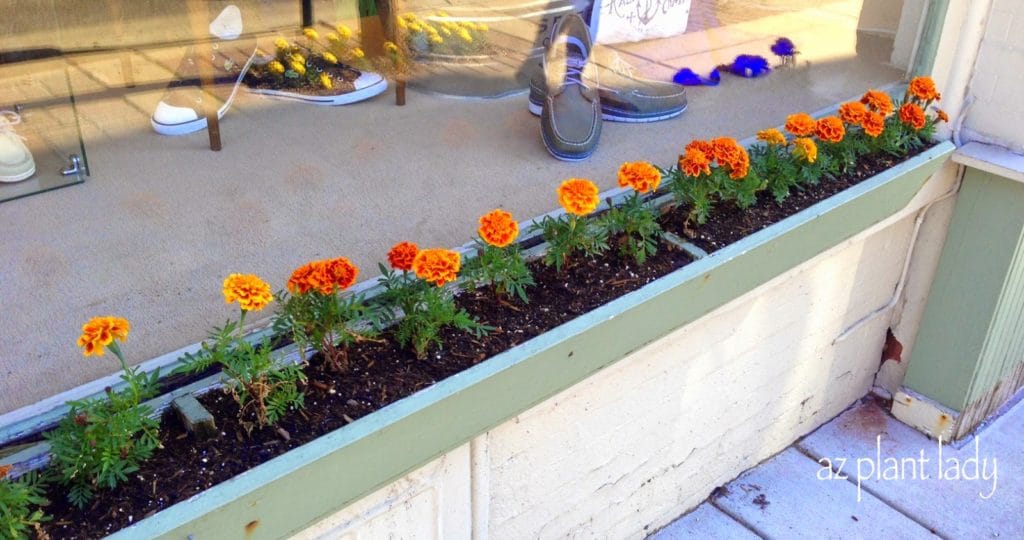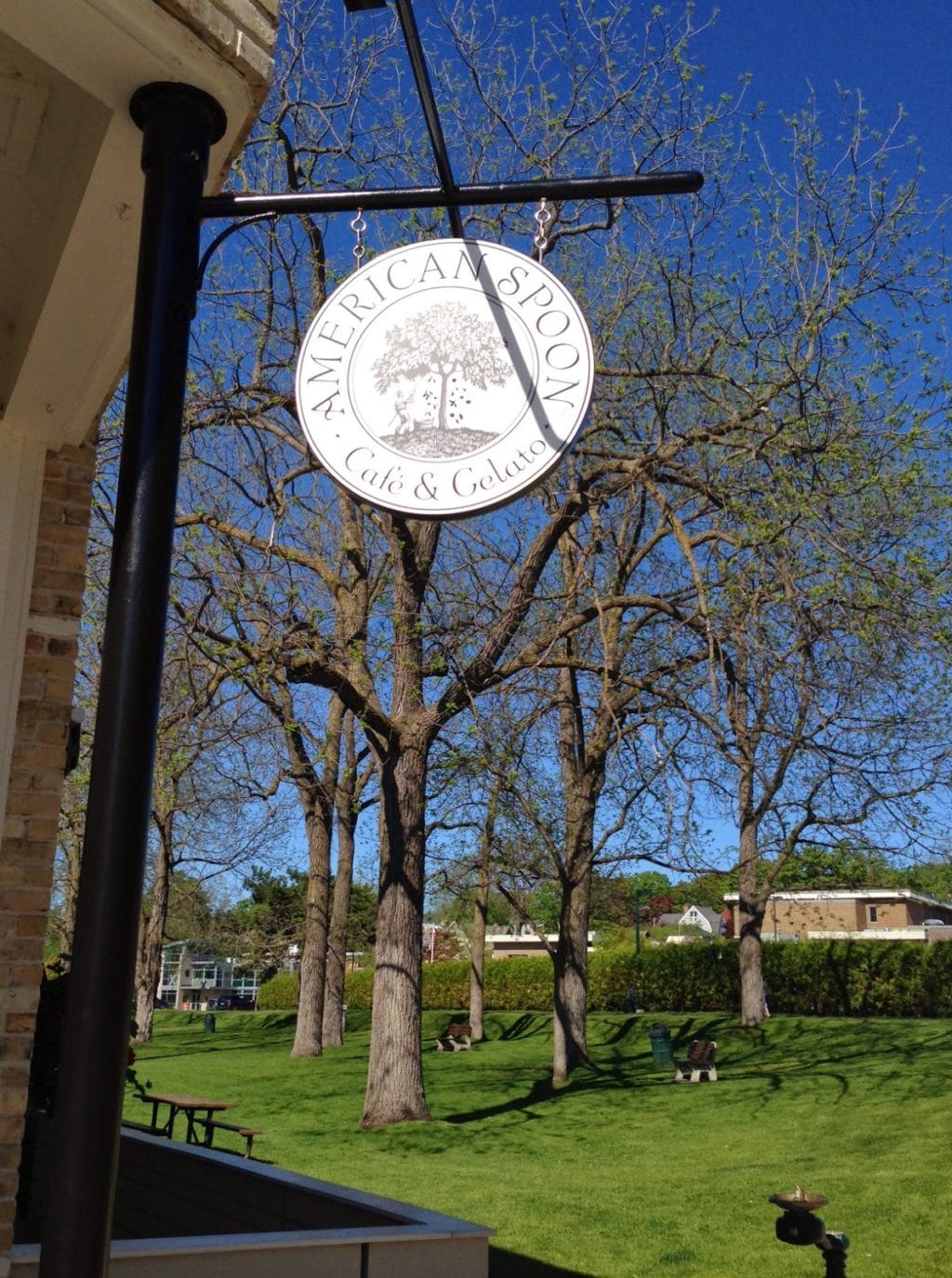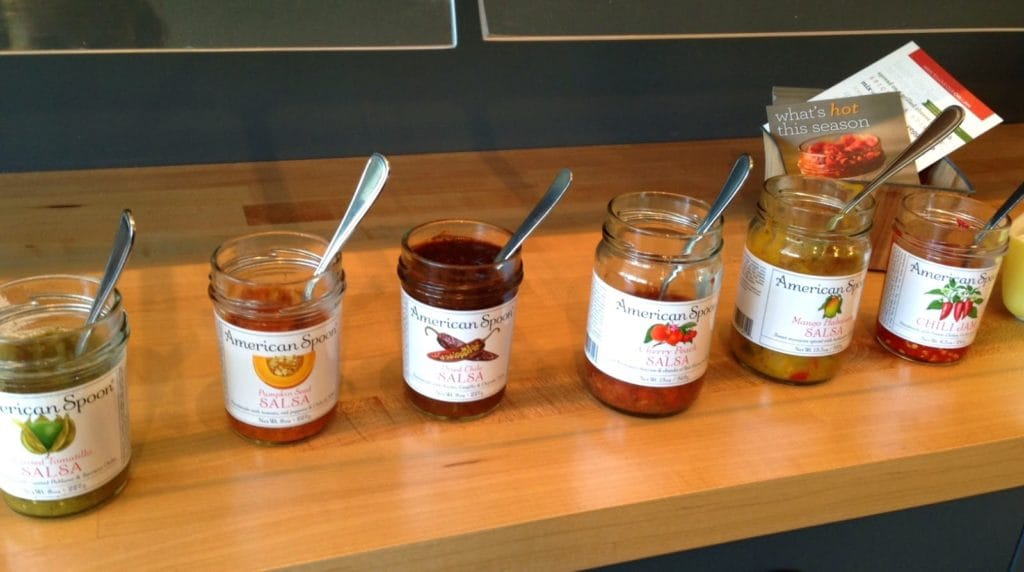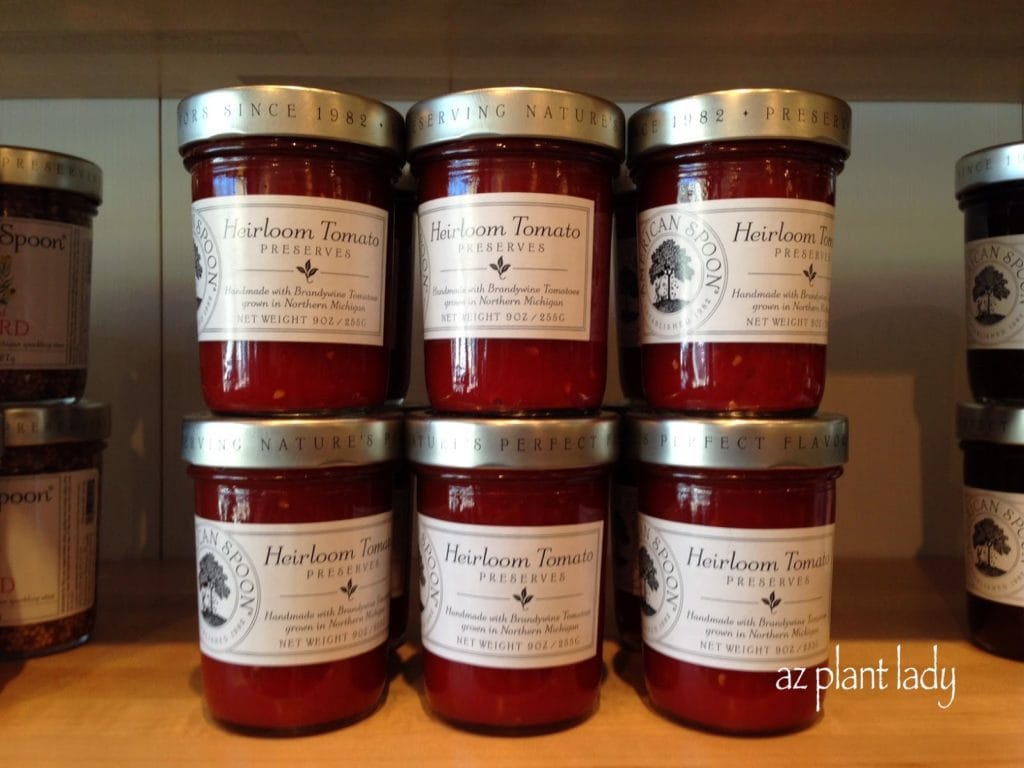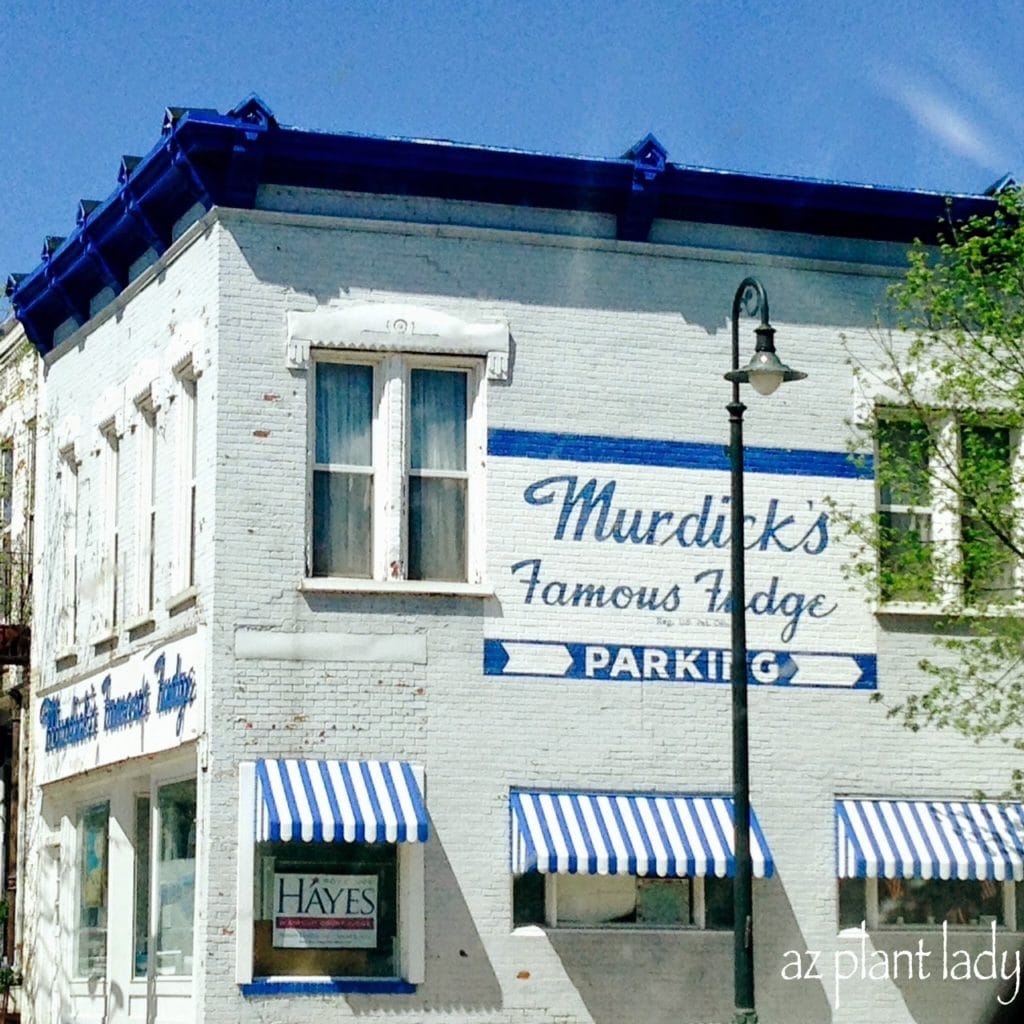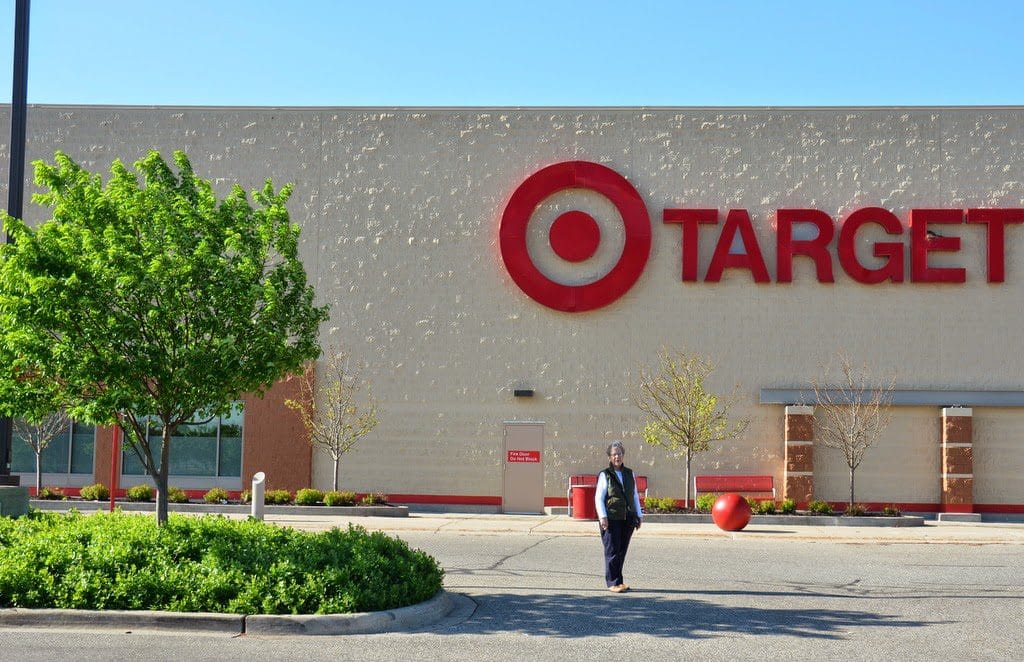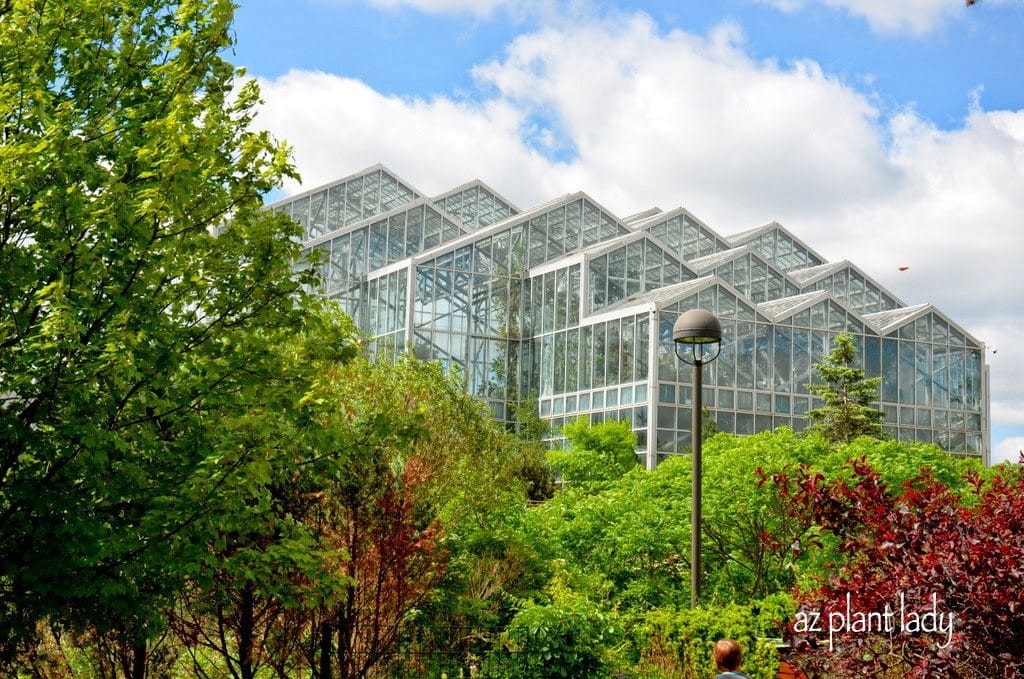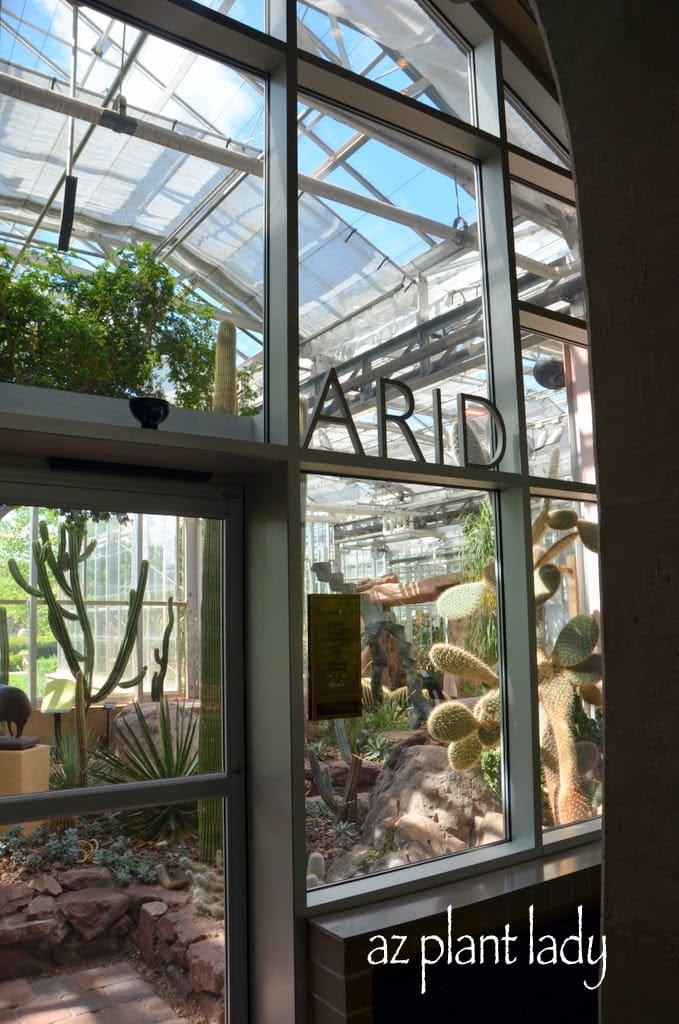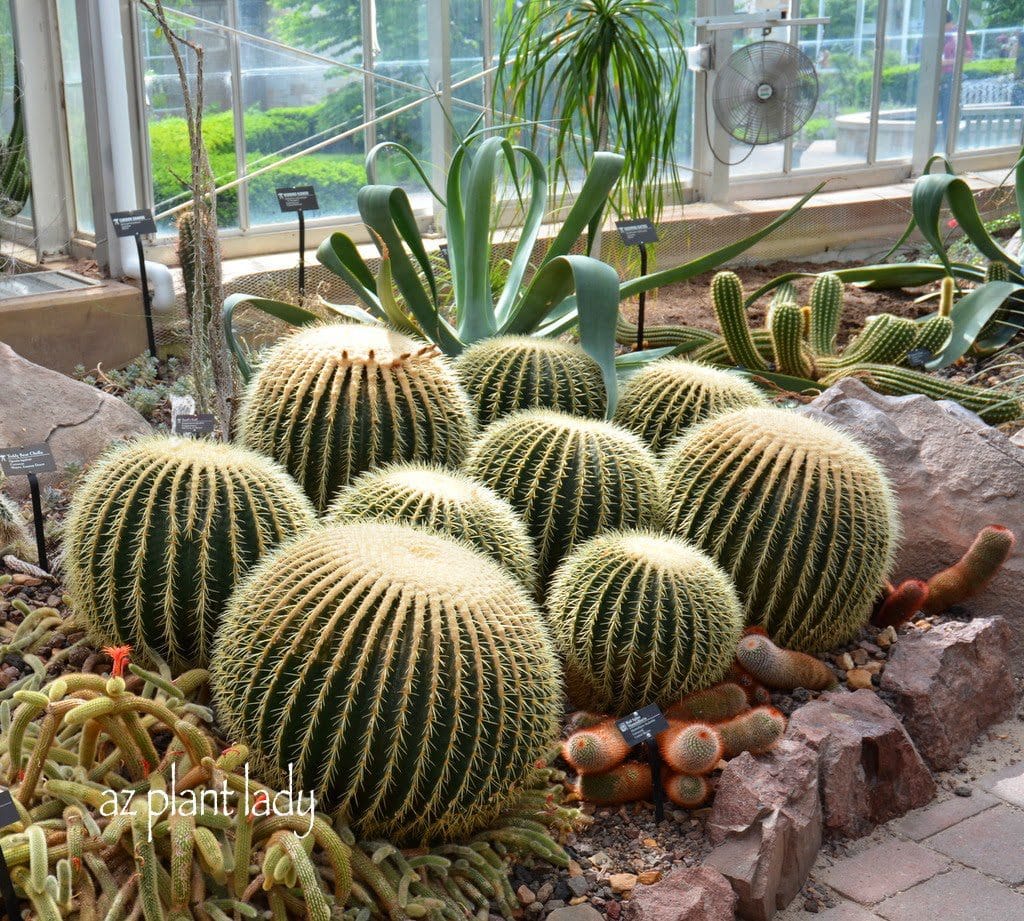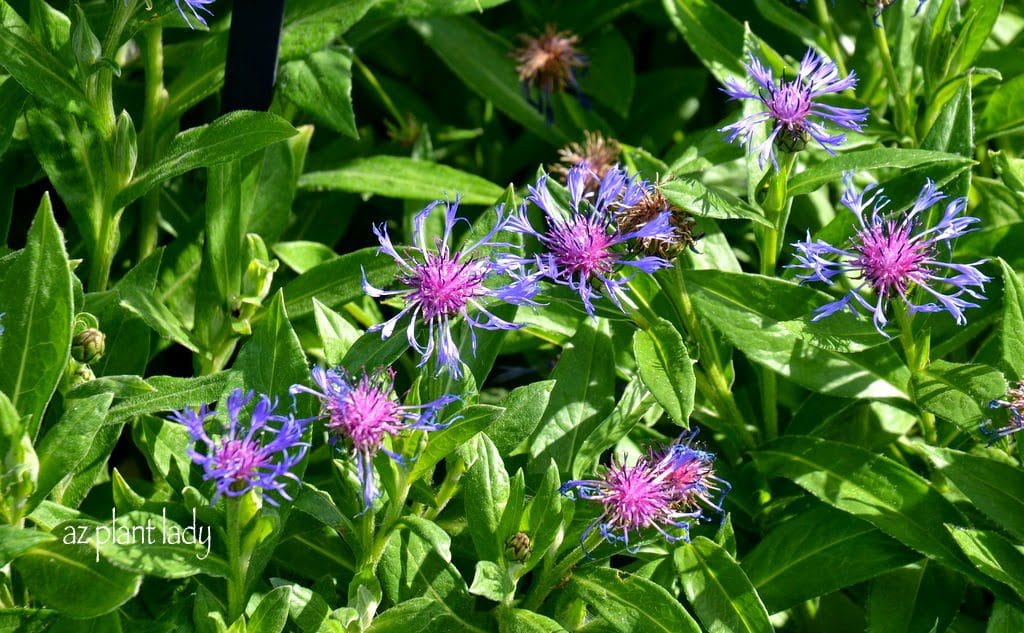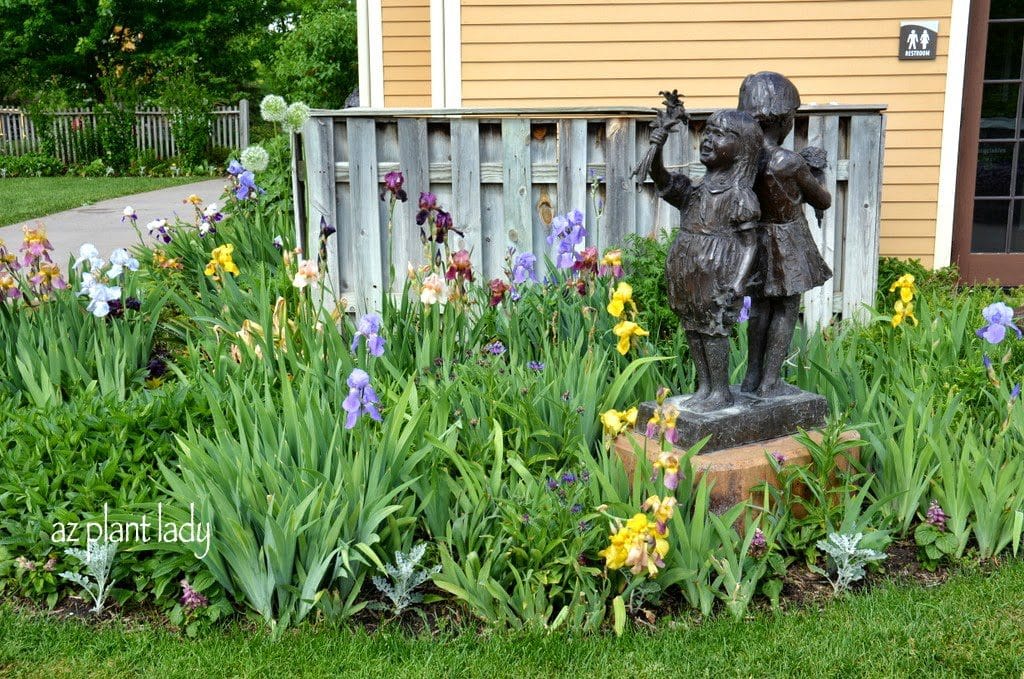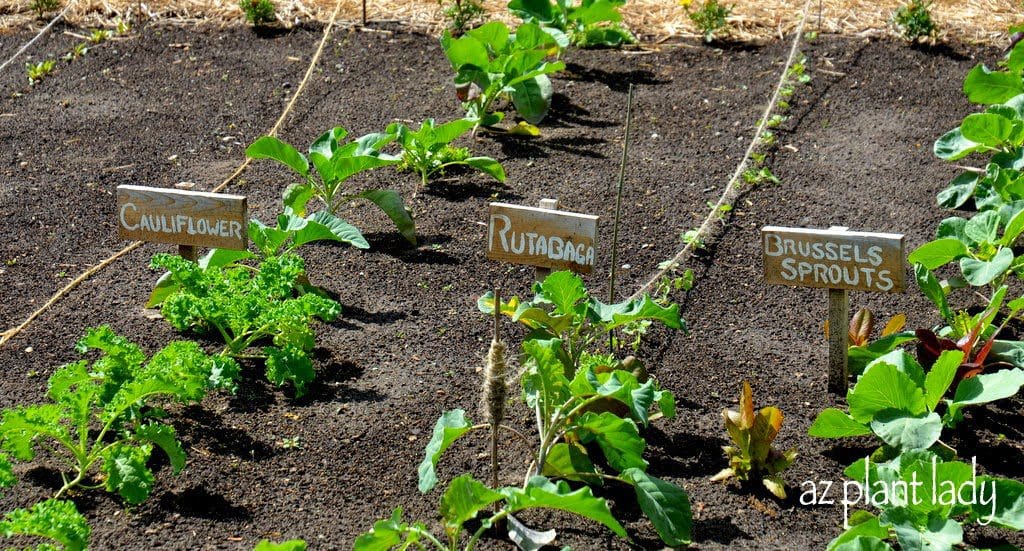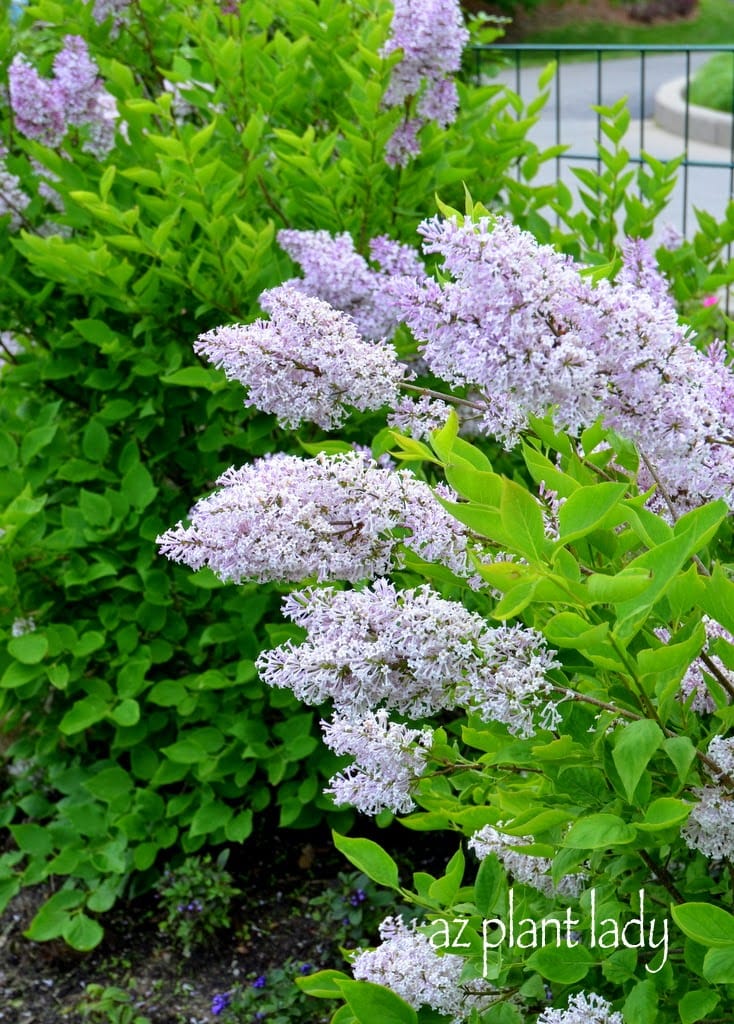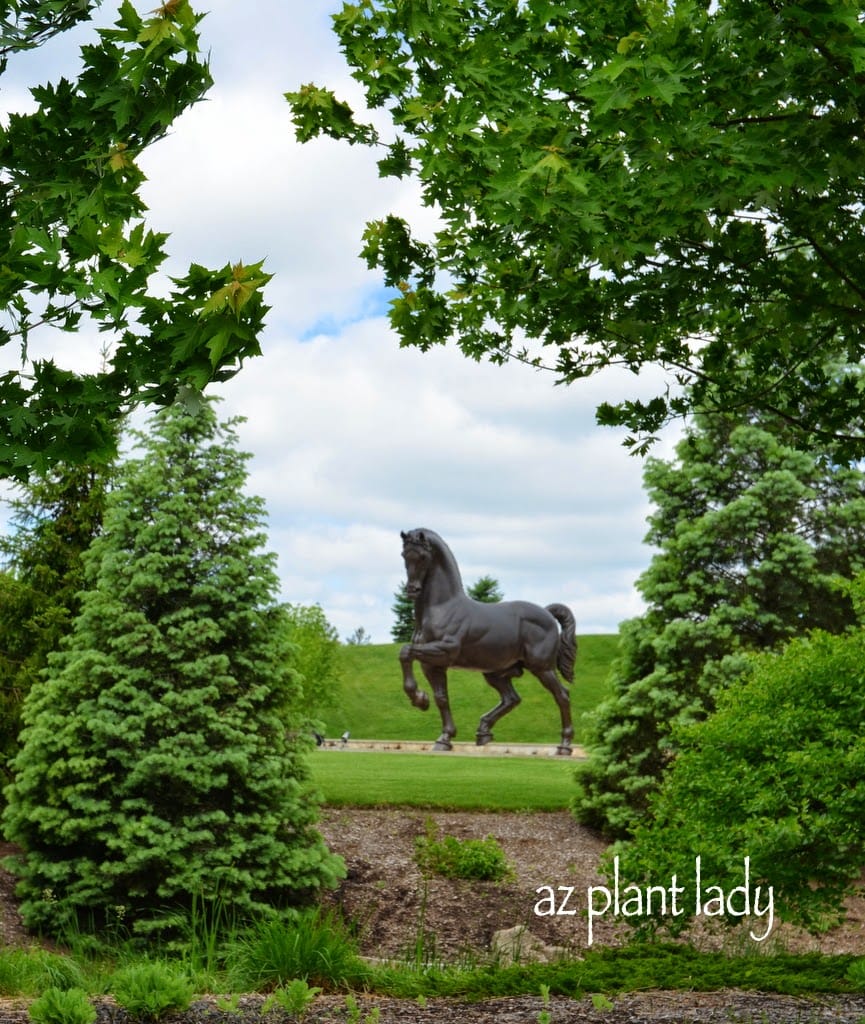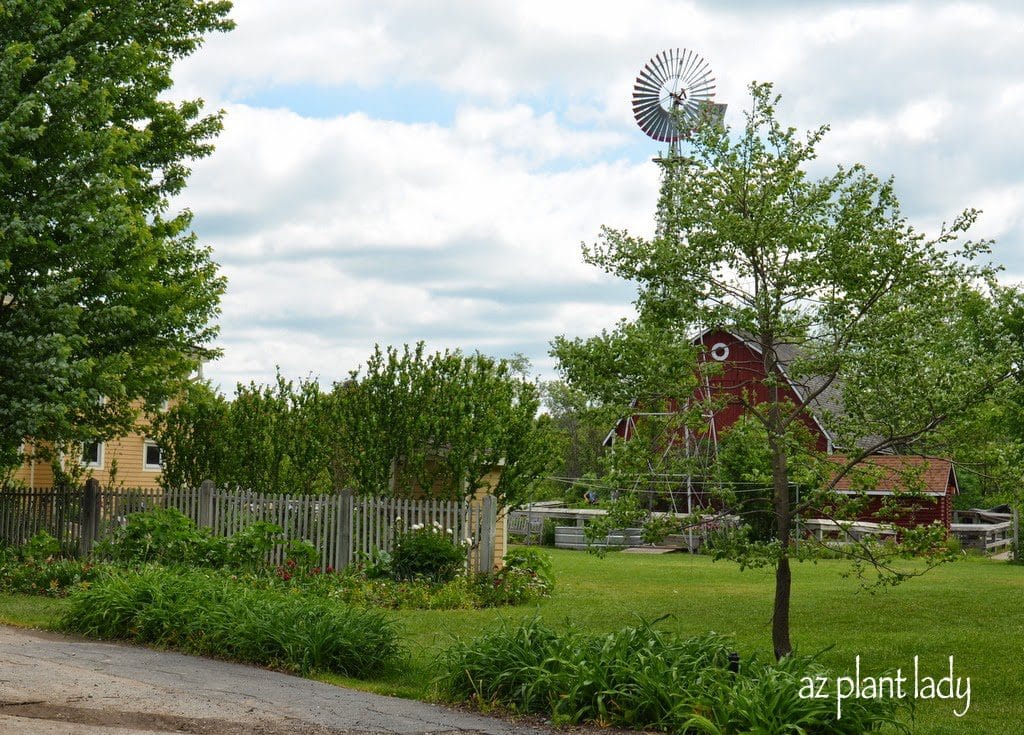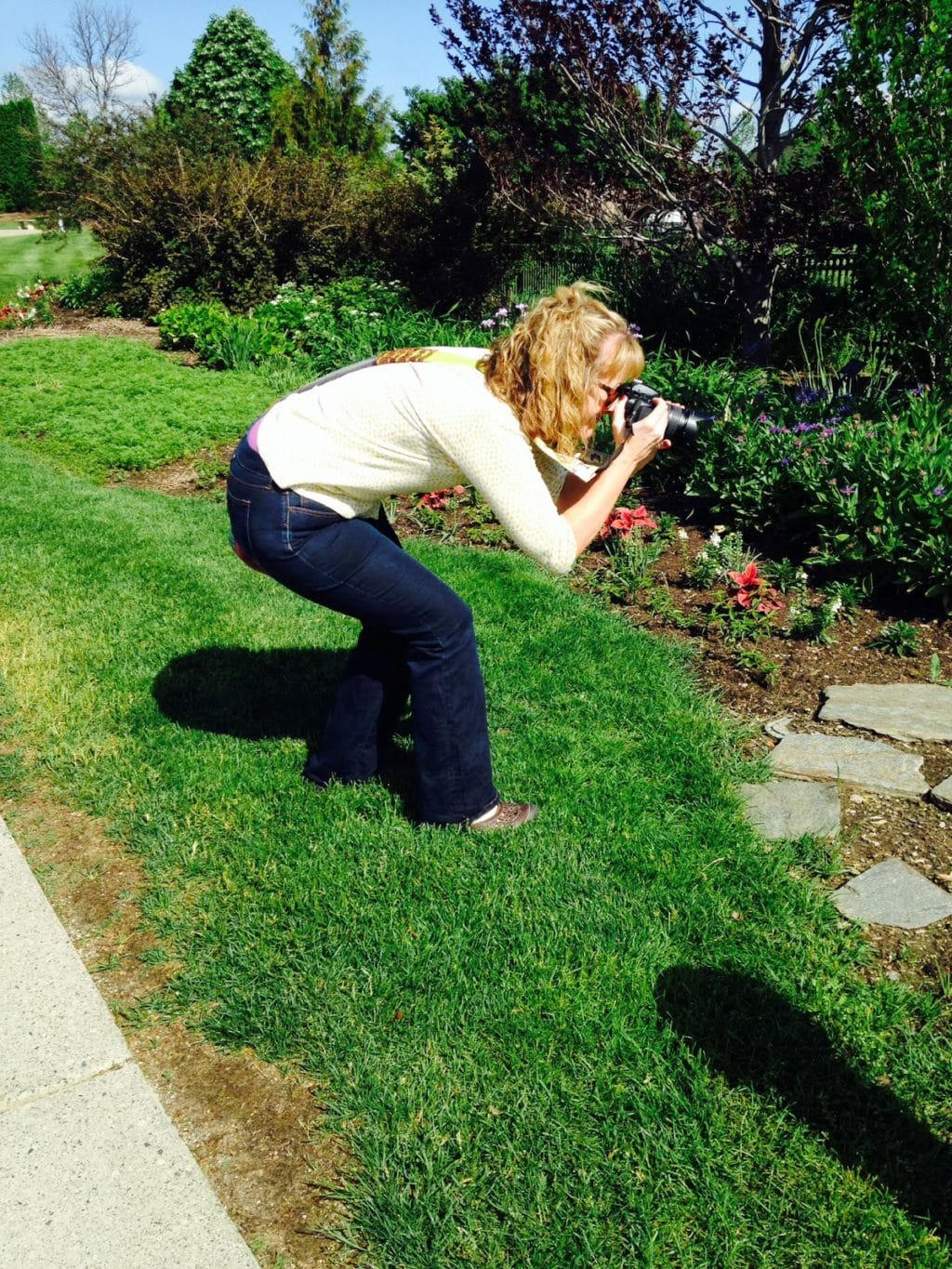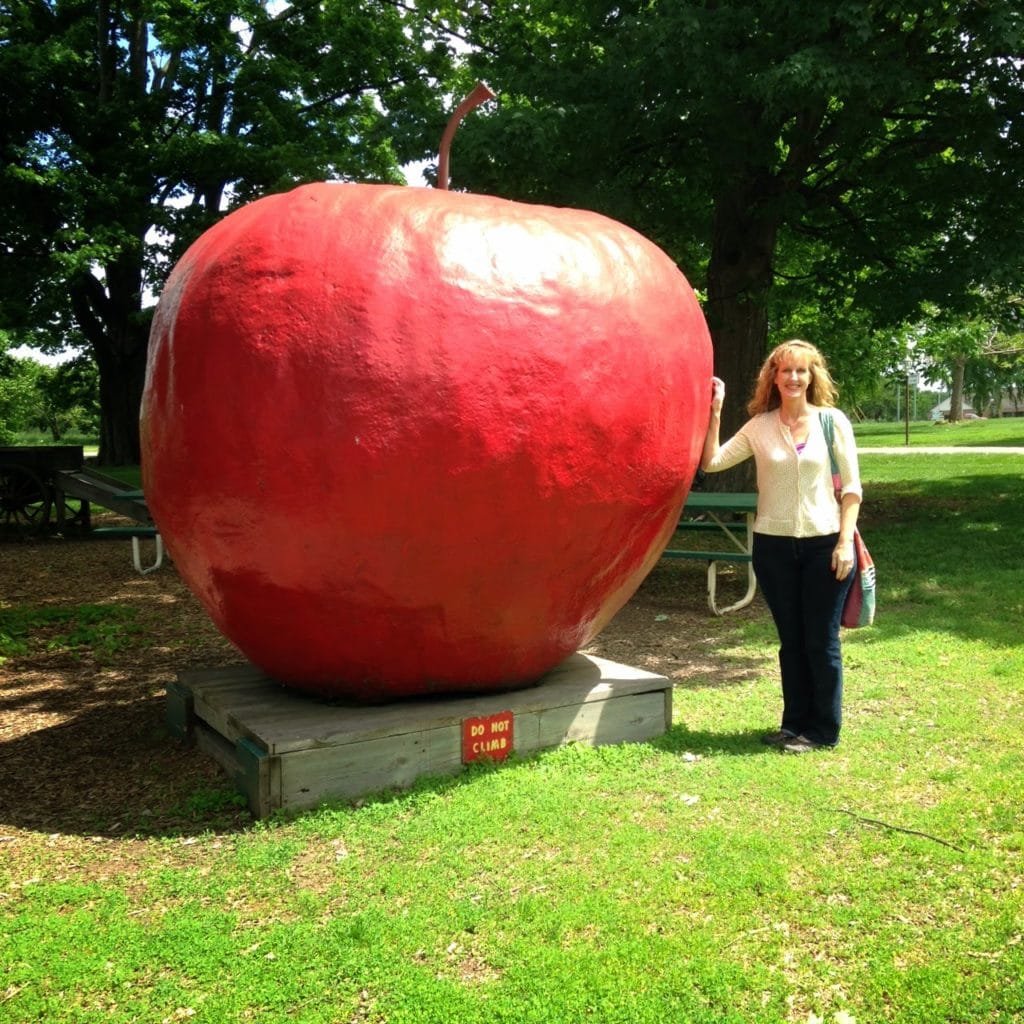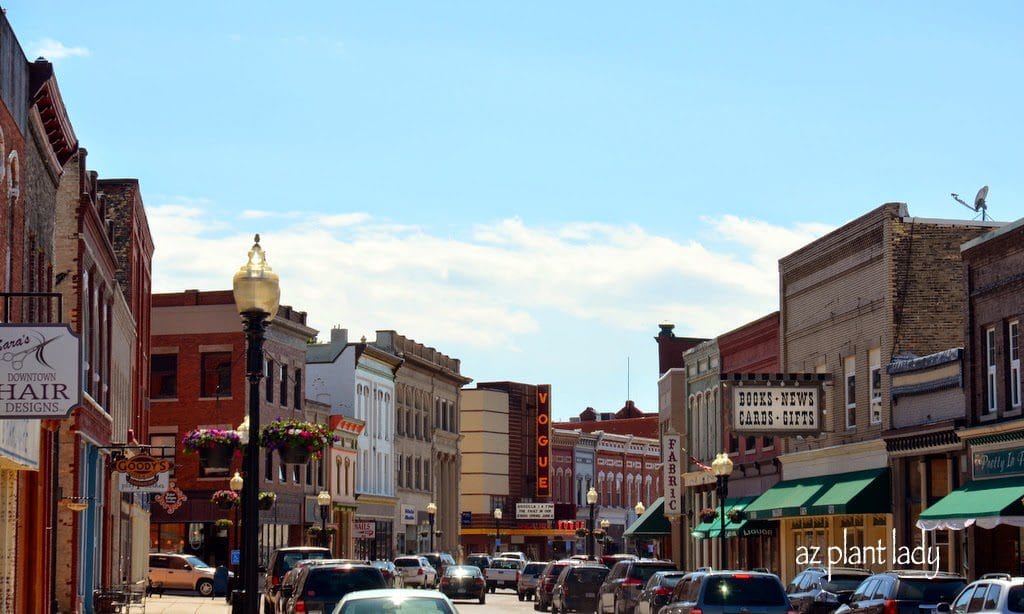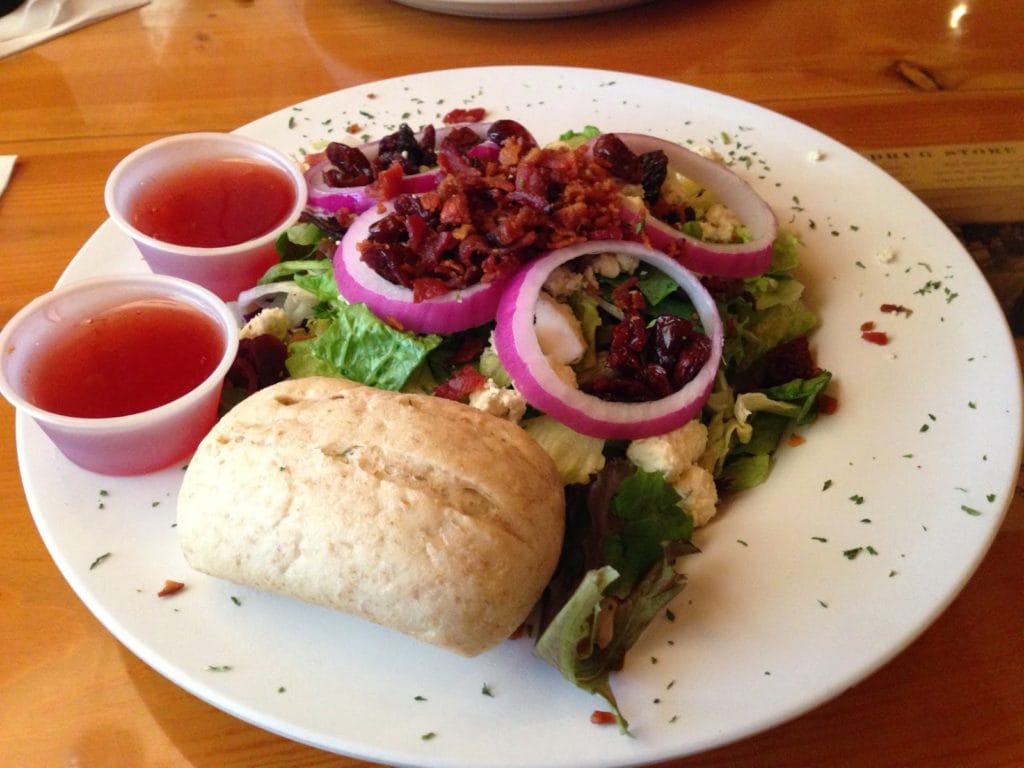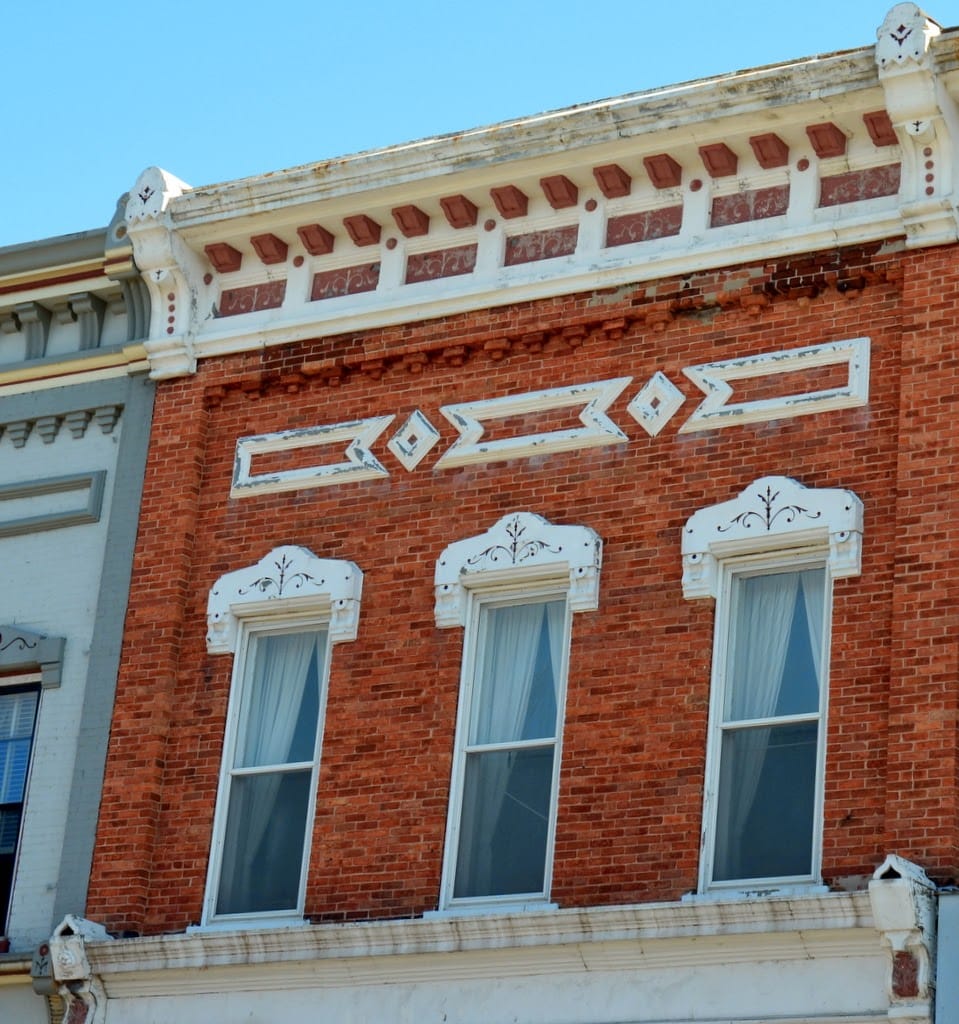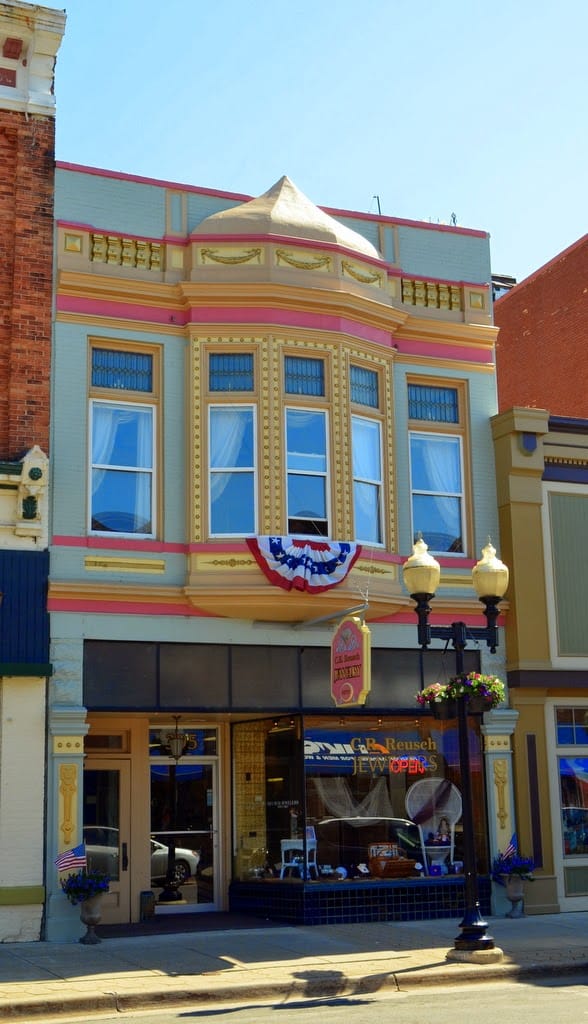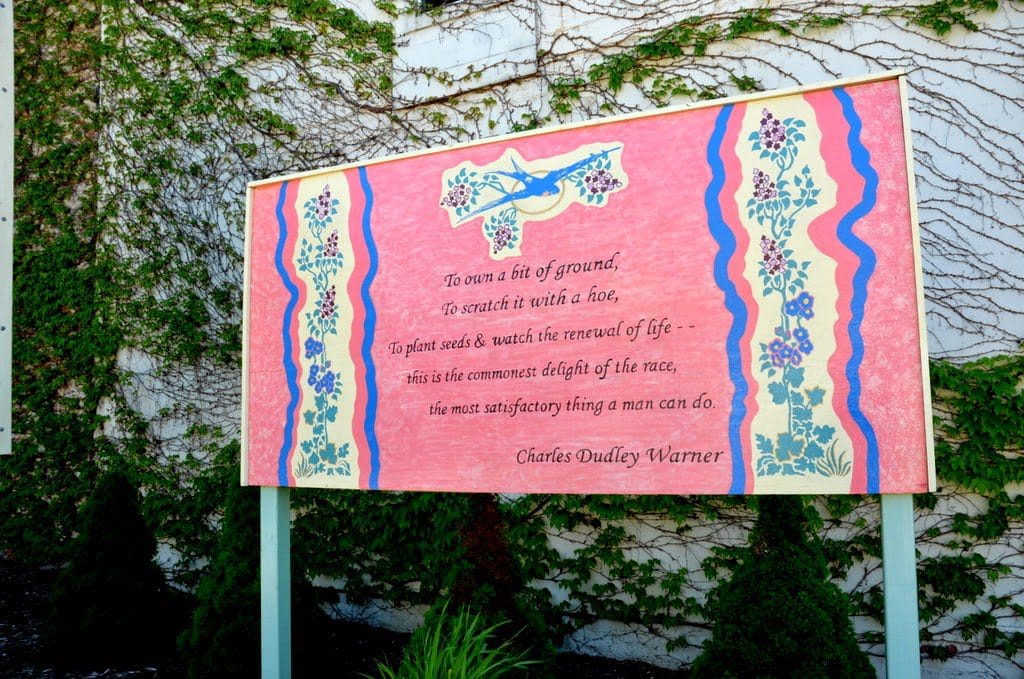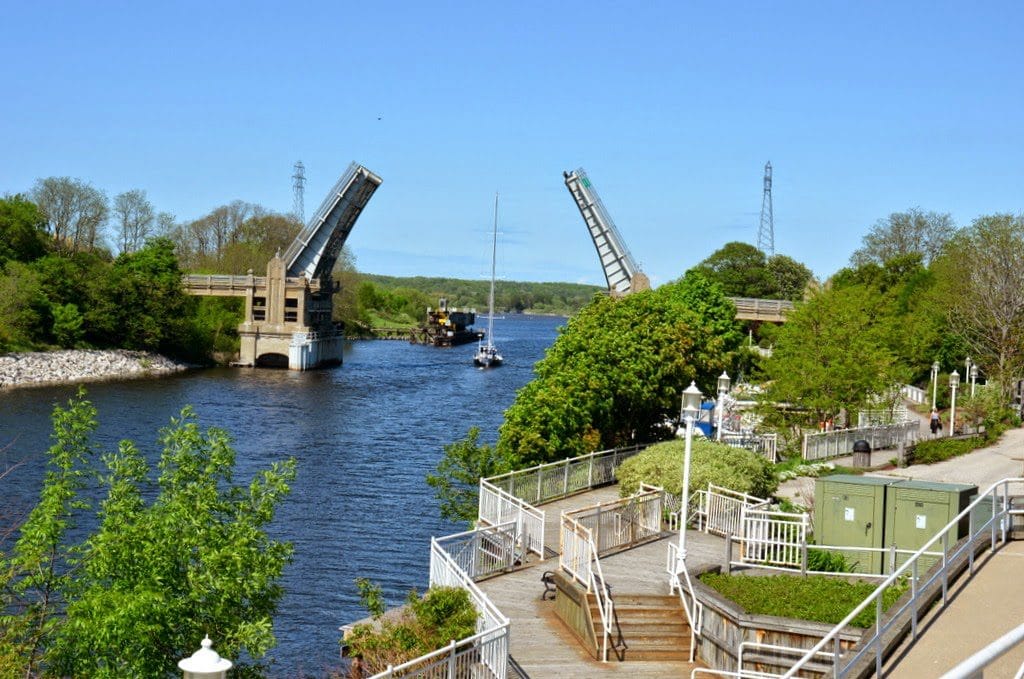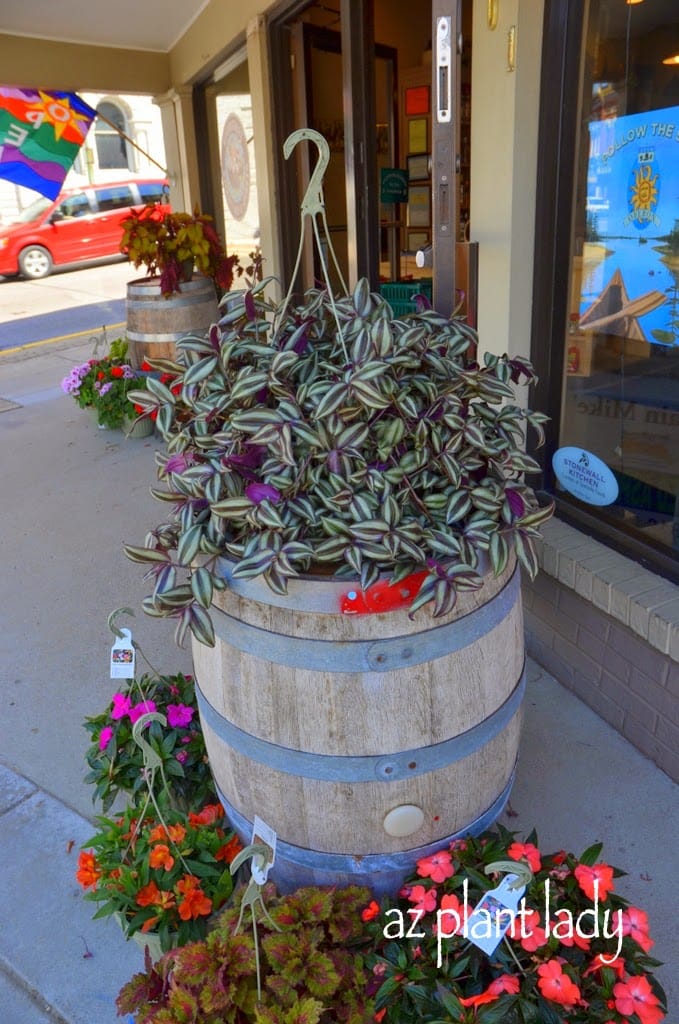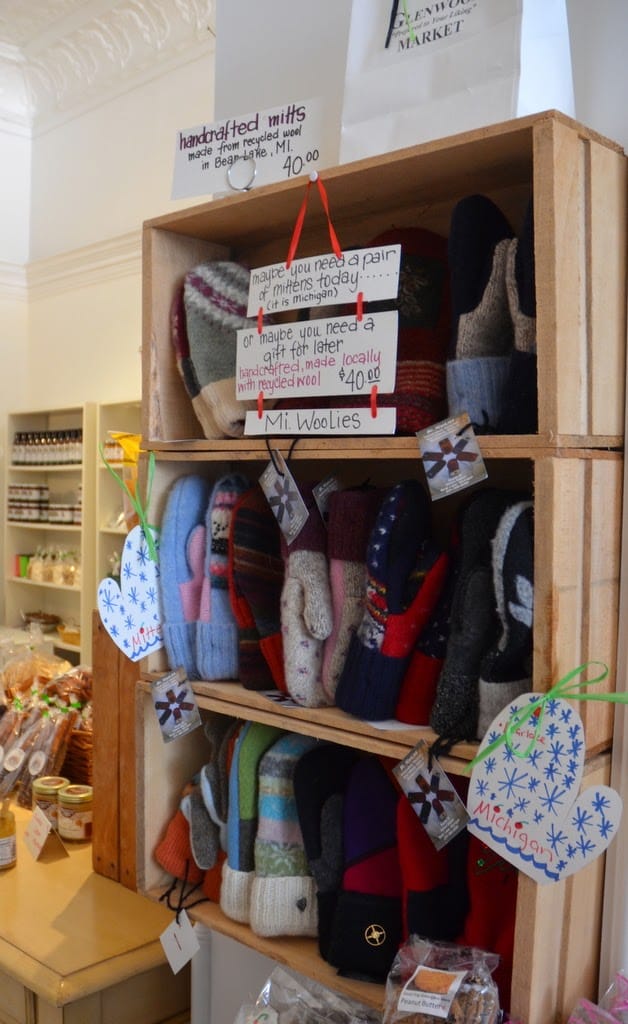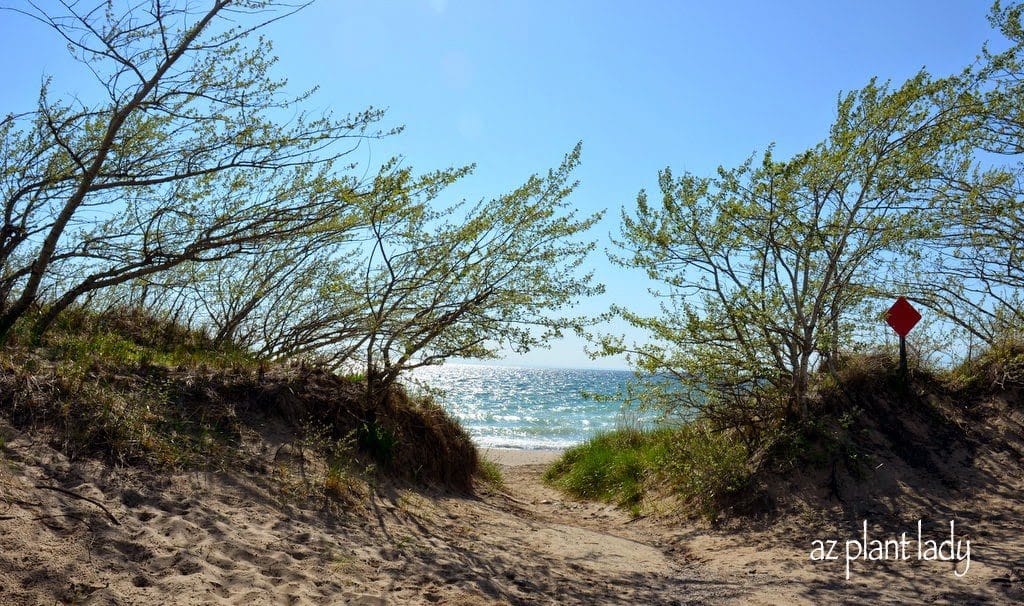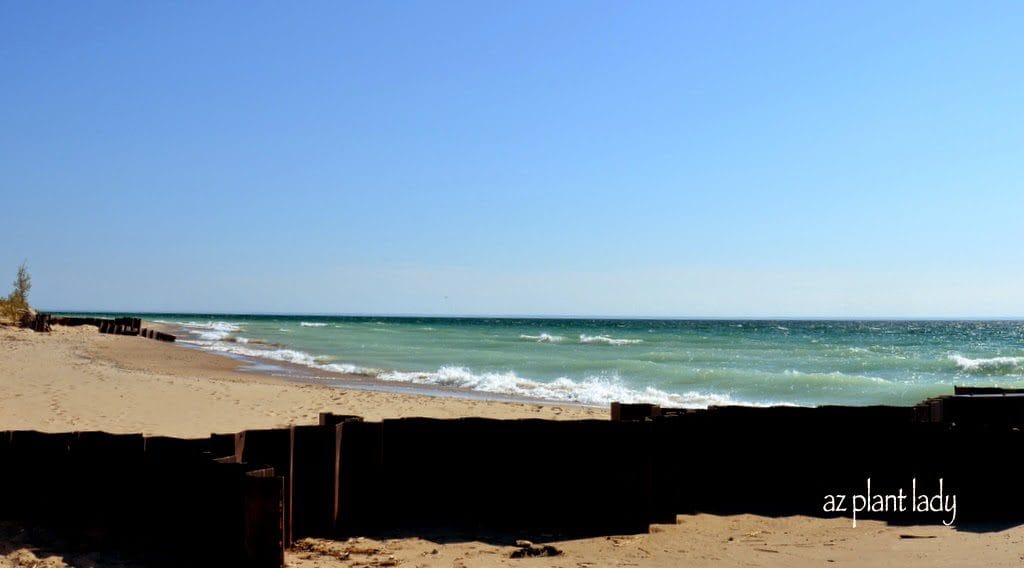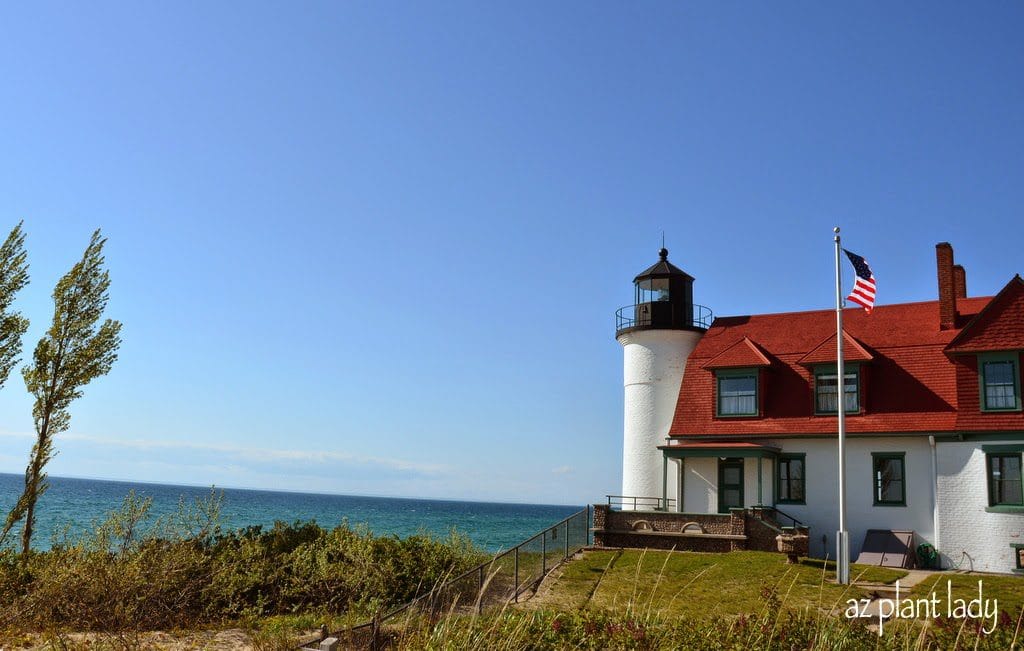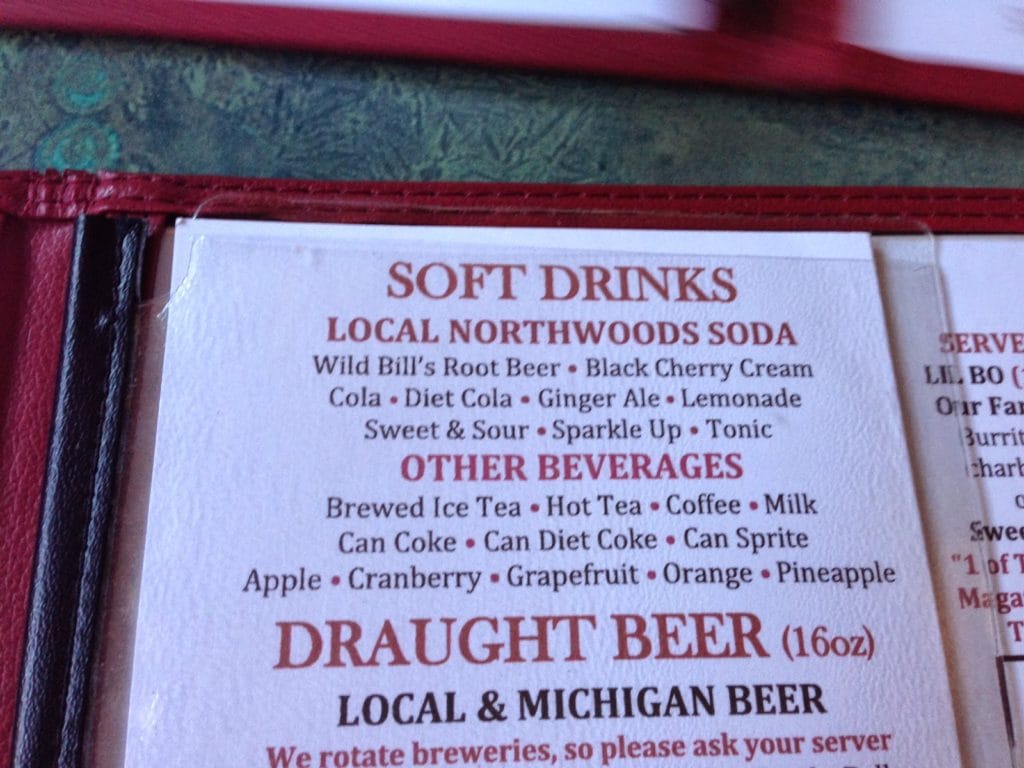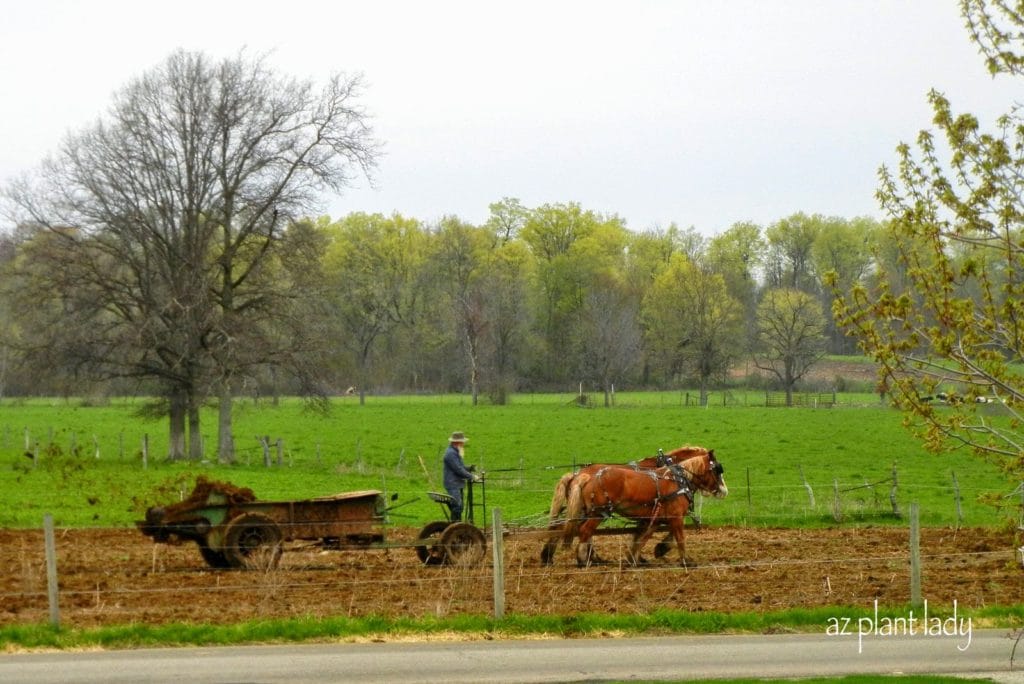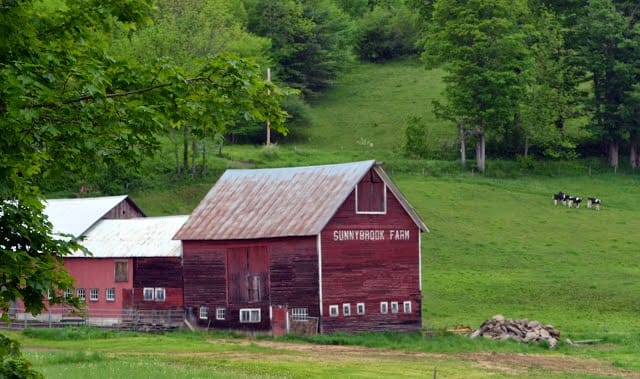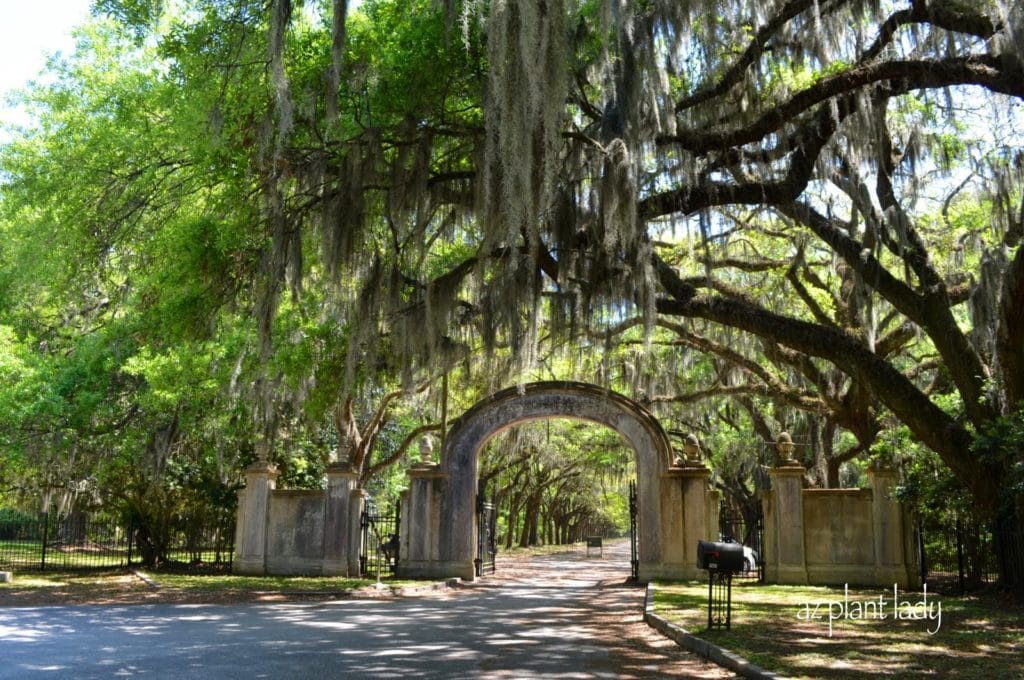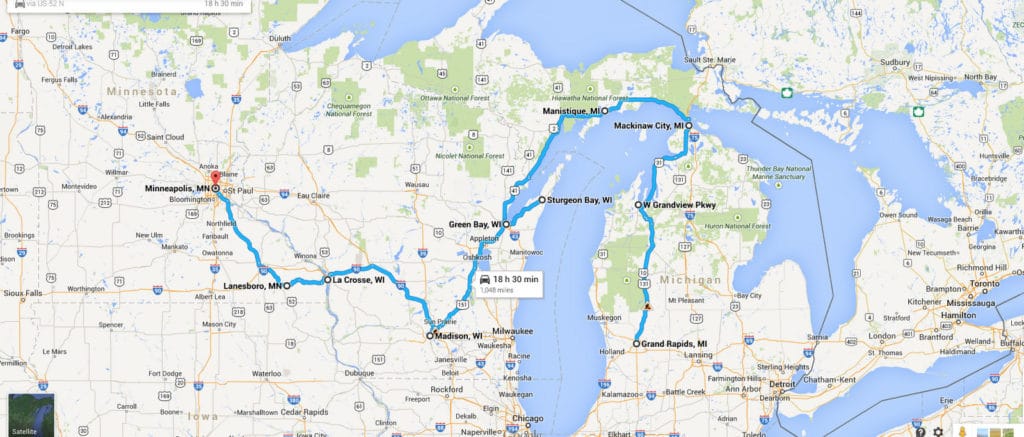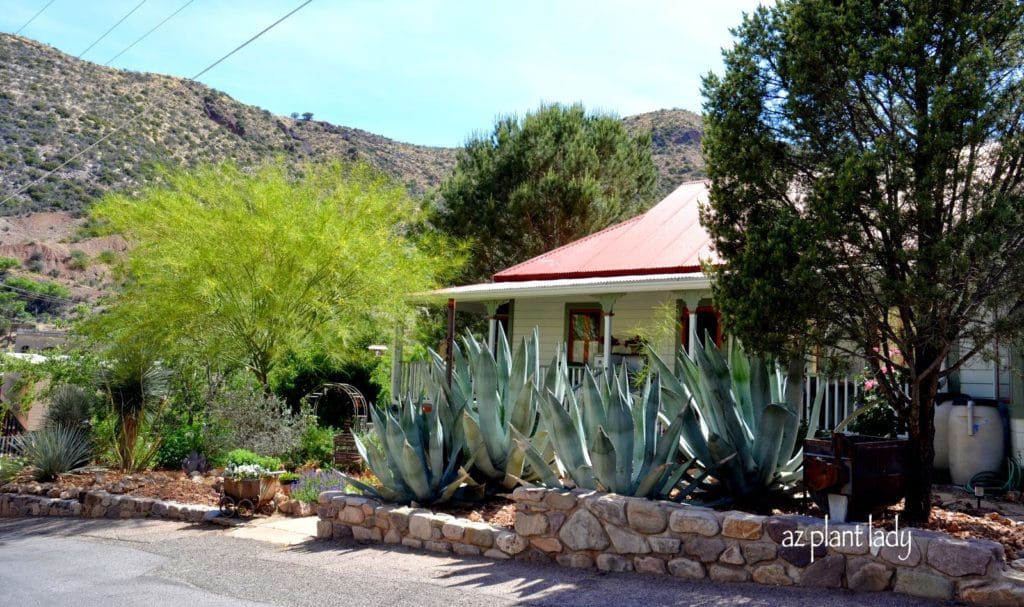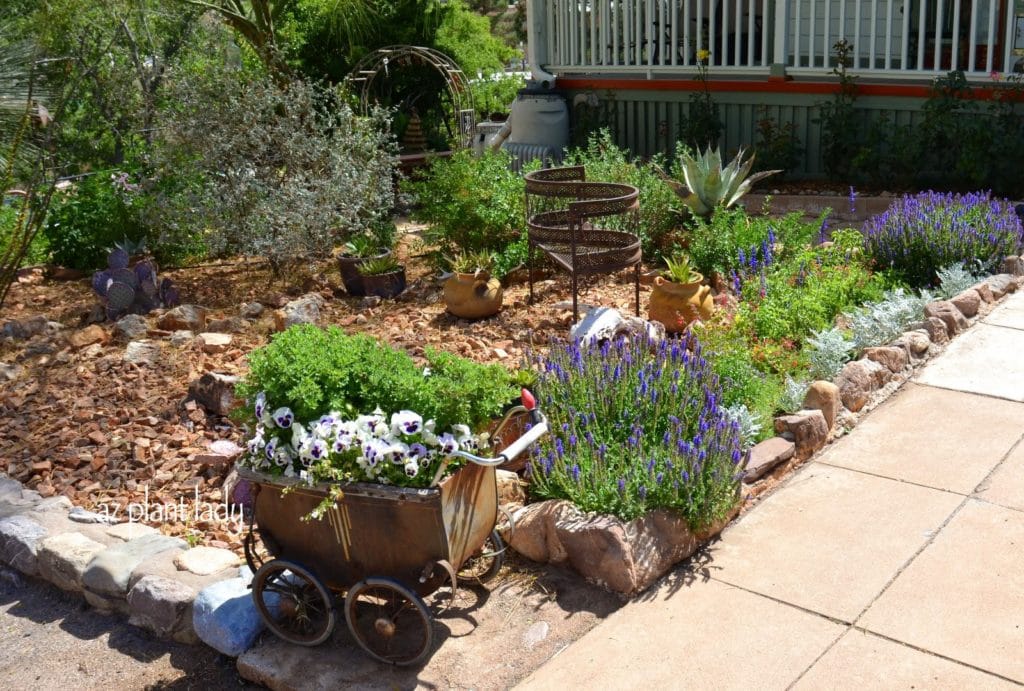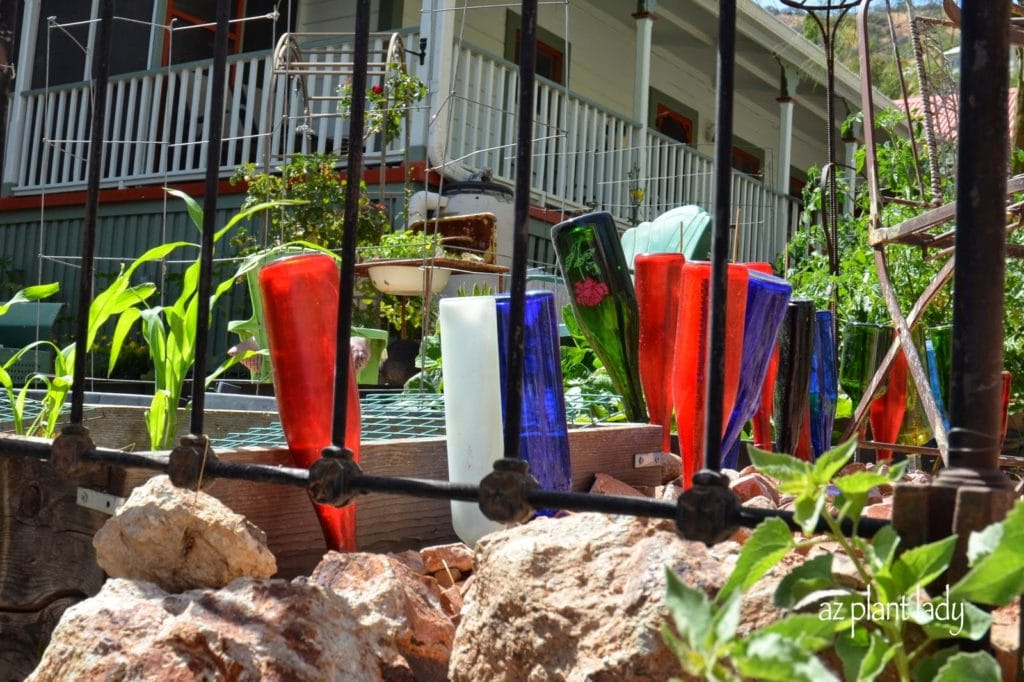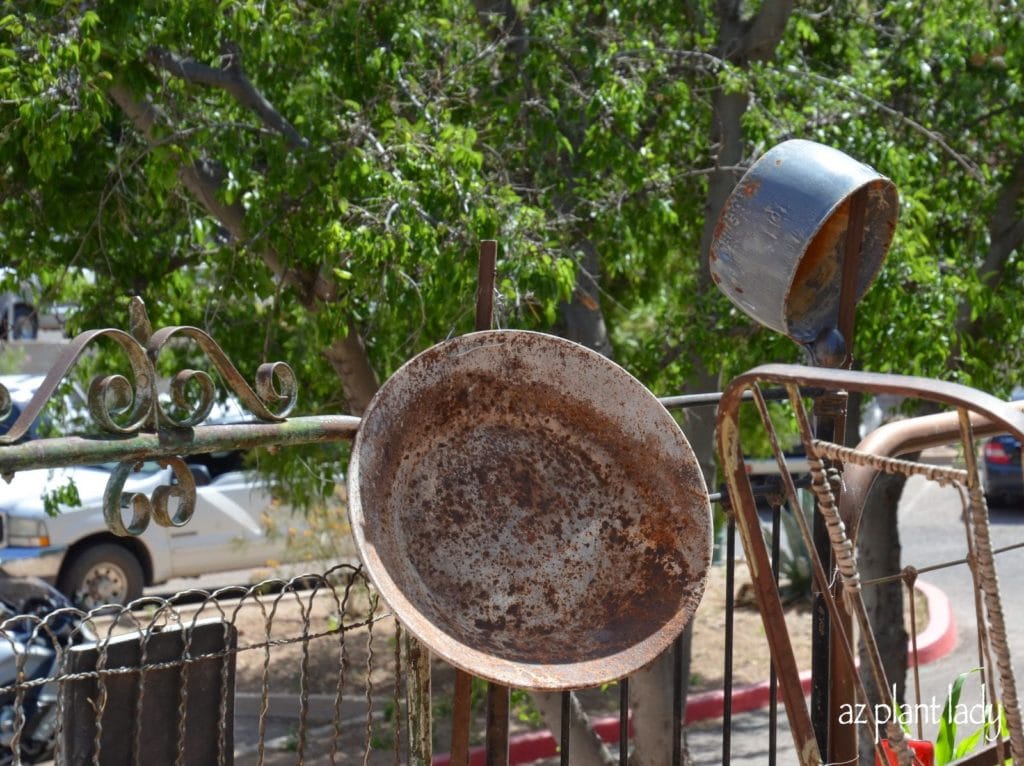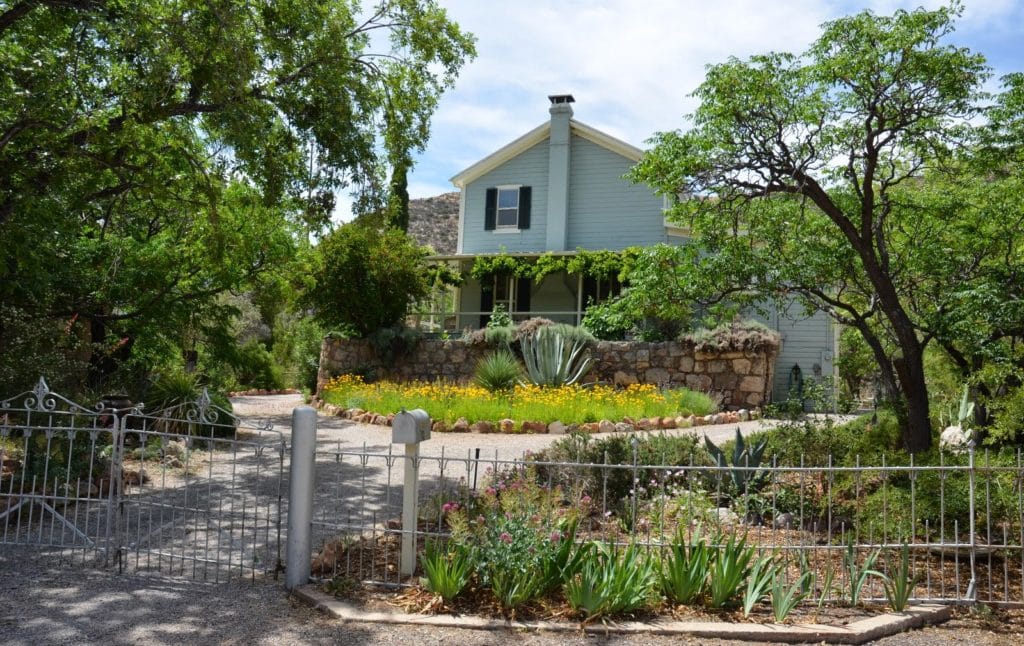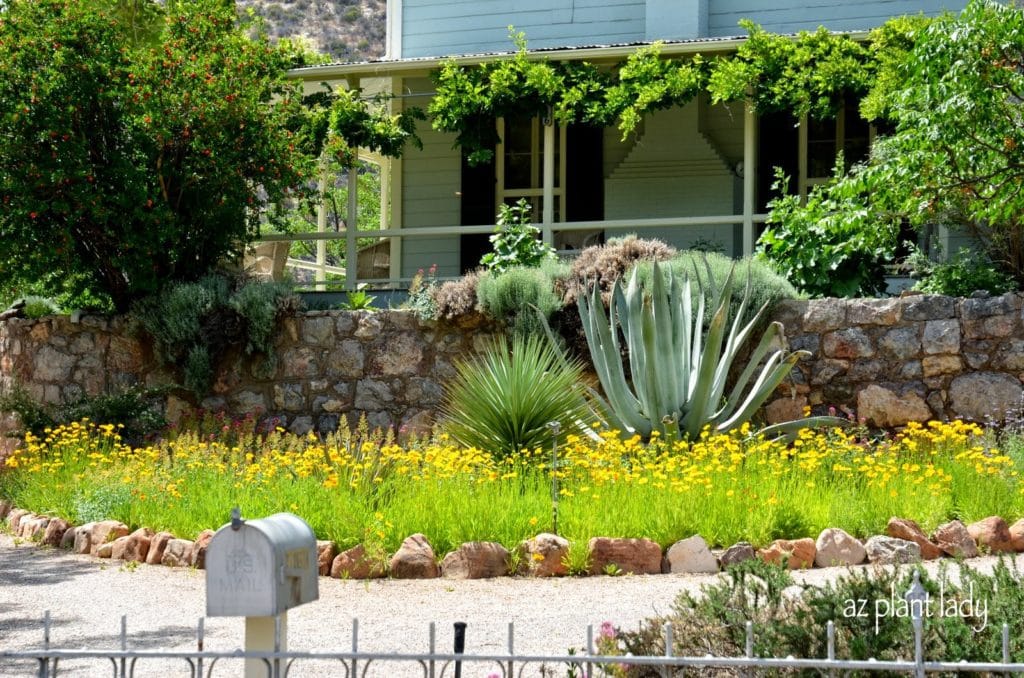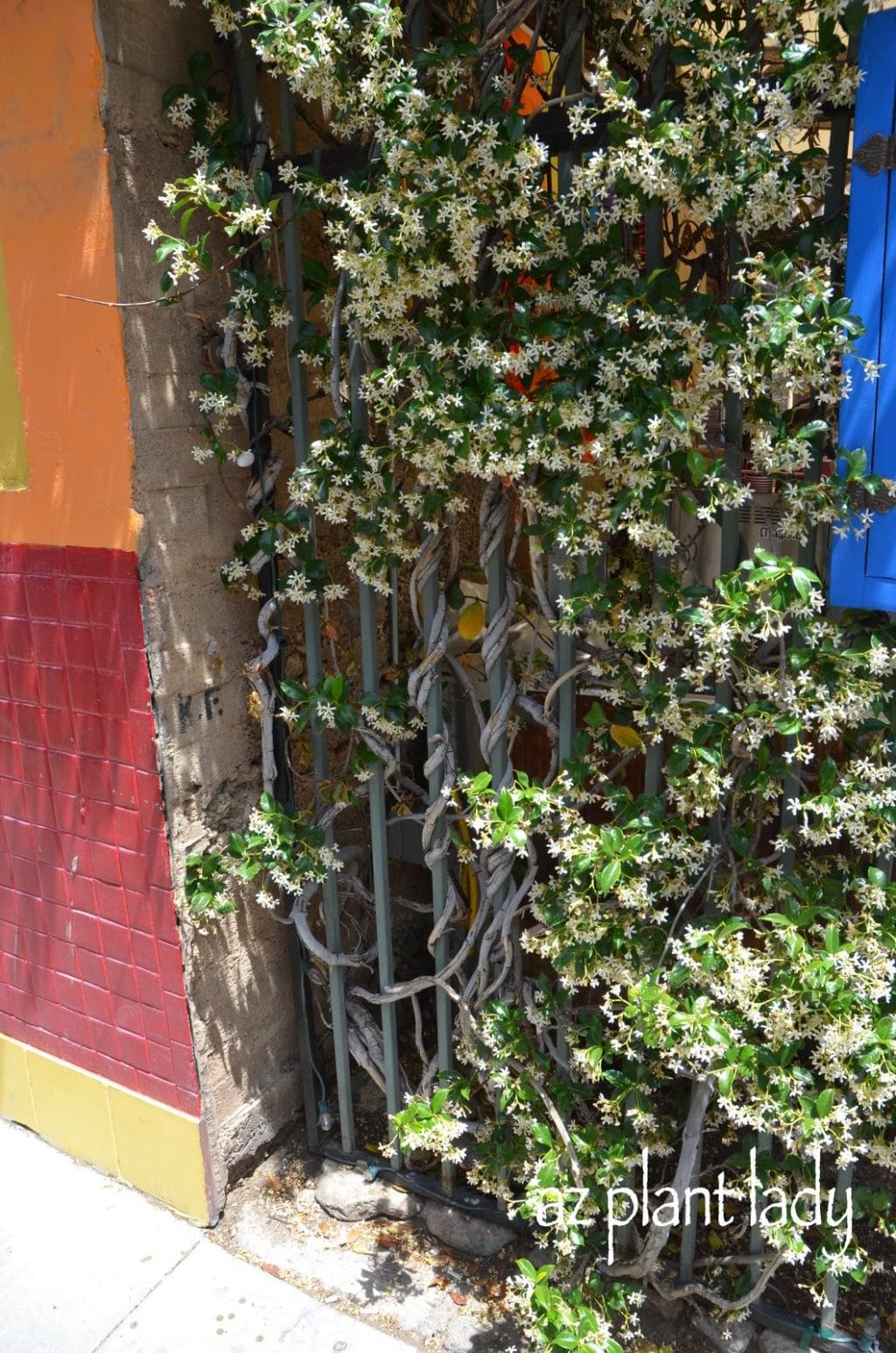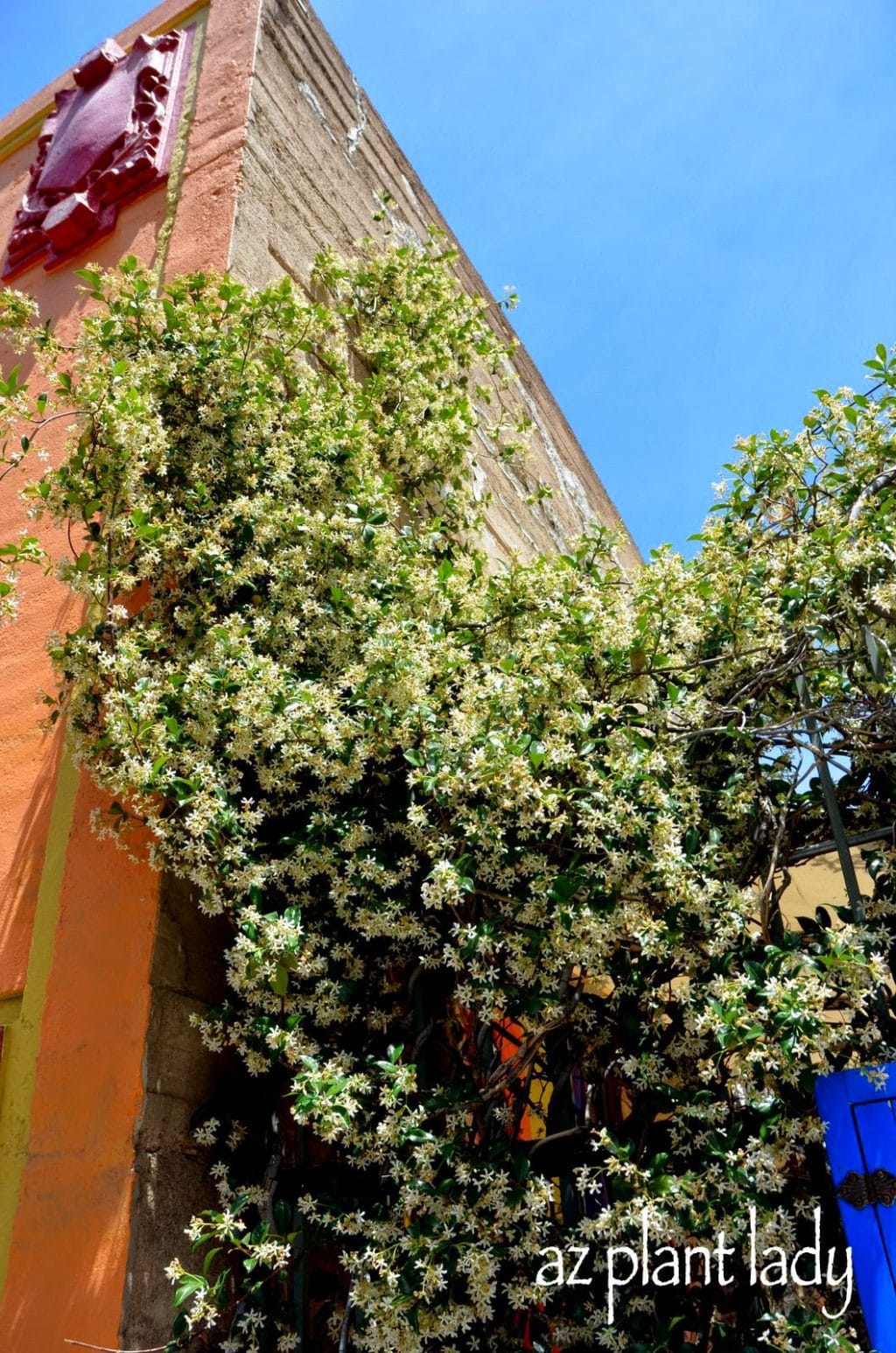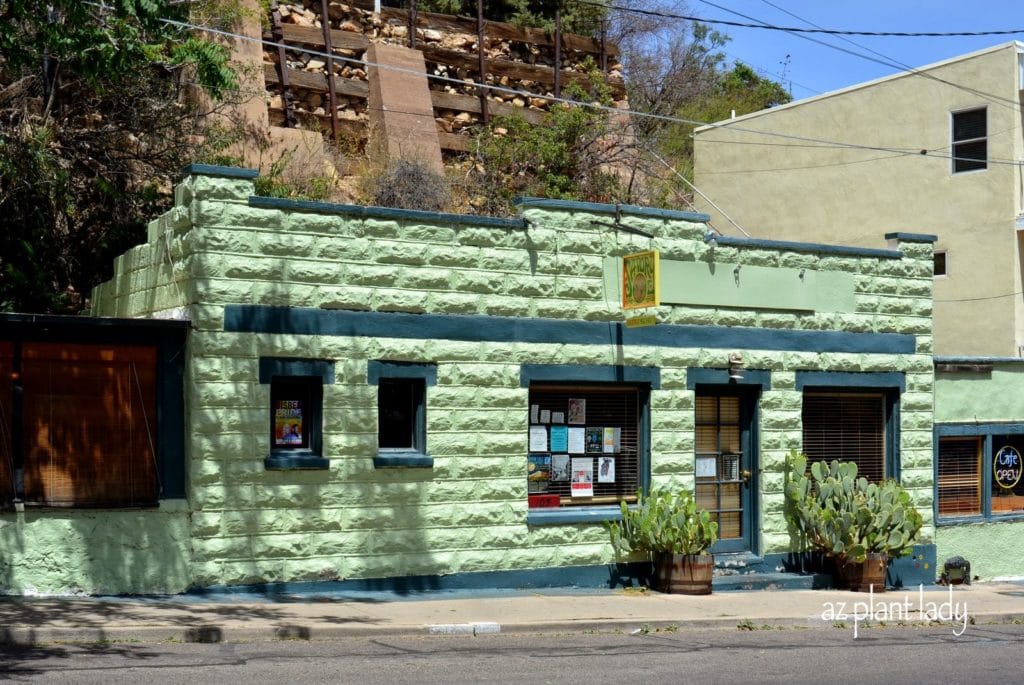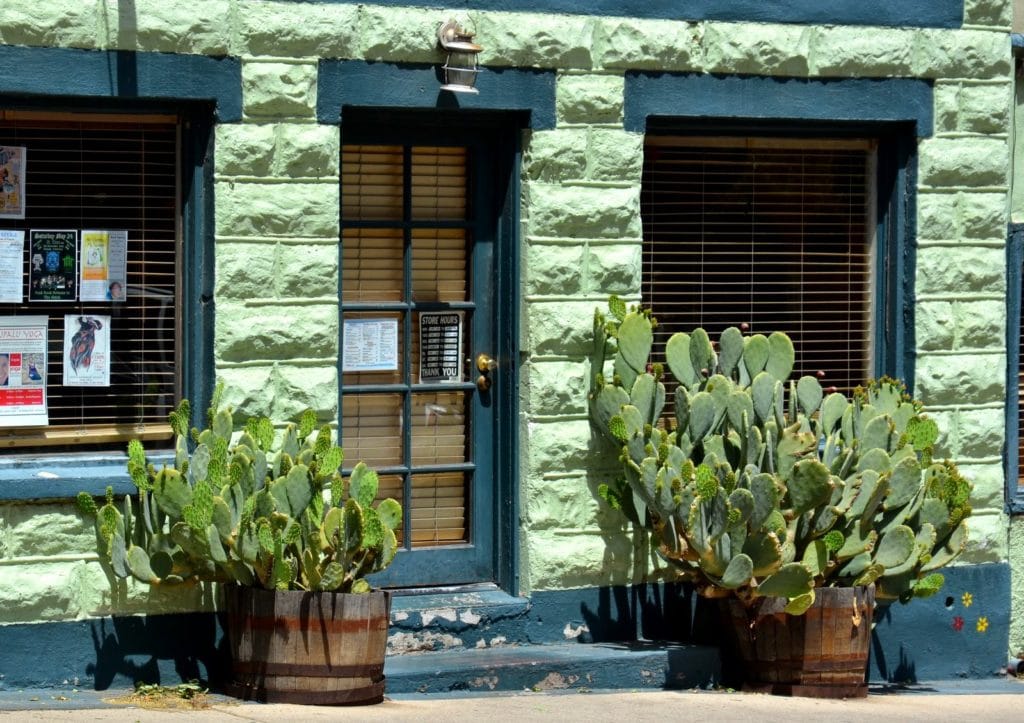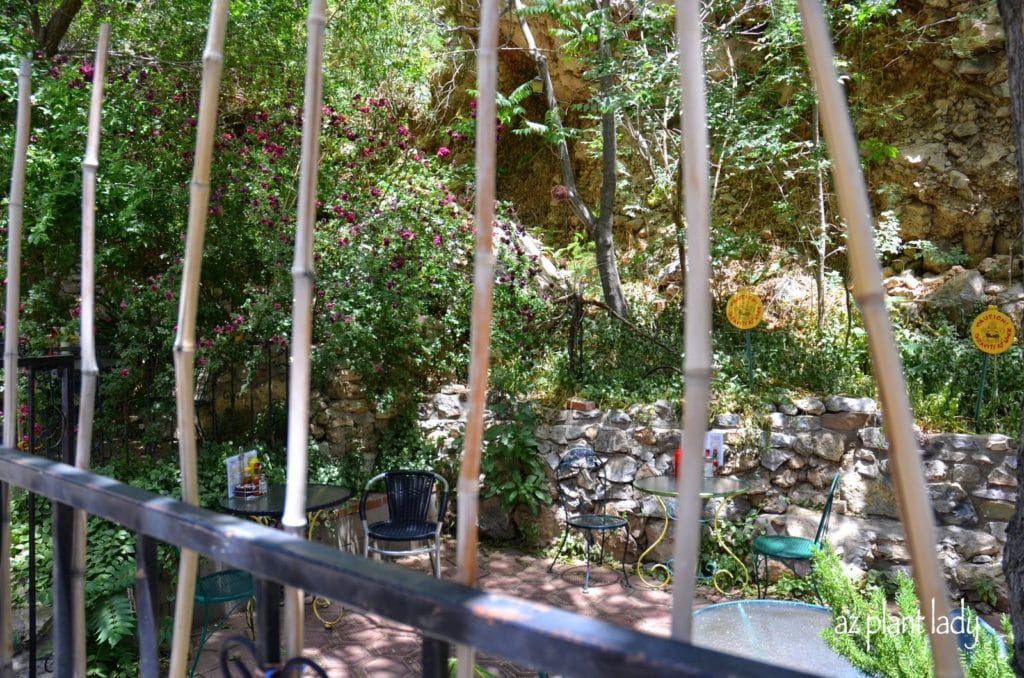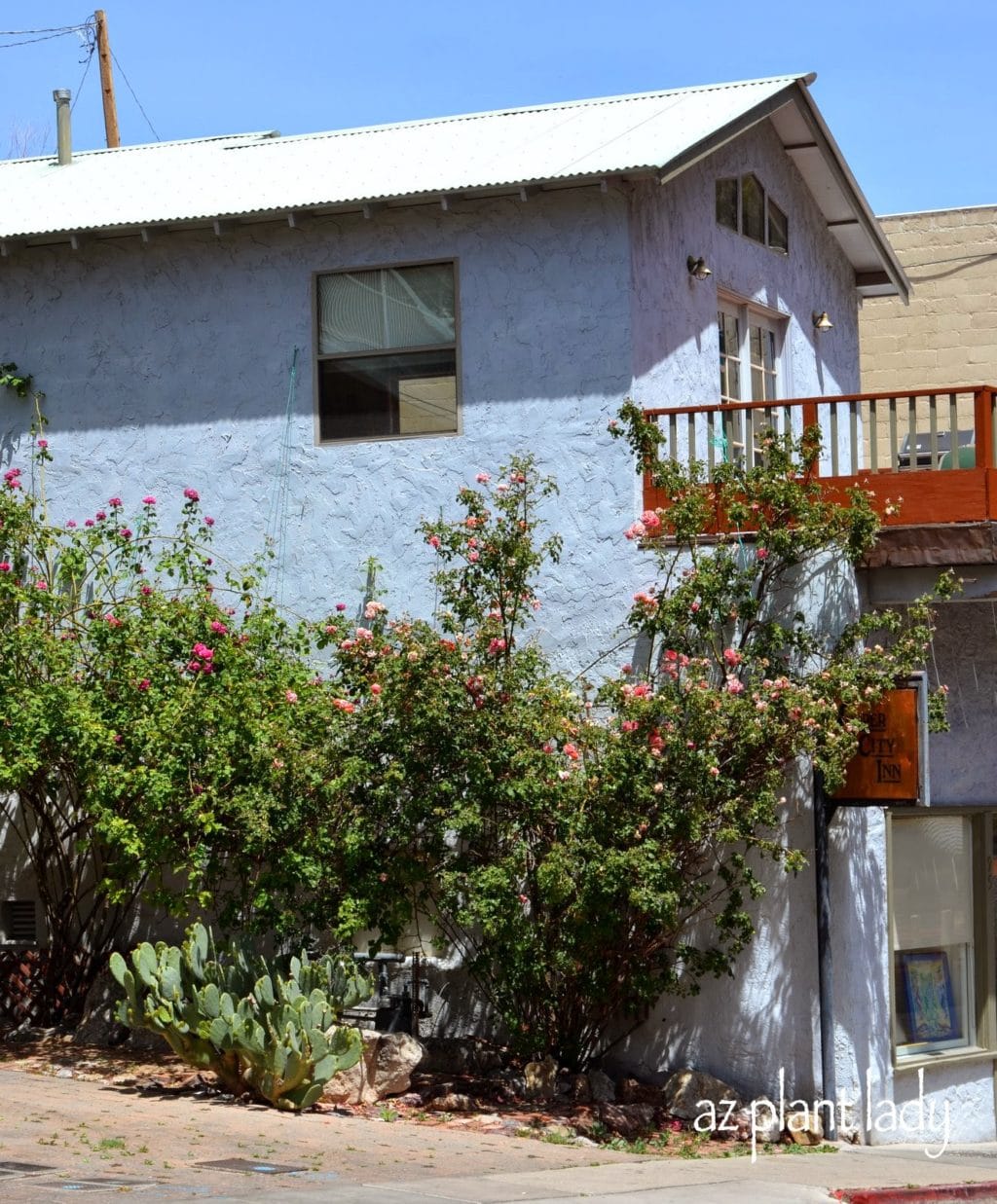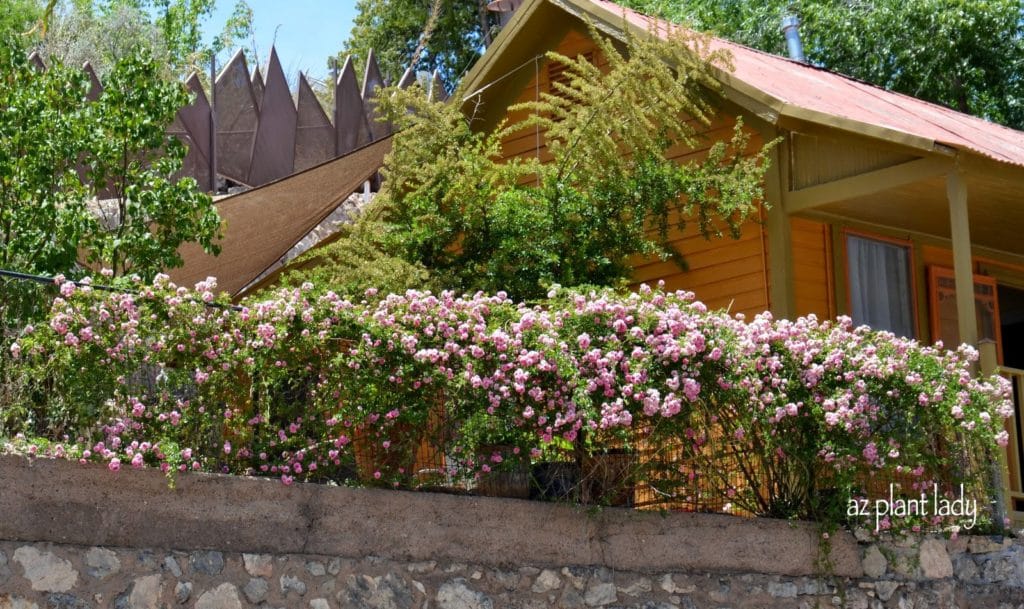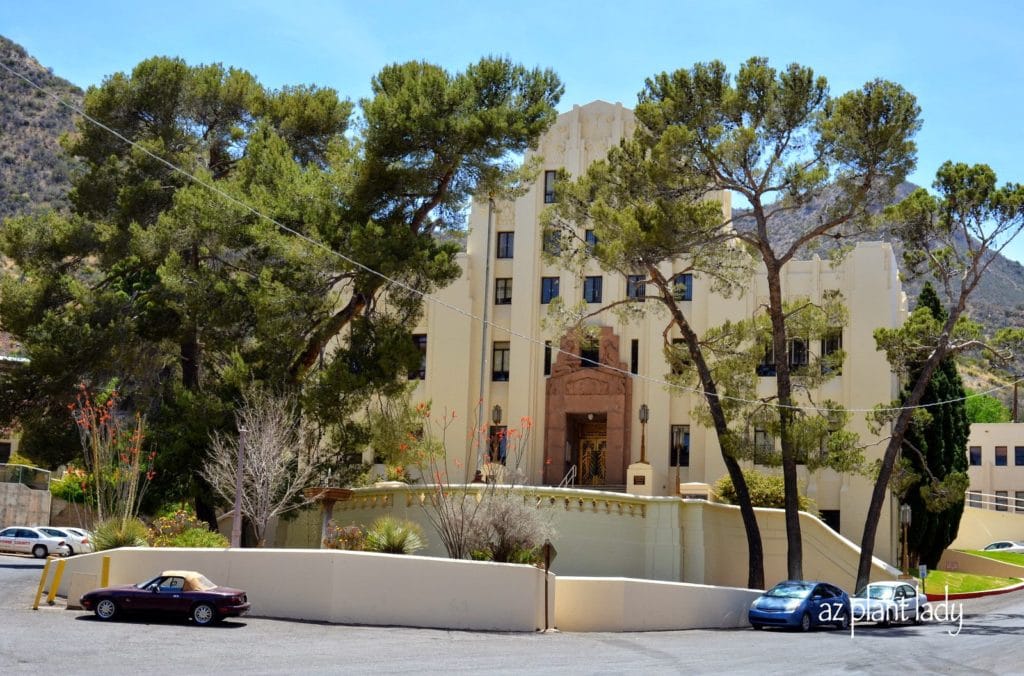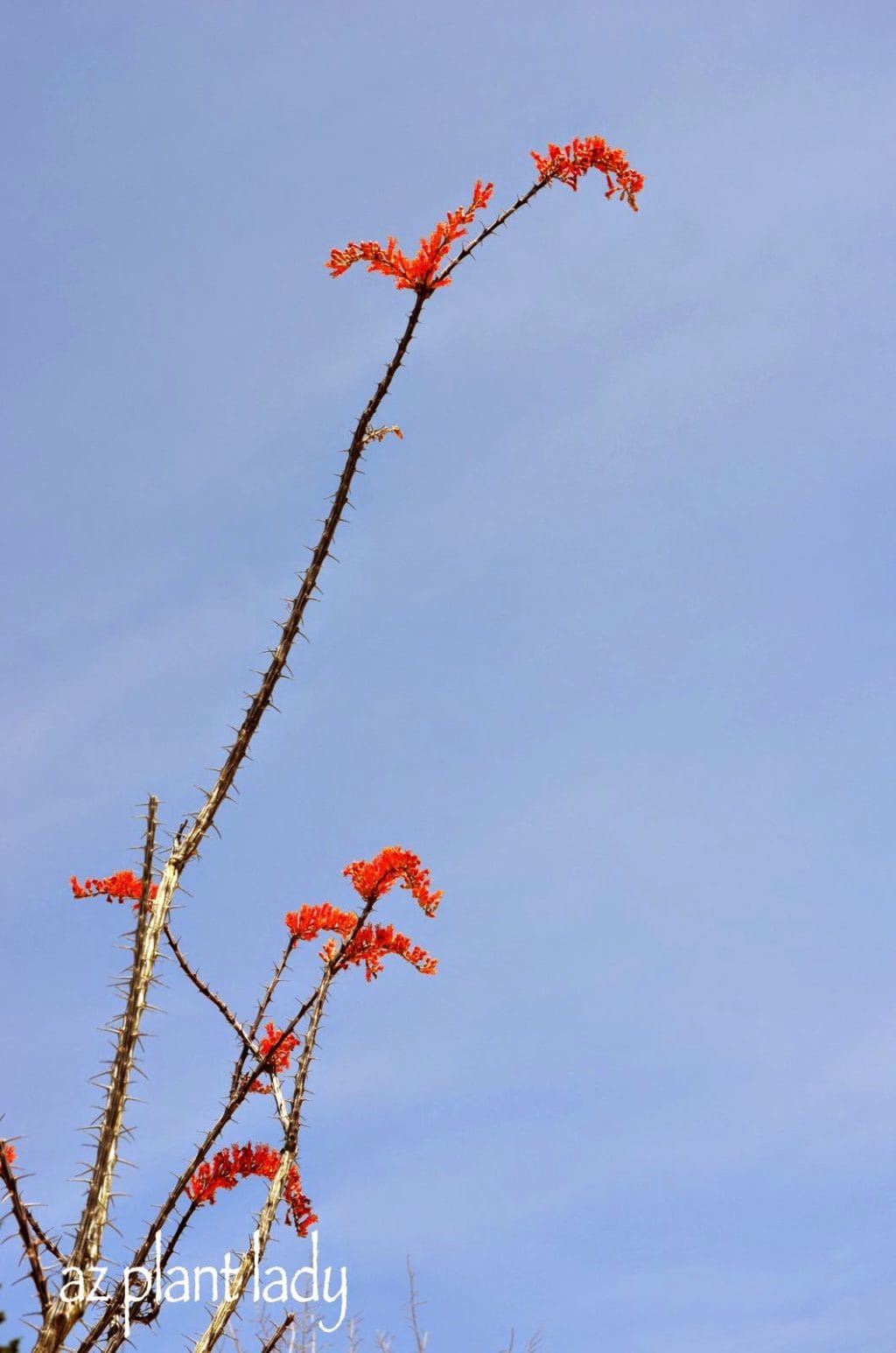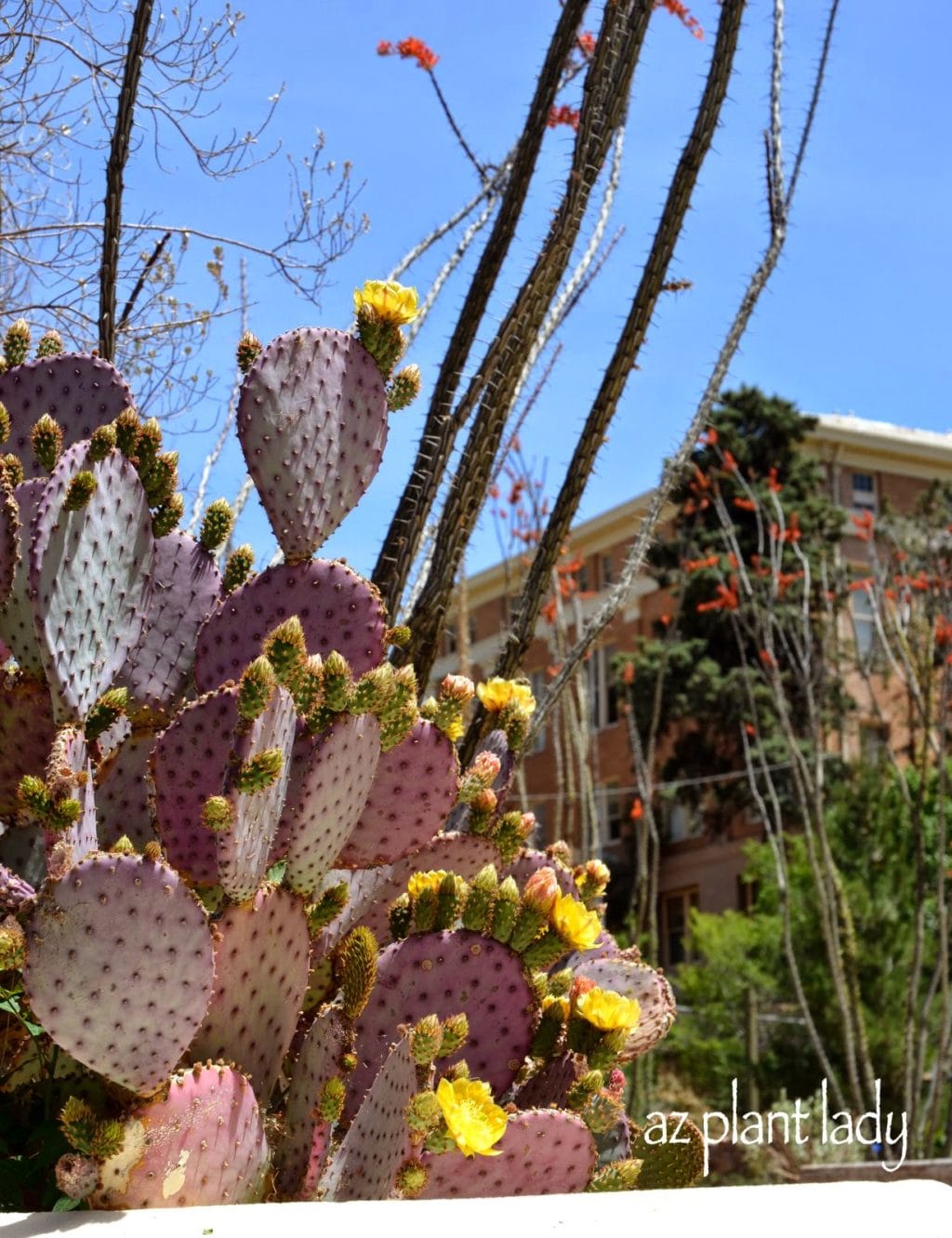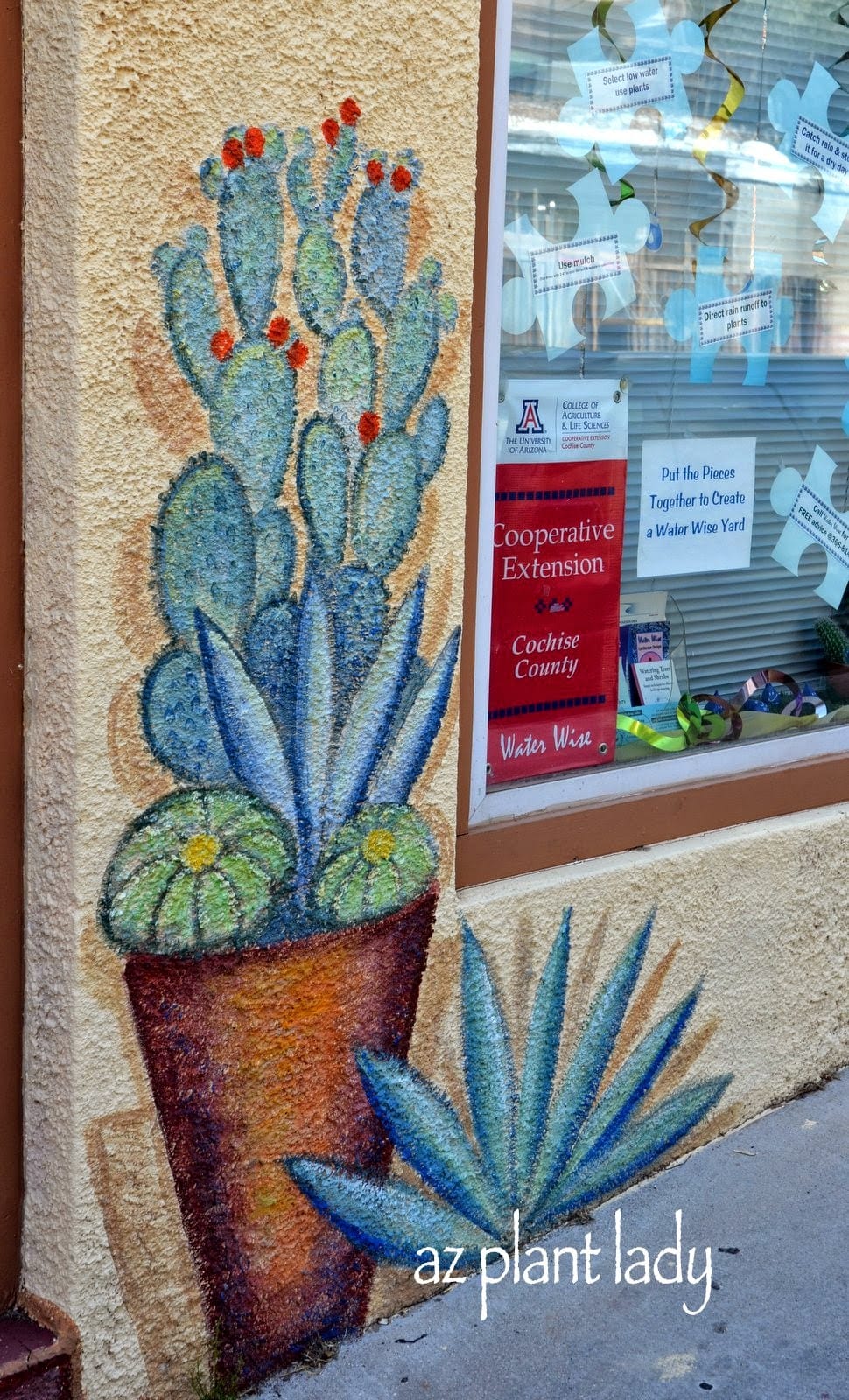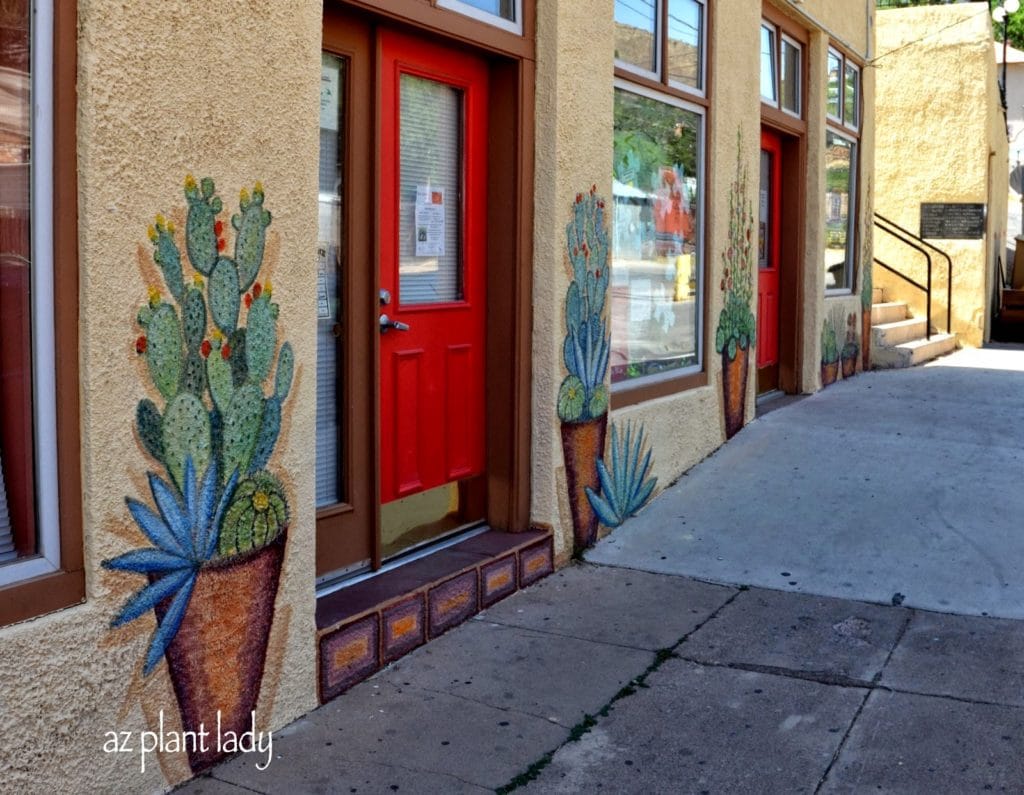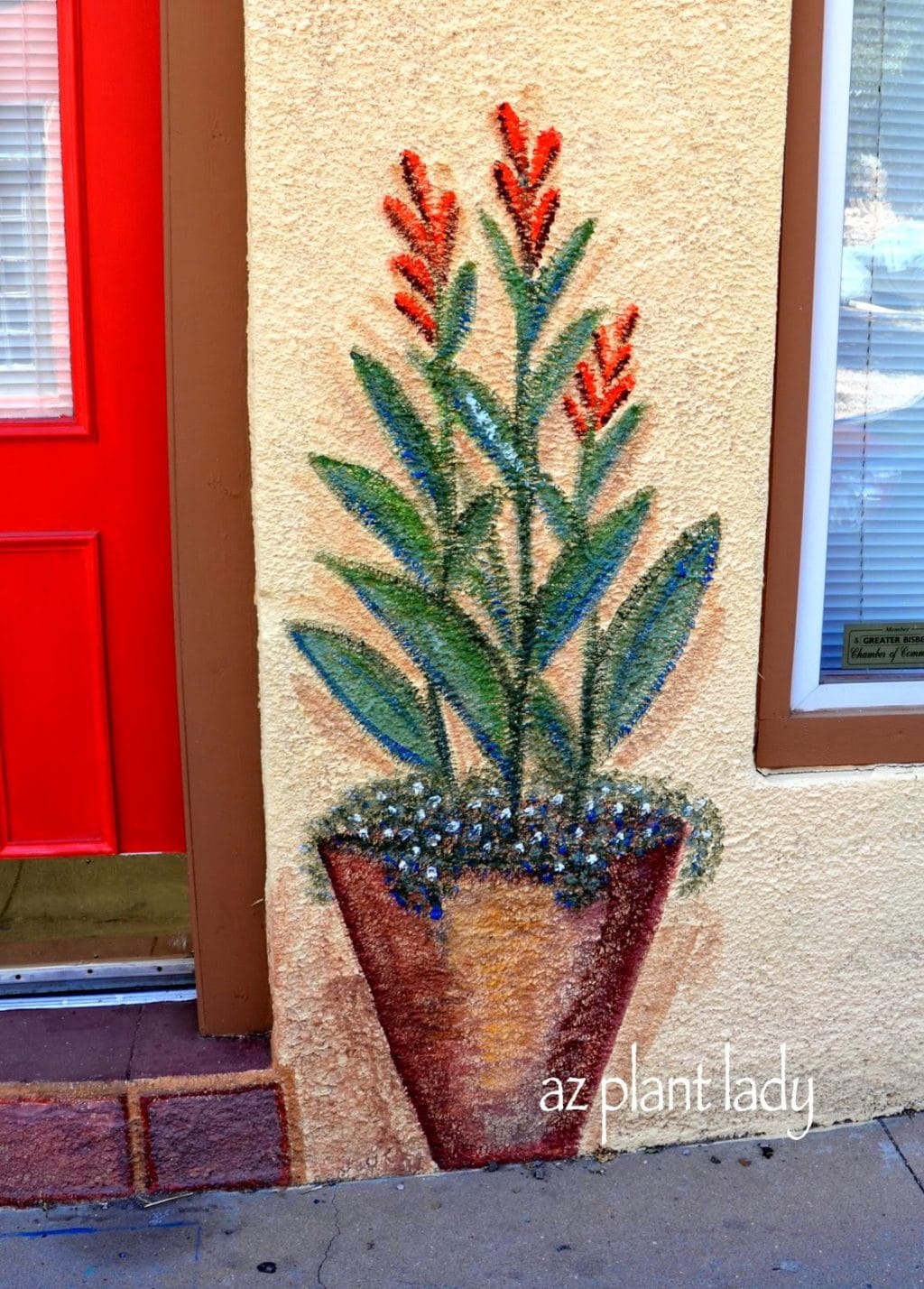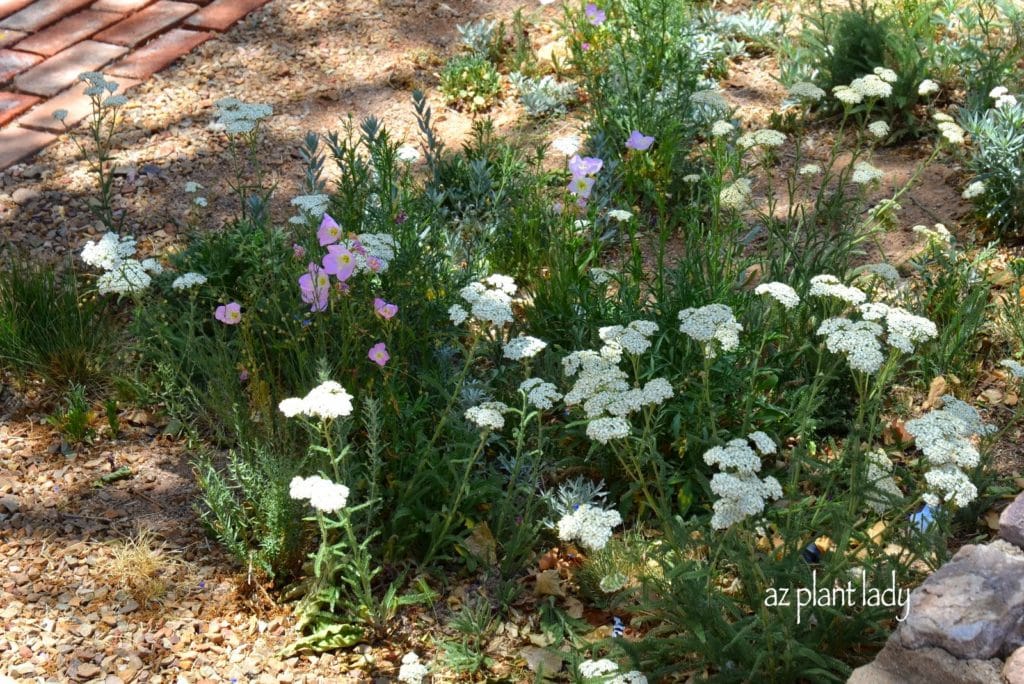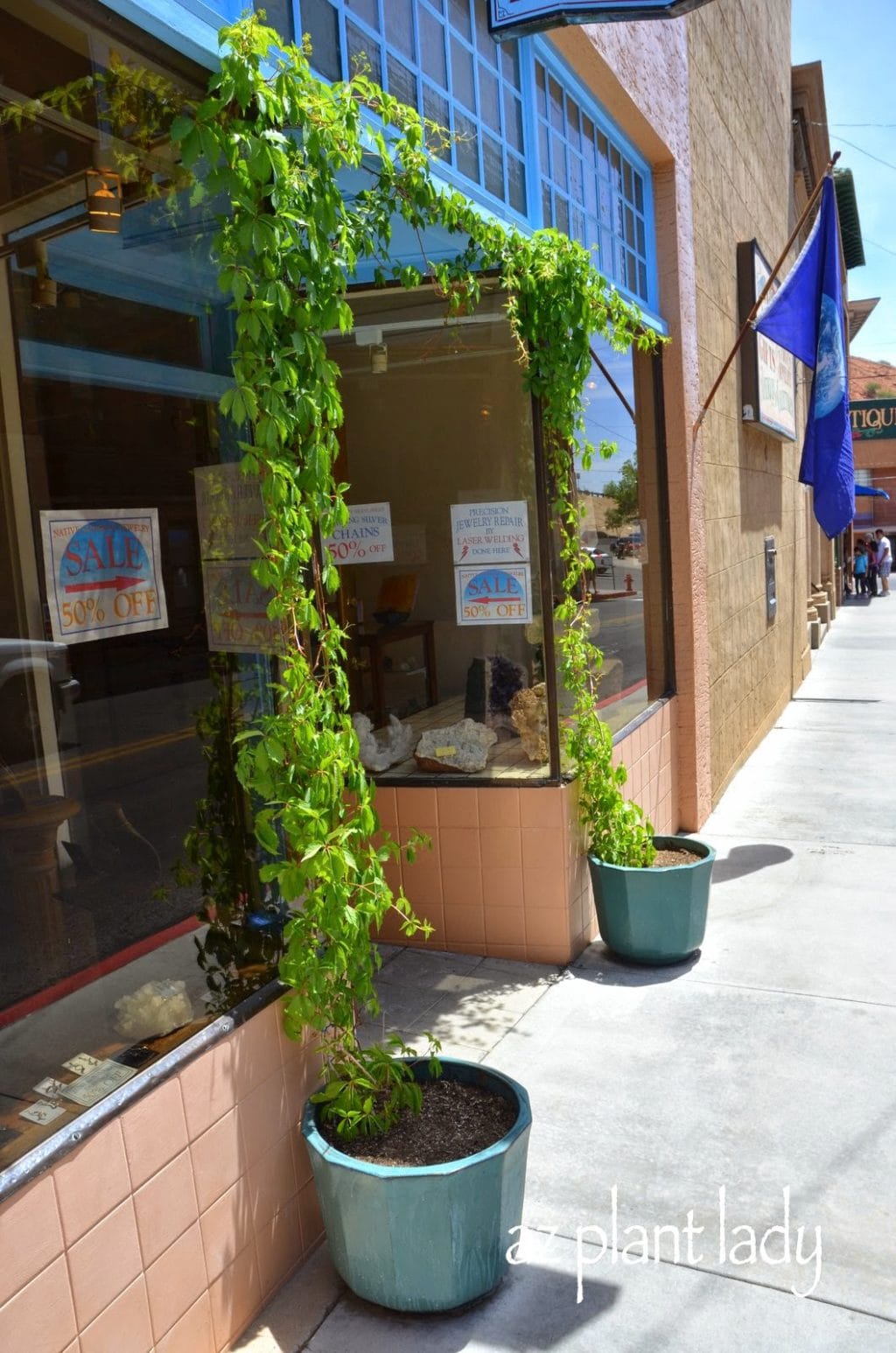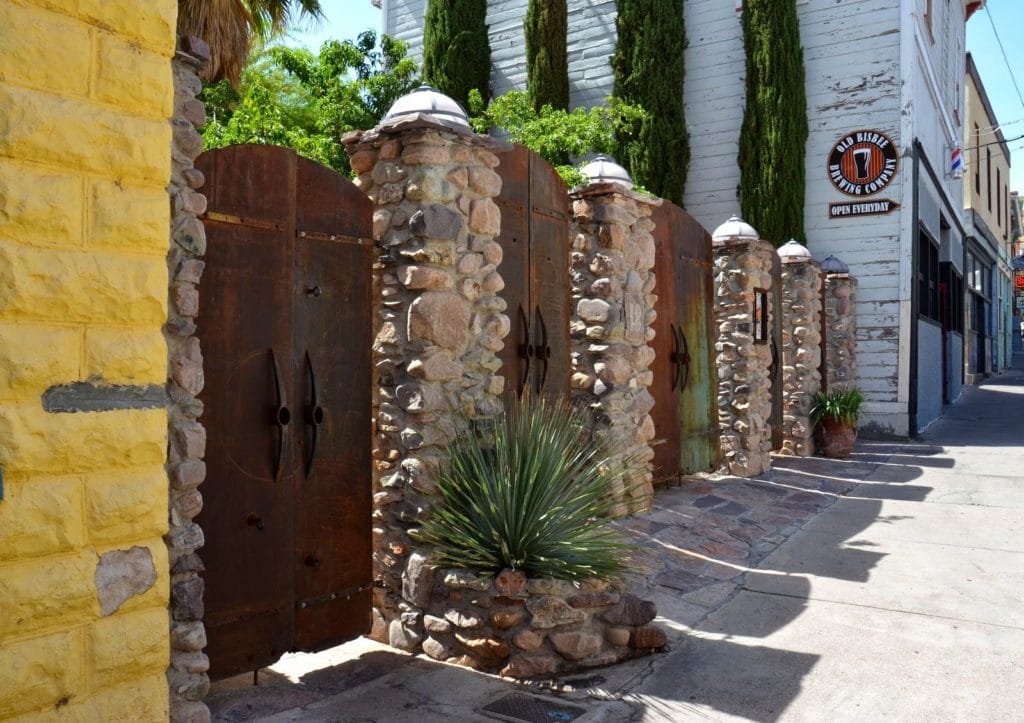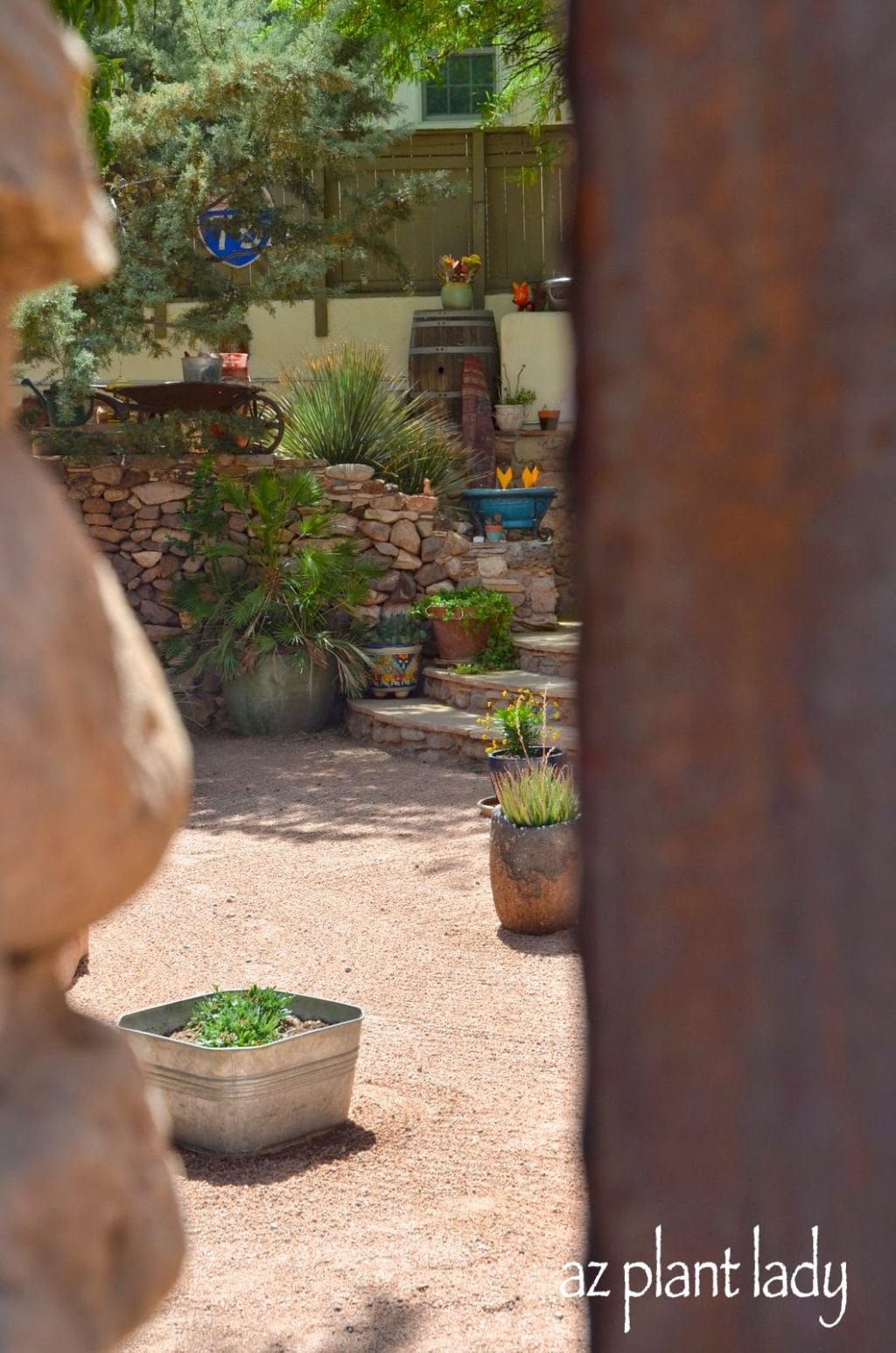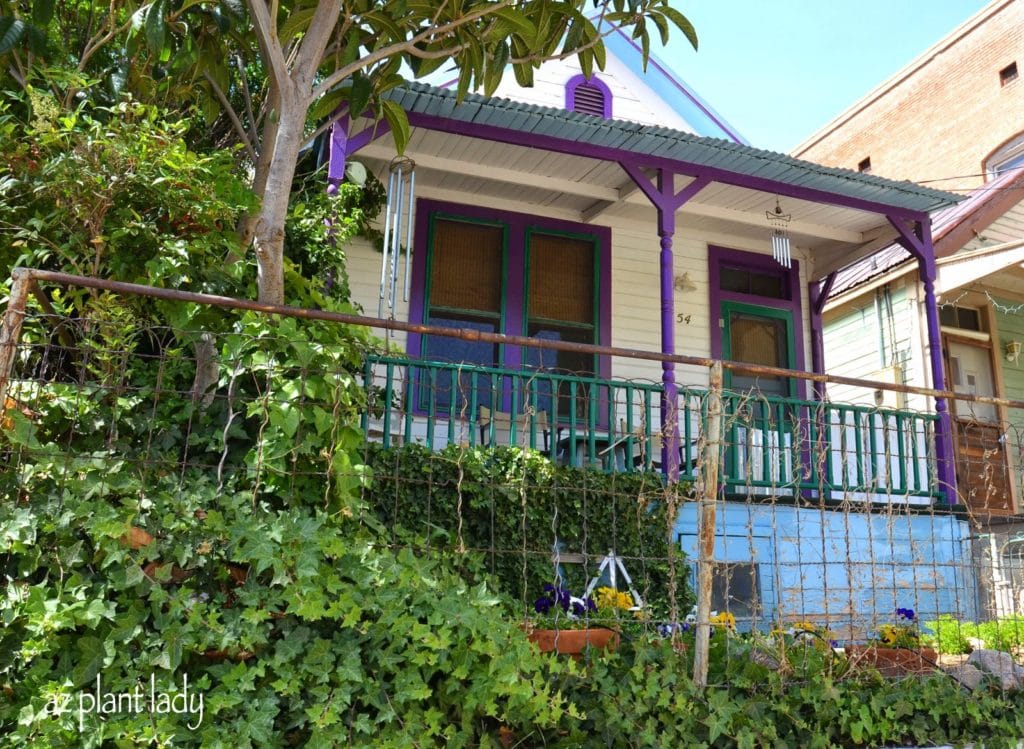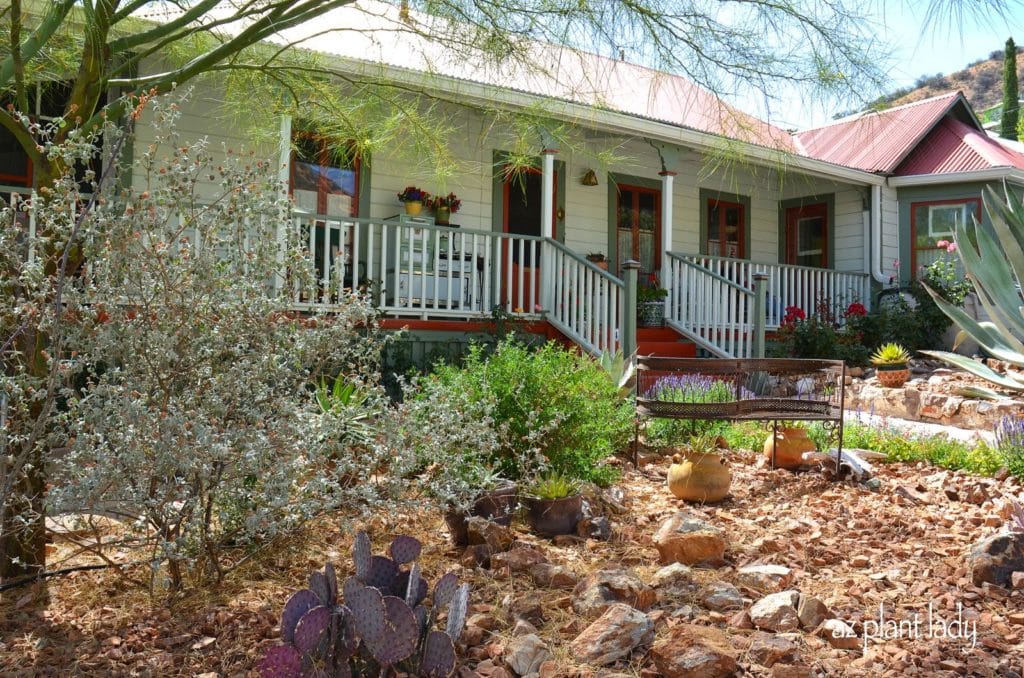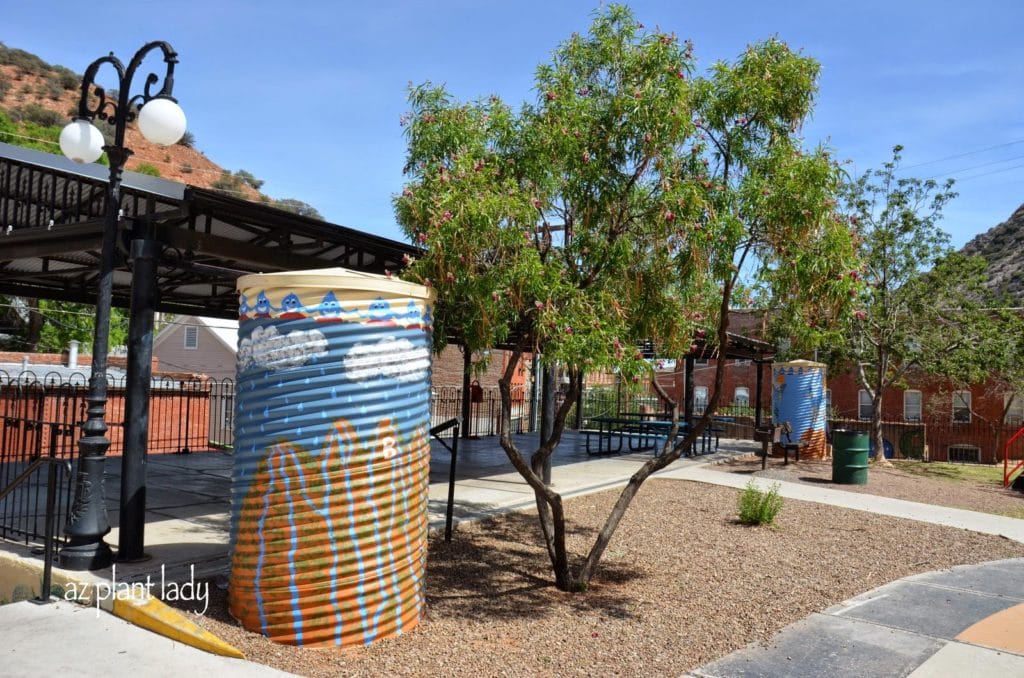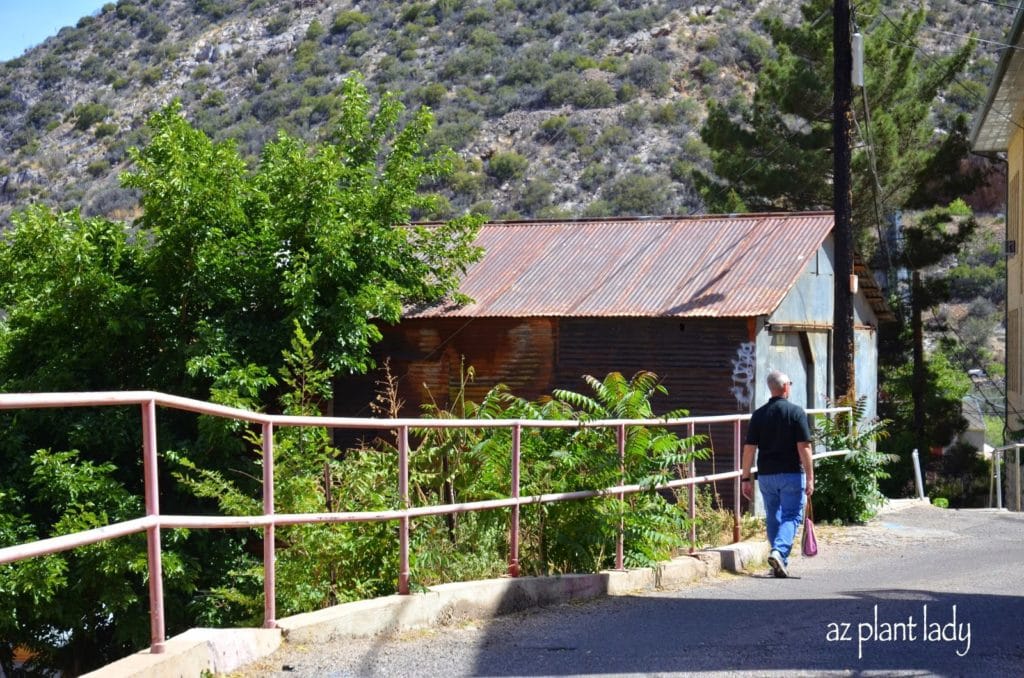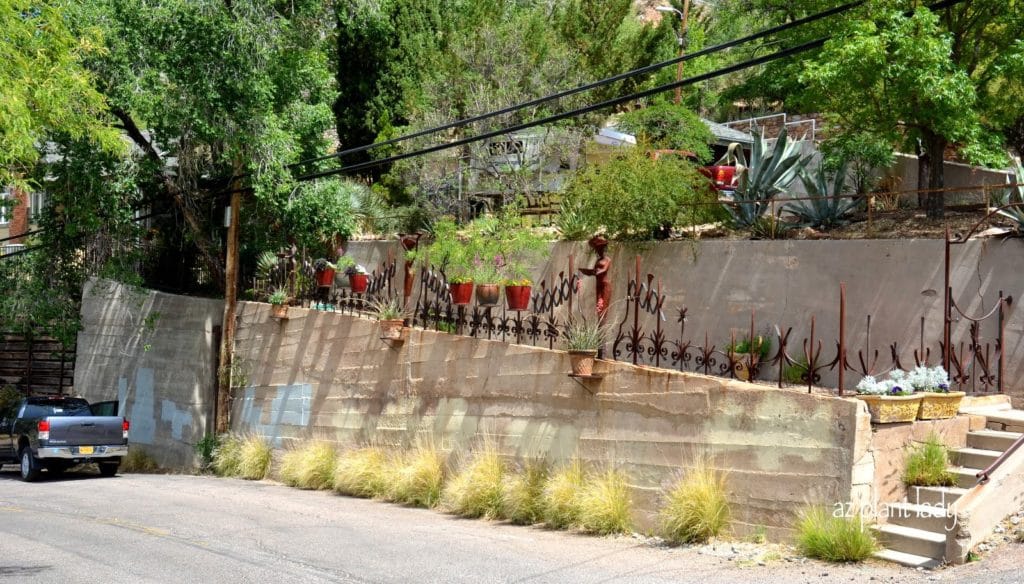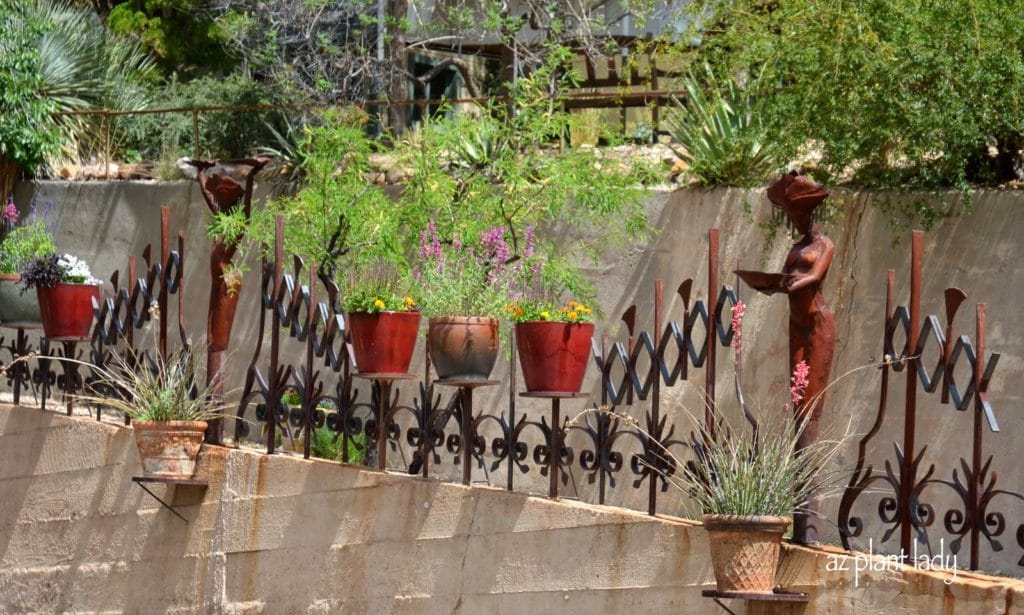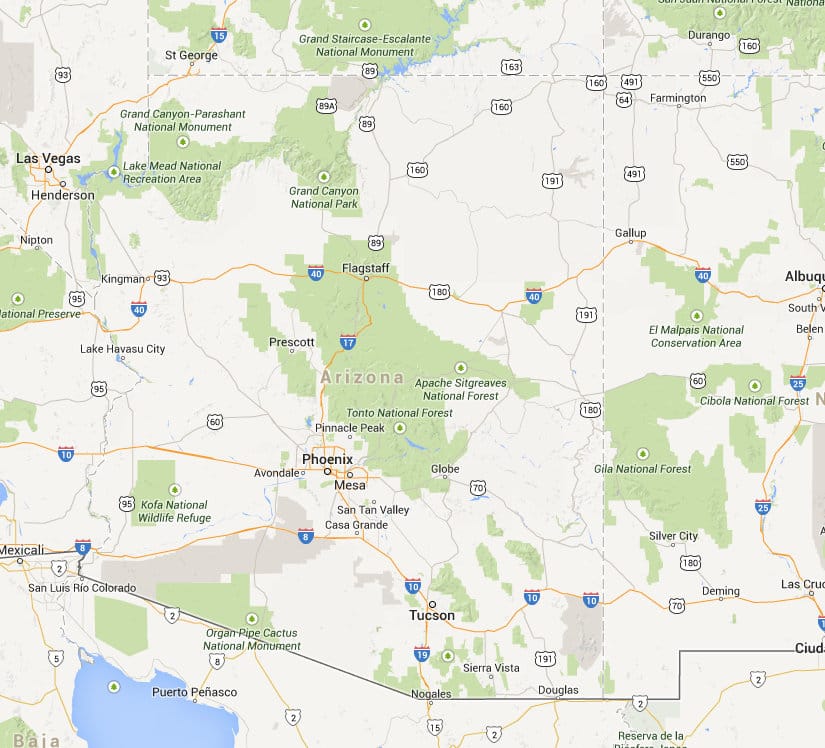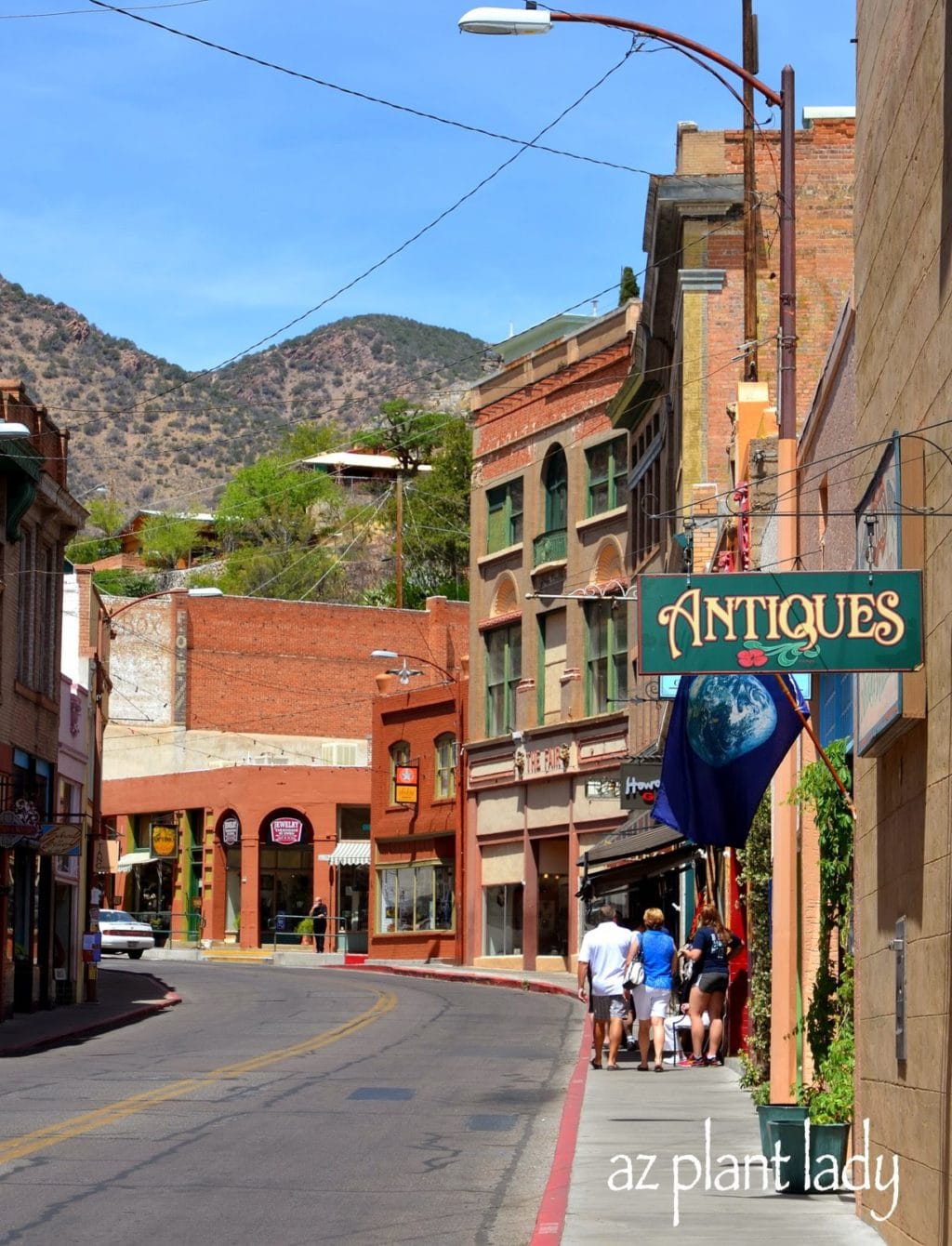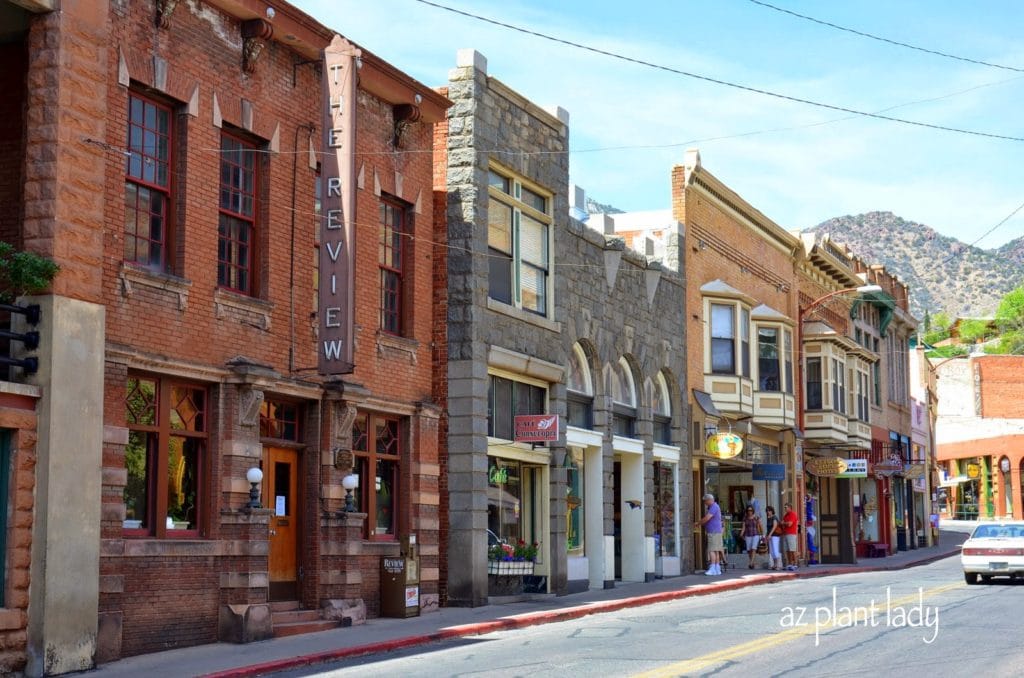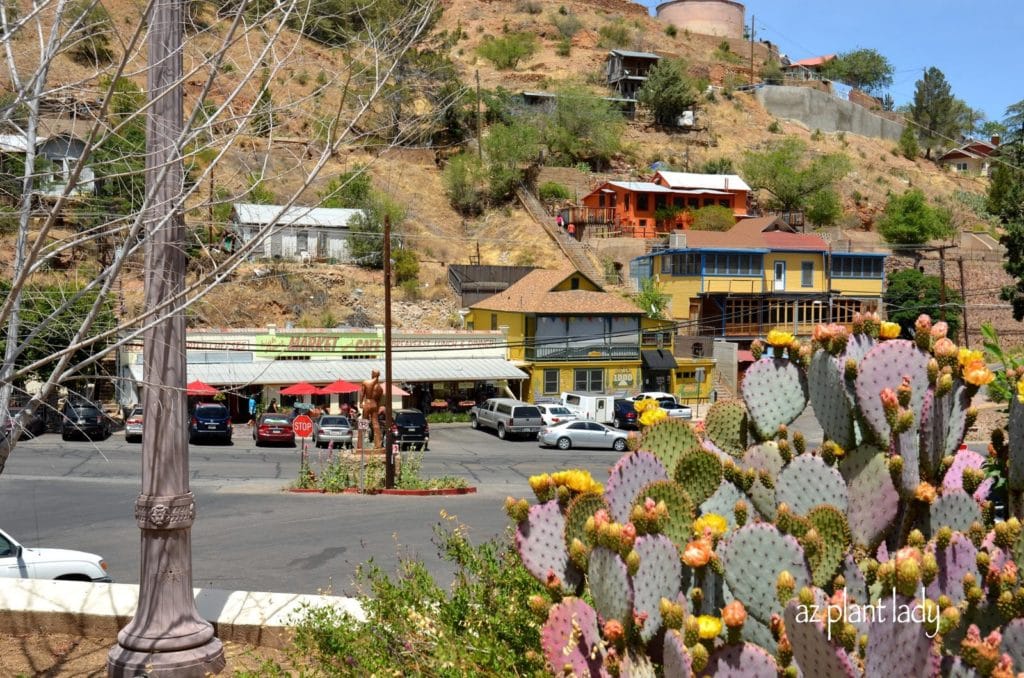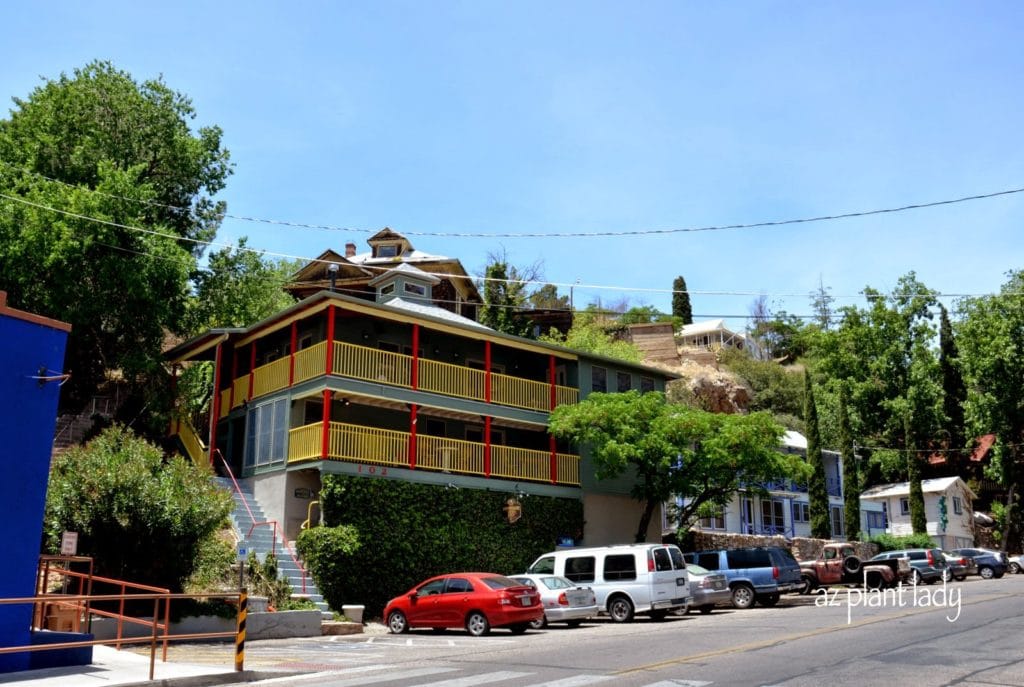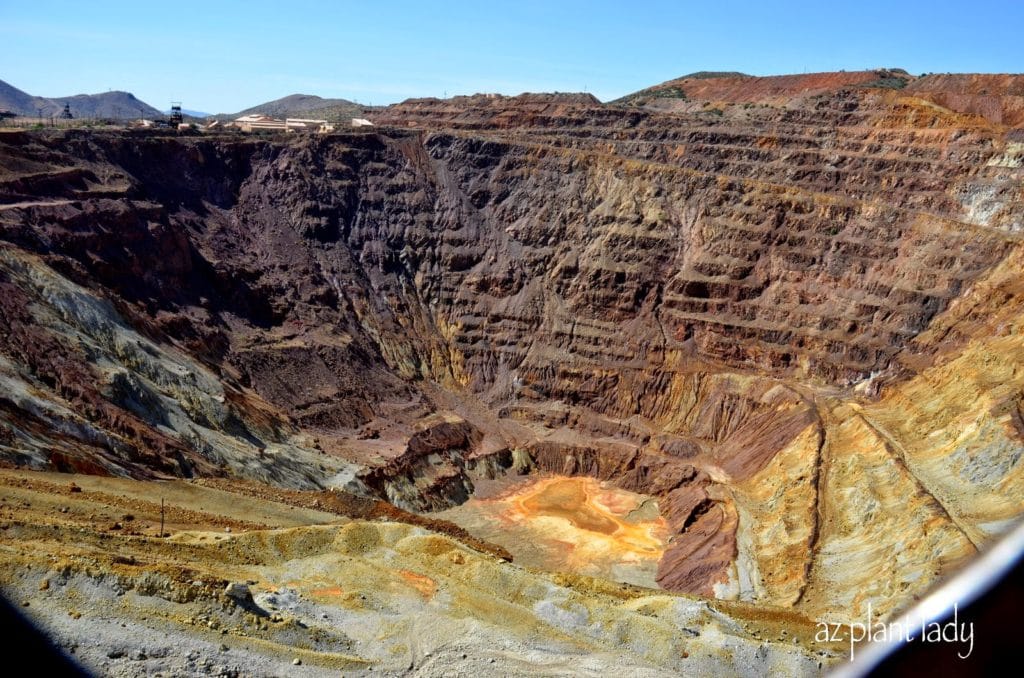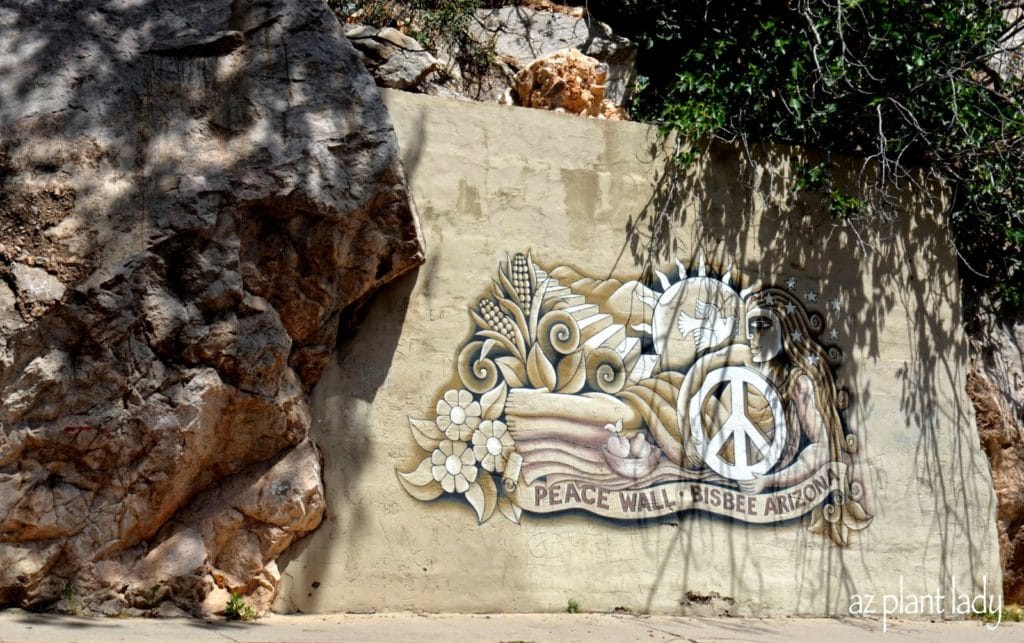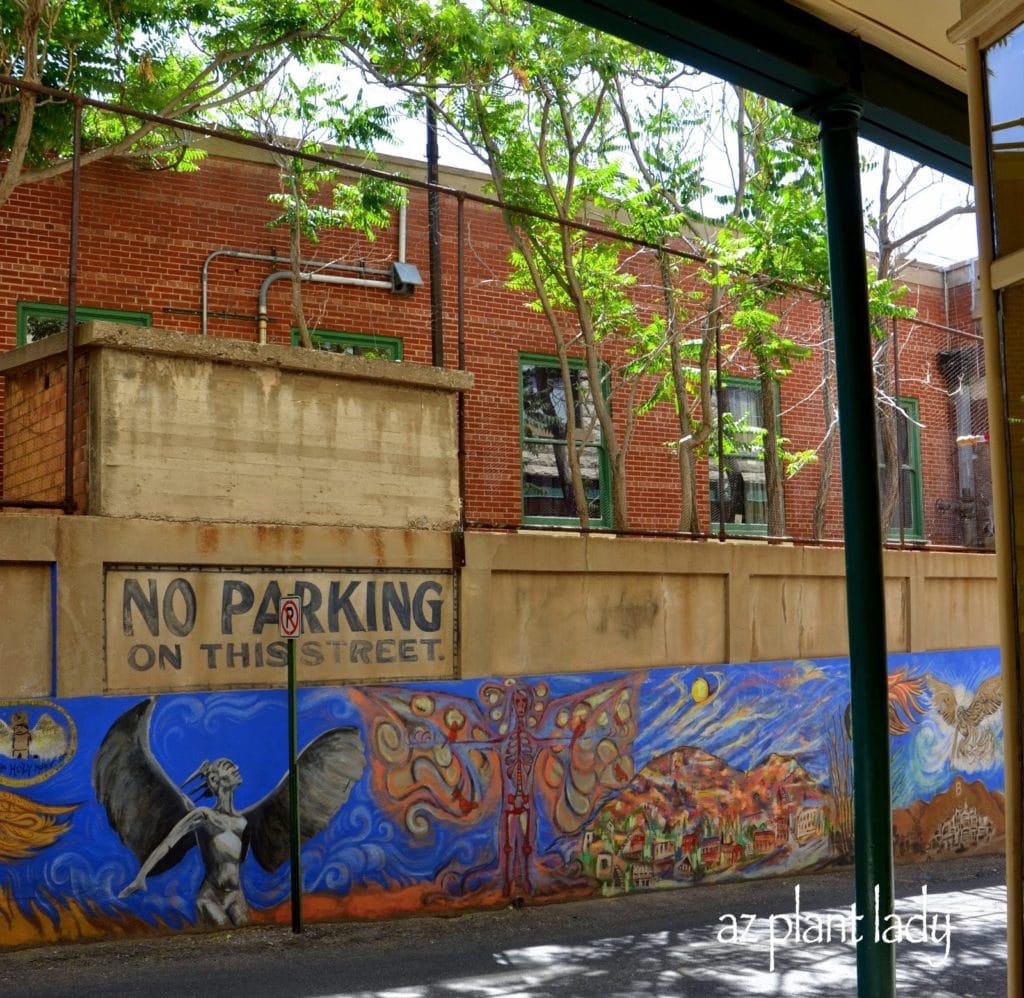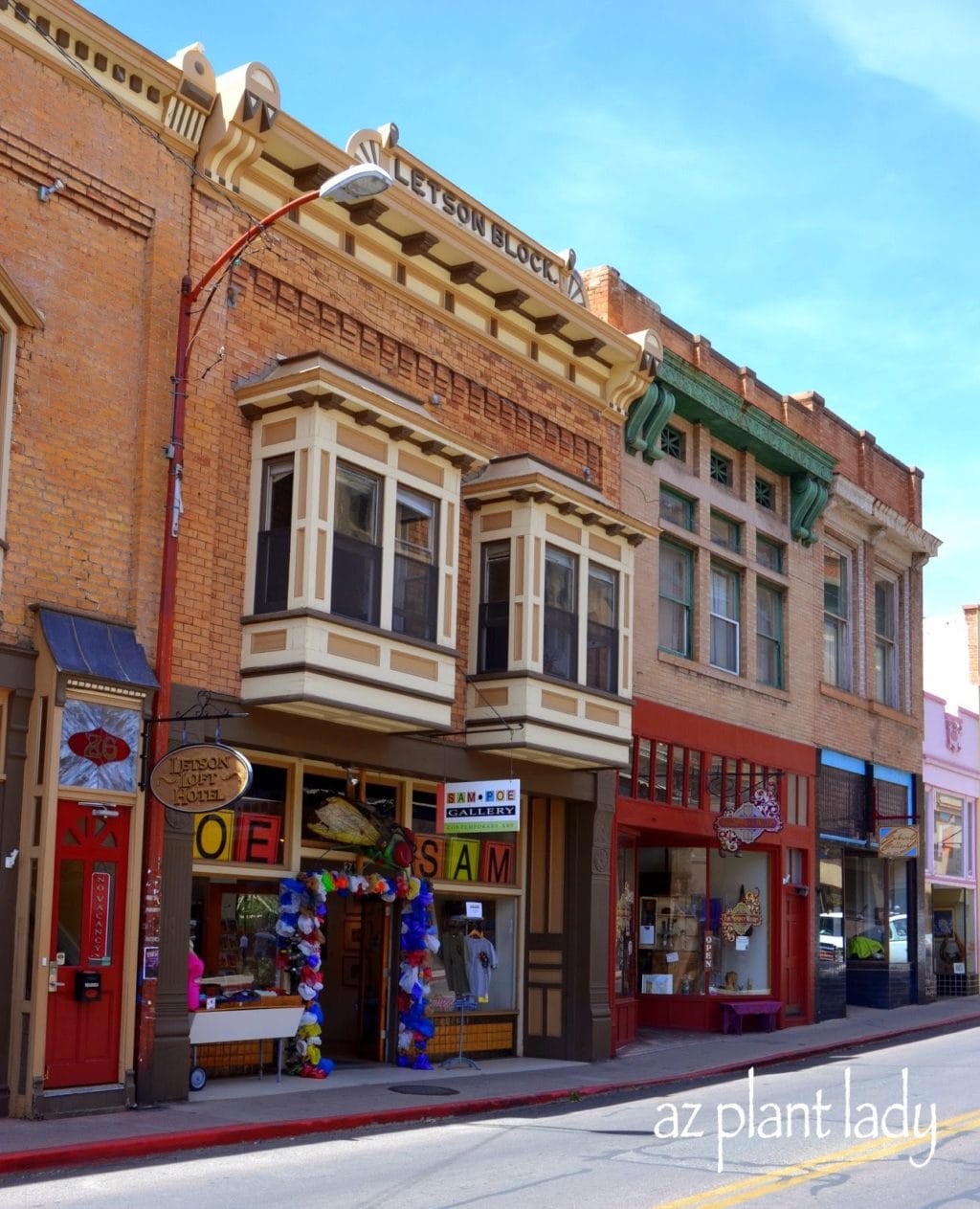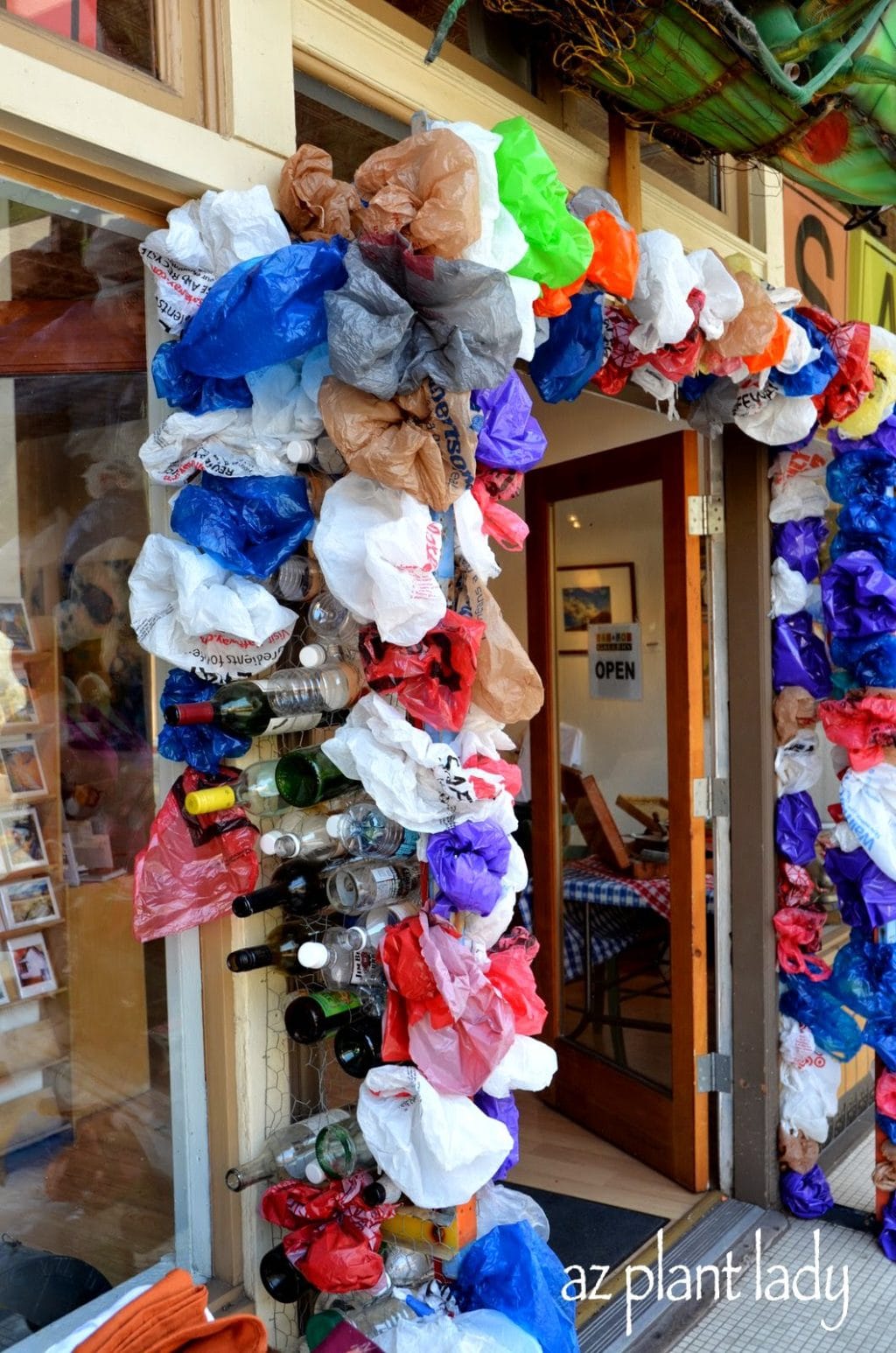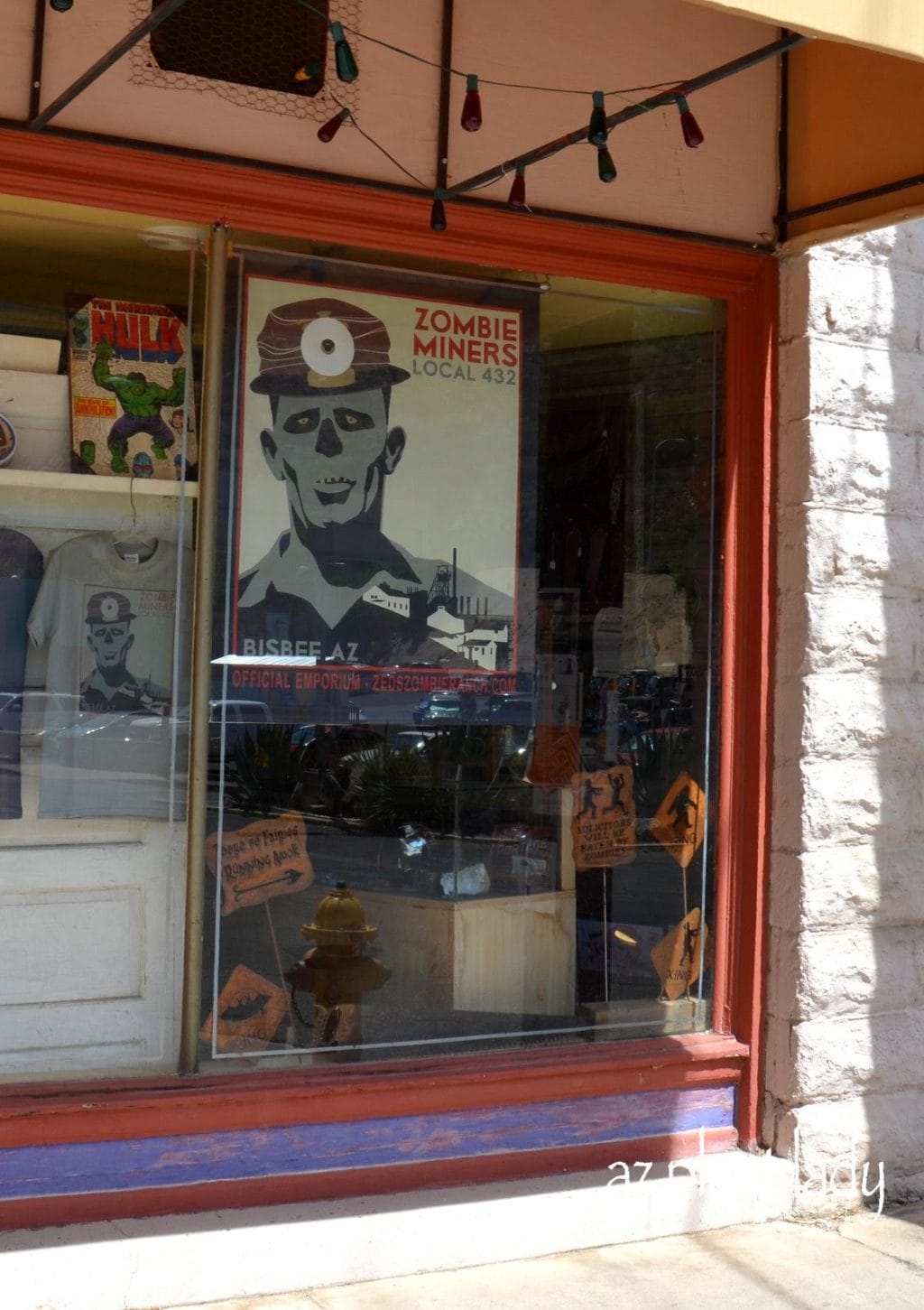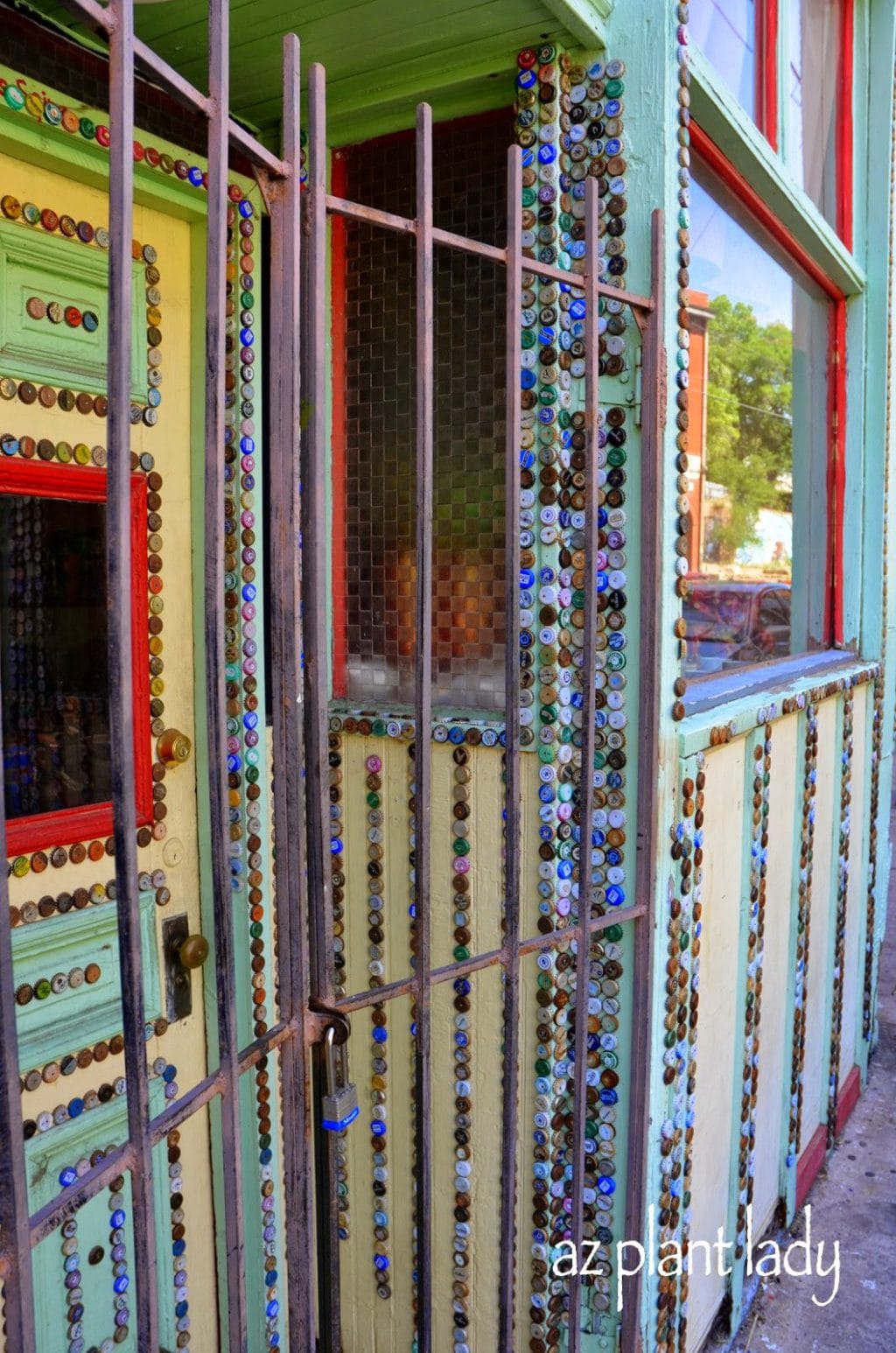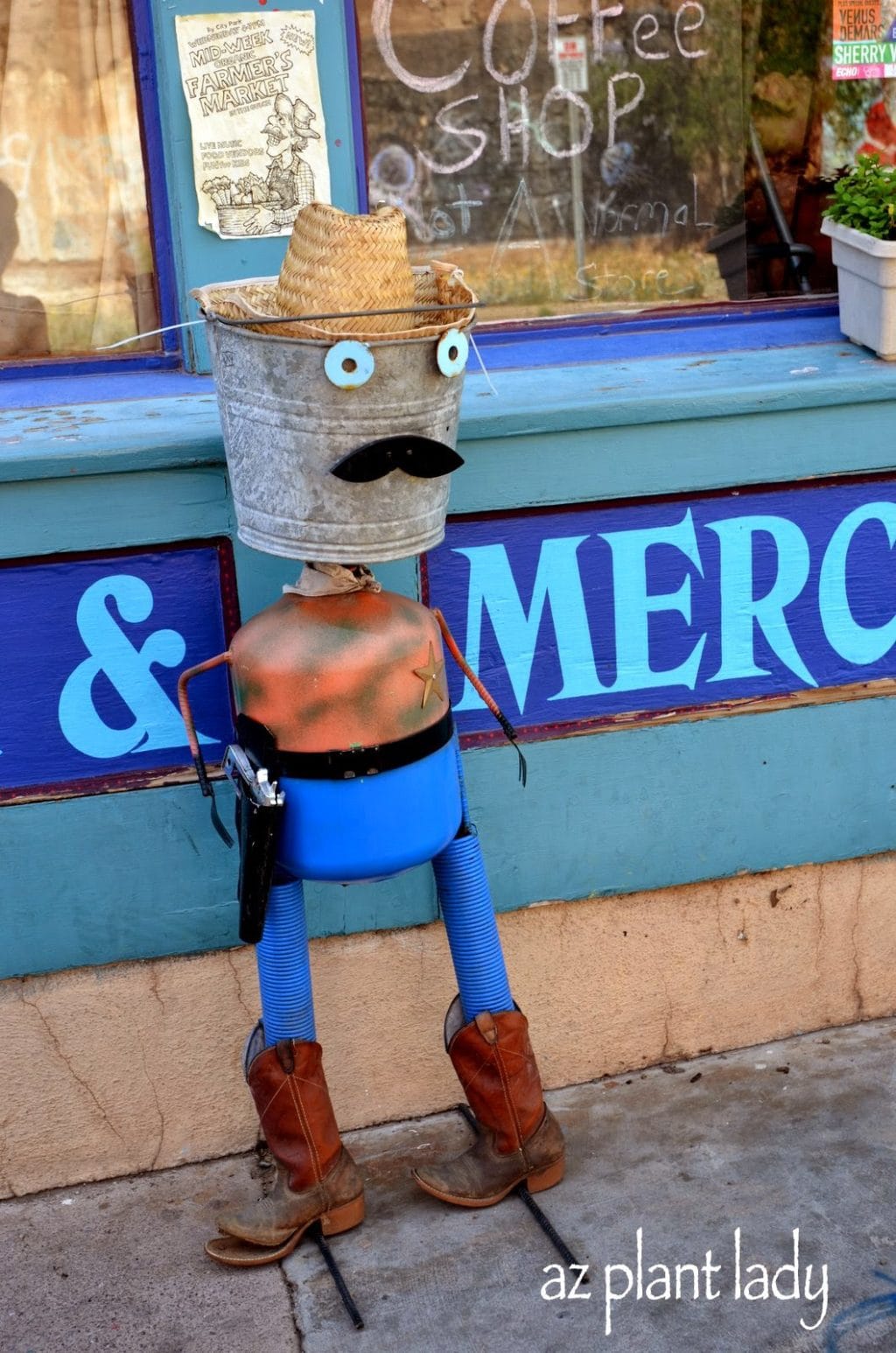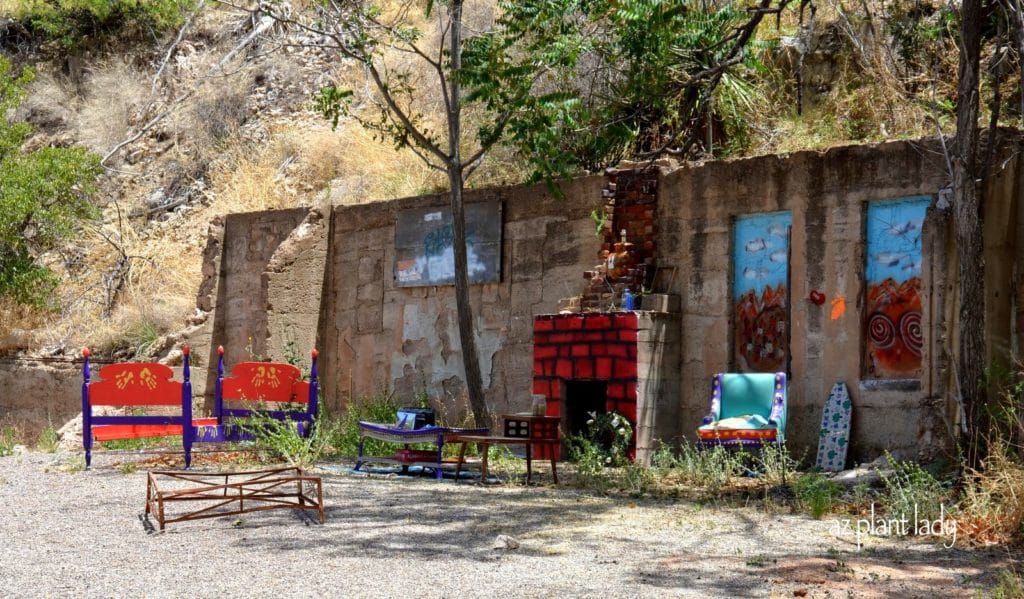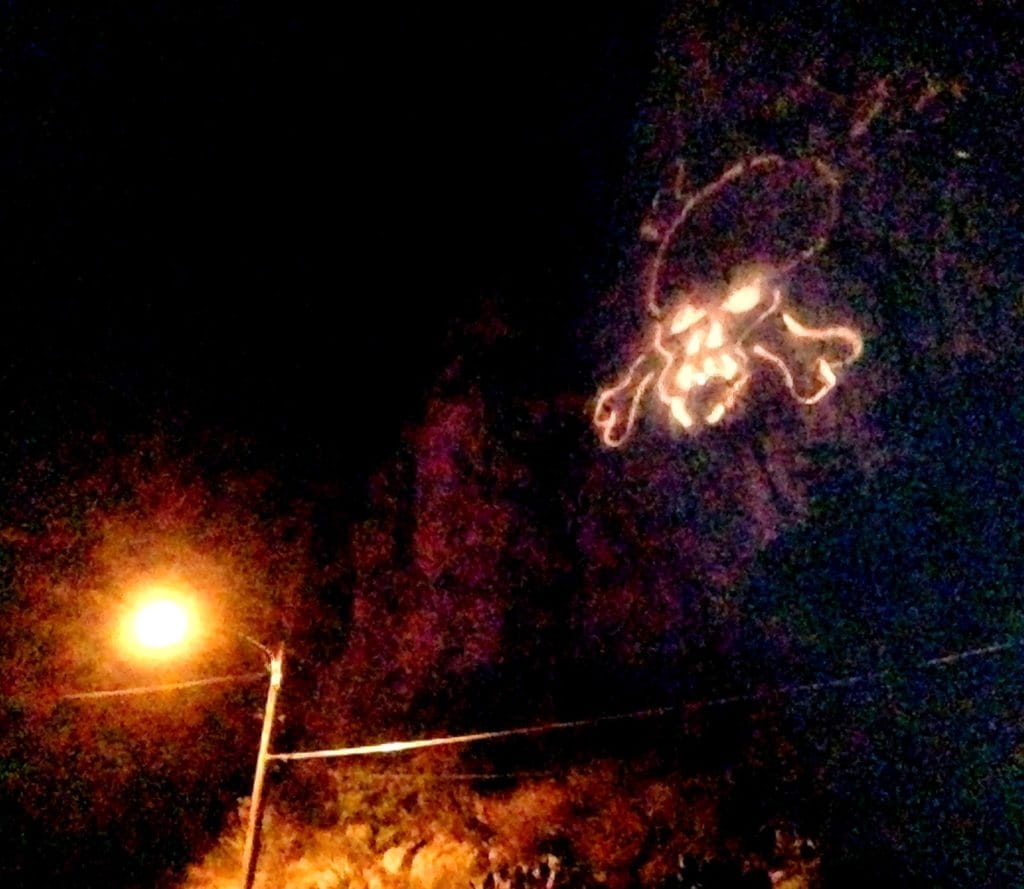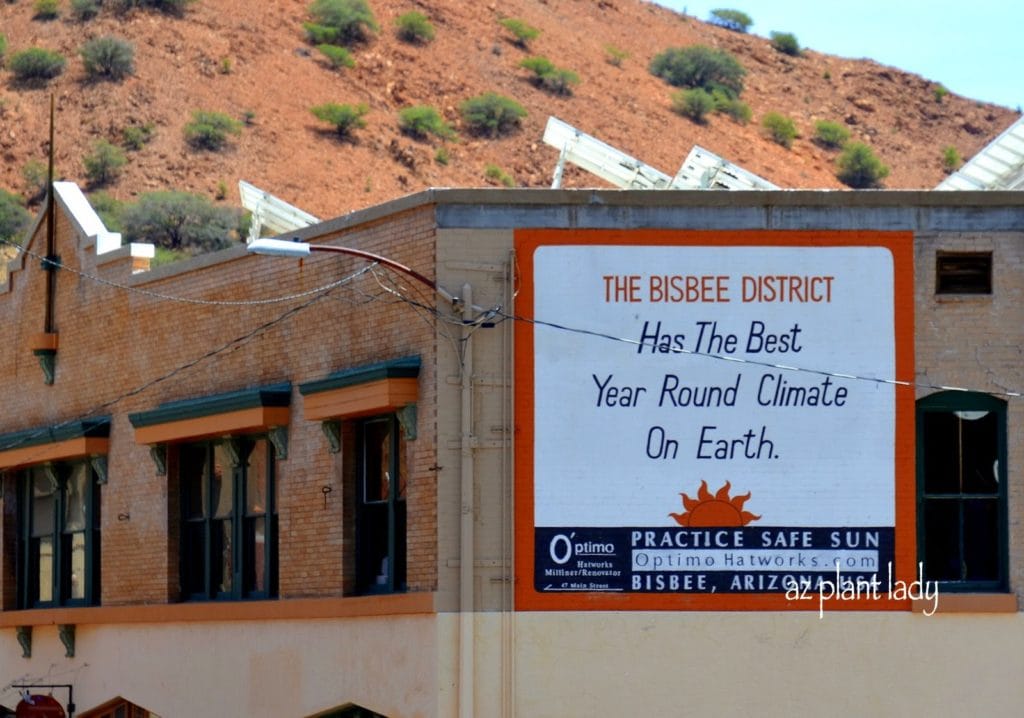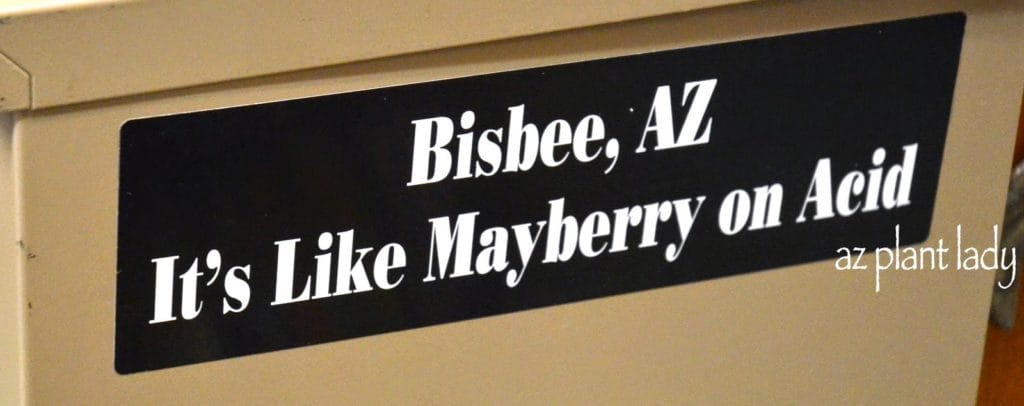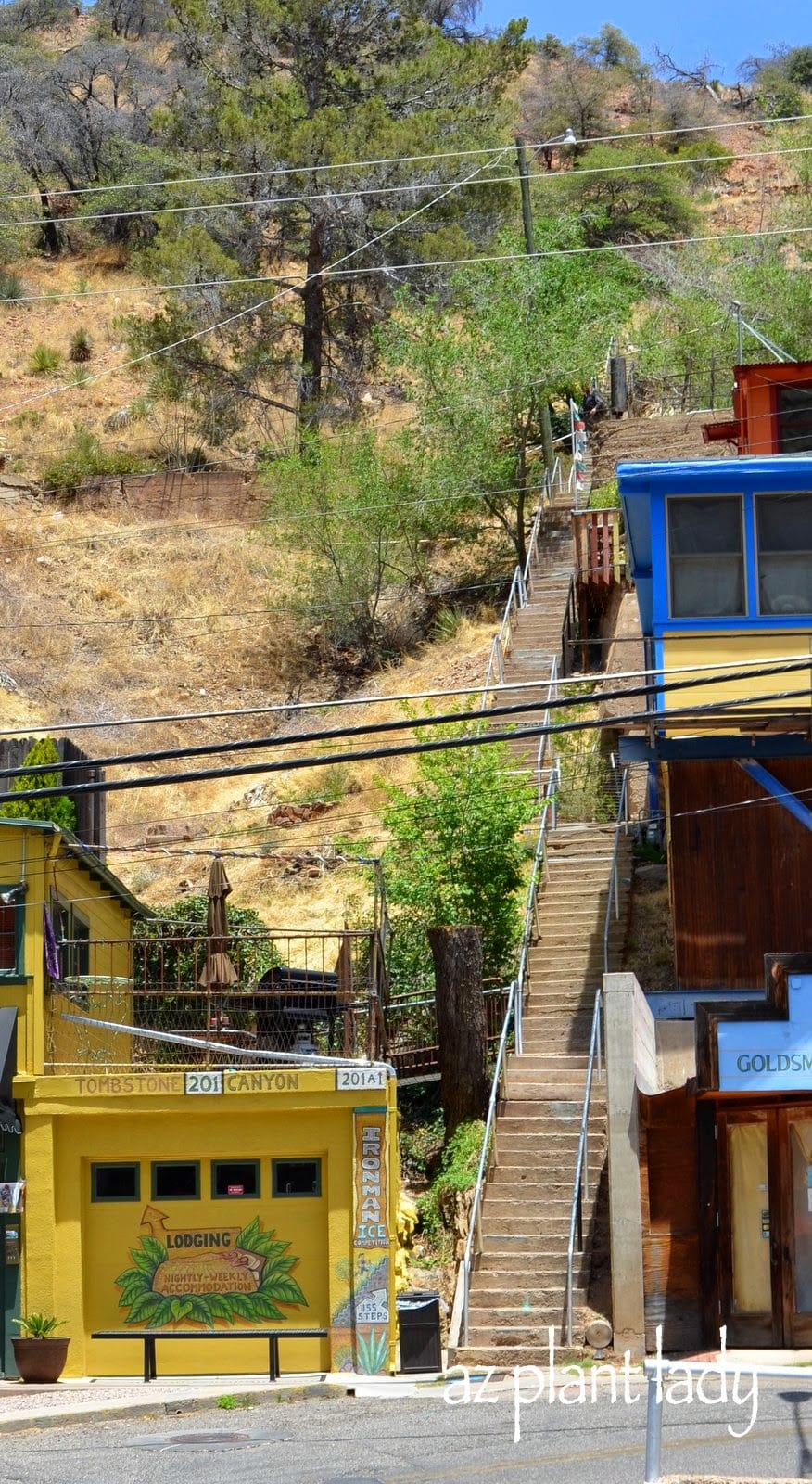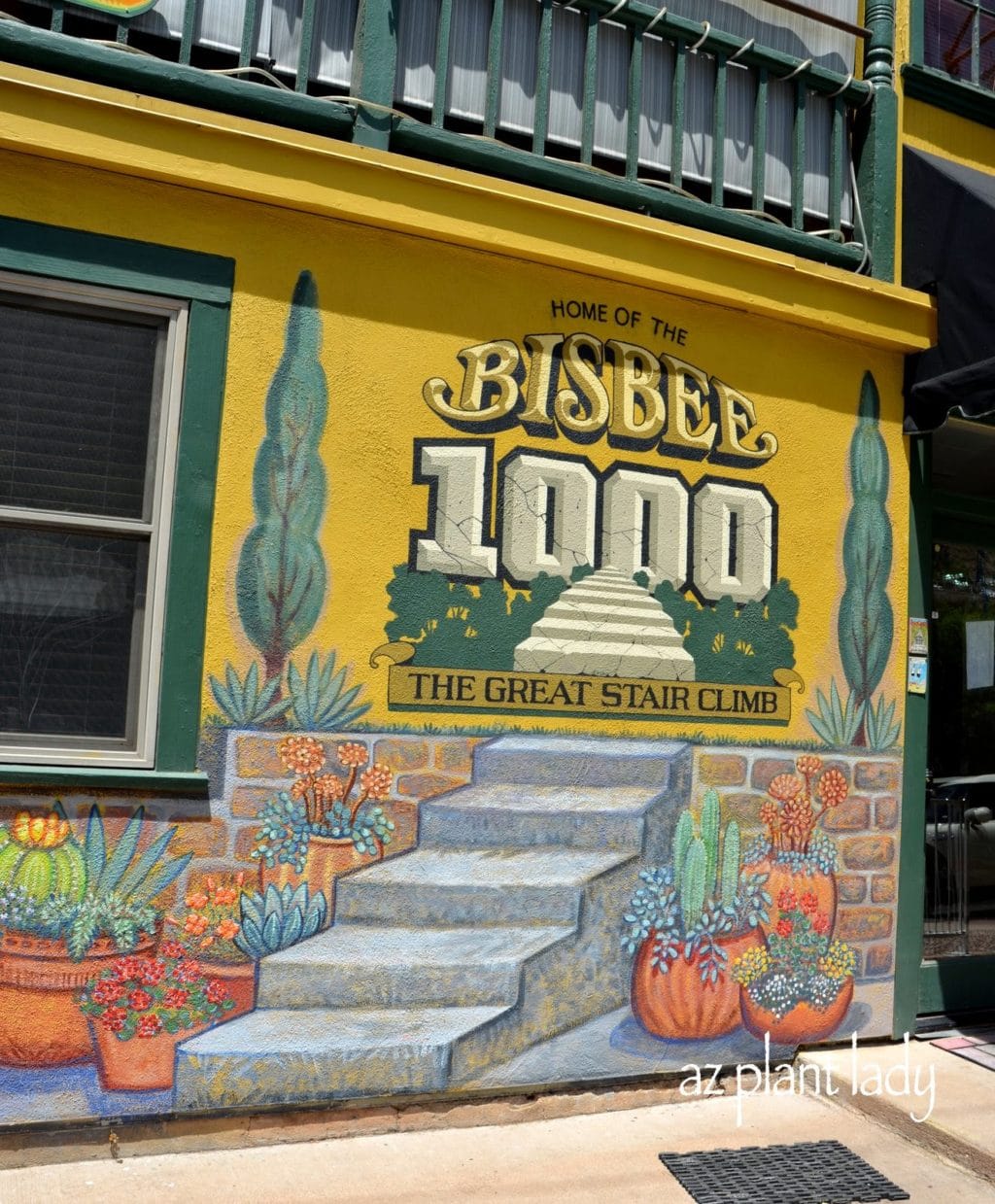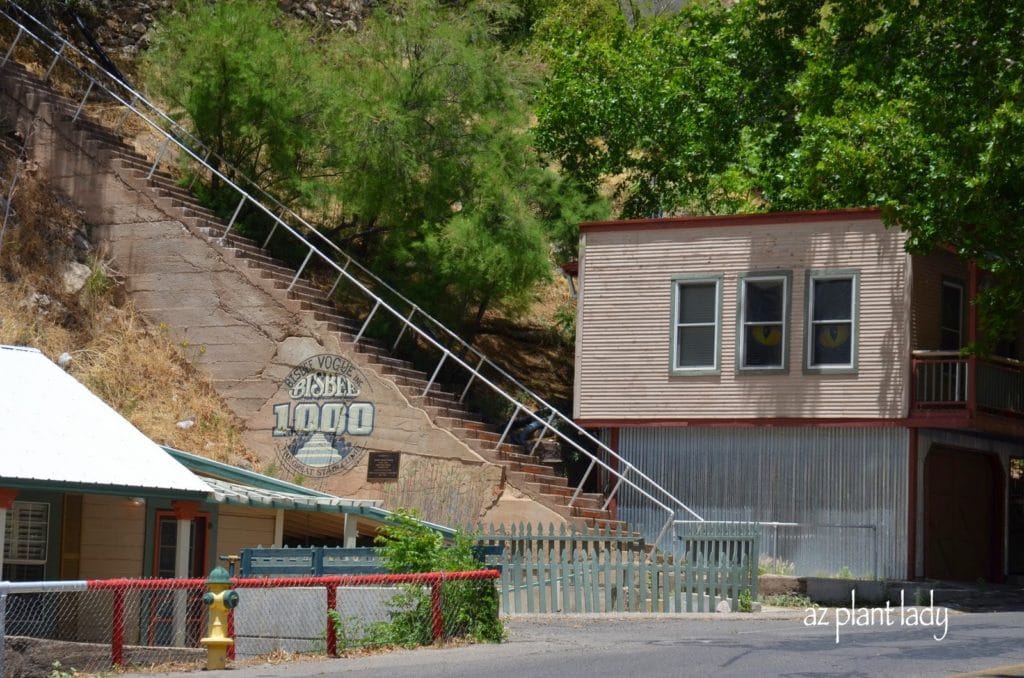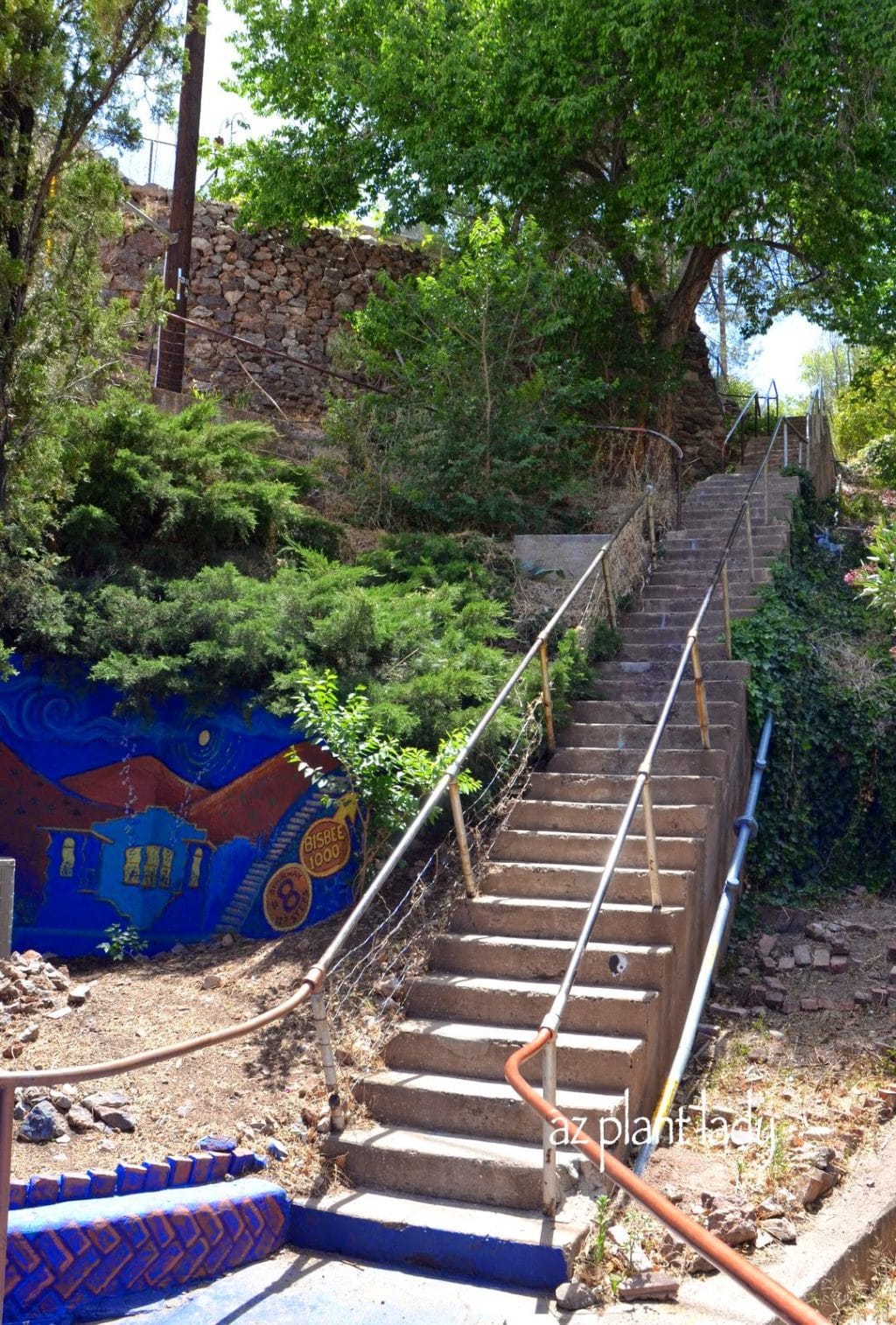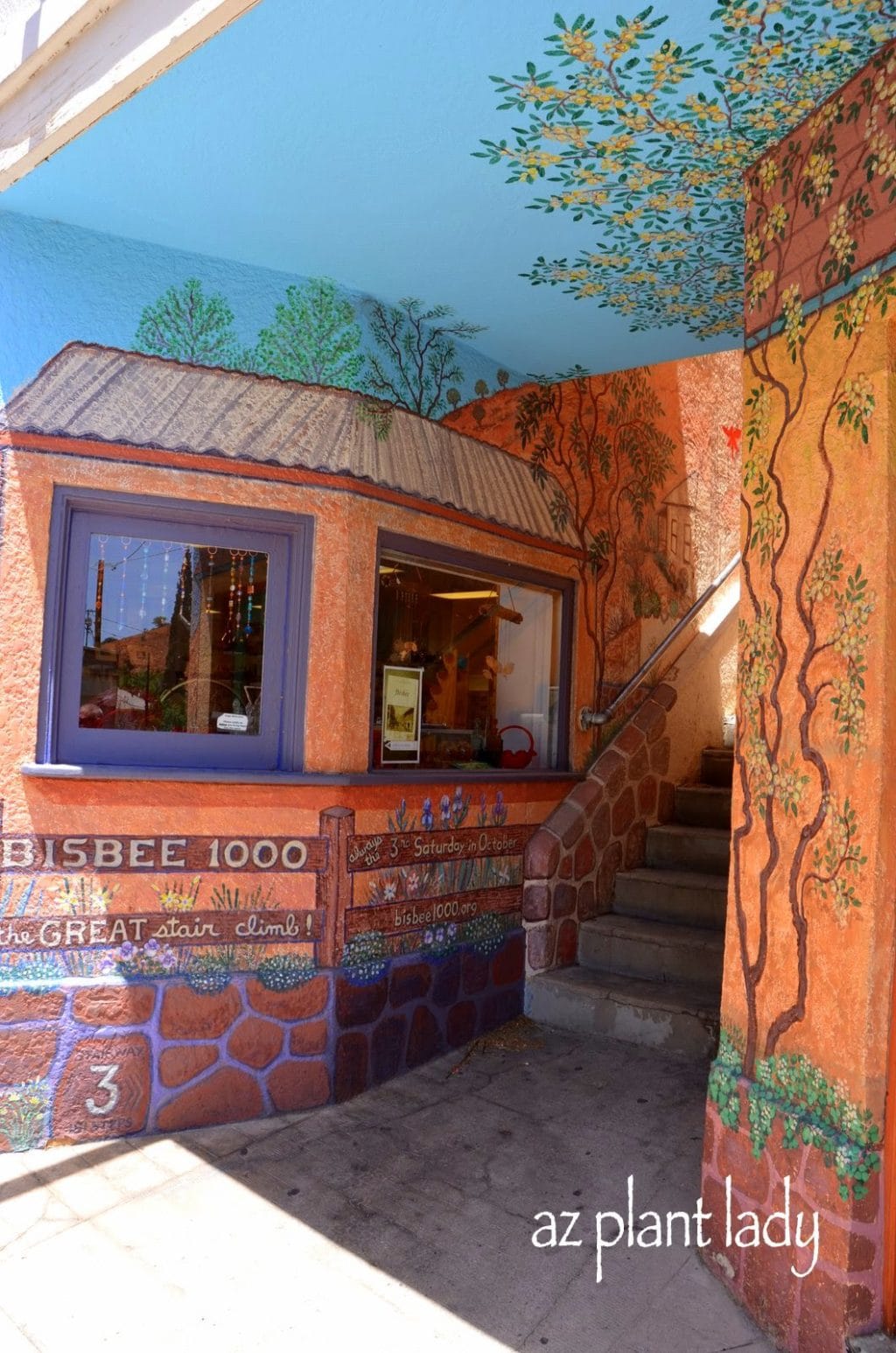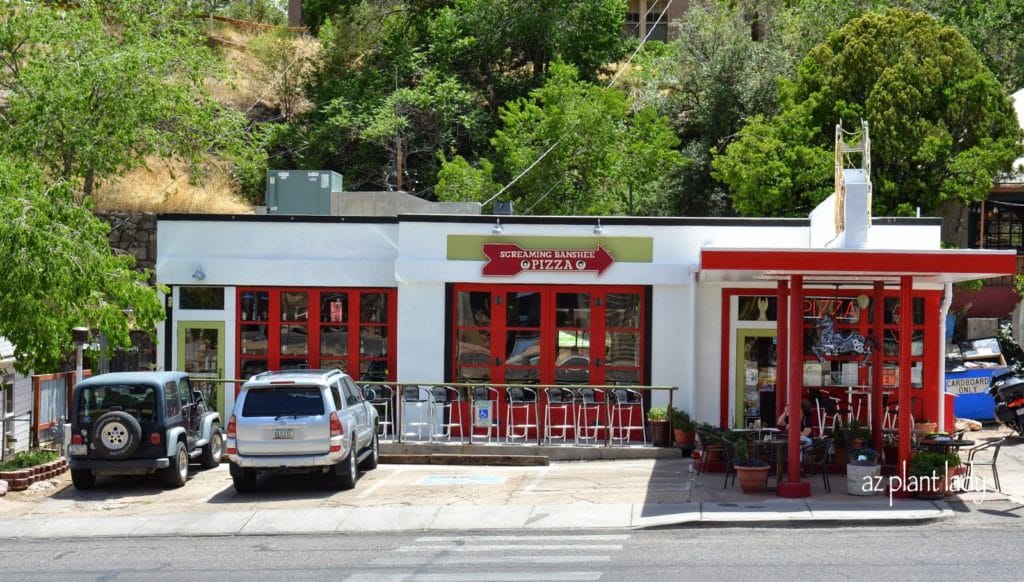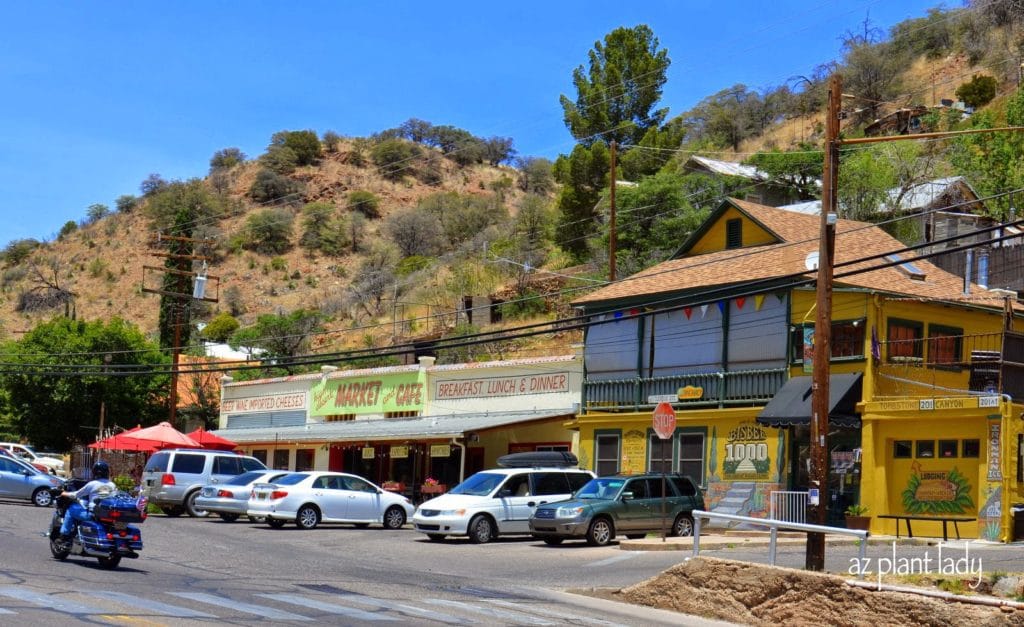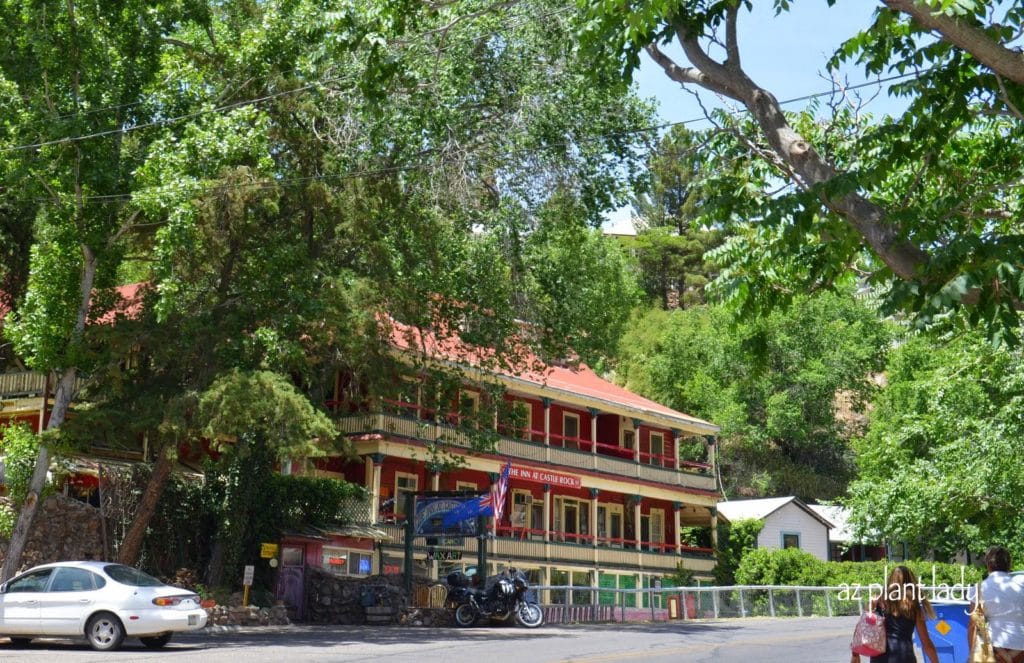Day 6 of our road trip began with gray, dreary skies and a chilly breeze.
We decided to spend our time in Madison, Wisconsin by seeing the Olbrich Botanical Gardens, which were rated as the #1 attraction by Trip Advisor.
As we left our hotel, we were faced by roads under construction.
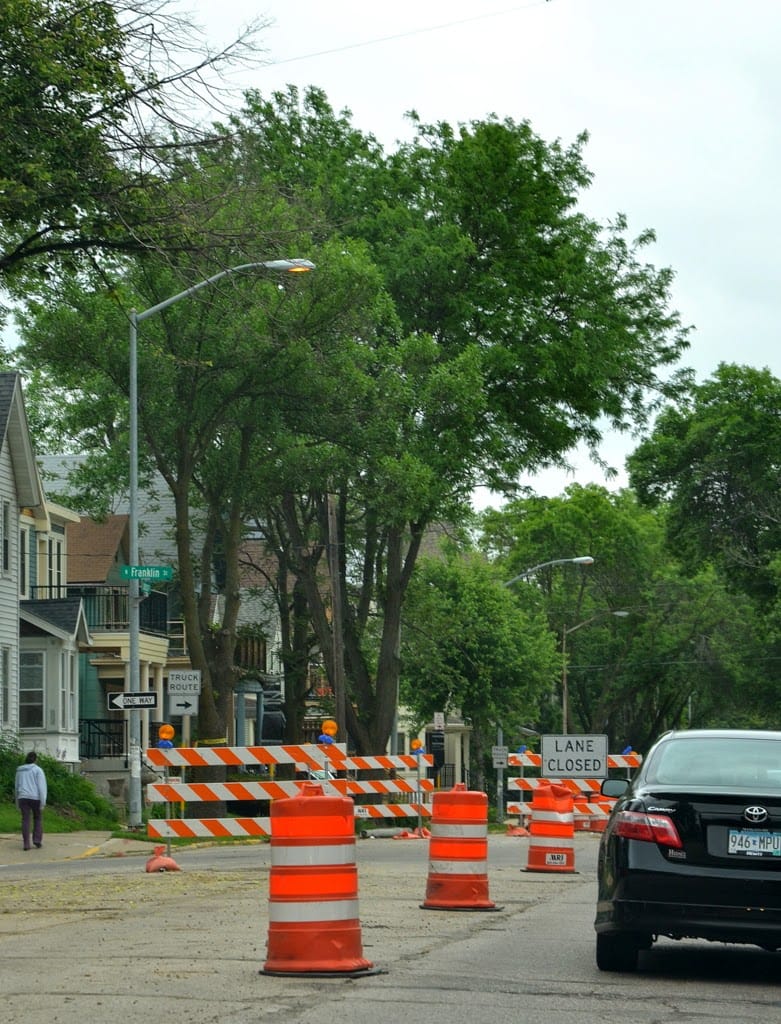
Summer is the time for all road construction throughout the midwest because cold, wintery conditions are not conducive to construction.
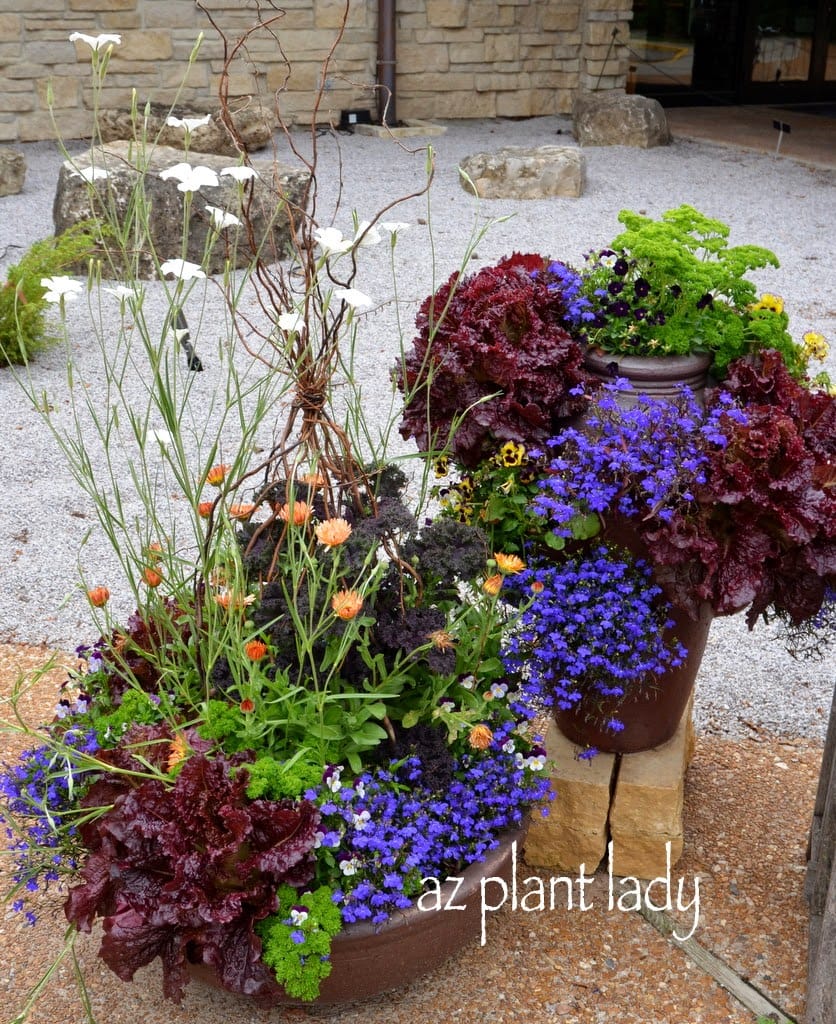
Once we arrived at the gardens, we were greeted by the sight of containers filled with a combination of edible and ornamental plants.
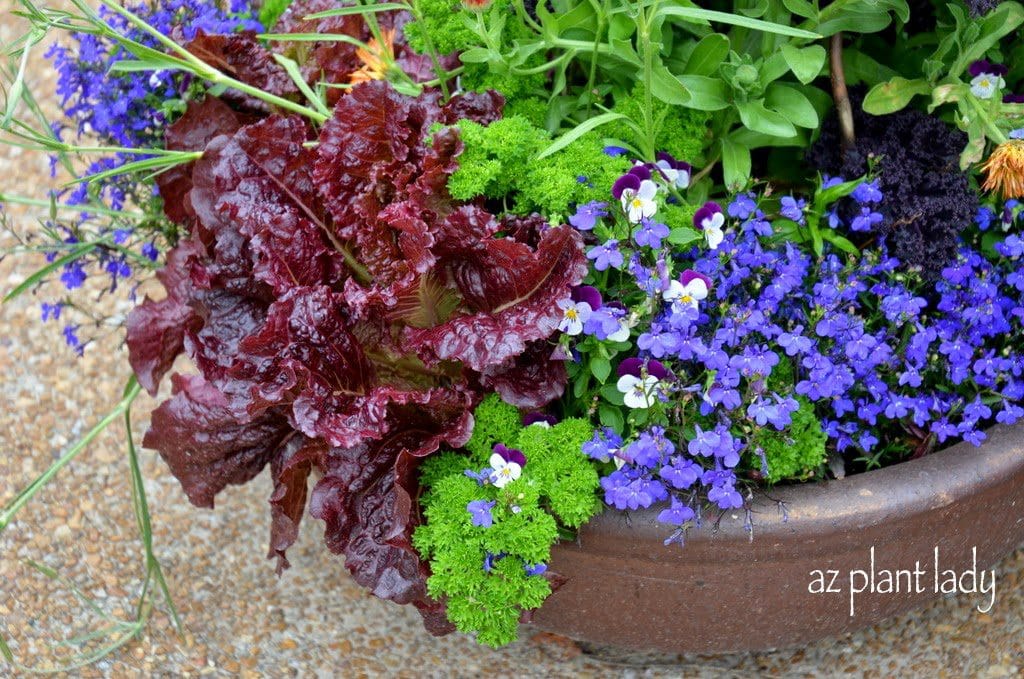
I love how the blue of the lobelia contrasts with the bright green of the parsley and ‘Red Sail’ lettuce.
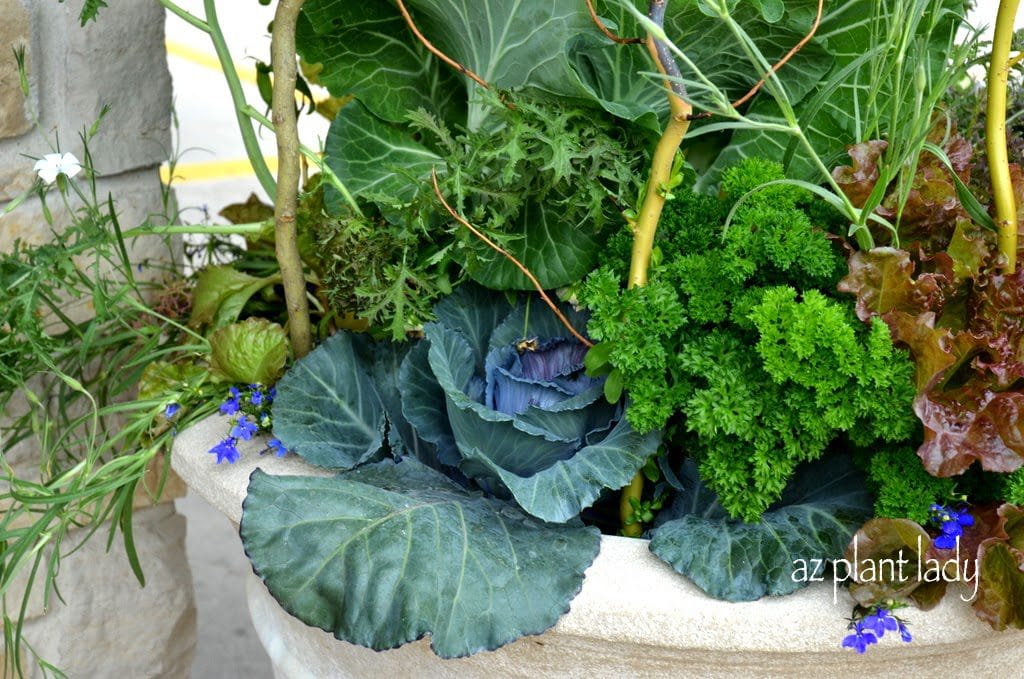
Cabbage is one of my favorite edible plants to add to containers.
All of these edible plants can be grown in pots in my southwestern garden, but are planted in fall, not spring like in Wisconsin.
During this trip, we have visited three botanical gardens and have not spent one dime on admission fees.
Why?
Most major botanical gardens have a reciprocal admissions if you belong as long as you are a member of your local botanical garden and they are part of the reciprocal program.
At first glance, the gardens were beautiful and I couldn’t wait to start exploring.
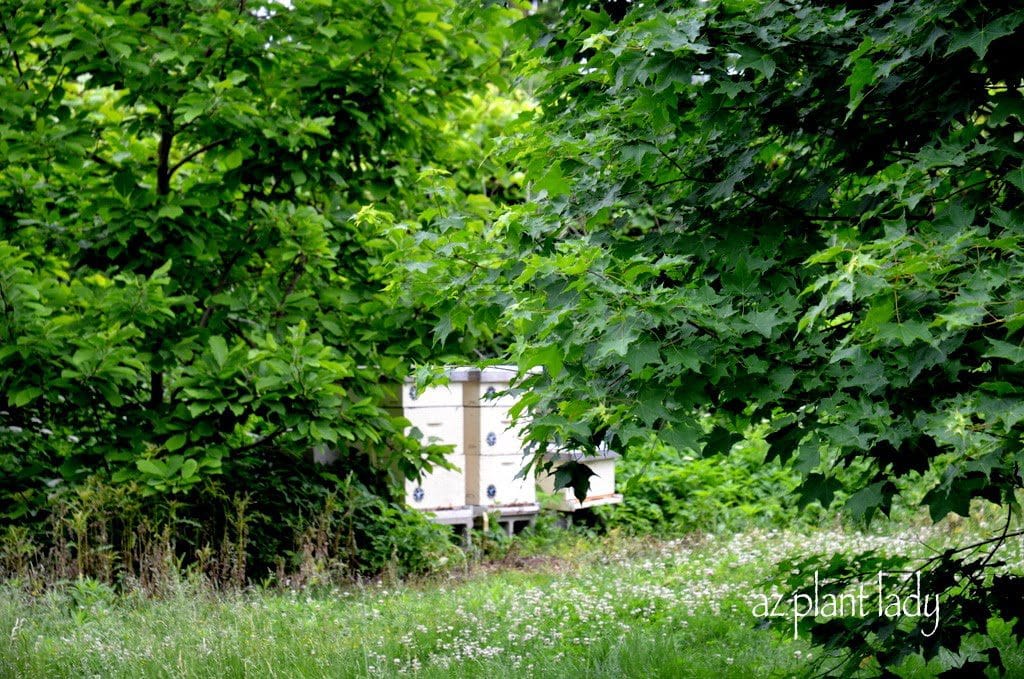
The gardens have bee hives located in out of the way areas, which are filled with Italian bees that are said to be rather docile.
The bees play an important part in pollinating the flowering plants throughout the gardens. The honey that is sometimes sold in the garden gift store.
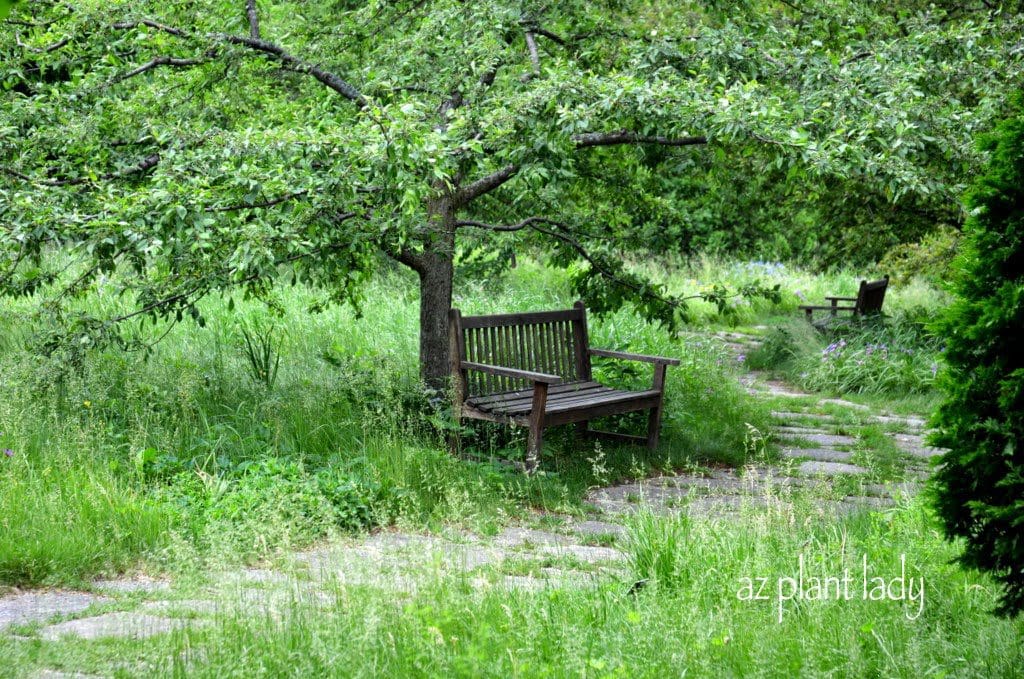
The individual gardens are spaced around ‘The Great Lawn’ which is a large circular grass area where concerts are held.
The first garden I explored was the ‘Meadow Garden’. This garden is sustainable and very low-maintenance.
It is filled with drought-tolerant grasses along with wildflowers and flowering bulbs. What I really liked about the garden is that it does not need supplemental water or fertilizer.
Maintenance is limited to mowing twice a year.
What I didn’t like about the garden, was the mosquitos. But, I came prepared and they mostly left me alone.
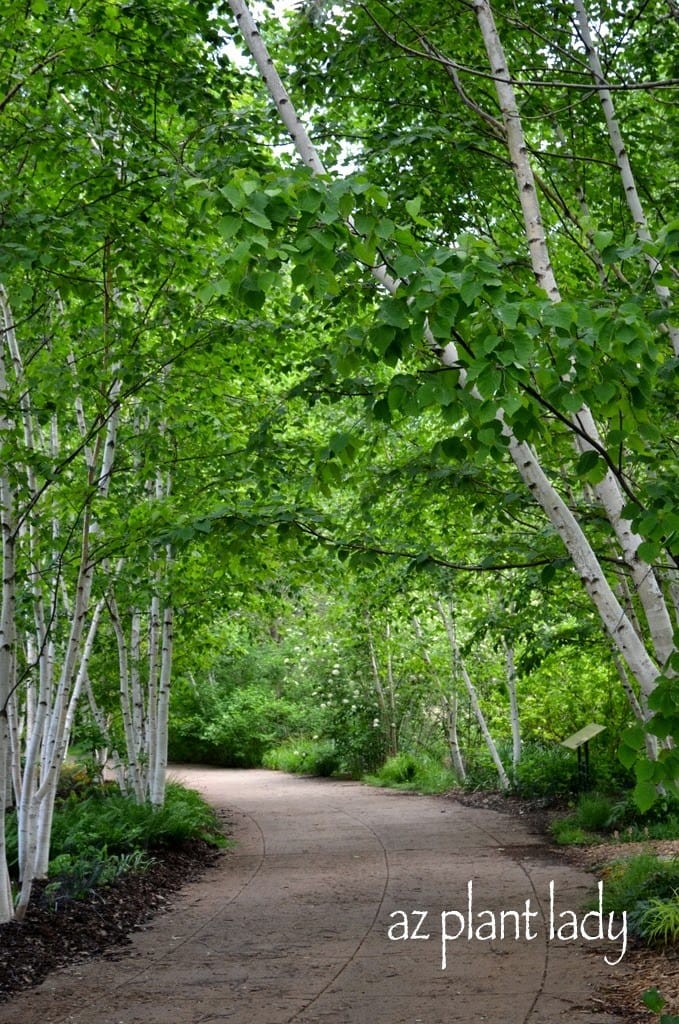
Walking on, I wanted to explore the herb garden because they play a huge part in my own garden.
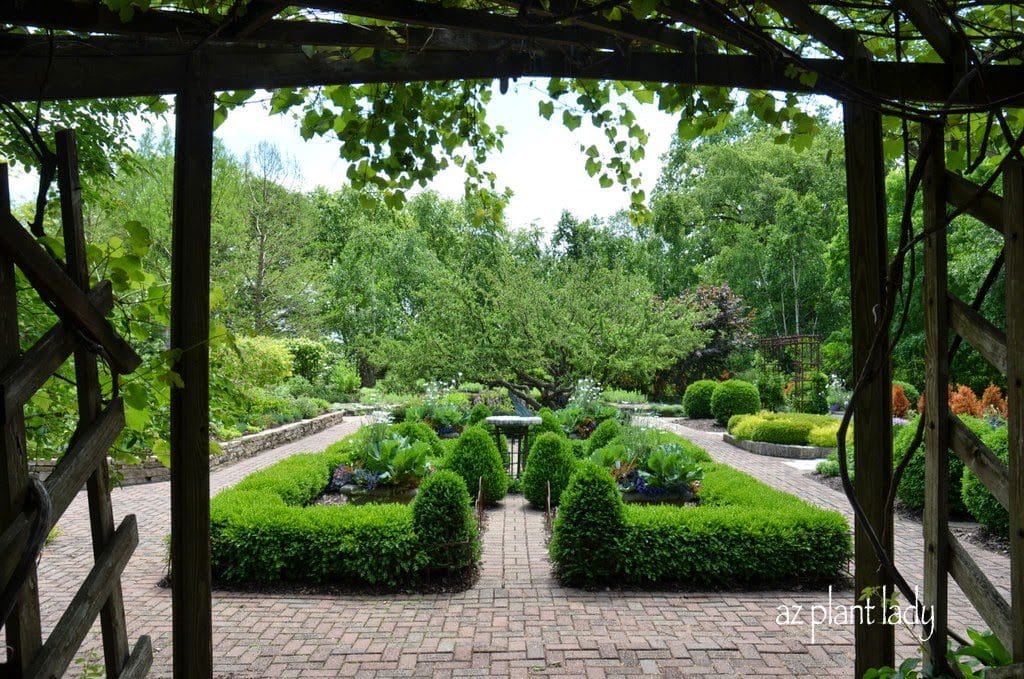
The entry to the herb garden is quite formal. Boxwood hedges border the center garden area.
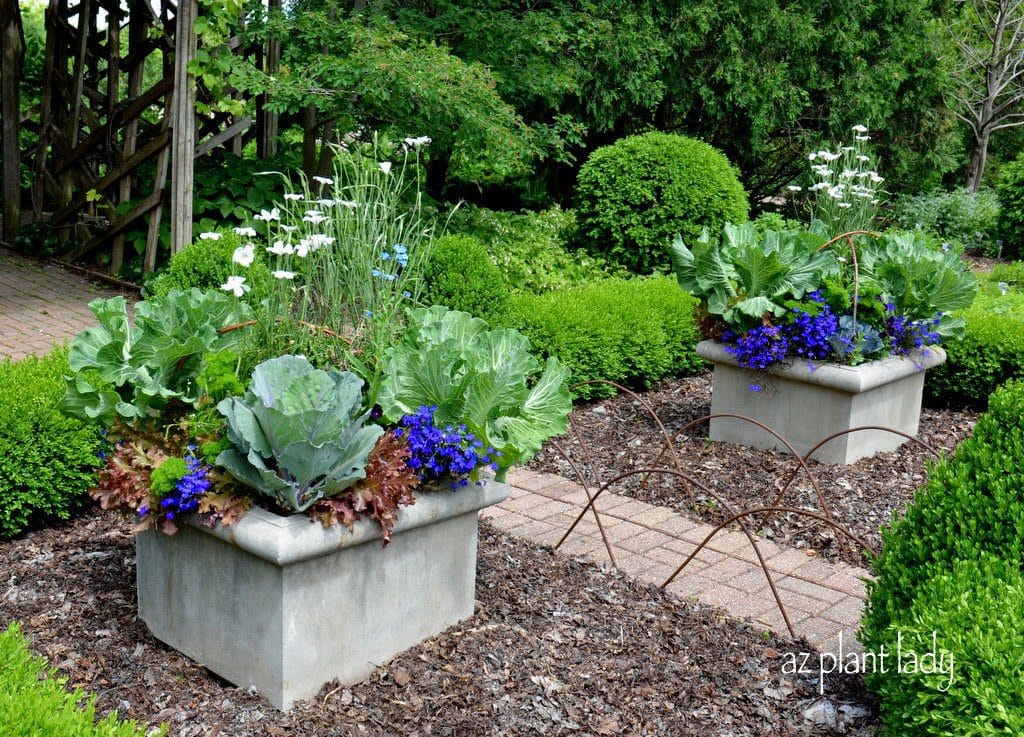
Edible plants combine with ornamentals for beautiful container plantings.
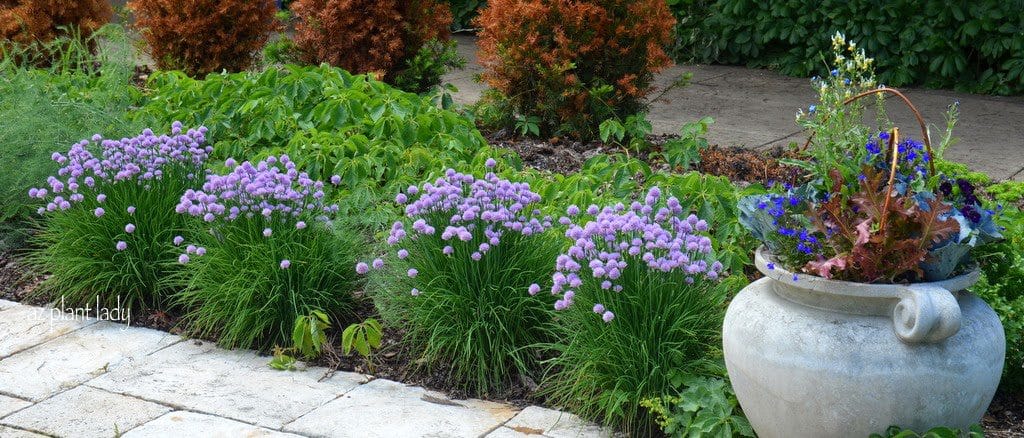
I love flowering chives and how they used them as a border.
Varieties of mint and thyme were nicely displayed and the herb garden also had herbs used for dyes.
*The brown plants in the background are recovering from the severe winter with new green growth slowly coming back.
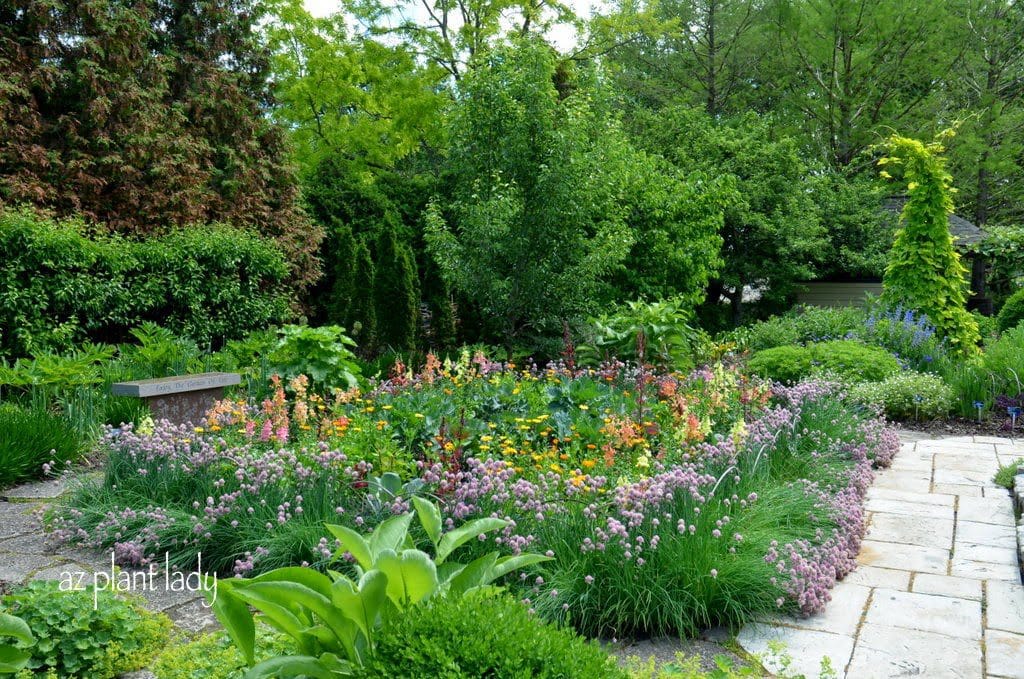
This bed of flowering annuals was completed edged in flowering chives.
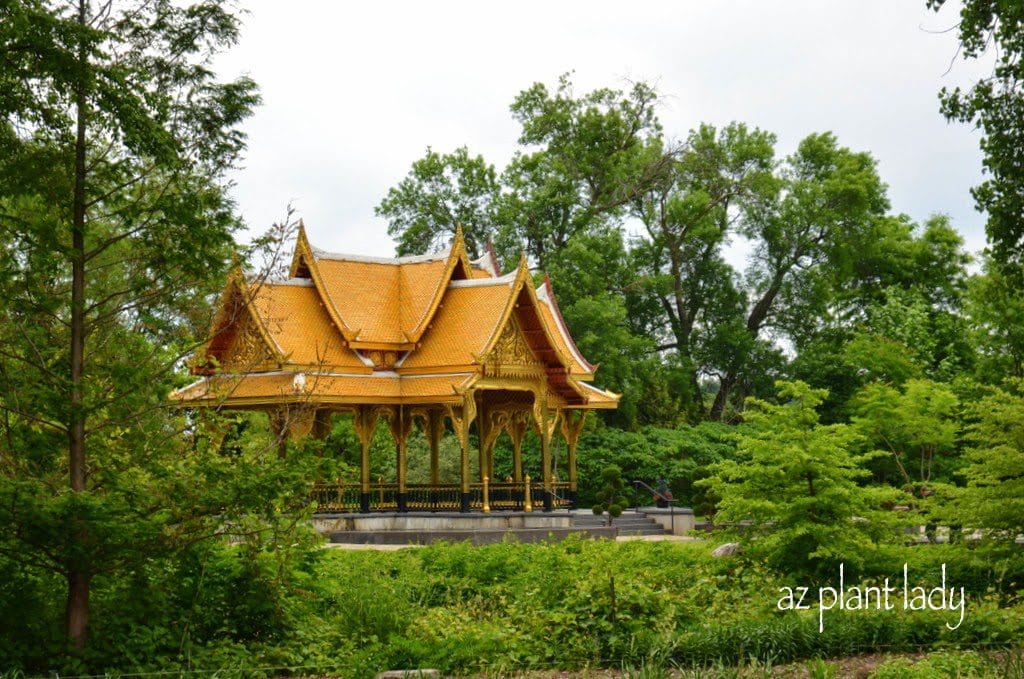
A Thai pavilion dominated the center of the Thai garden, which brought back memories for my mother who spent a few months in Thailand as a young woman.
While tropical plants cannot survive a midwest winter – the plants used in this area had a tropical appearance with large leaves while also being cold-hardy.
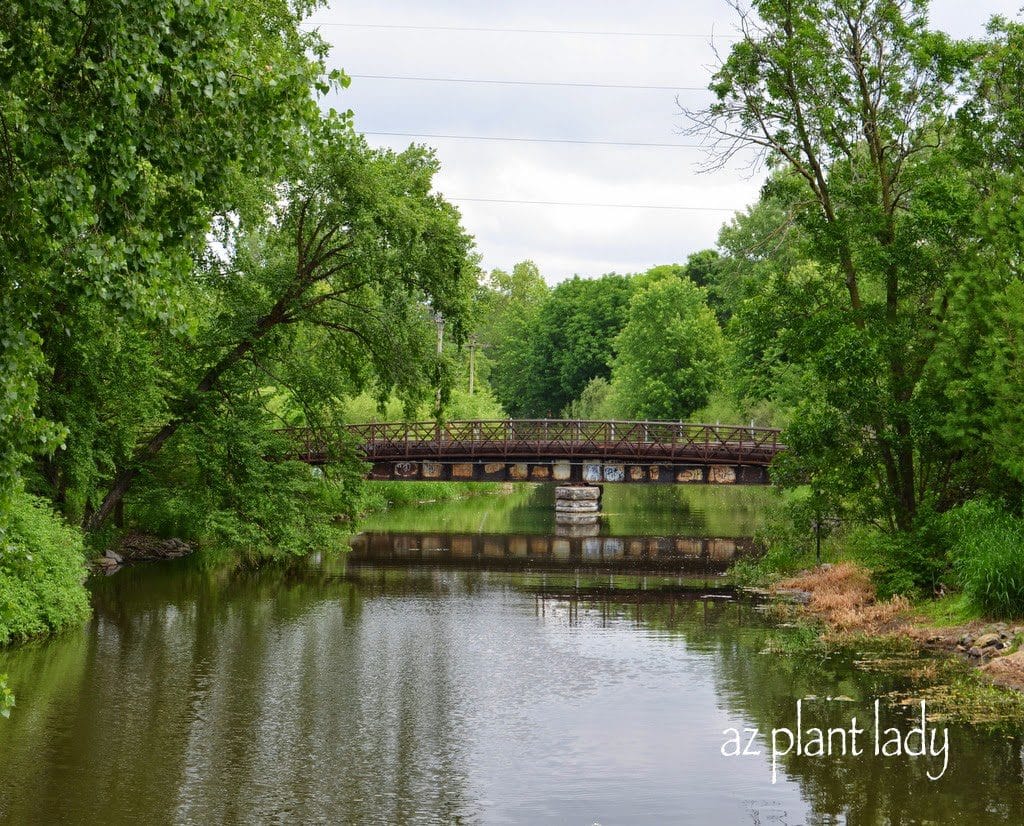
The bridge that connects the Thai Garden to the rest of the garden, crosses over Starkweather Creek, which bisects the garden.
People can canoe or kayak up 5 miles from this side of the bridge.
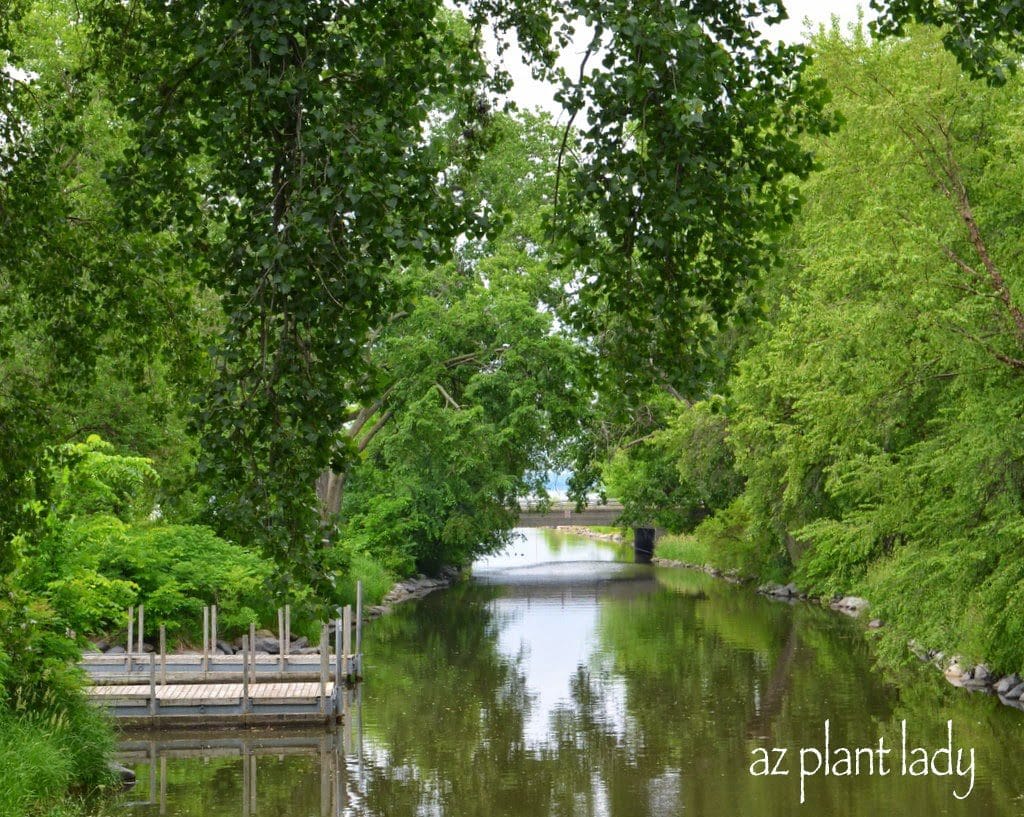
Boats can dock on the other side of the bridge and the creek leads out to Lake Monona.
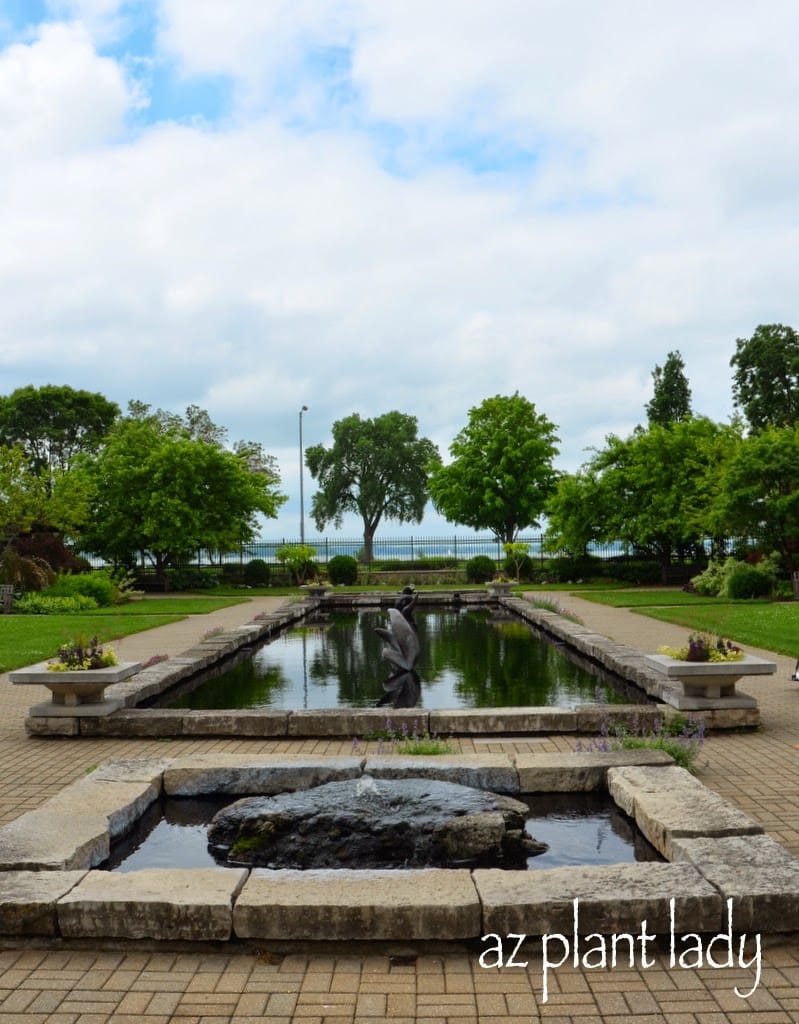
This area is called the Sunken Garden, which is gently sloped so that rainwater flows toward the lake.
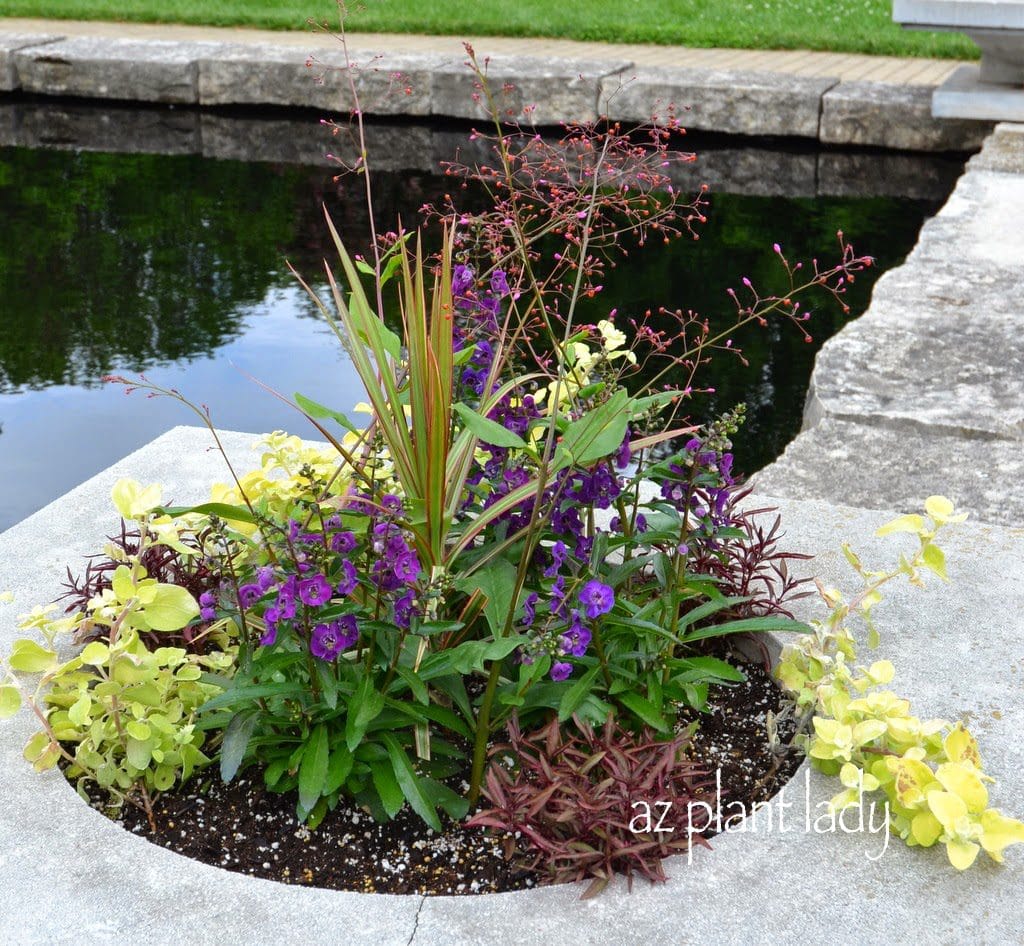
The formal water feature was flanked by two container plantings, which were quite contemporary in style.
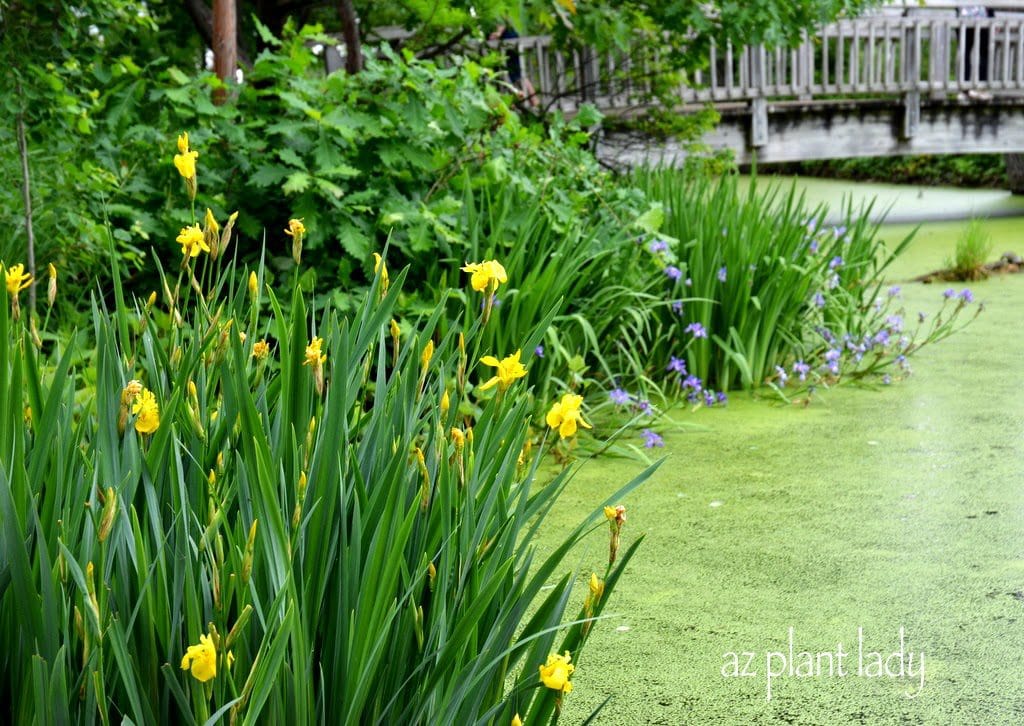
The pond had beautiful yellow and purple flowering Japanese iris.
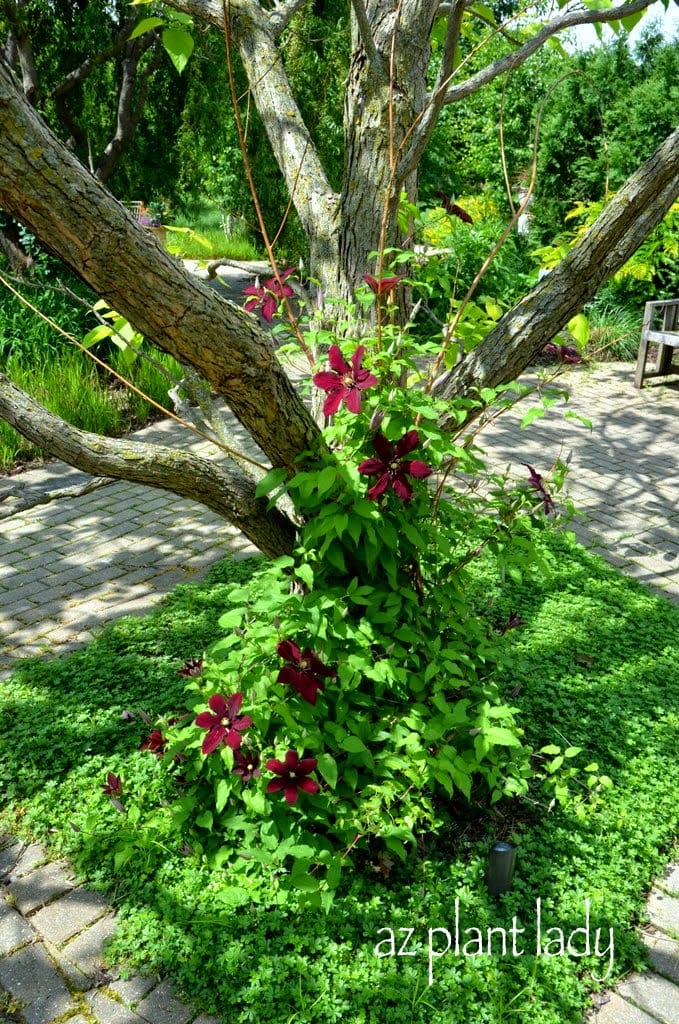
Vines were used in different ways throughout the garden.
A tree provided needed support for a clematis vine with its maroon flowers.
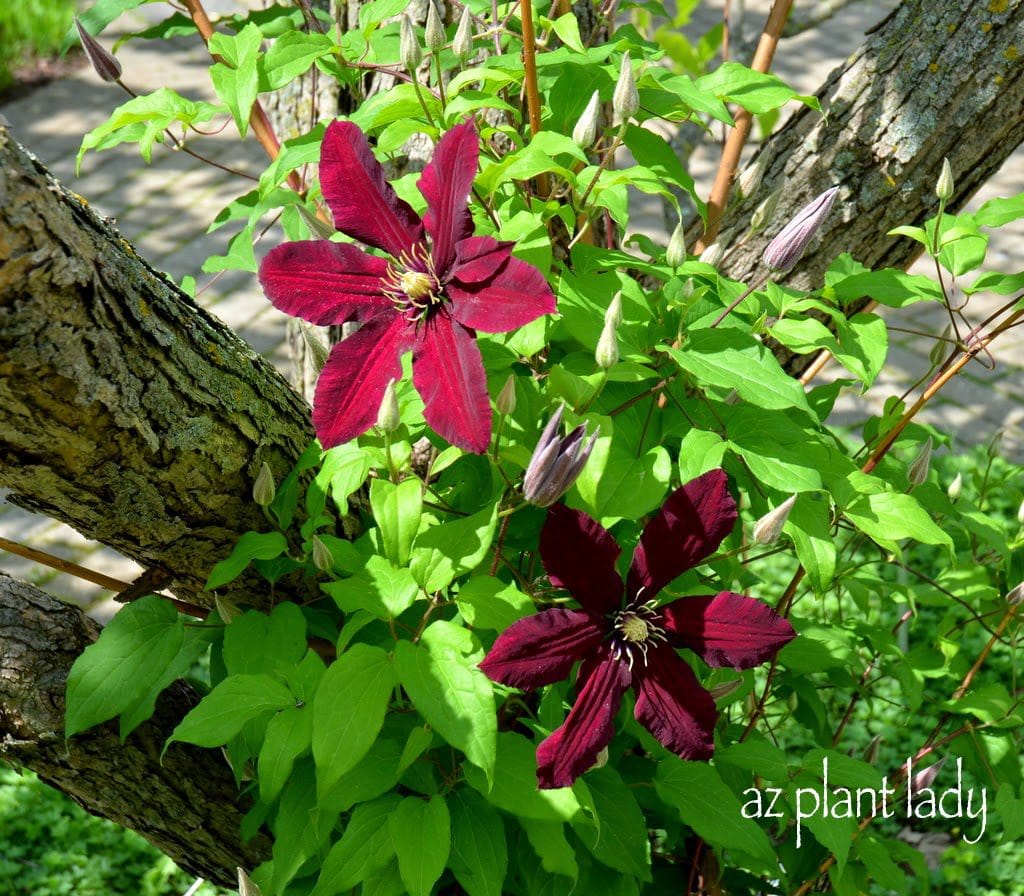
Years ago, I tried growing clematis in our first home. It did grow, but never flowered. I learned later that it gets too hot in the desert for clematis.
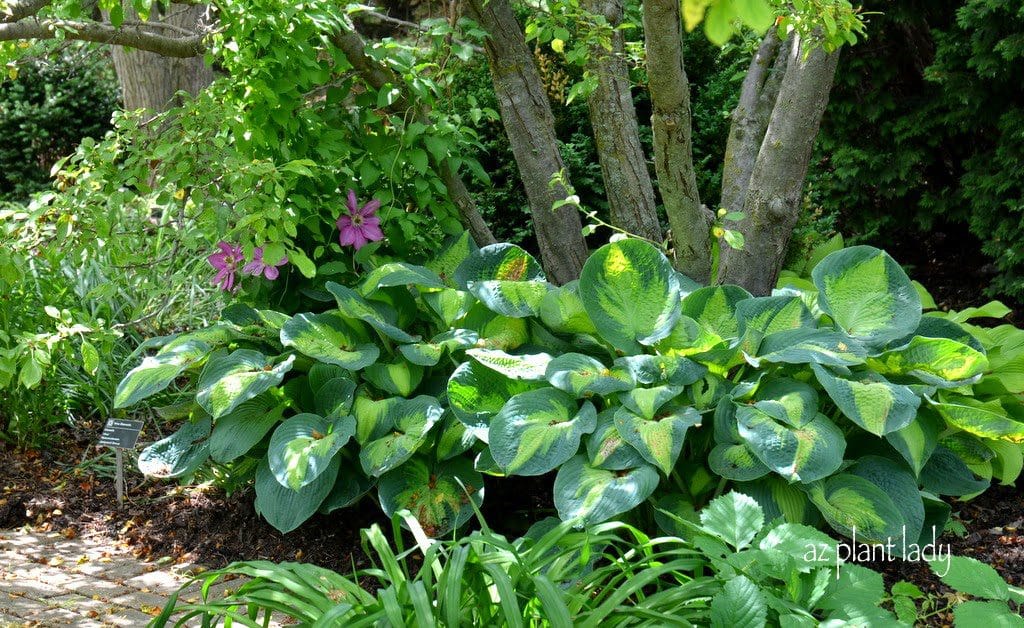
Another clematis was flowering next to a beautiful host underneath a tree.
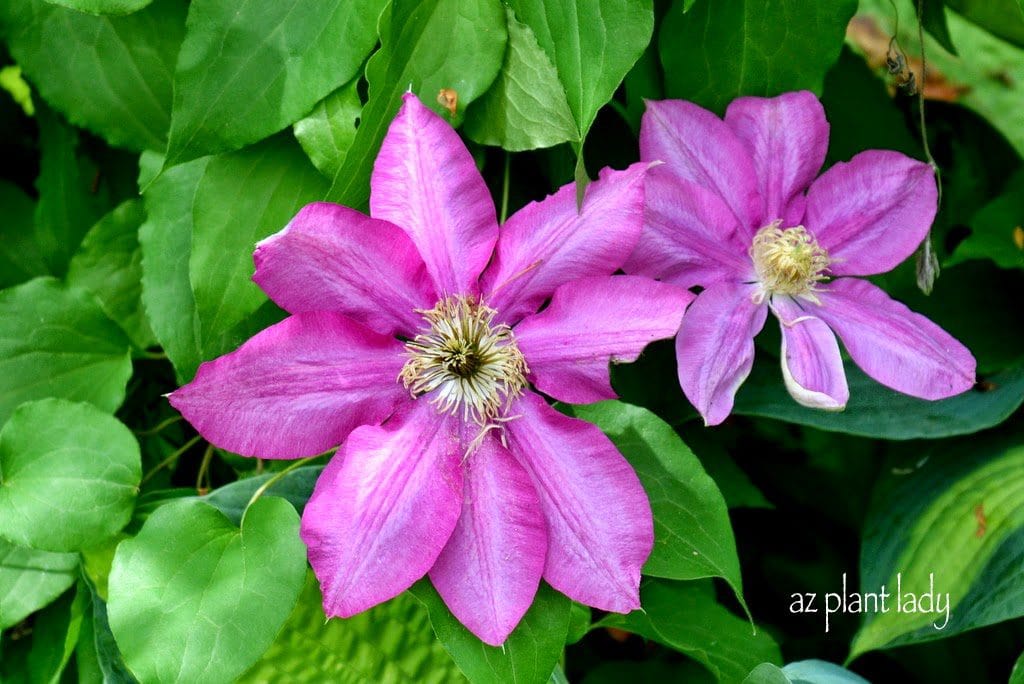
I love pink flowers, don’t you?
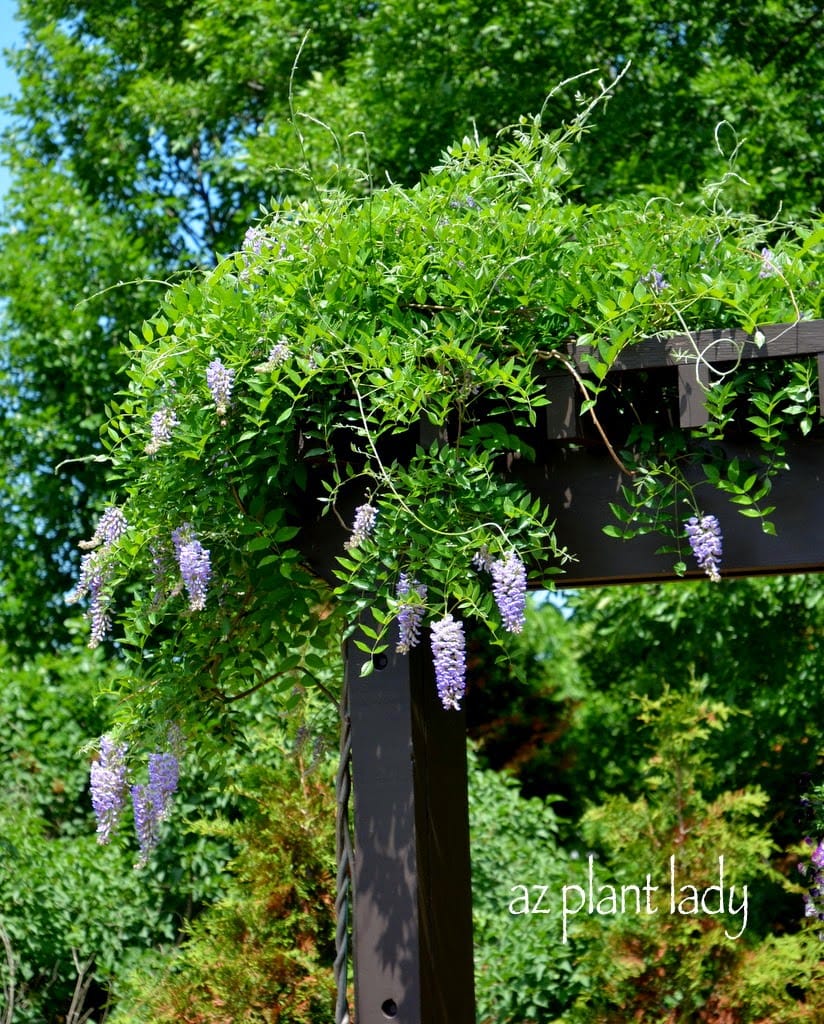
Wisteria was growing up on arbors and I never tire of viewing their lovely flowers and inhaling their heavenly fragrance.
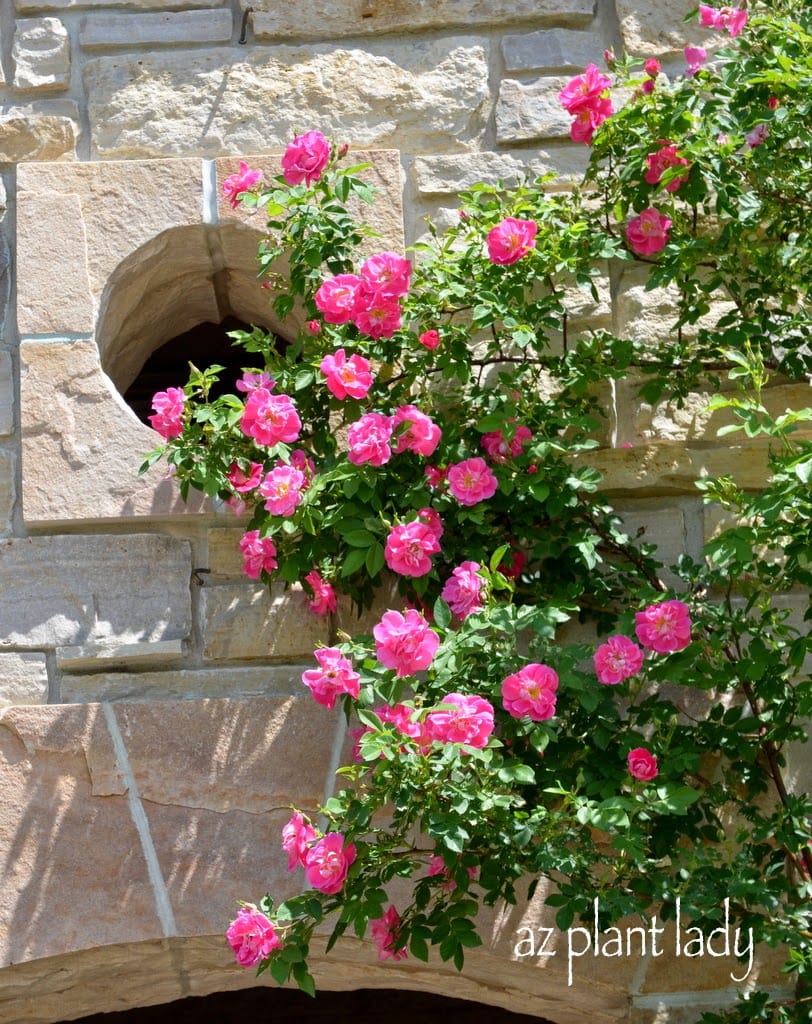
The vision of a rose climbing upward always makes me want to go home and grow one up the side of my house.
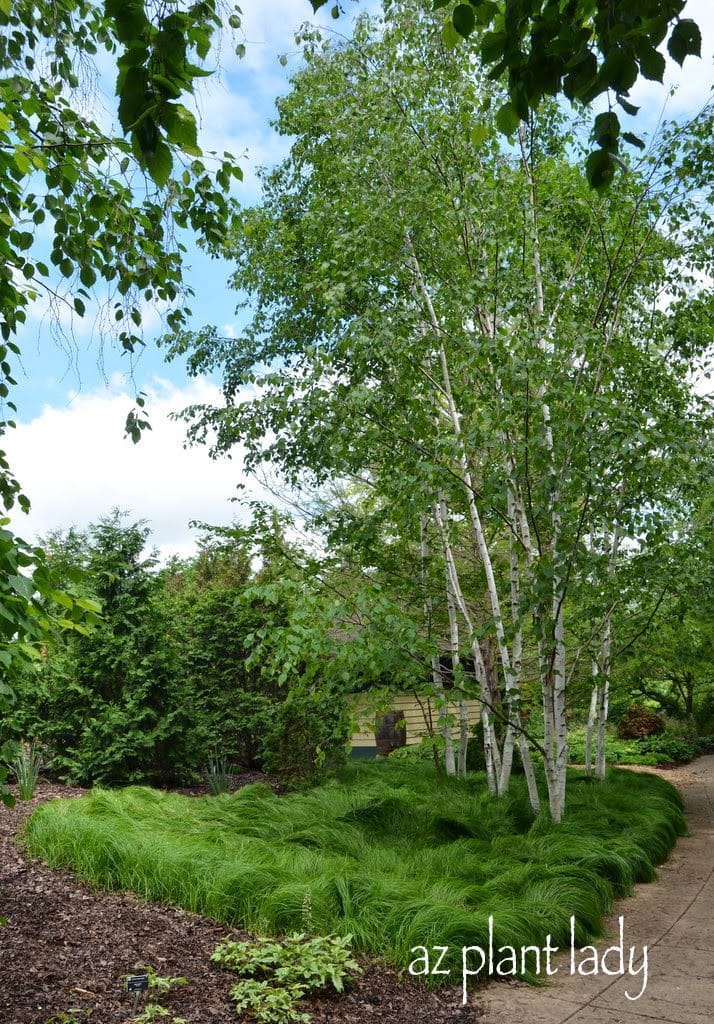
Have you ever heard of ‘Paper Birch’ trees?
Their bark peels off in perfect sheets that is sometimes used to wrap around decorative candles.
I have always had a special place in my heart for birch trees. Growing up in a Los Angeles suburb, we had three growing in our front yard. I have always loved their white bark and bright-green leaves.
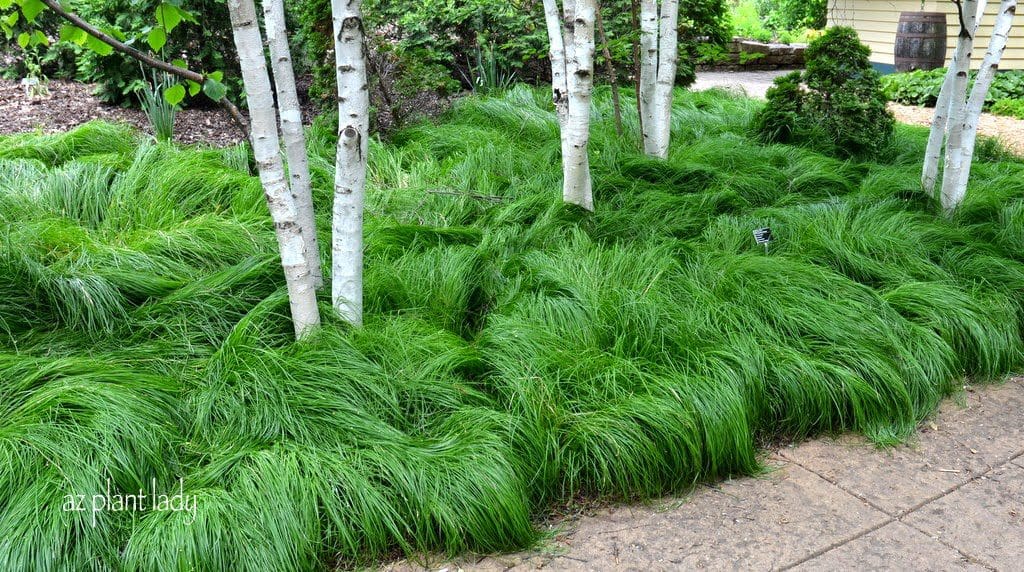
Underneath these birch trees was an interesting ornamental grass called dormitor quaking sedge (Carex brizoides). I like how it lays down making it look like green waves underneath the trees.
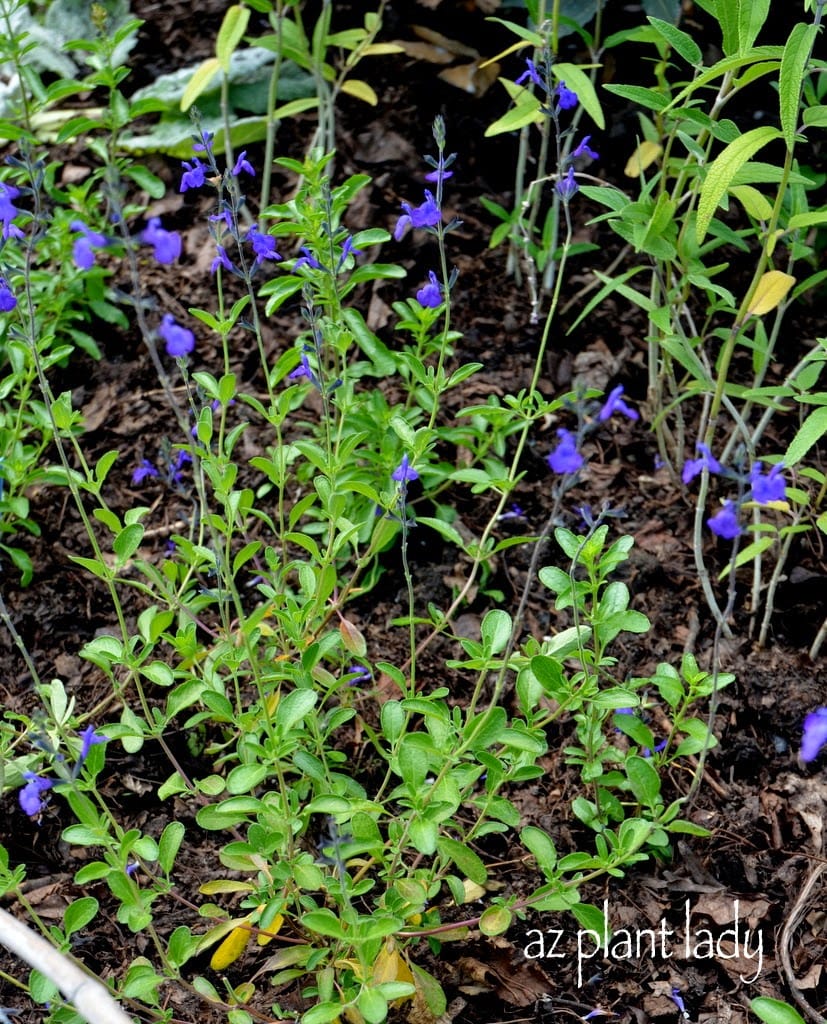
Walking near the Perennial Garden, I spotted a blue-flowering plant that looked rather familiar.
It turned out to be a blue-flowering variety of autumn sage (Salvia greggii), ‘Blue Note’.
Can you imagine how patriotic a planting of red, white and blue autumn sage plants would look?
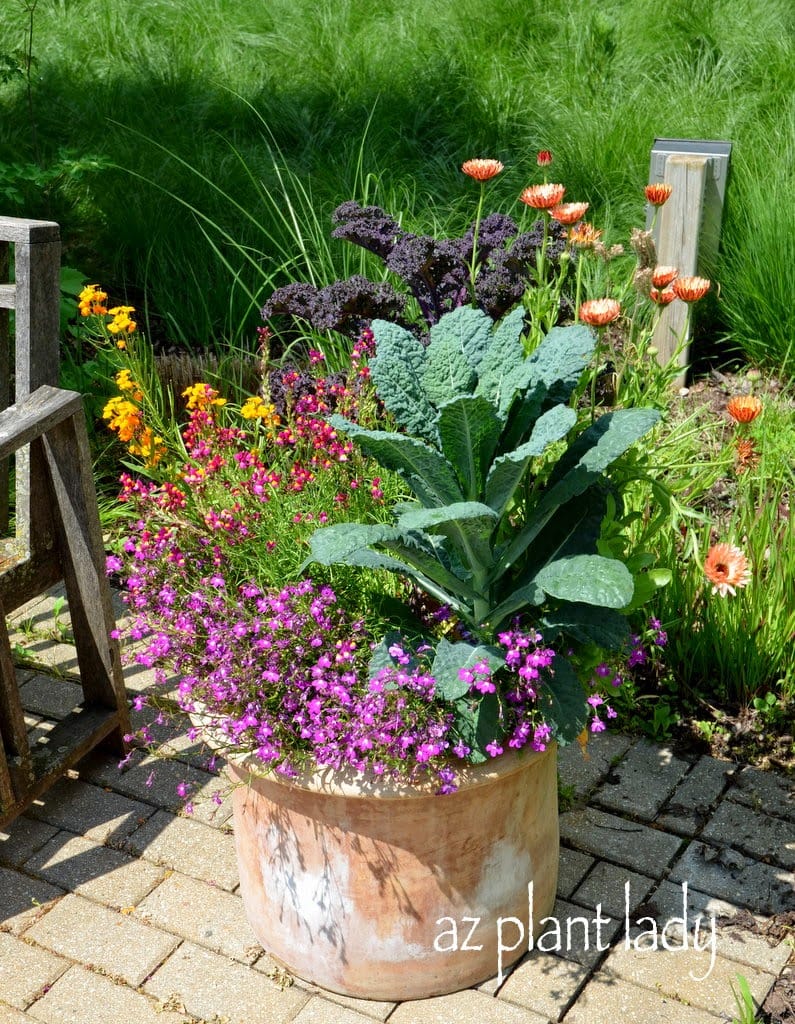
Here is another lovely edible, ornamental container that caught my eye, using kale.
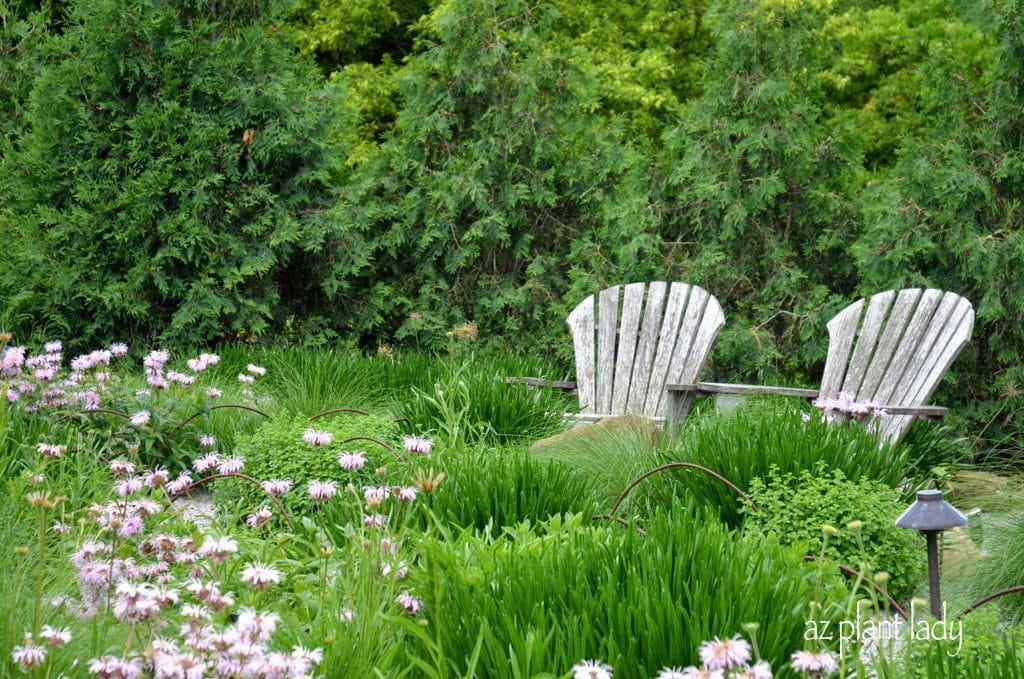
Don’t you just want to sit down and relax in this area?
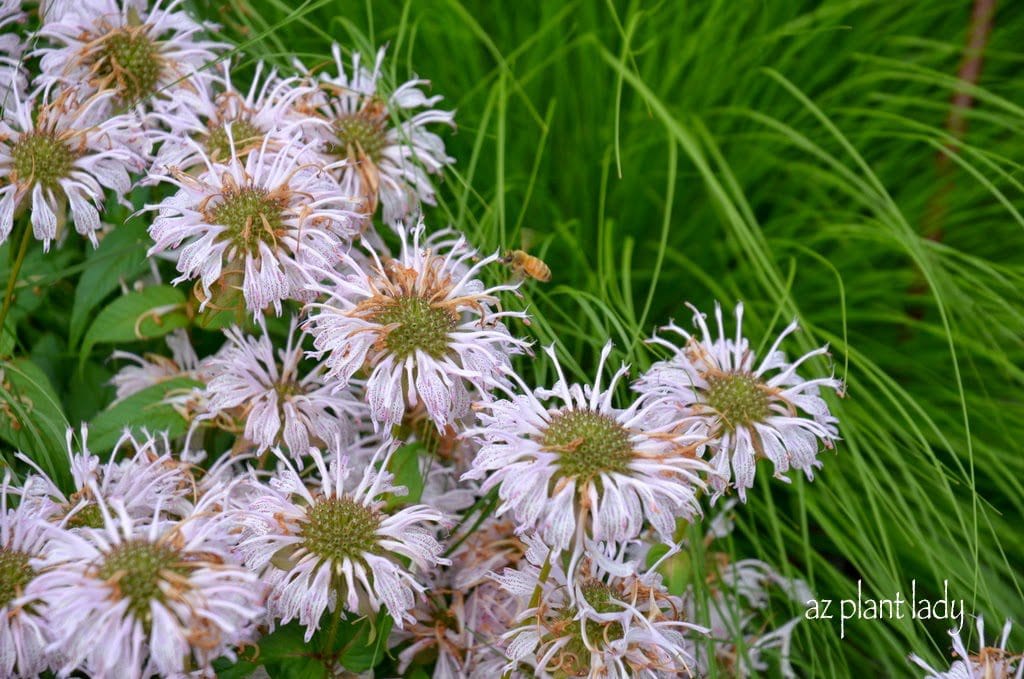
Pale-pink bee balm (Monarda species)was the only flower in this area of the garden, but it was more then enough alongside the ornamental grasses.
Sometimes less is more.
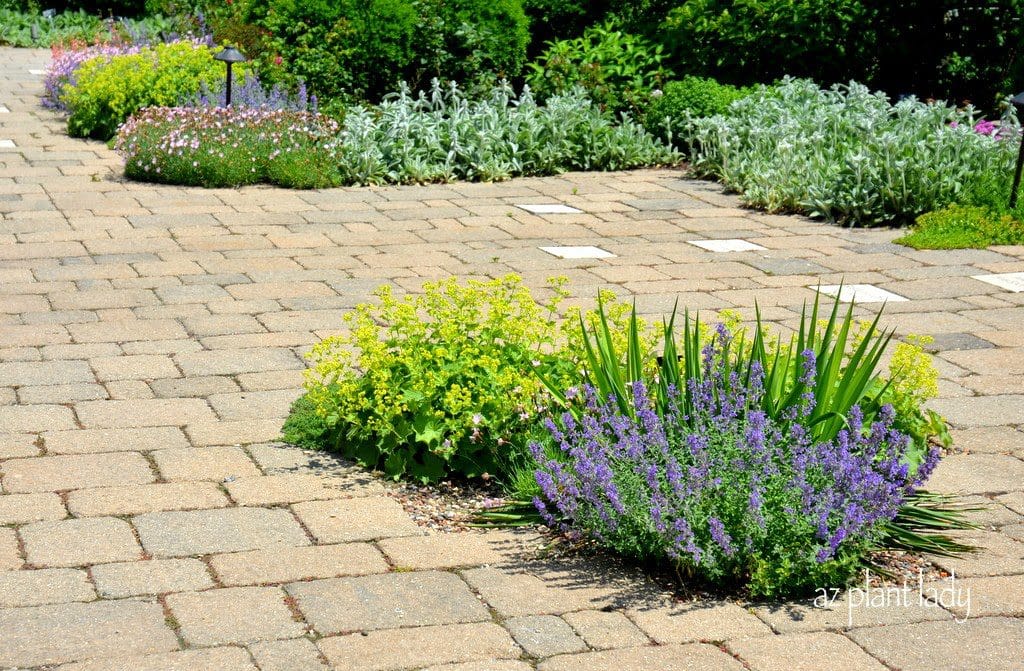
Walking on a paved area, I saw a planting of perennials right in the middle.
Interestingly, there was no border or any clearly delineated space. Just an opening without pavers where plants seemingly come up in the middle of a sea of pavers.
I kind of like this idea. How about you?
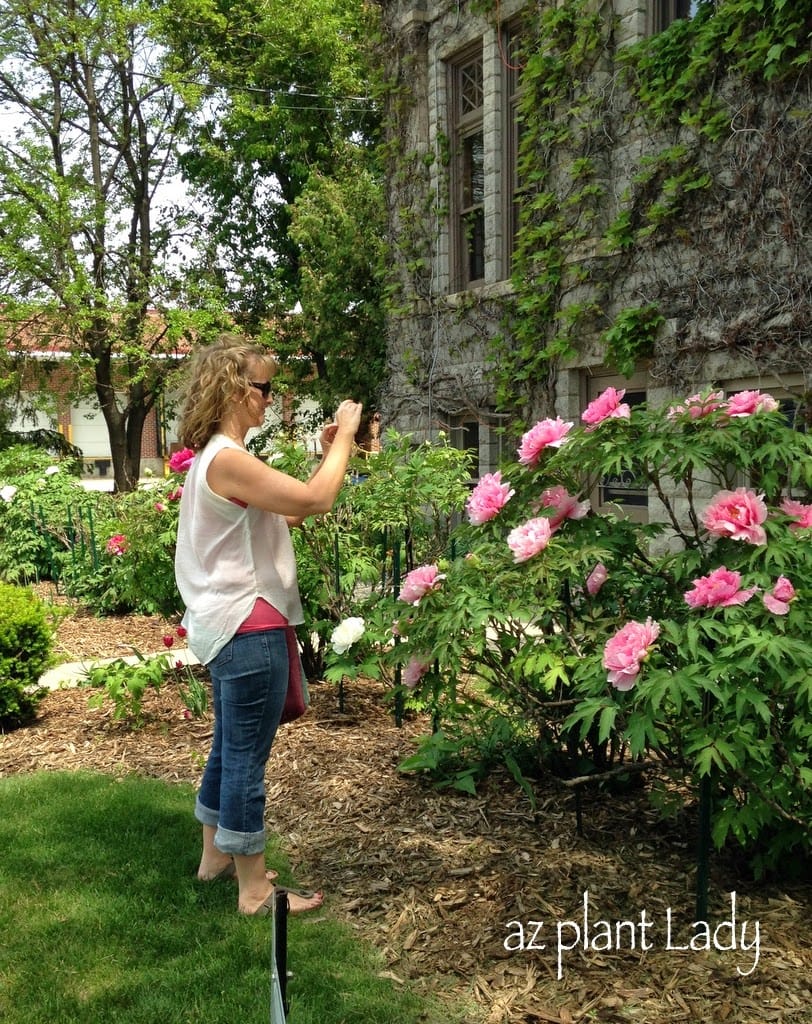
If you have been reading my road trip posts, then you have probably noticed my obsession with peonies, which don’t grow in the desert.
Wherever we go, I see shrubs covered with gorgeous blooms.
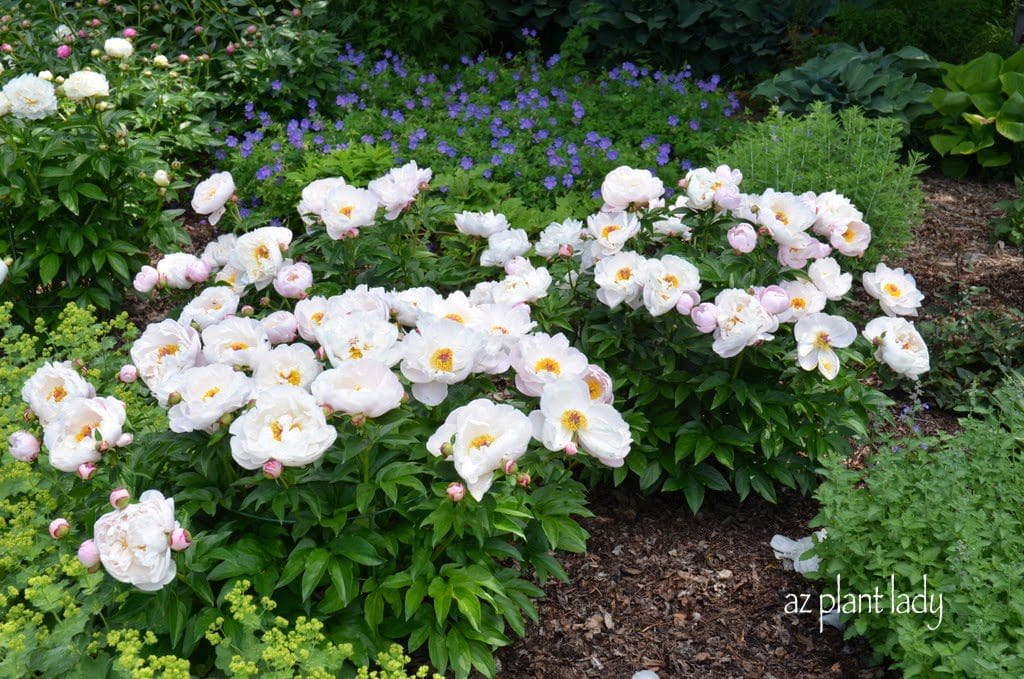
Well, Olbrich Gardens were no exception.
I must have taken over 100 photos of all the different blooming peony varieties that they had.
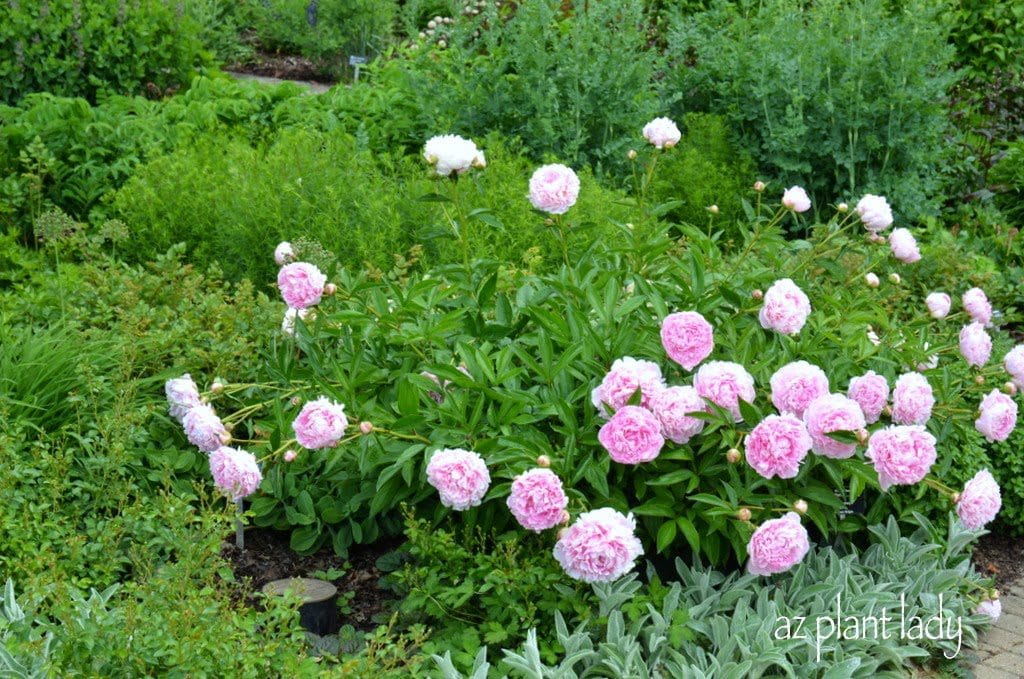
From a distance, peonies resemble bushes filled with roses.
However, once you get closer, you notice the the leaves have a different shape and so do the unopened blossoms, which are shaped into balls.
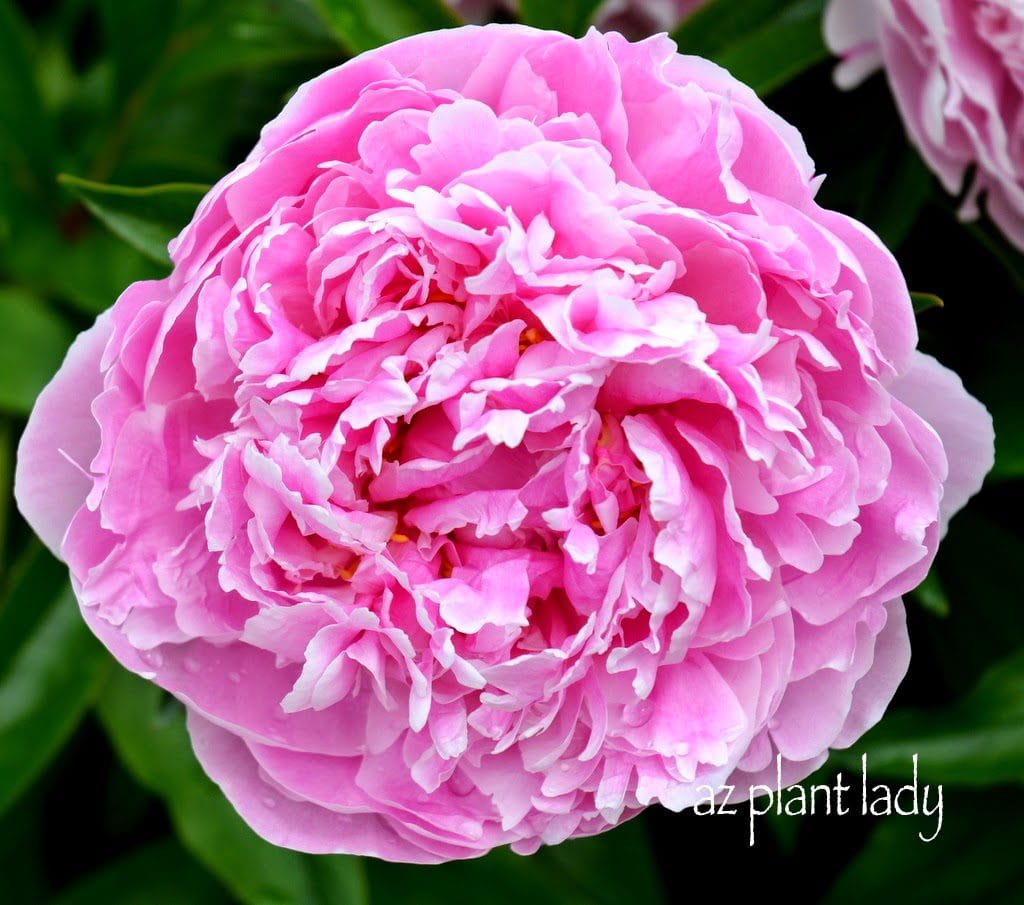
Their petals tend to be more ruffled then roses.
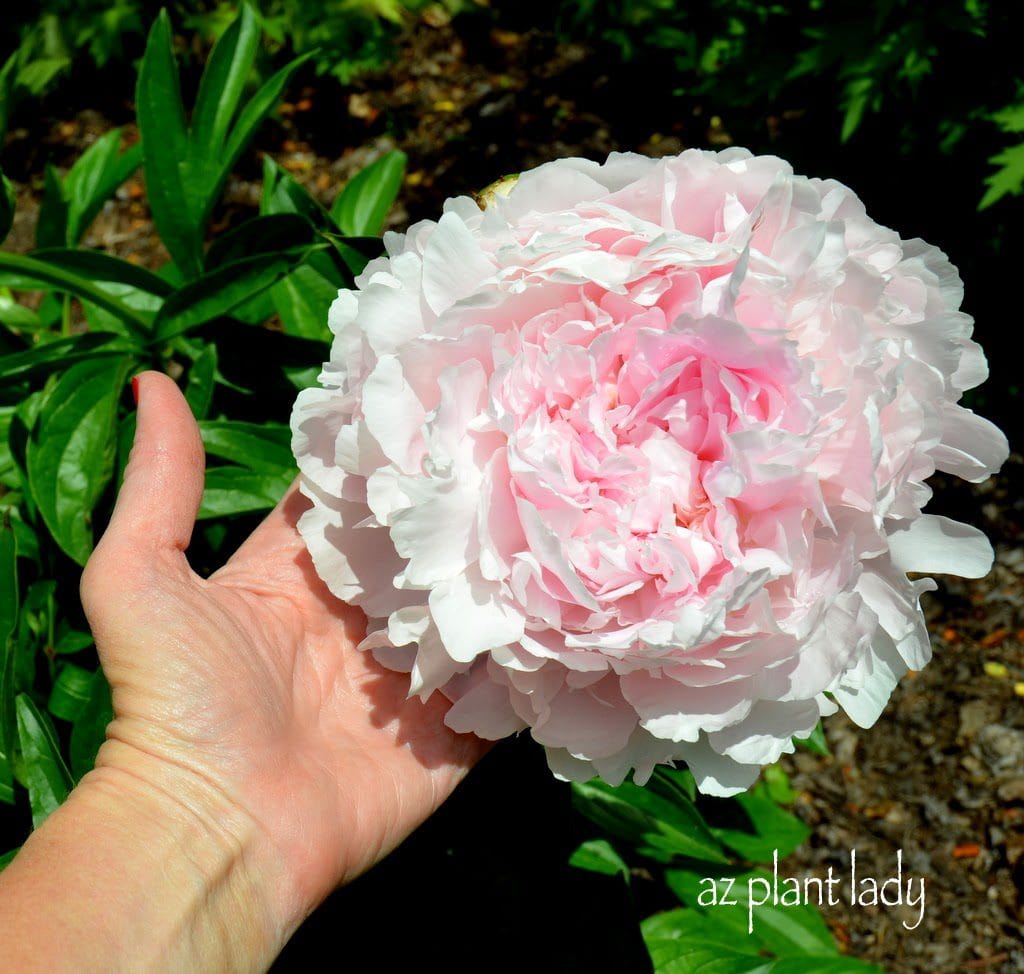
And, their blossoms are huge!
We spent a lovely morning in the gardens, but it was time to hit the road for our next destination.
On my way out, I noticed an outdoor eating area with centerpieces made from plants that I was quite familiar with…
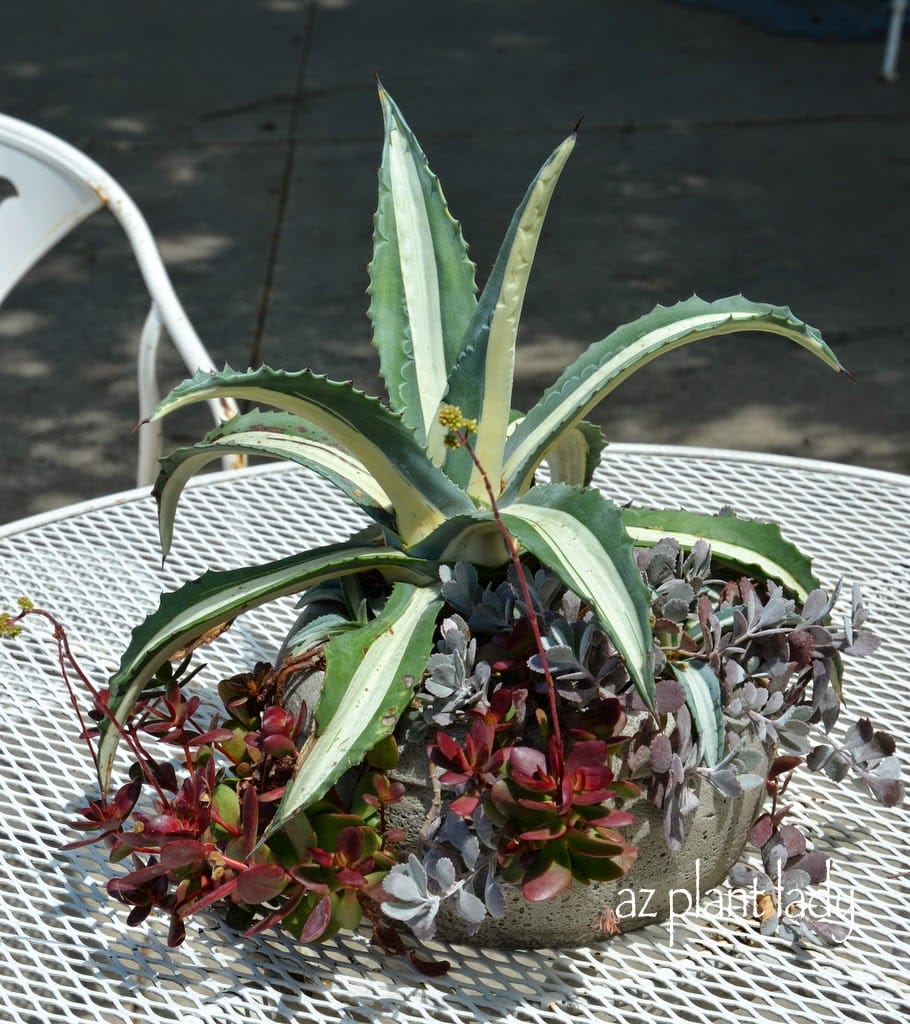
(Agave americana var. medio picta) was the center point of numerous succulent containers.
It wasn’t unusual to see succulent plants in many of the gardens we visited. While they do fine in the summer months, they need to be brought indoors and protected during the cold months of the year.
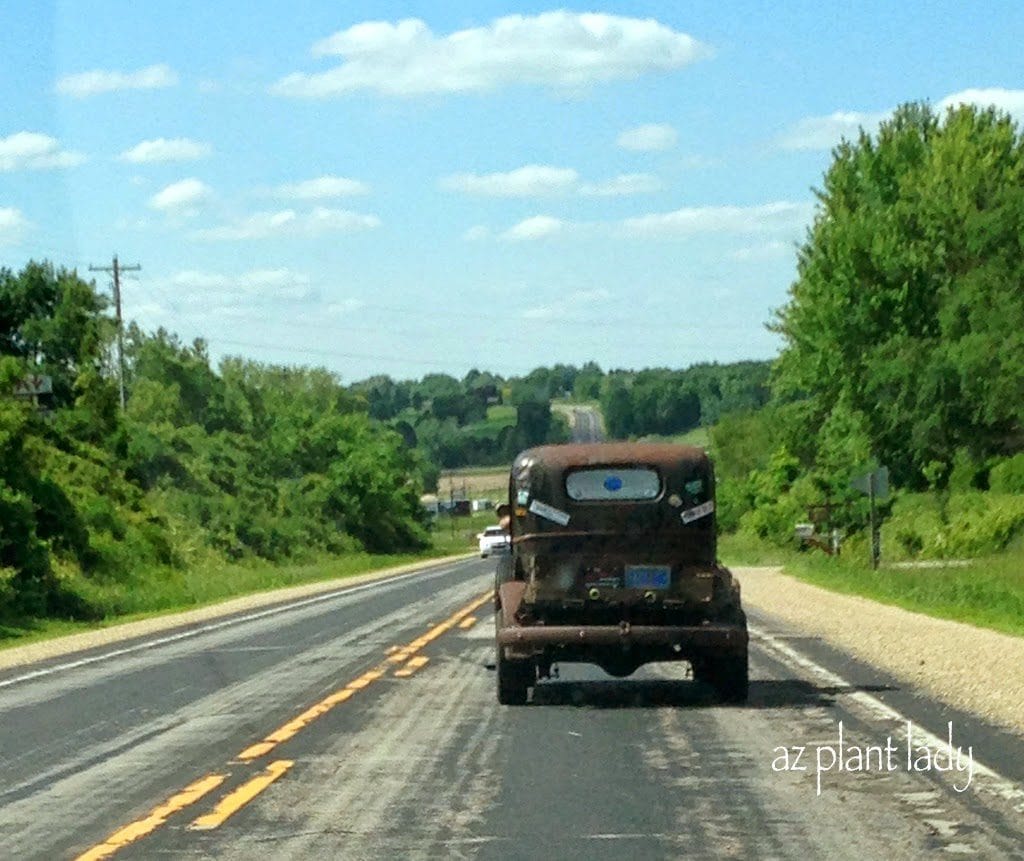
After taking 334 pictures of the gardens (seriously), it was time to hit the road.
Whenever possible, we try to stay off of main highways and focus on using smaller highways that run through small towns and countryside.
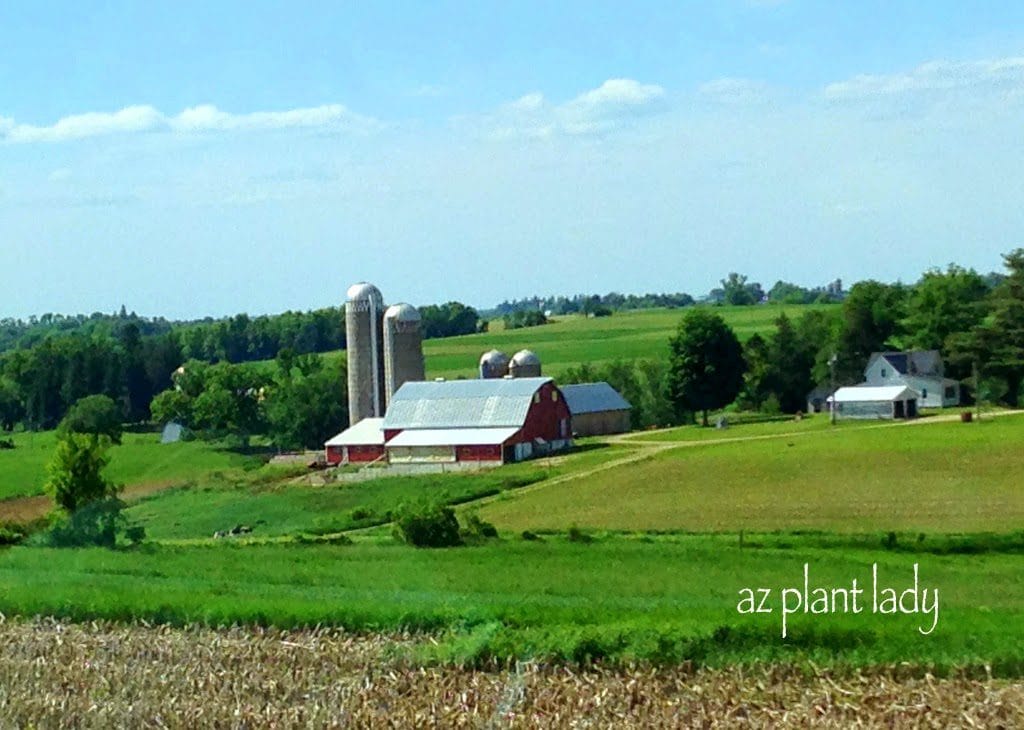
The Wisconsin countryside is green. I mean really green!
Dairy farms dotted the landscape along with beautiful scenery. We thoroughly enjoyed our journey.
Tomorrow, we spend time along the towns by the Mississippi River before heading toward Minnesota Amish country.
**I wanted to thank those of you who have left such wonderful comments. I appreciate them so much!


